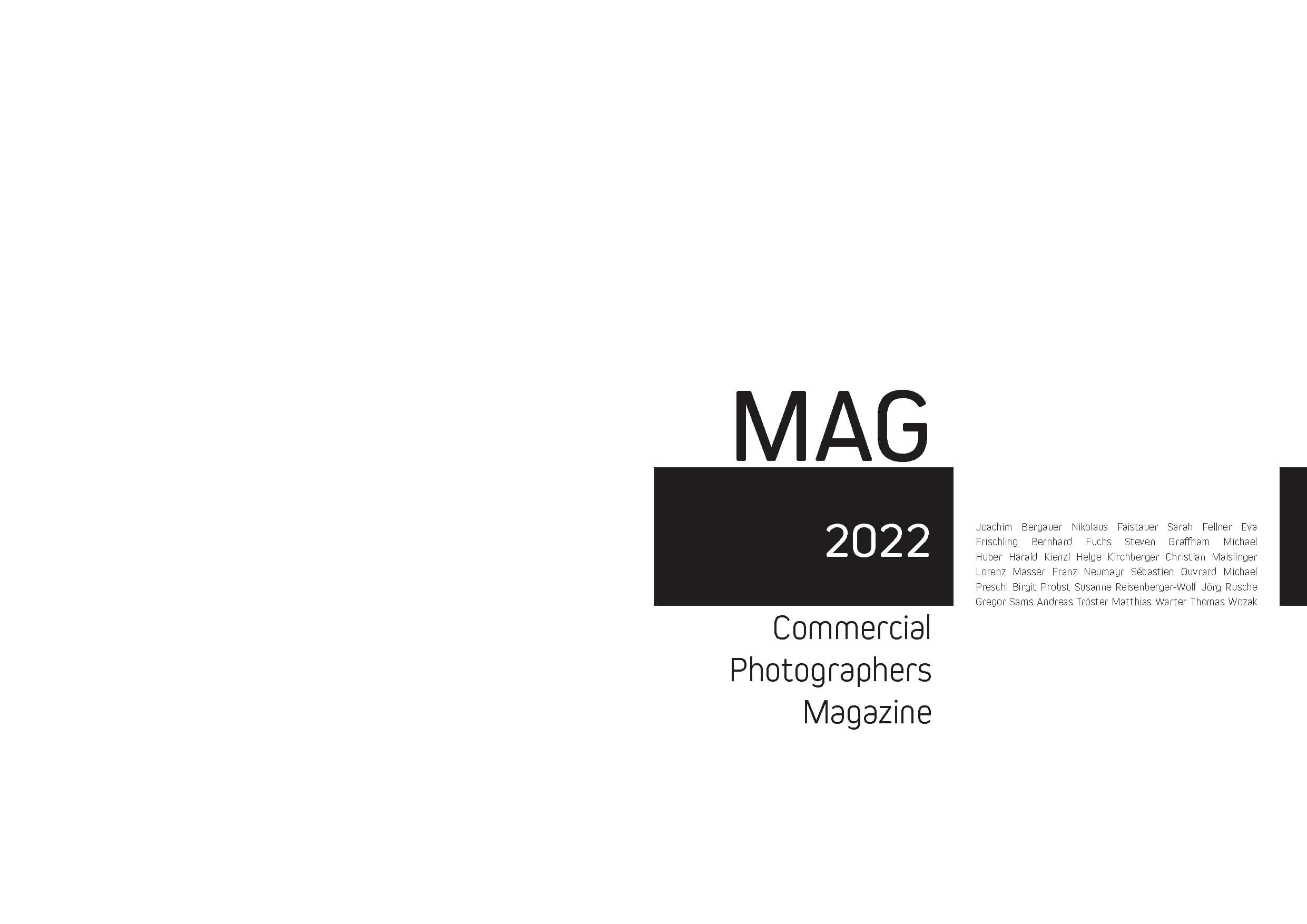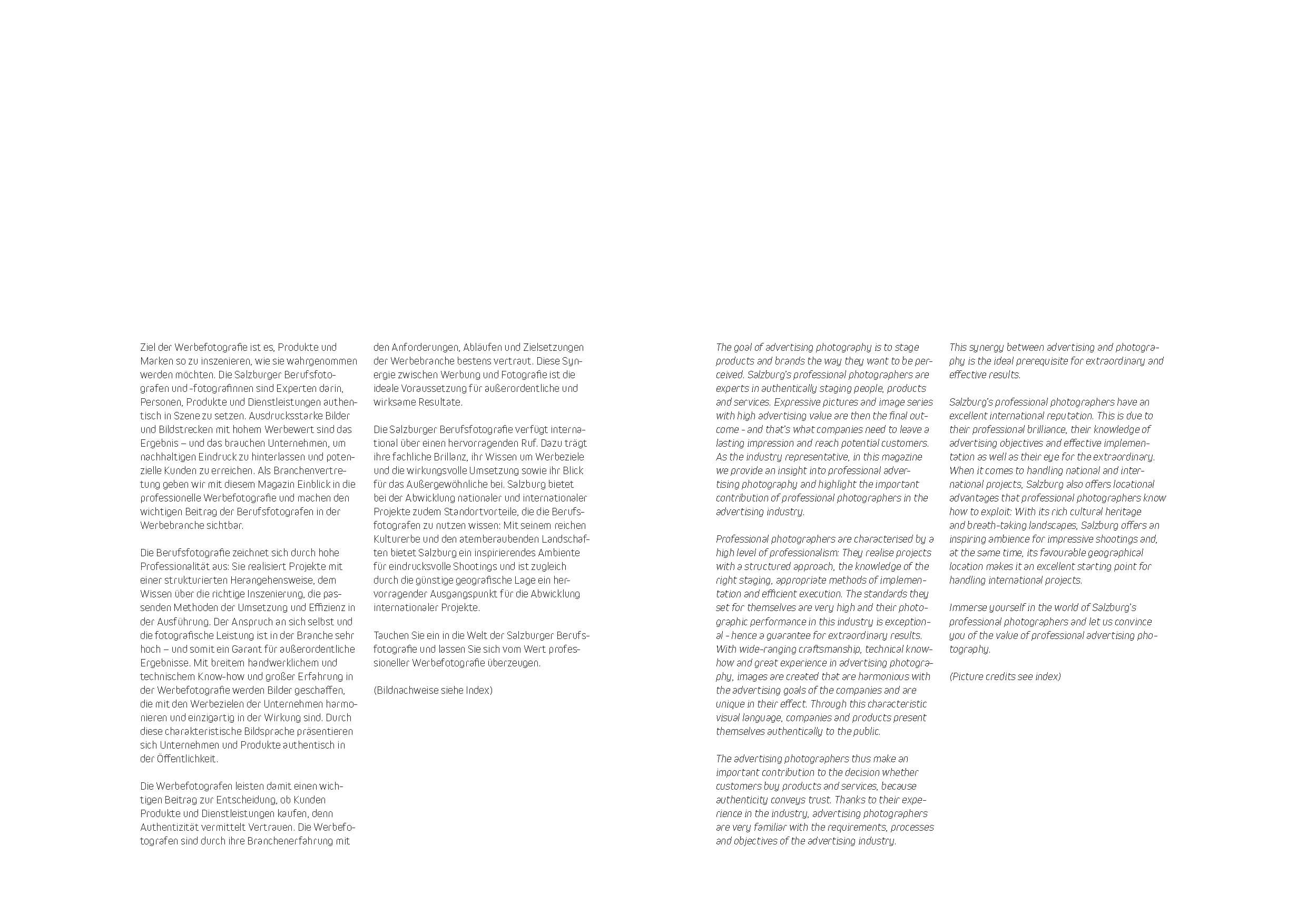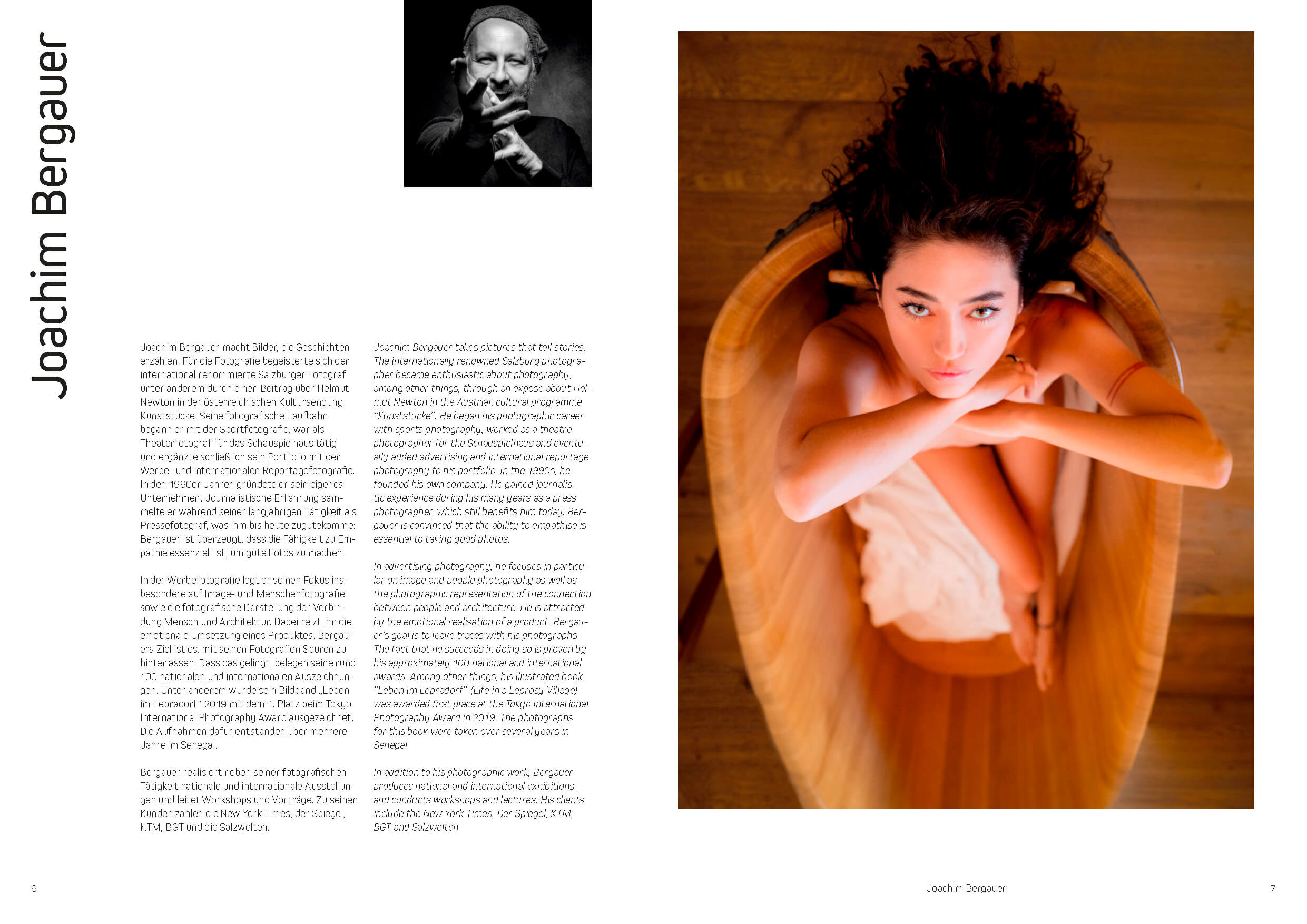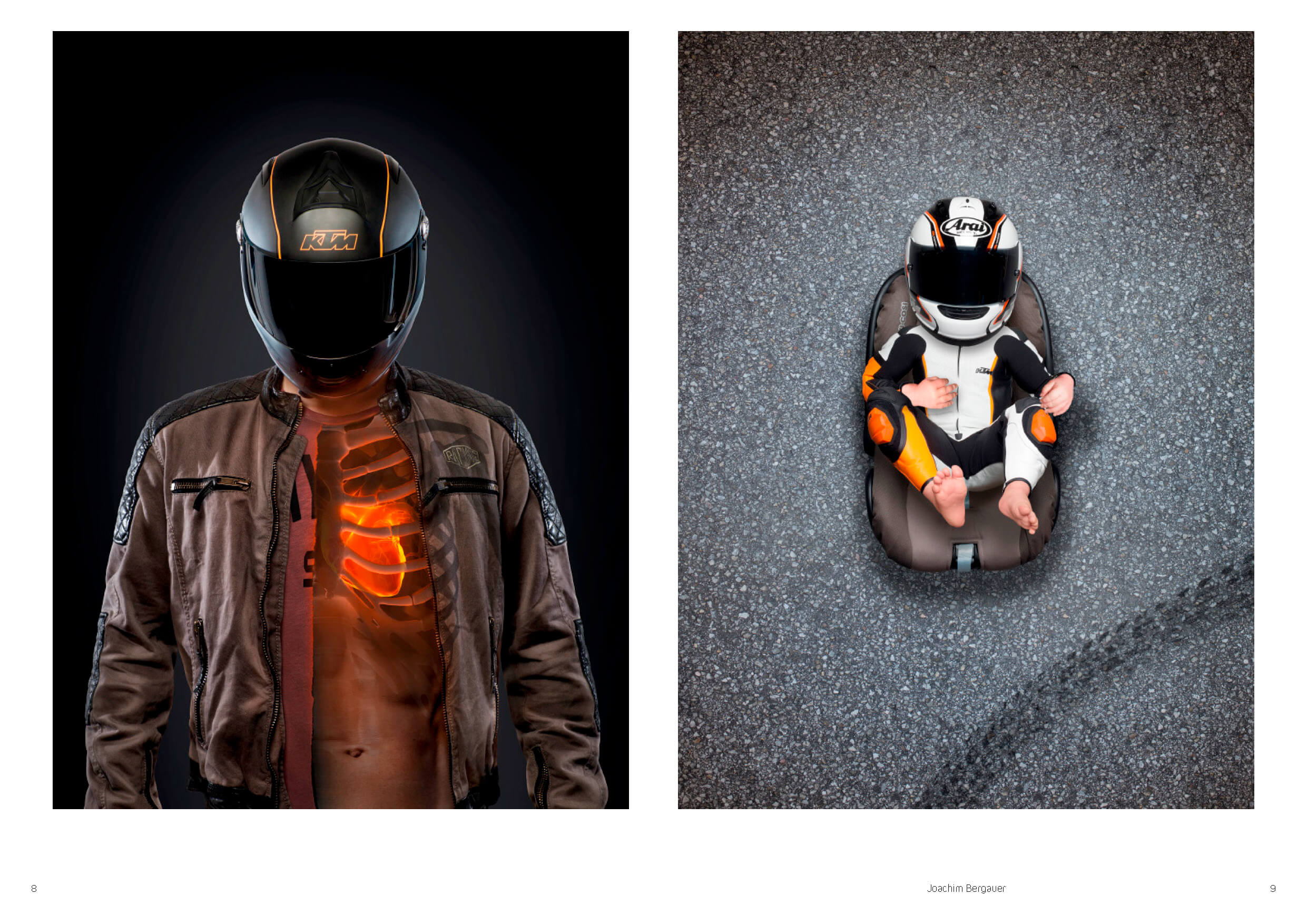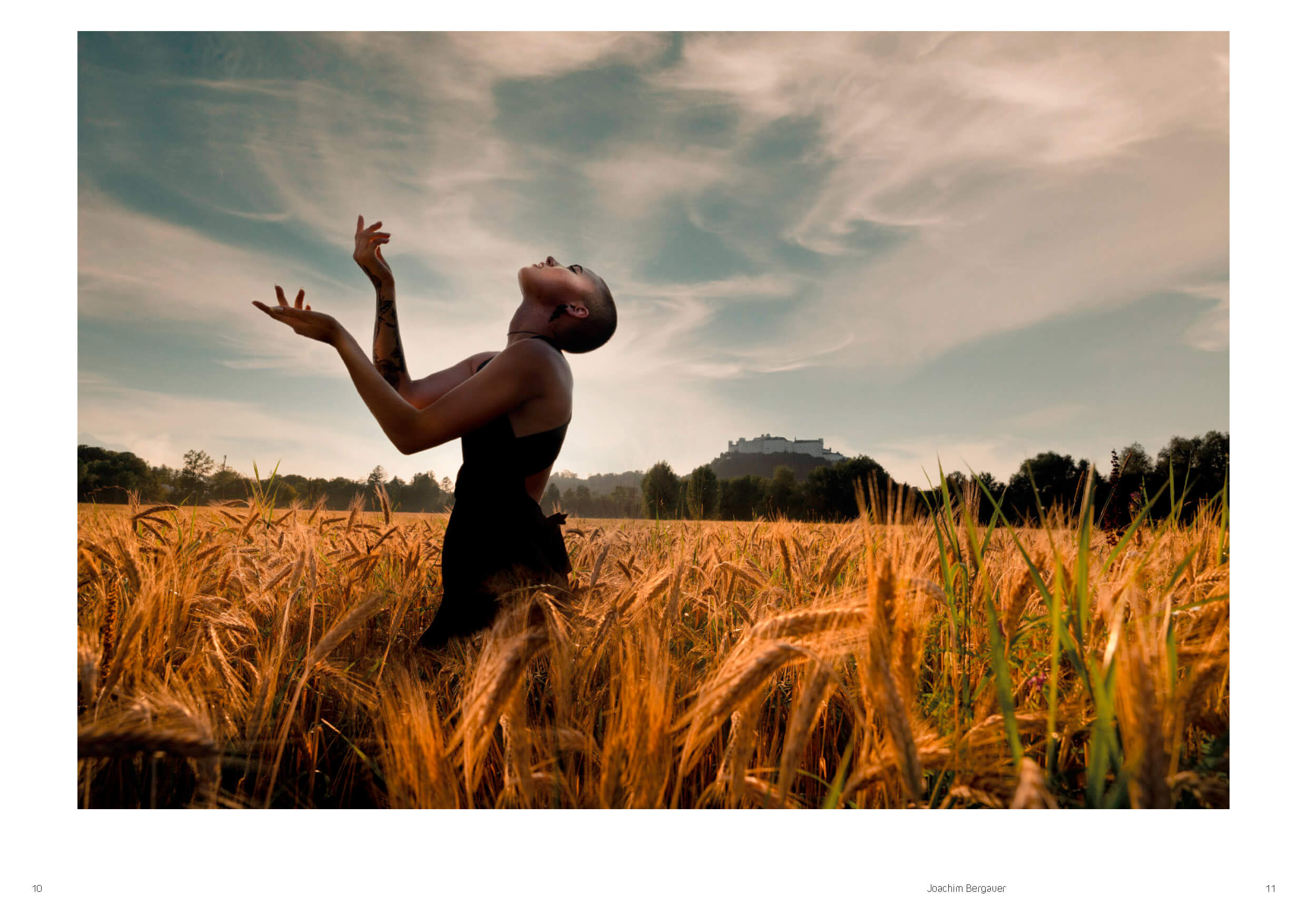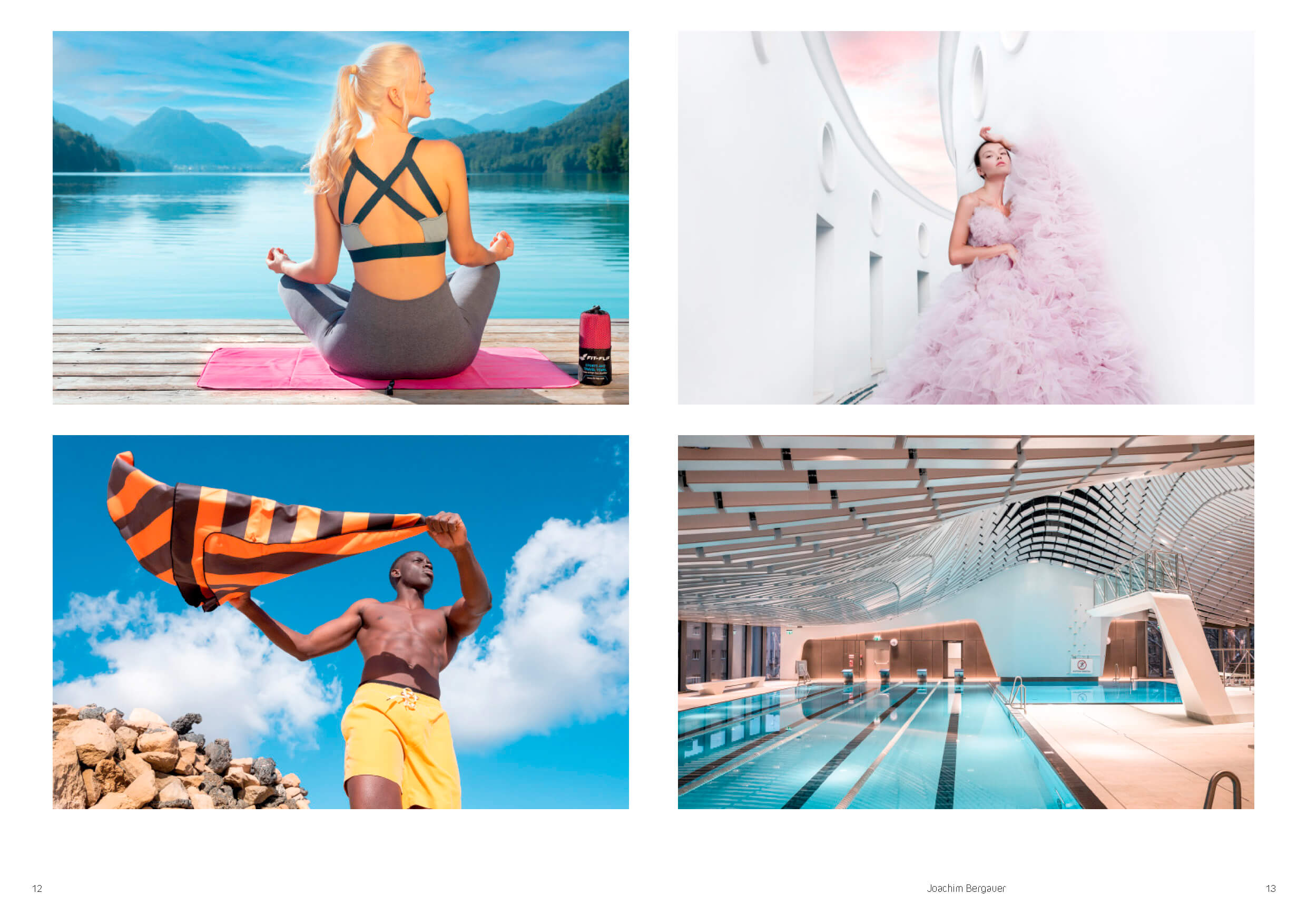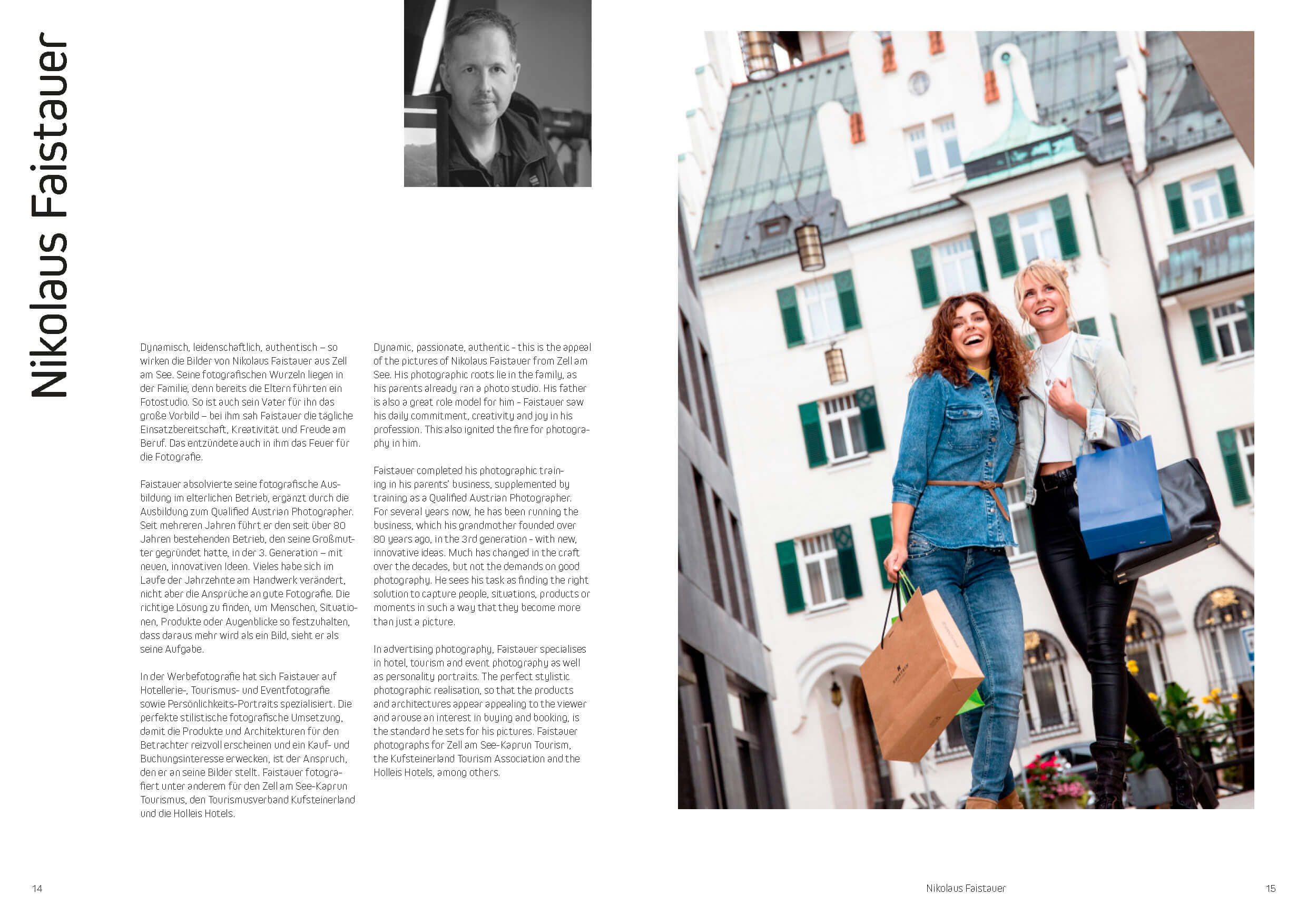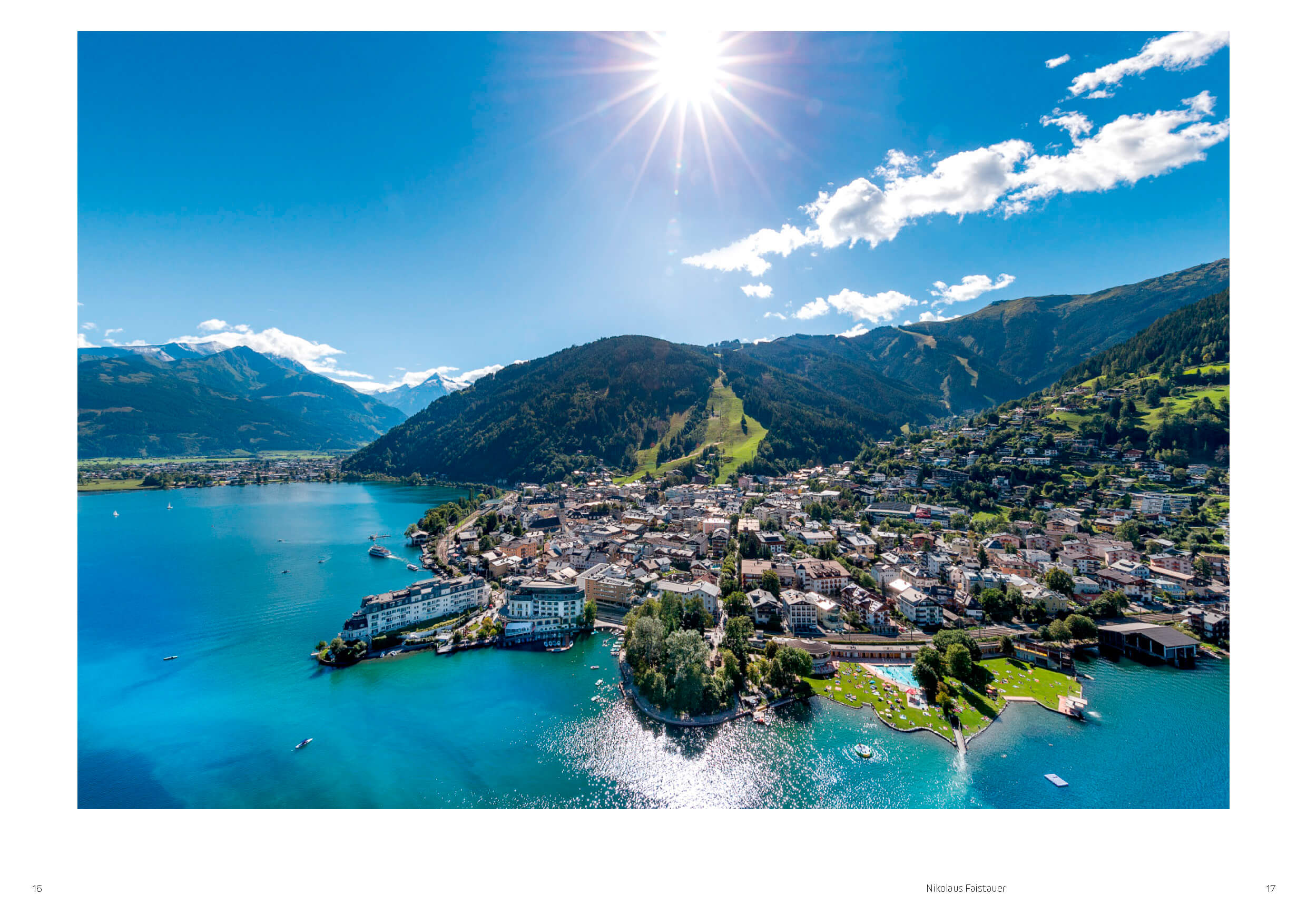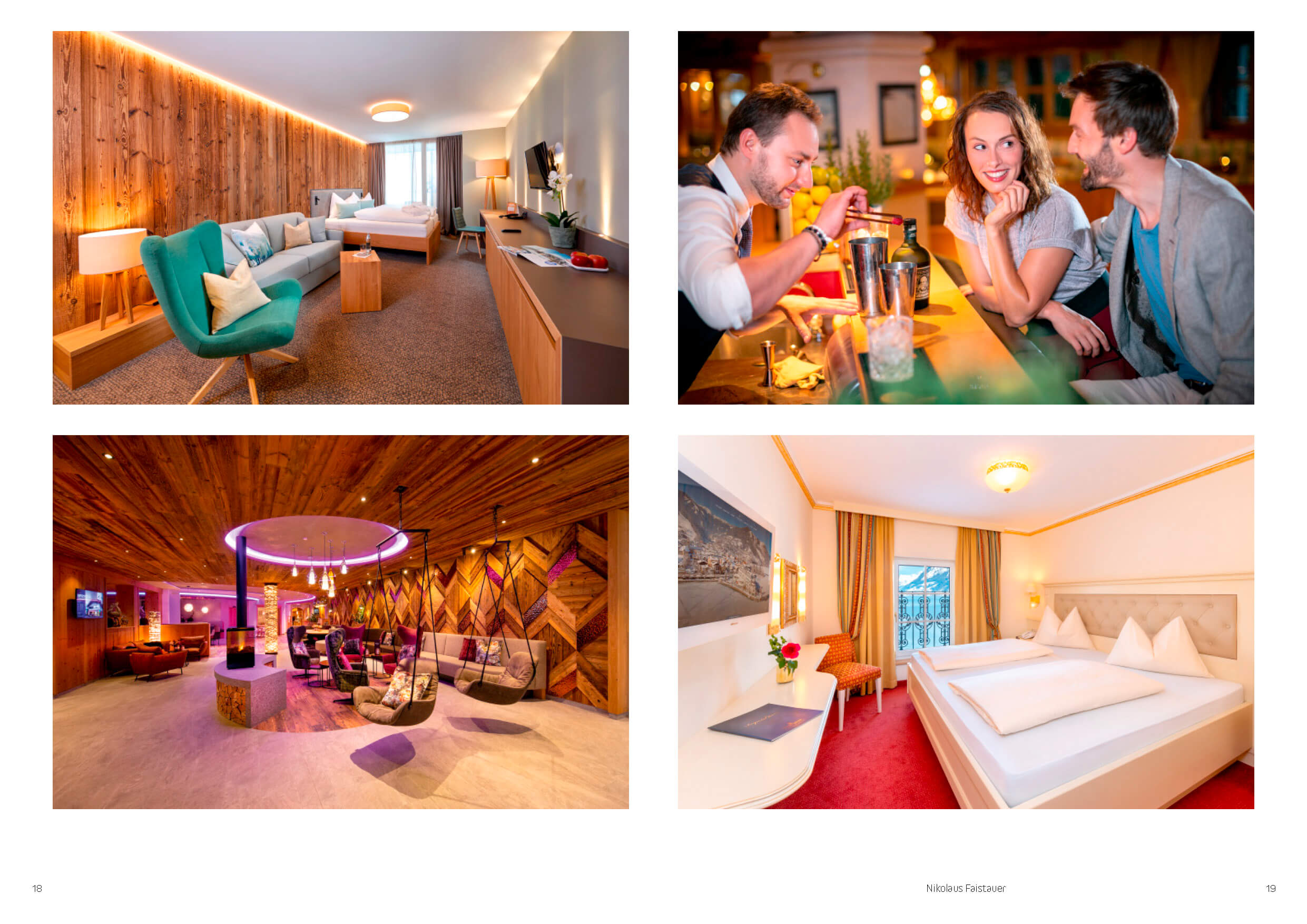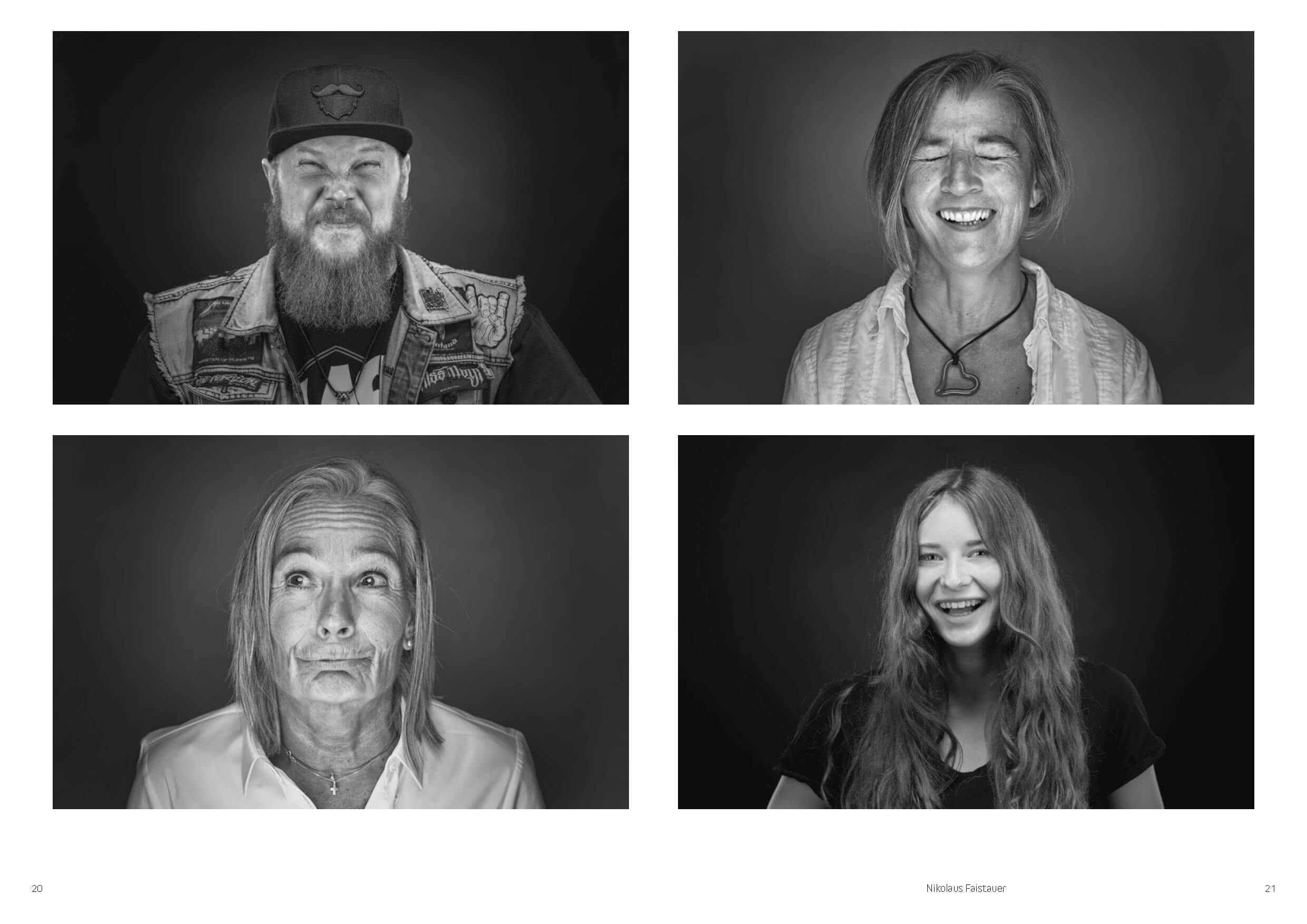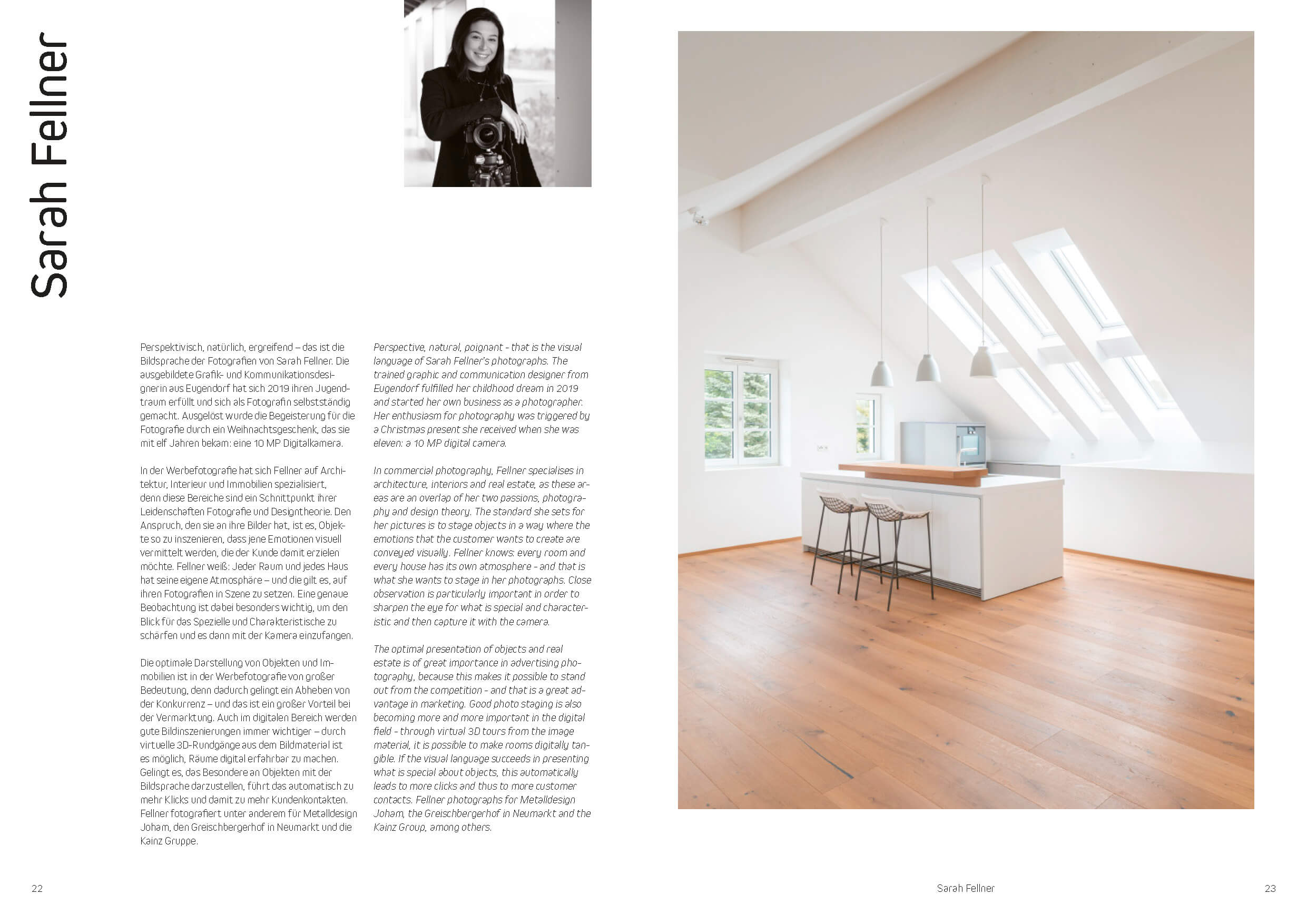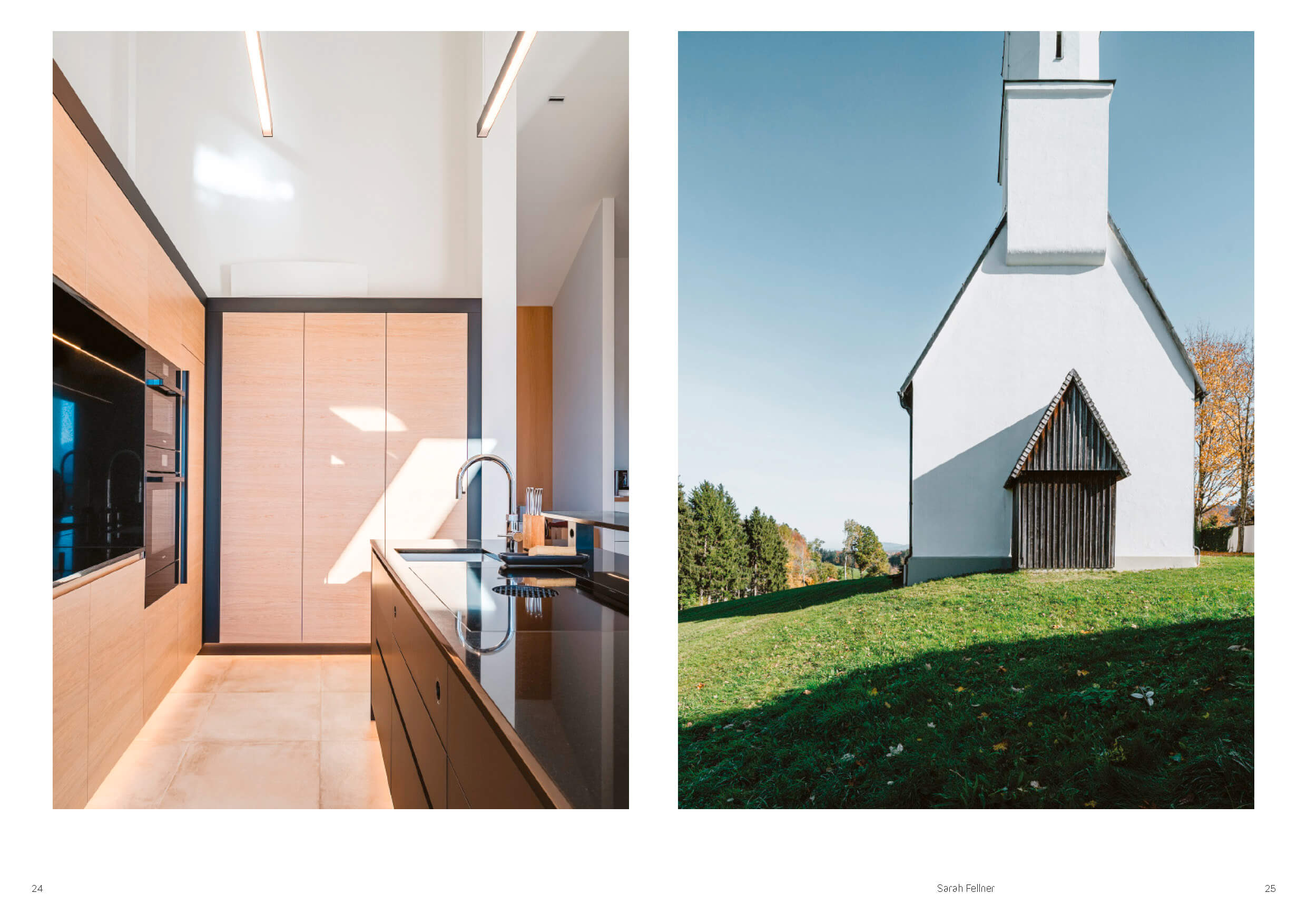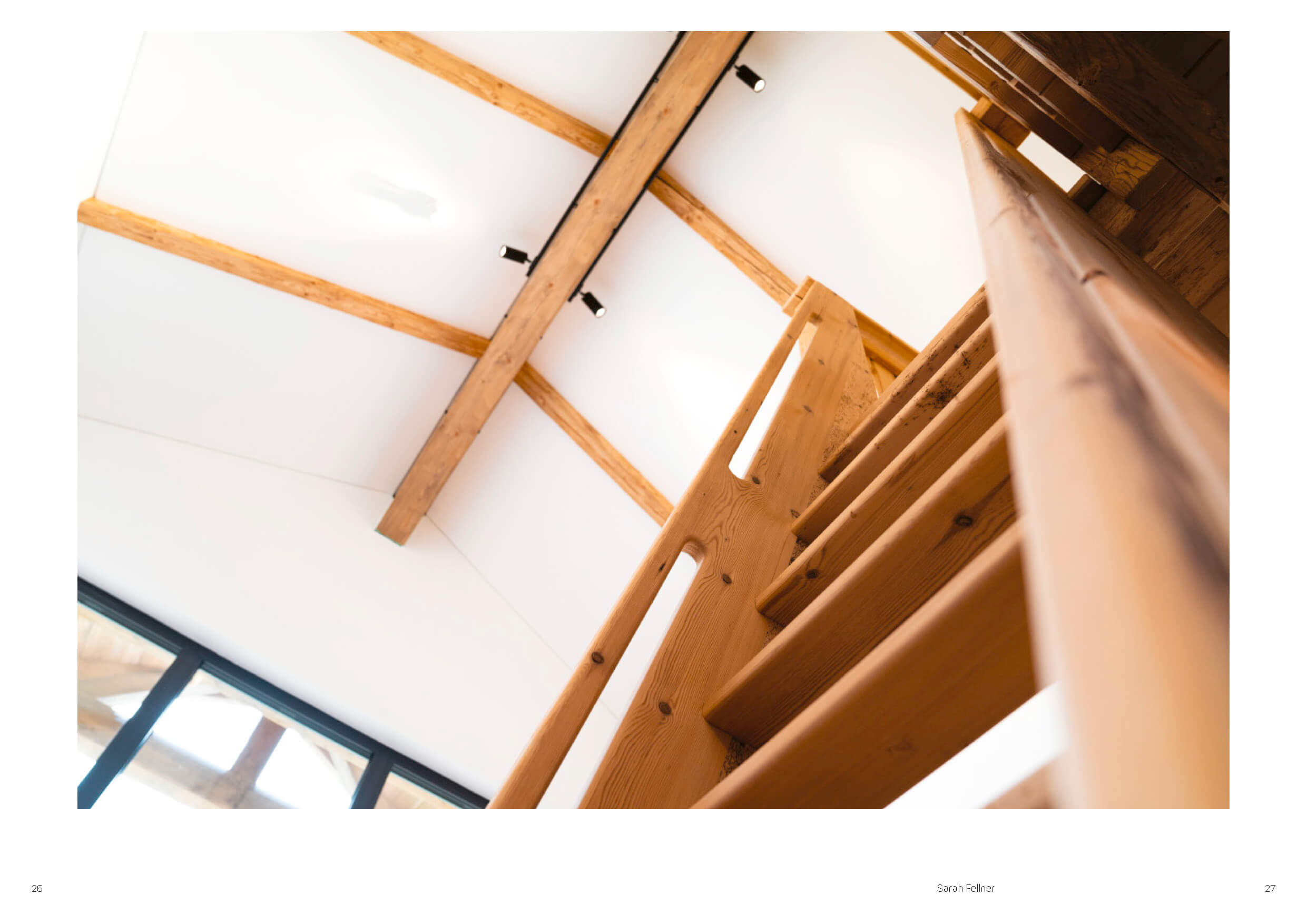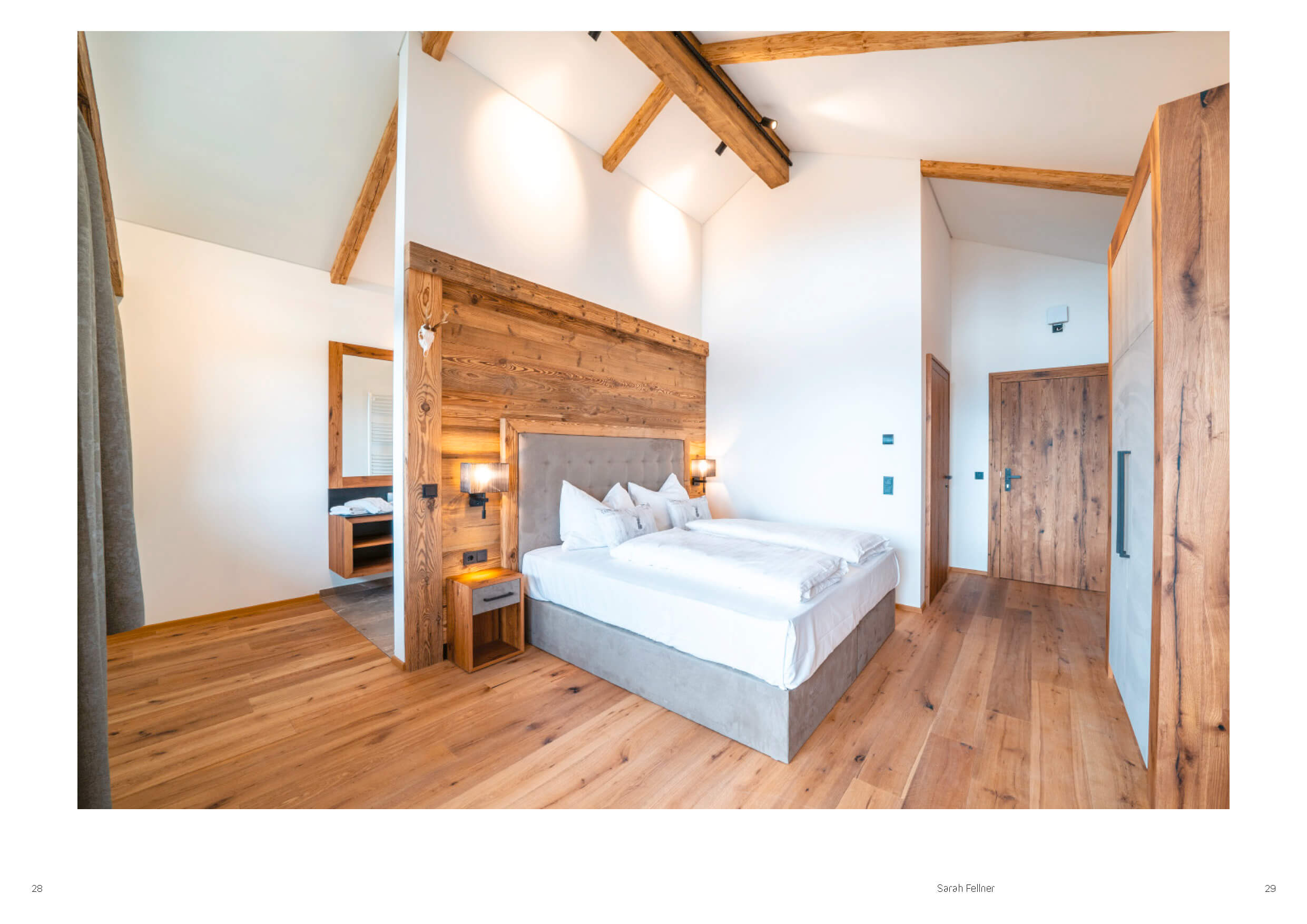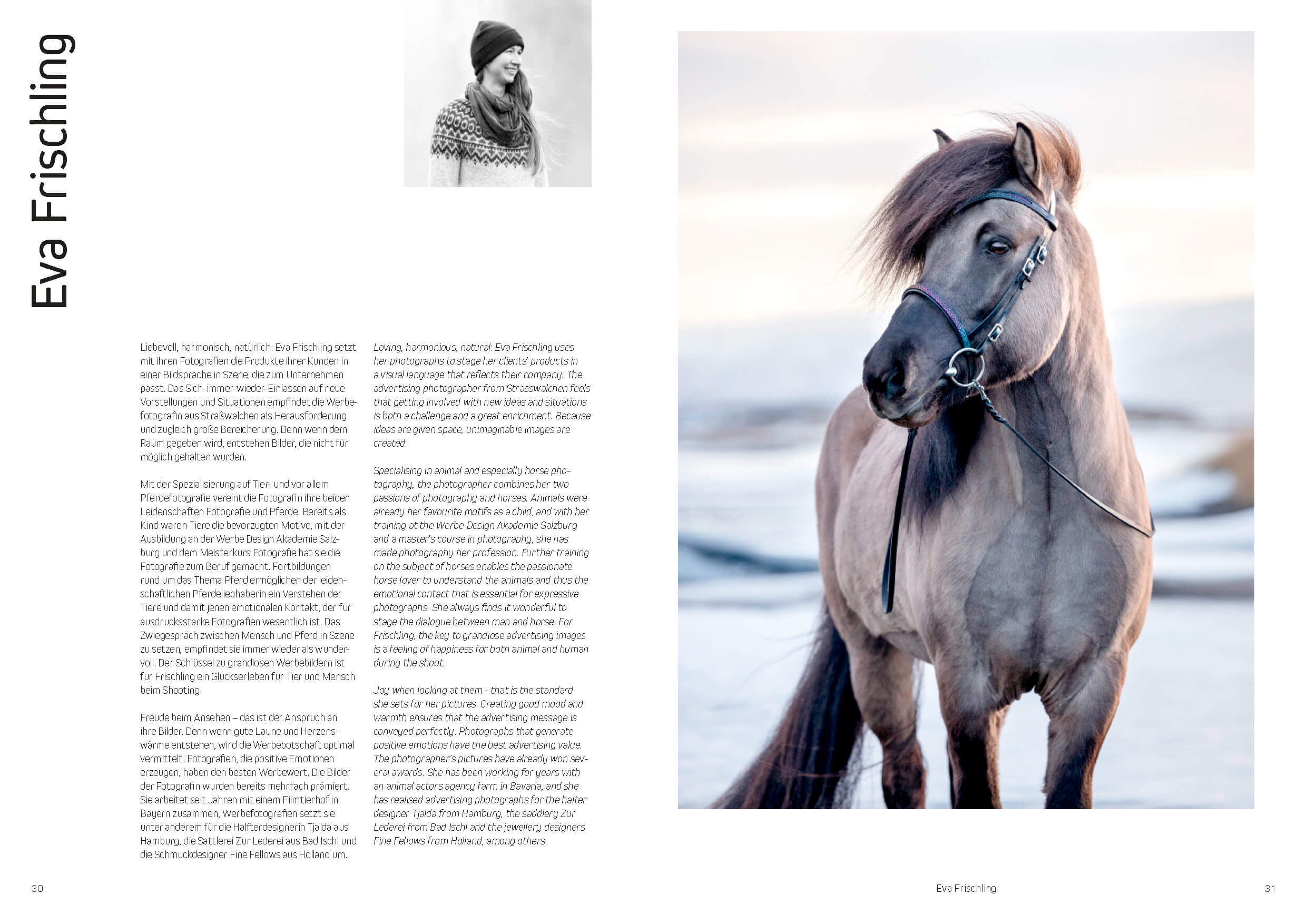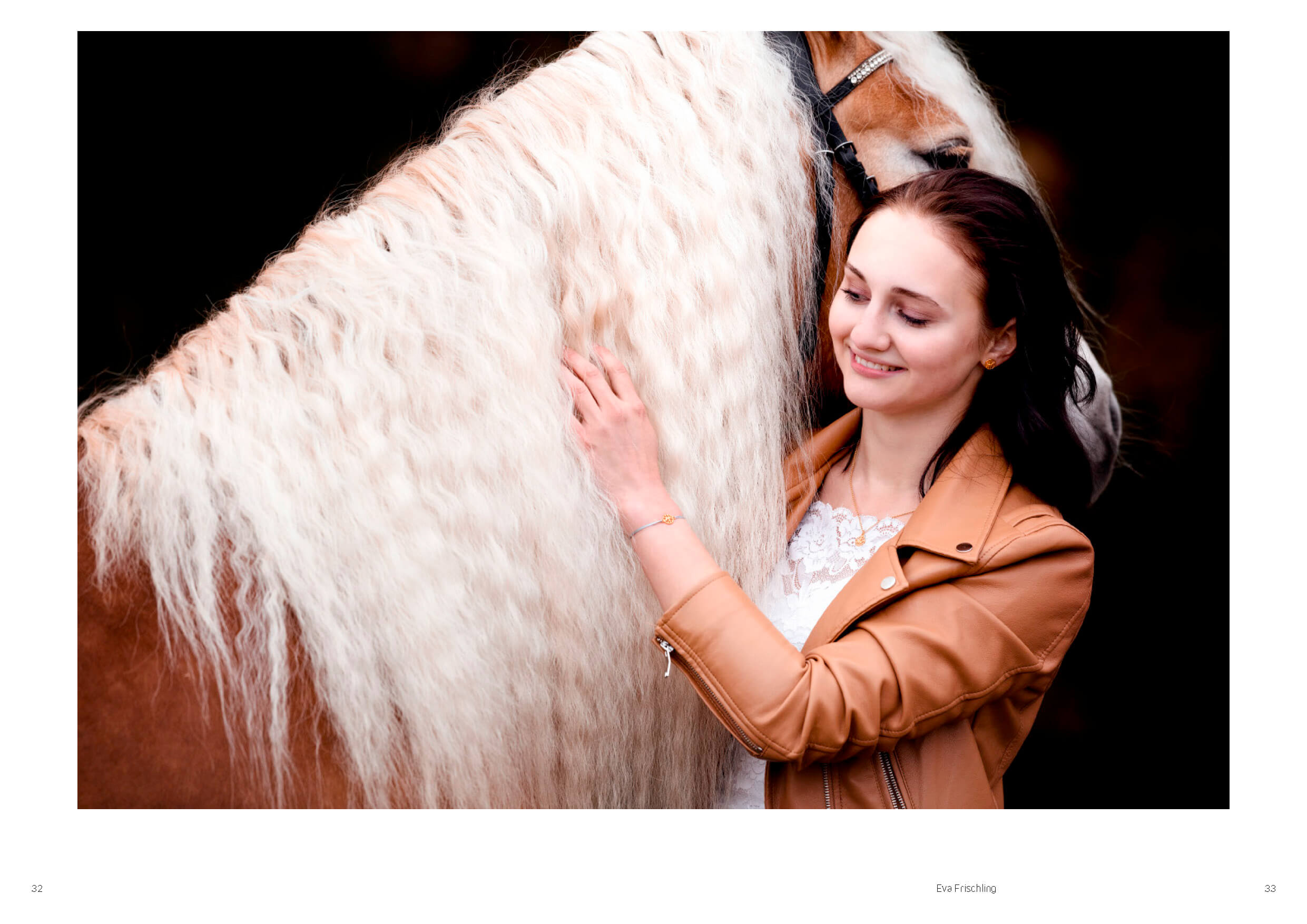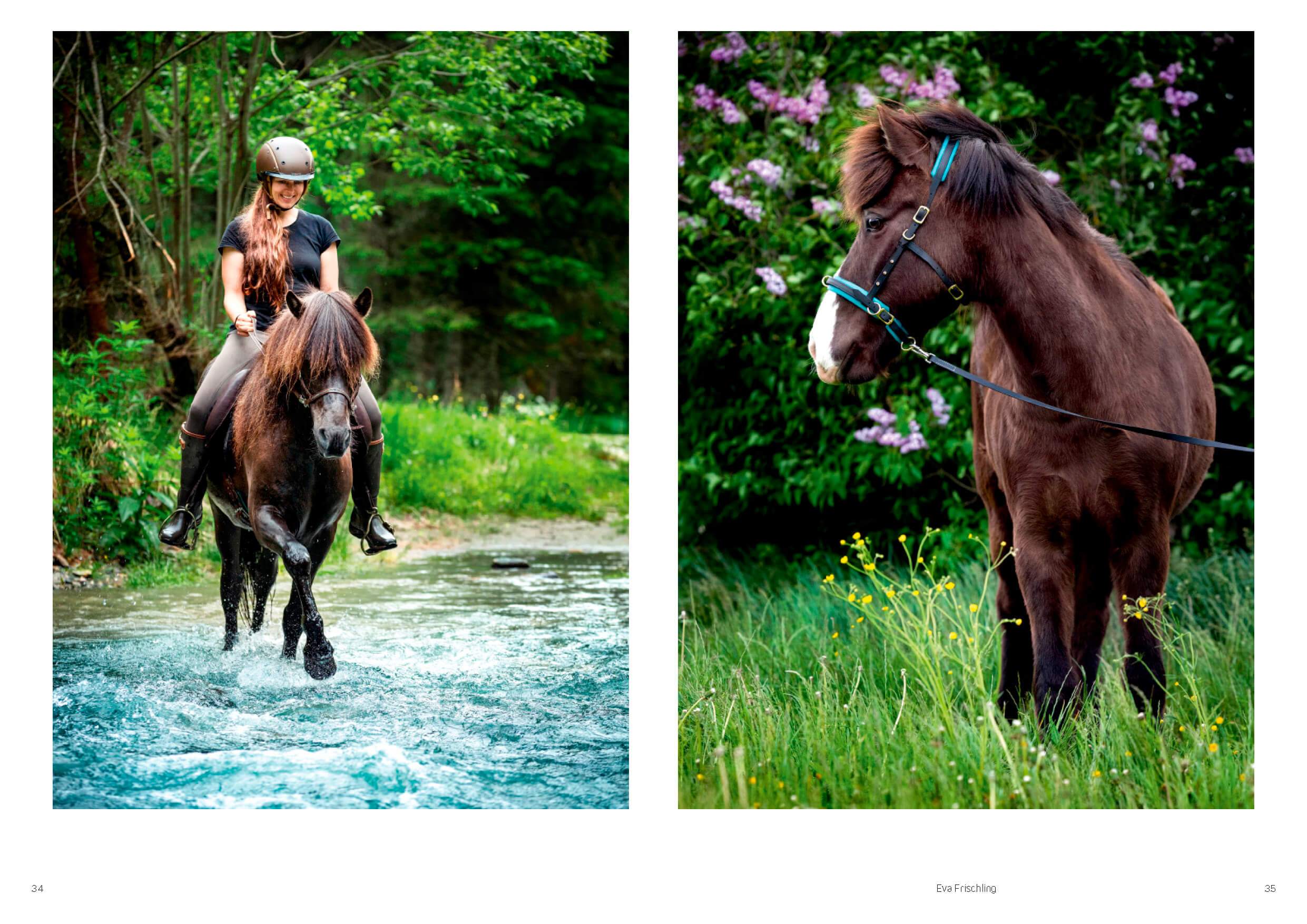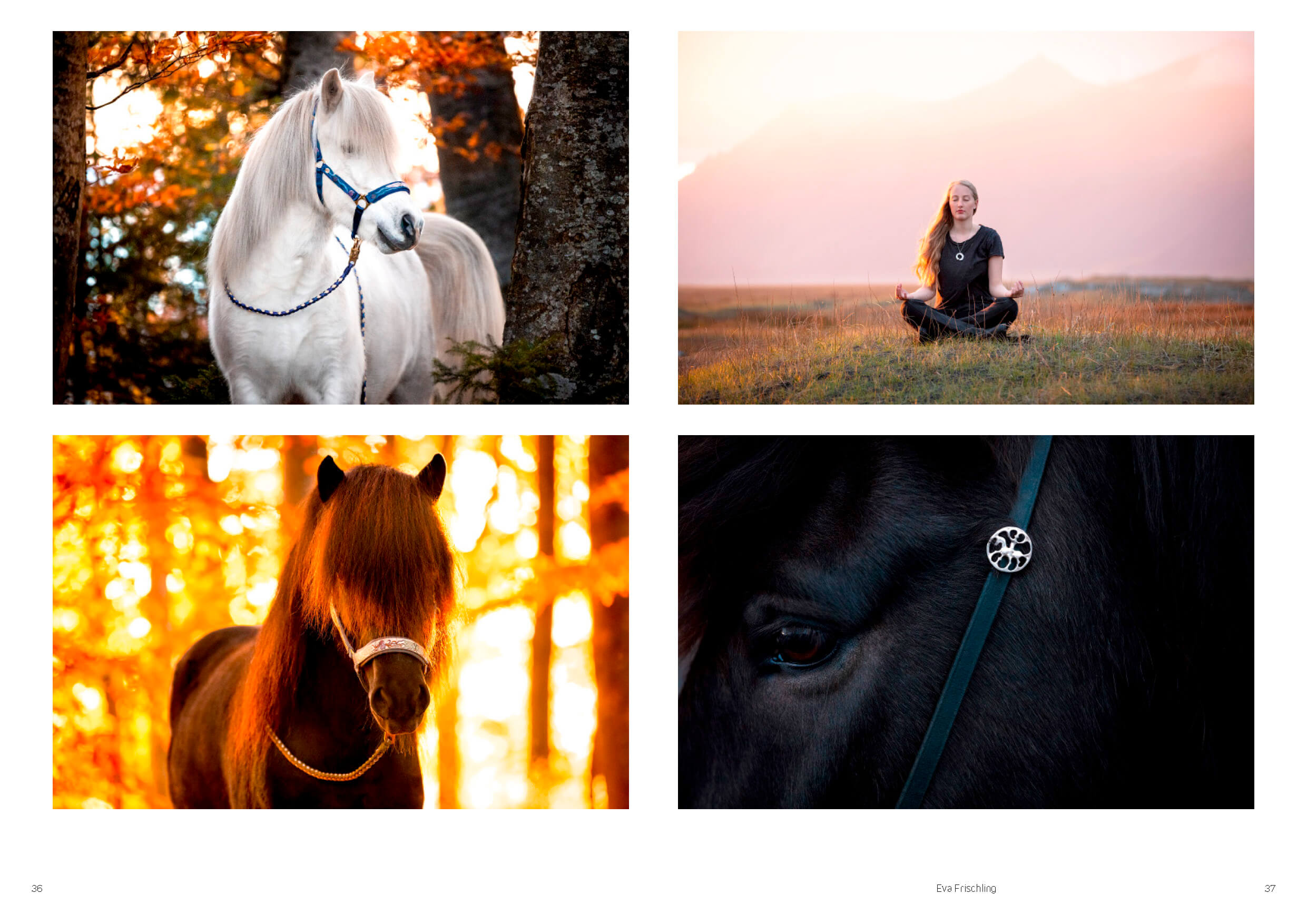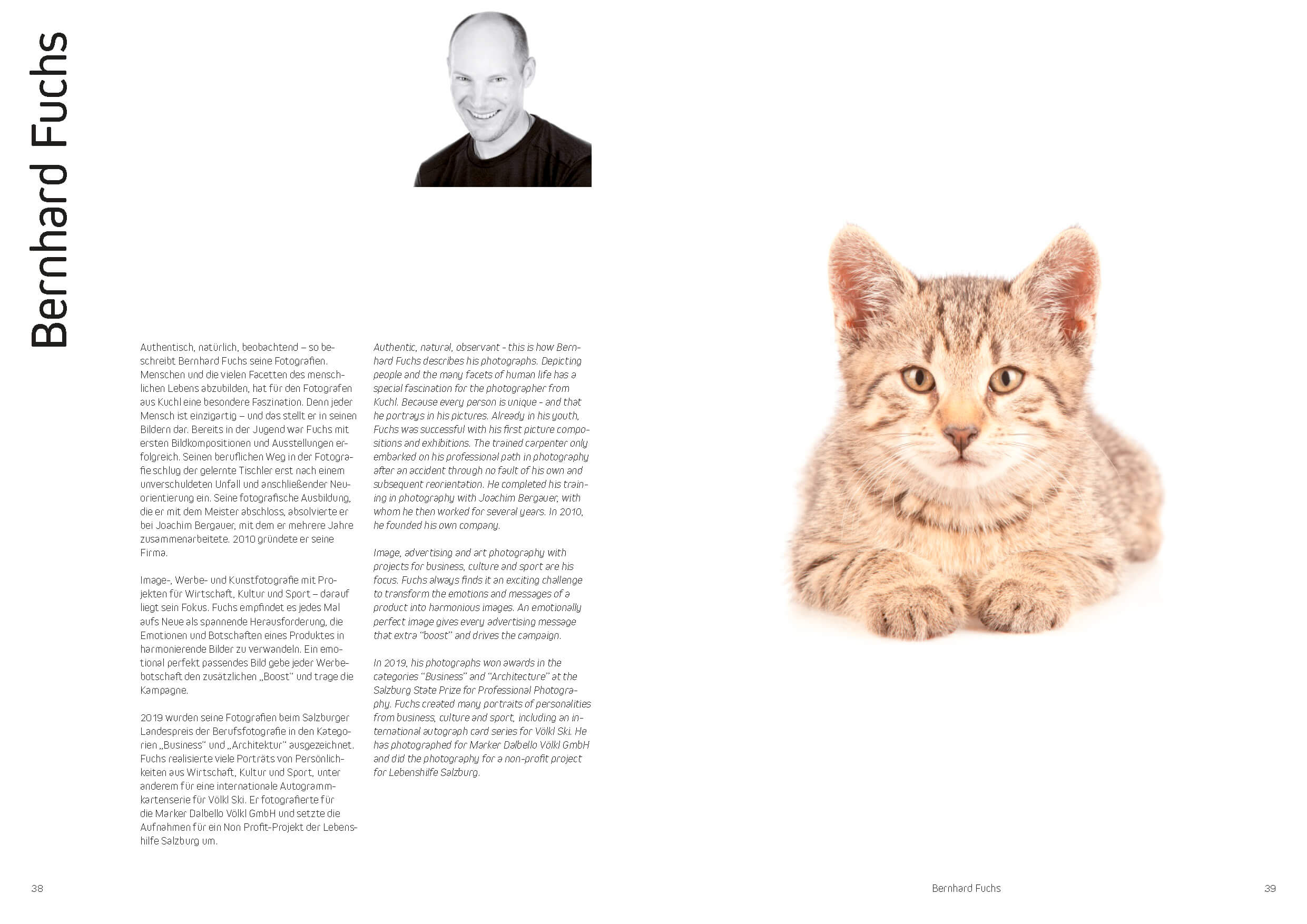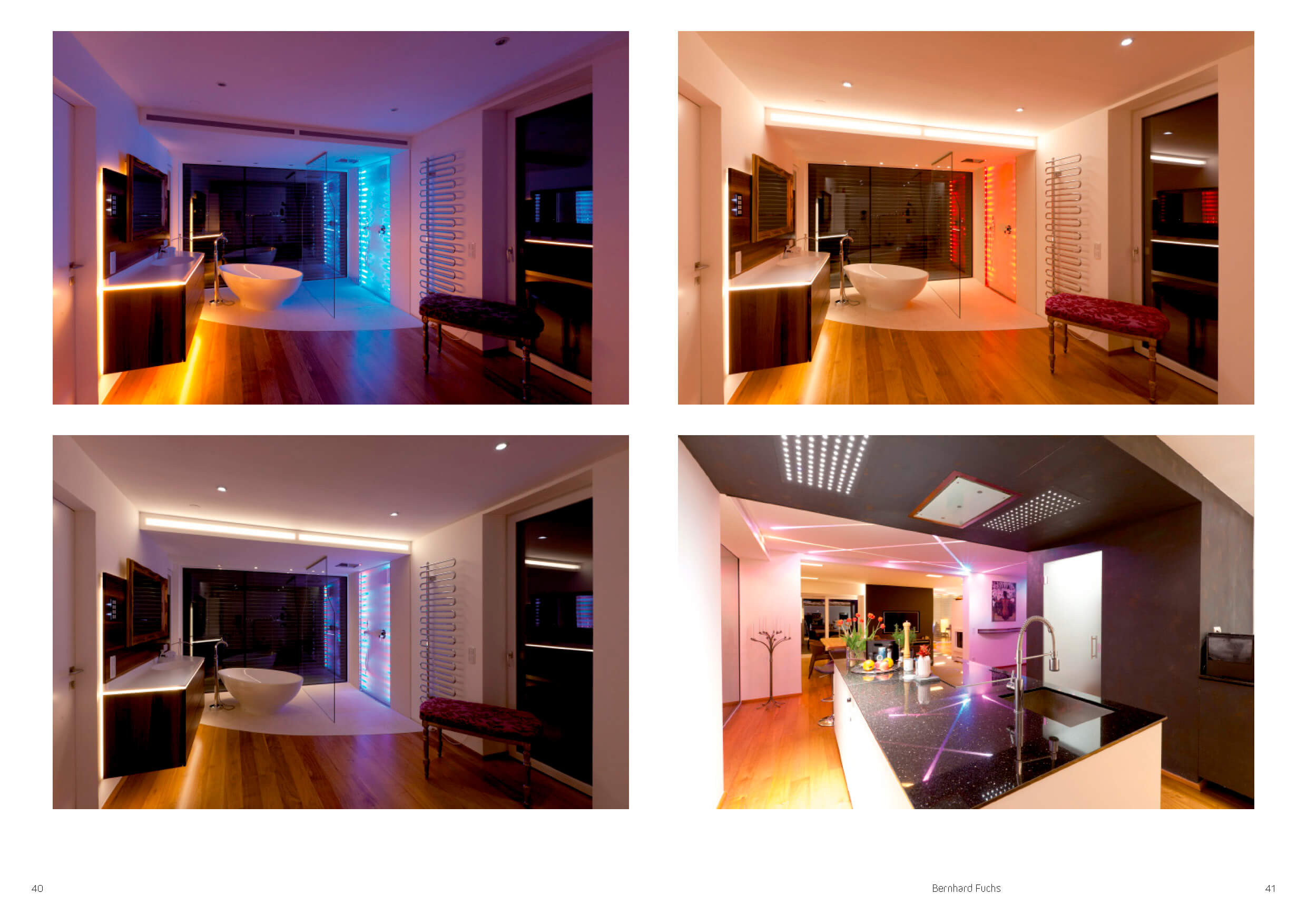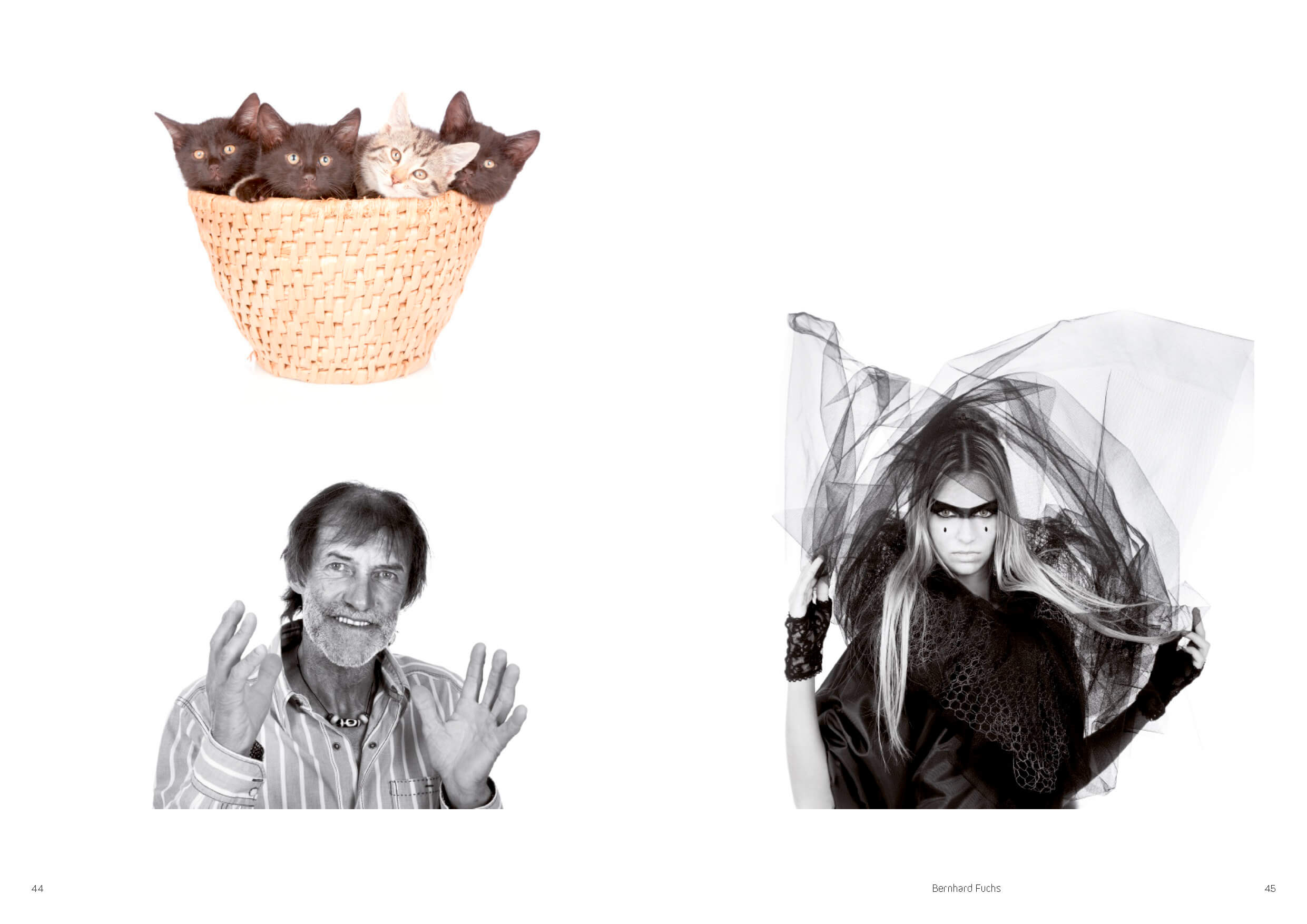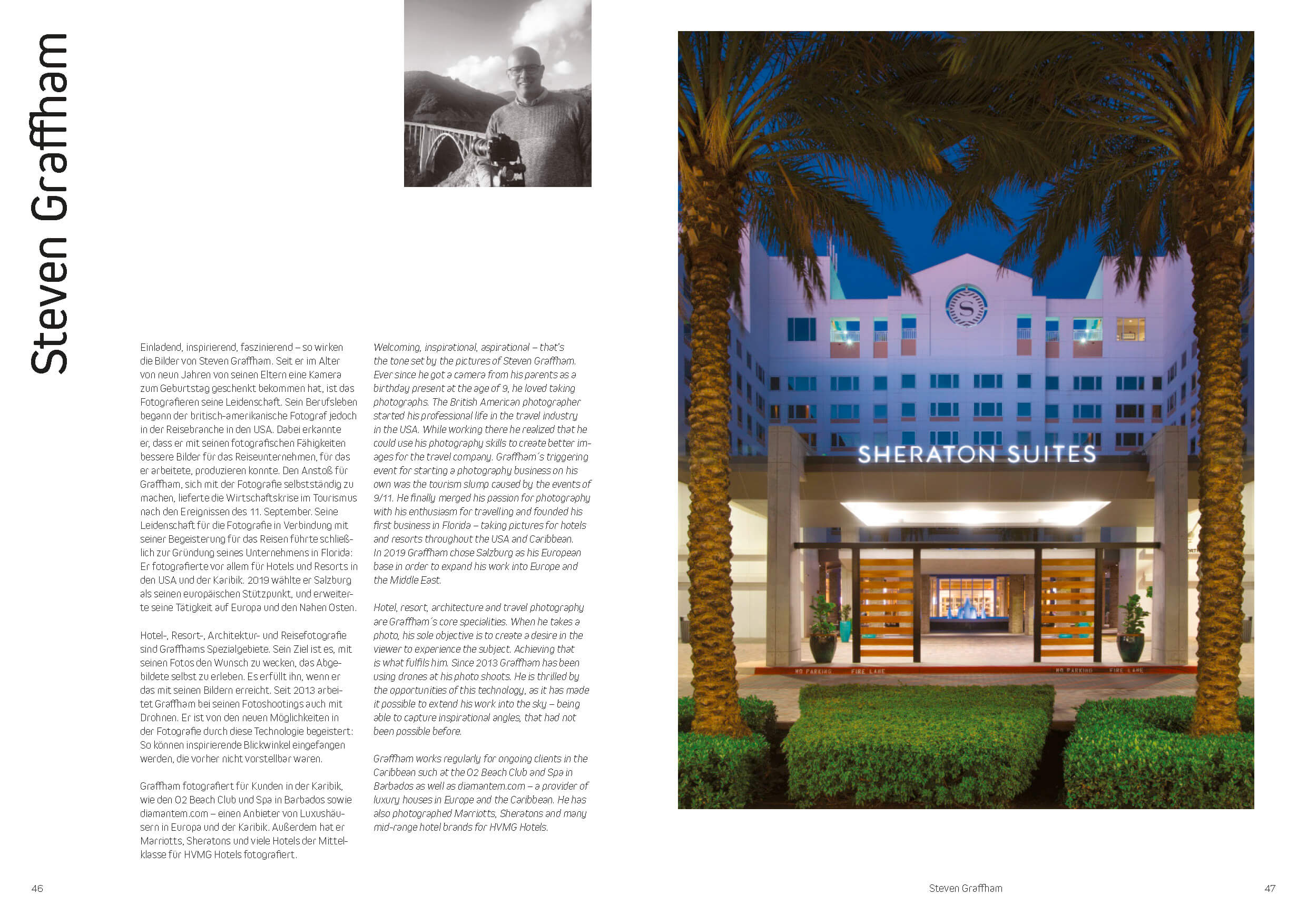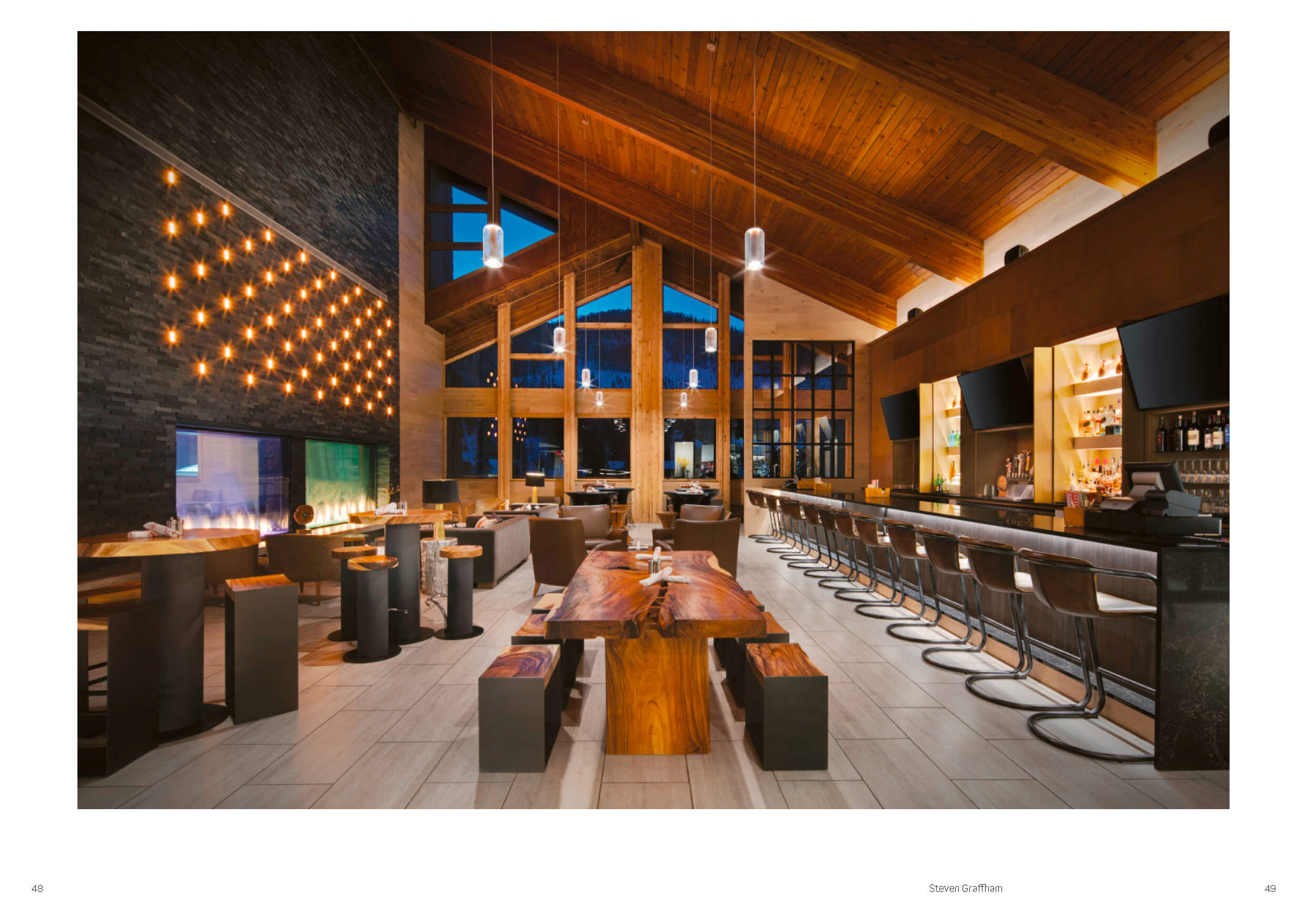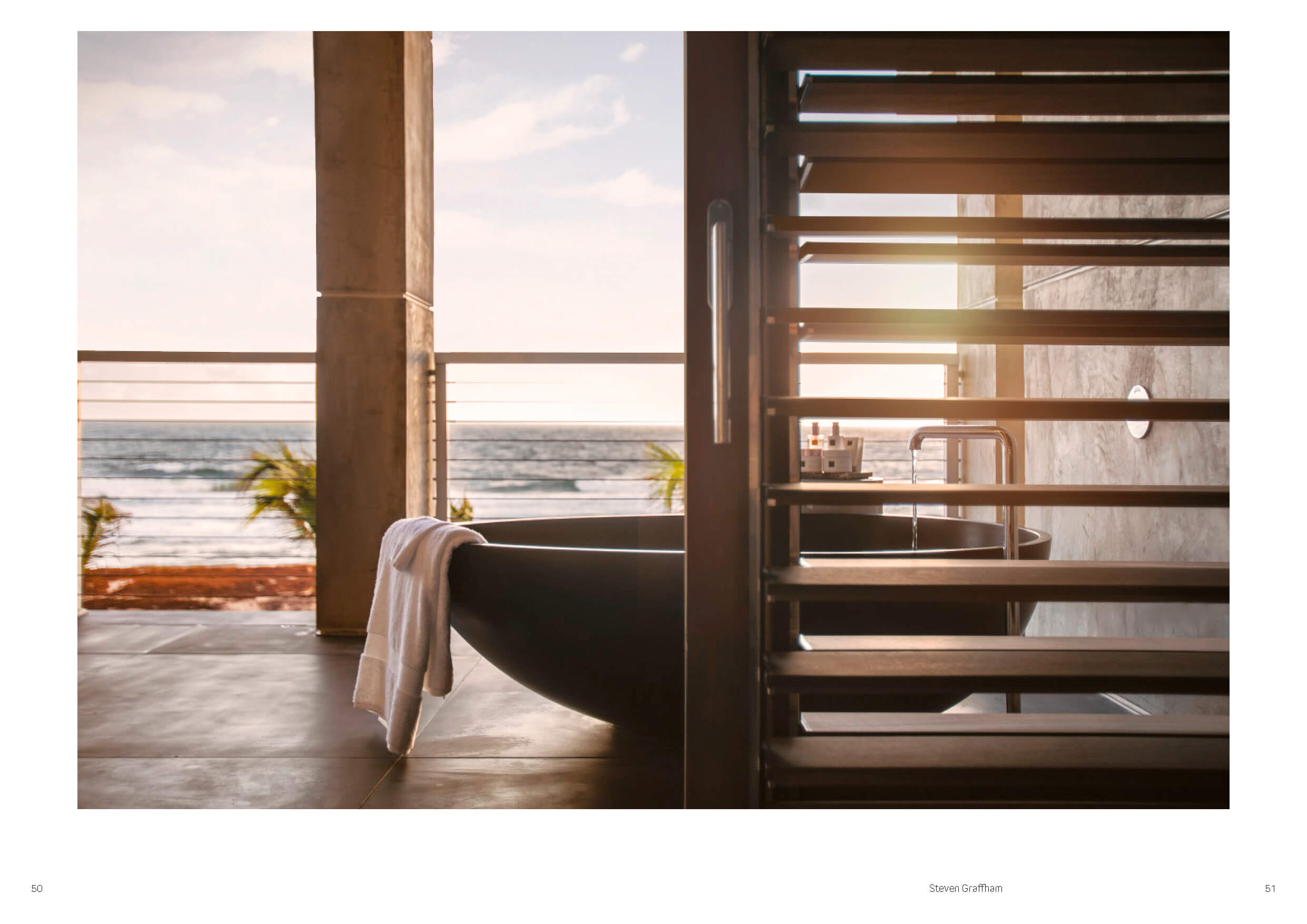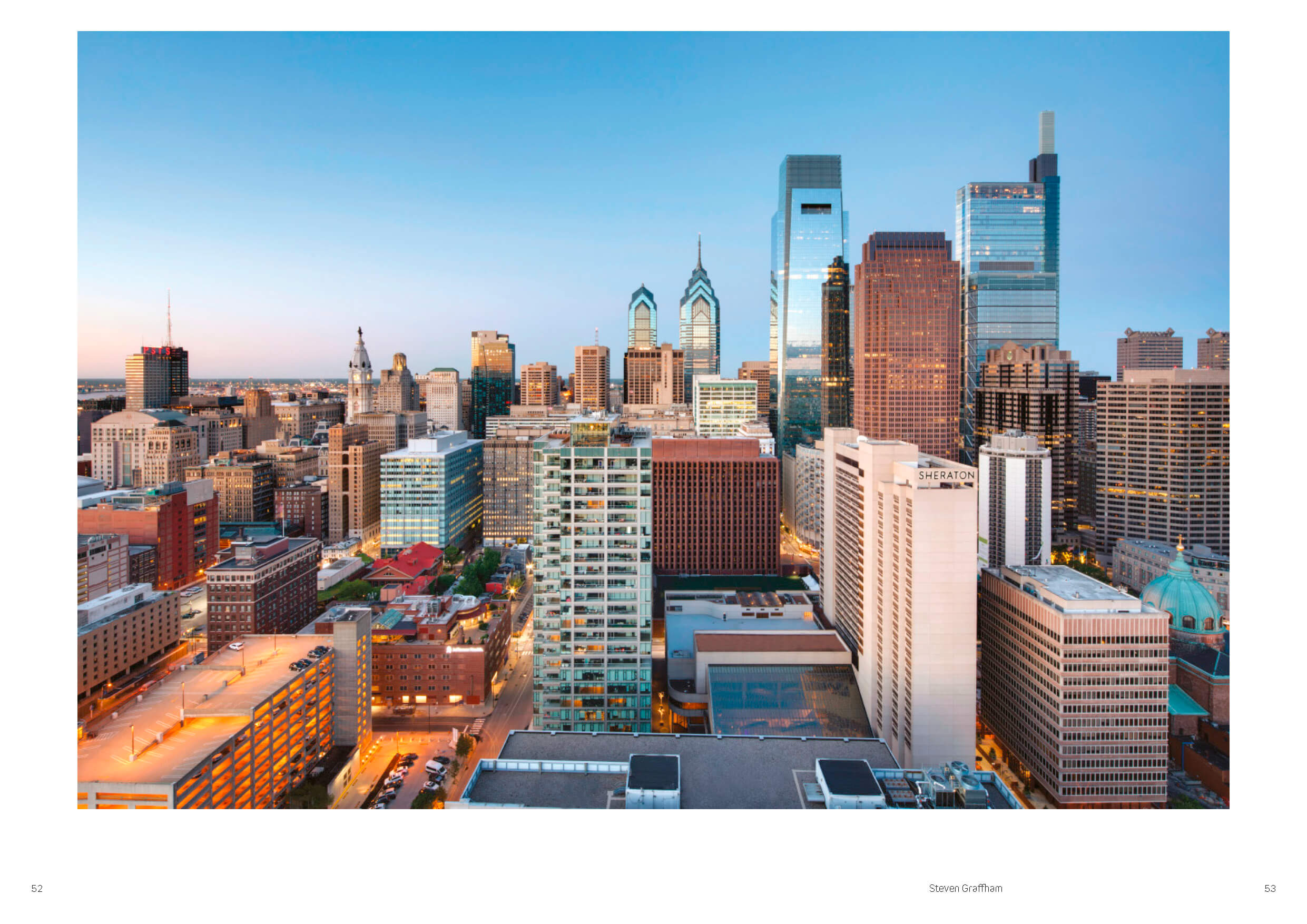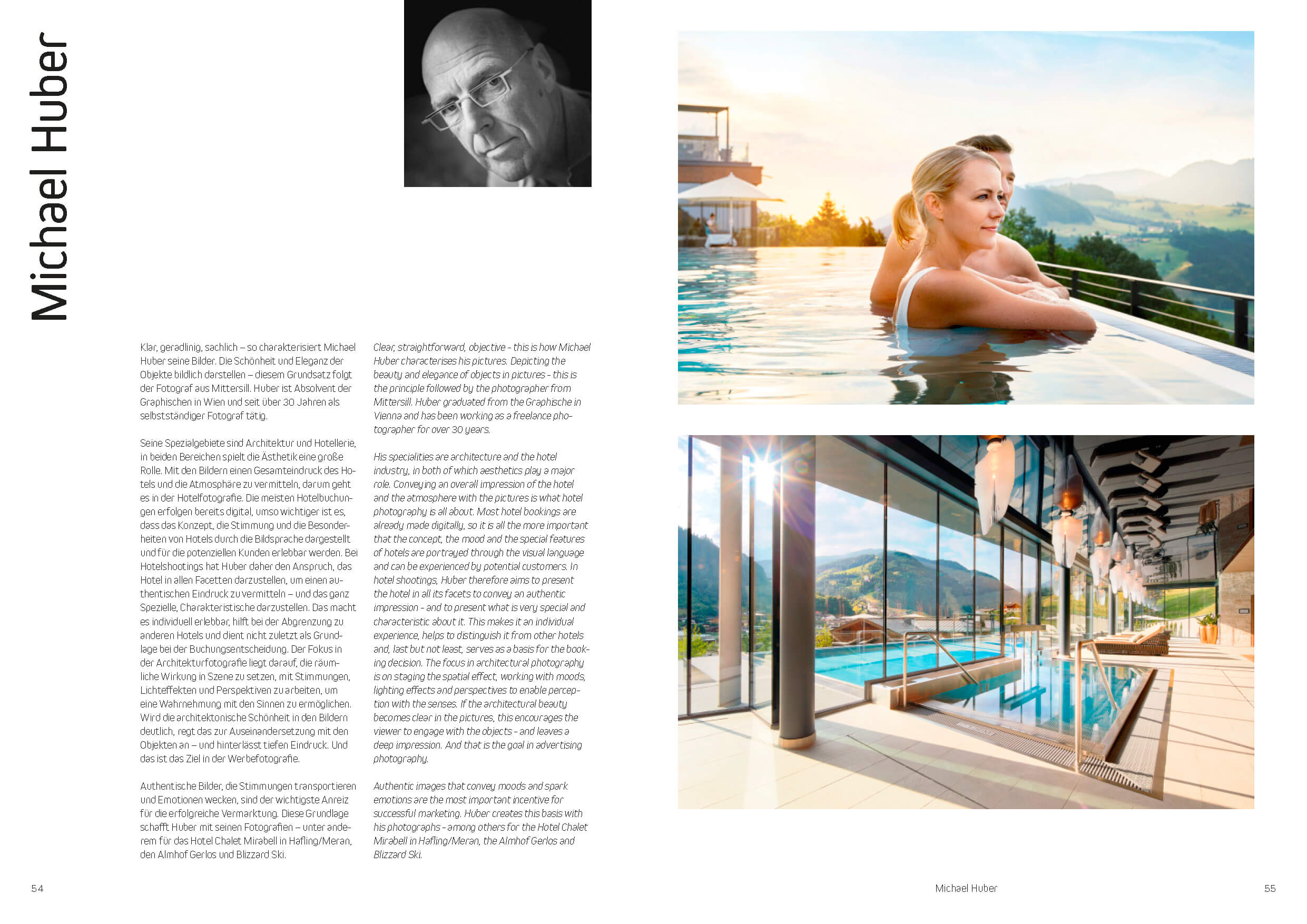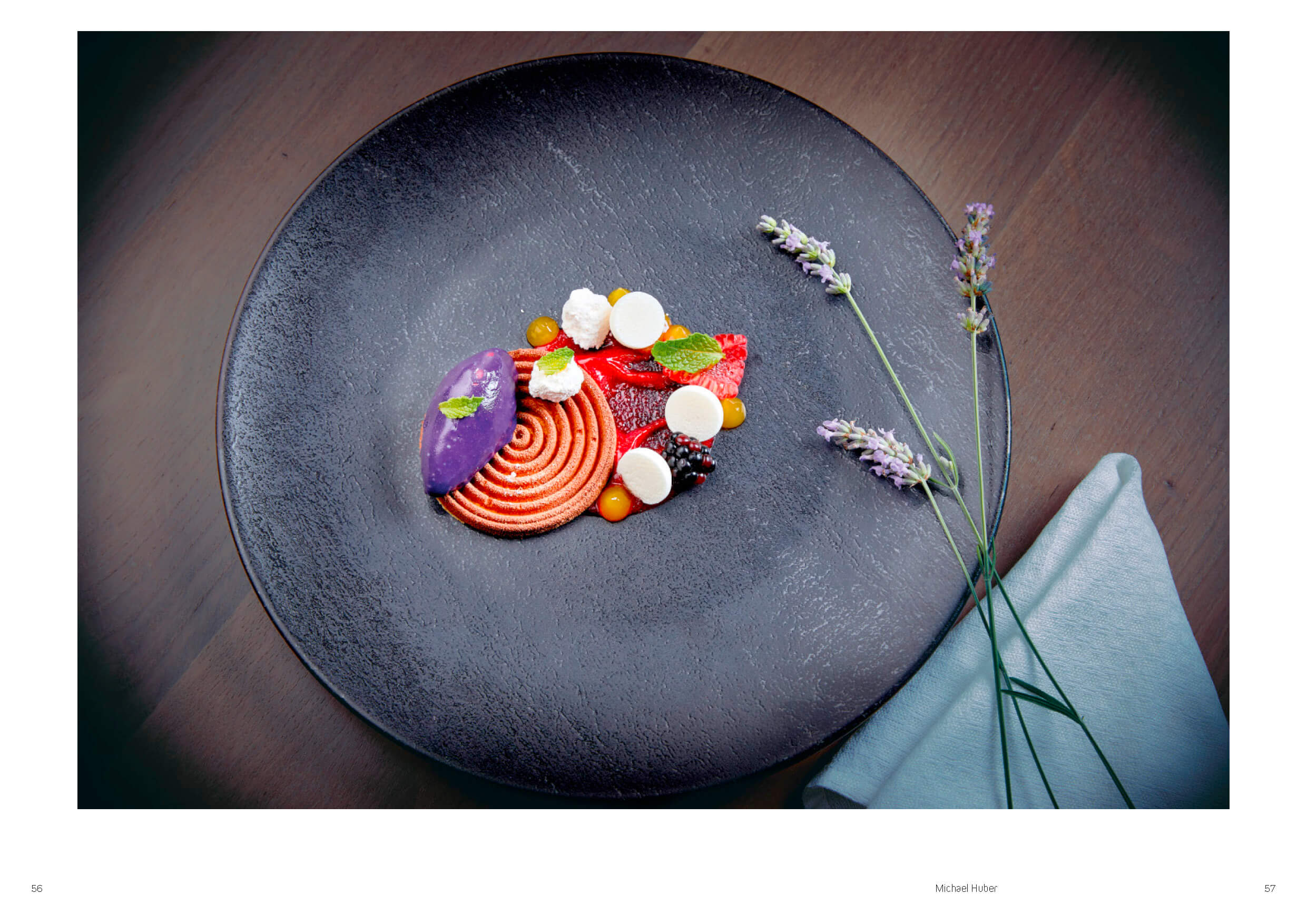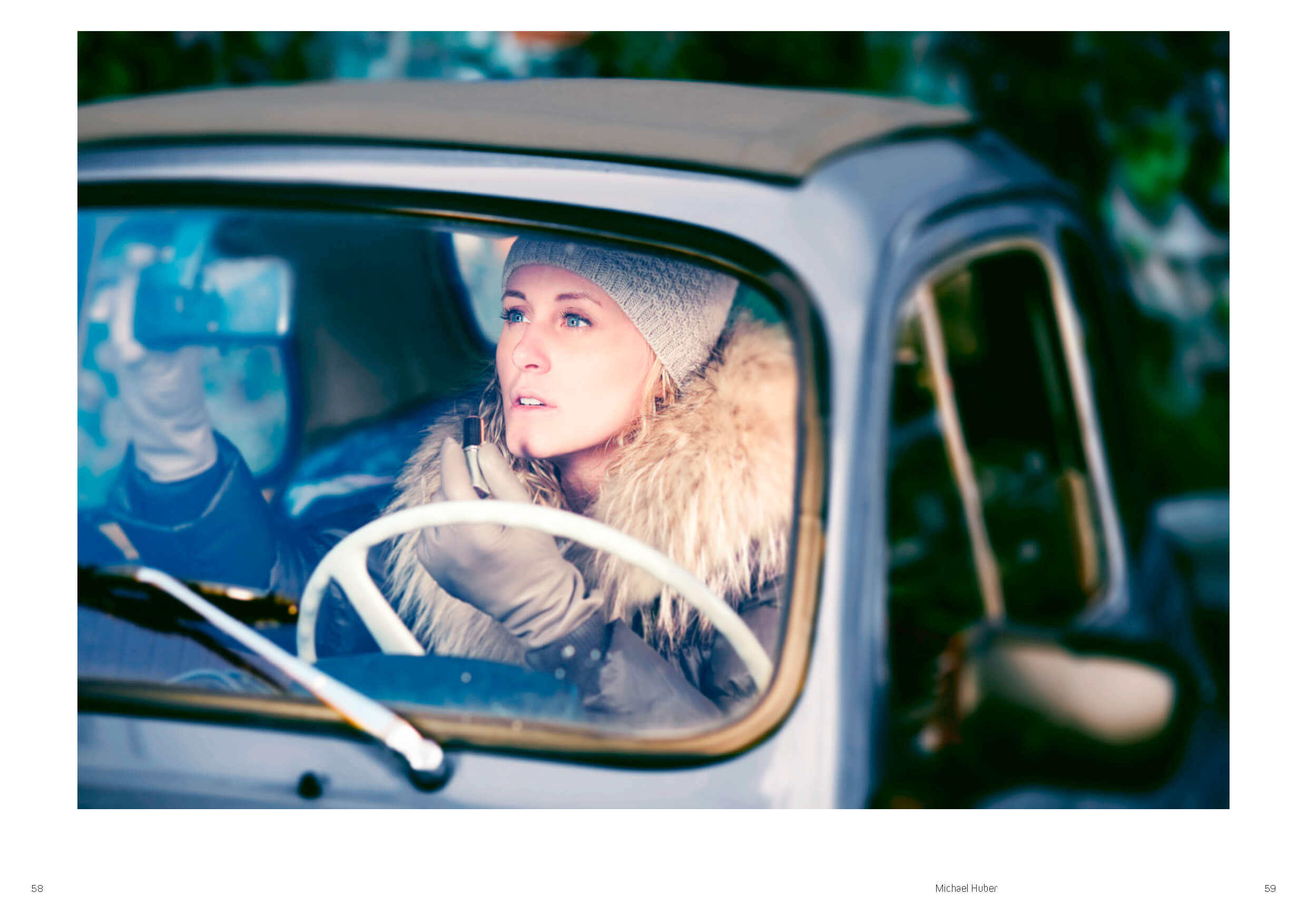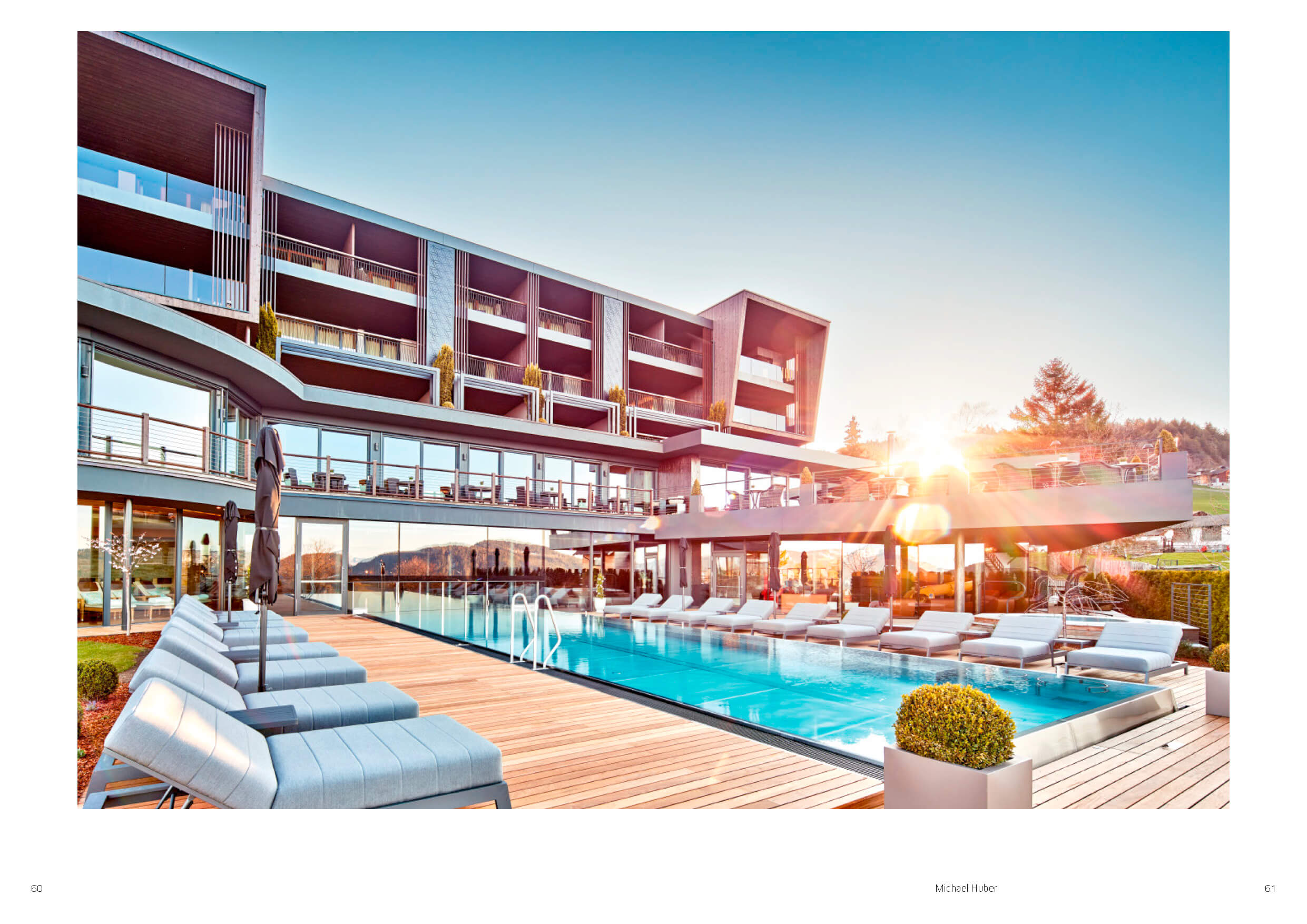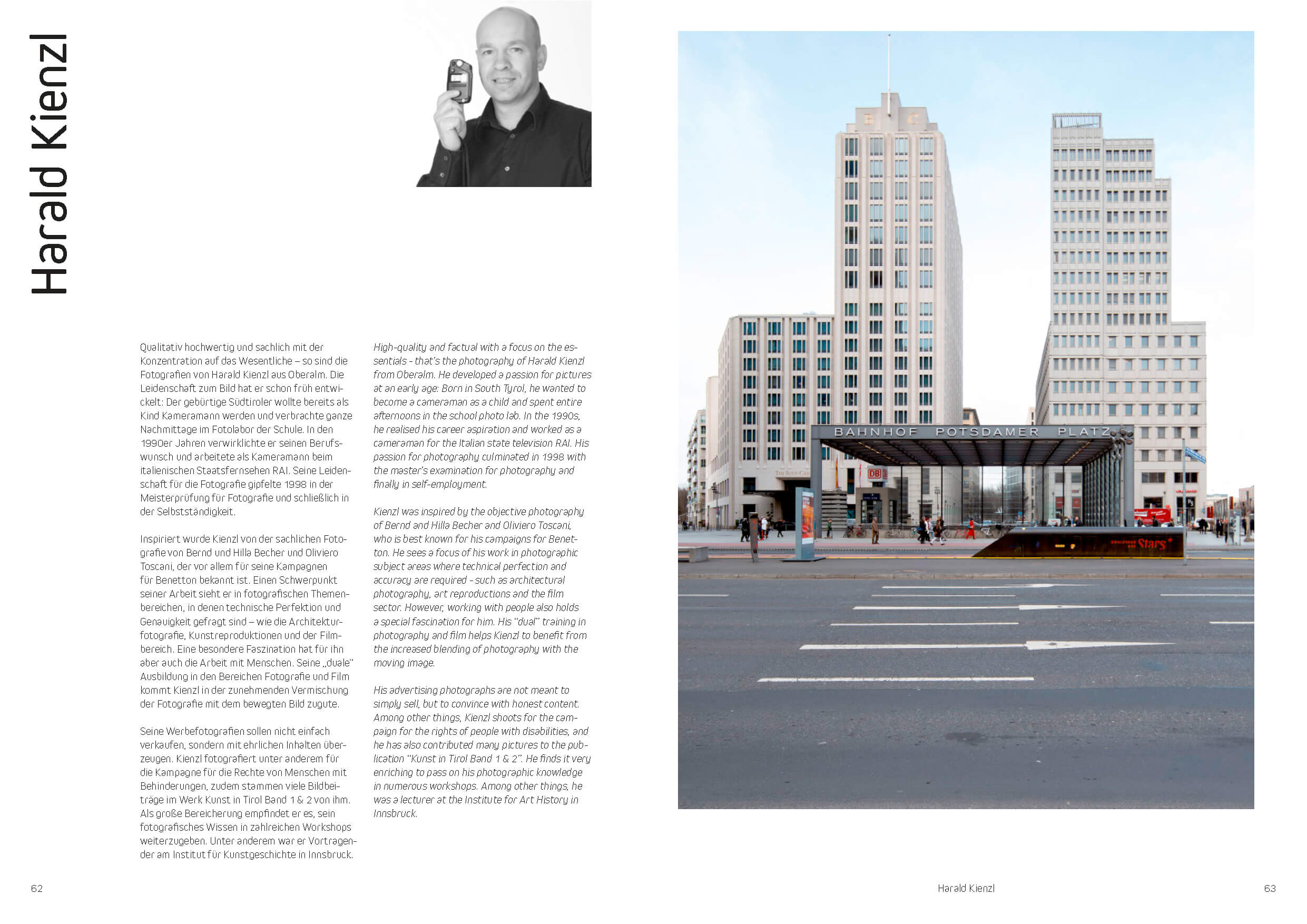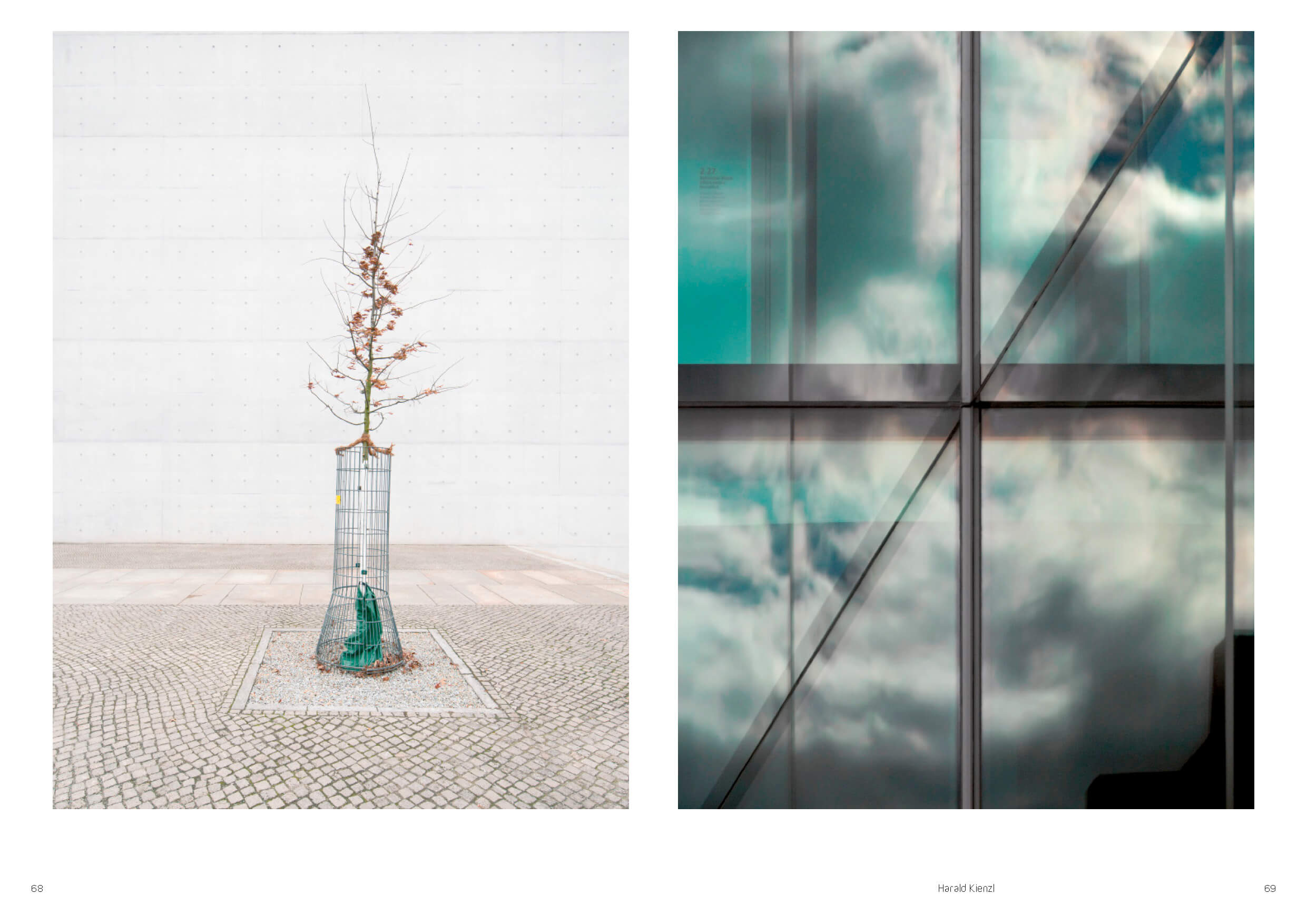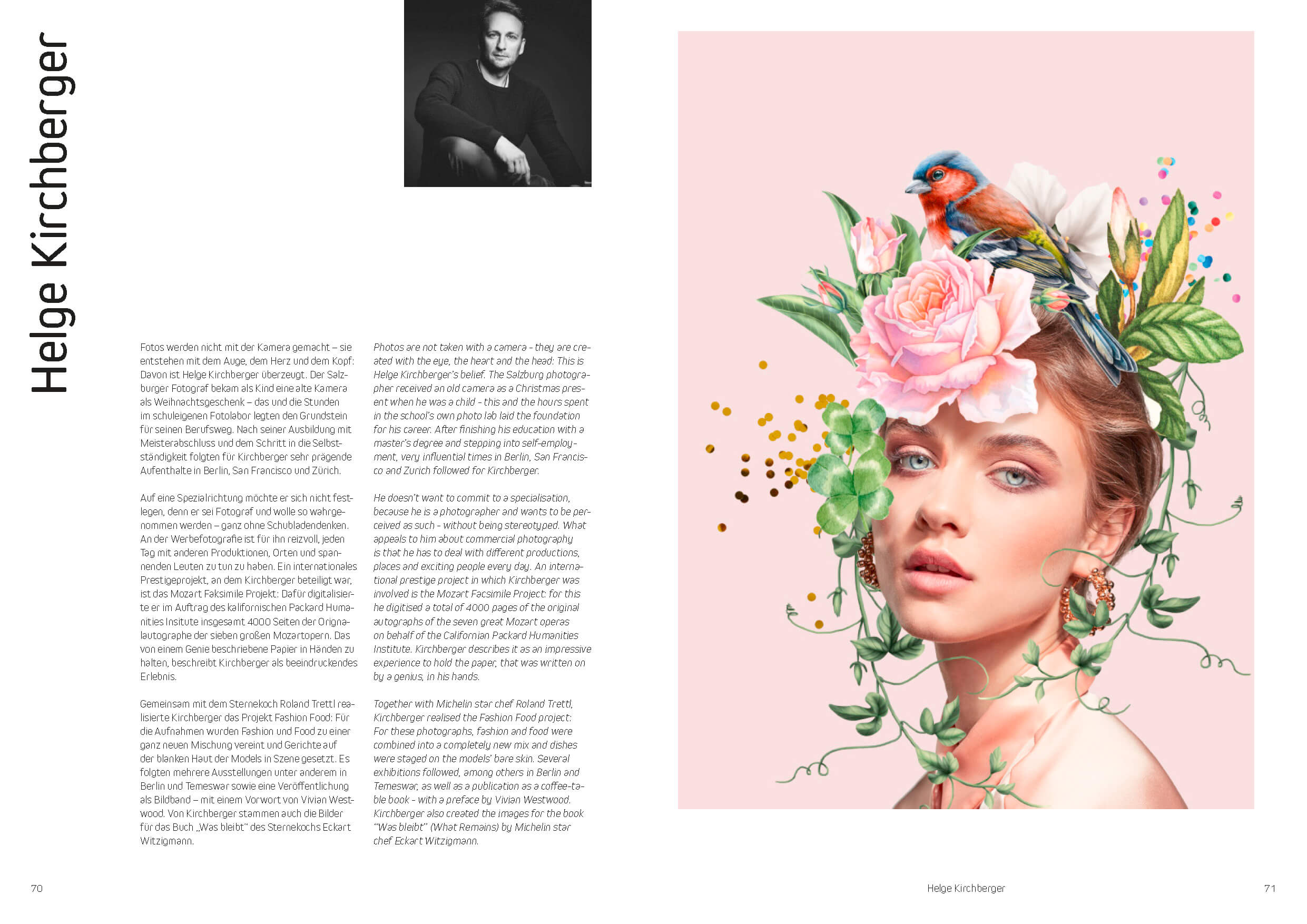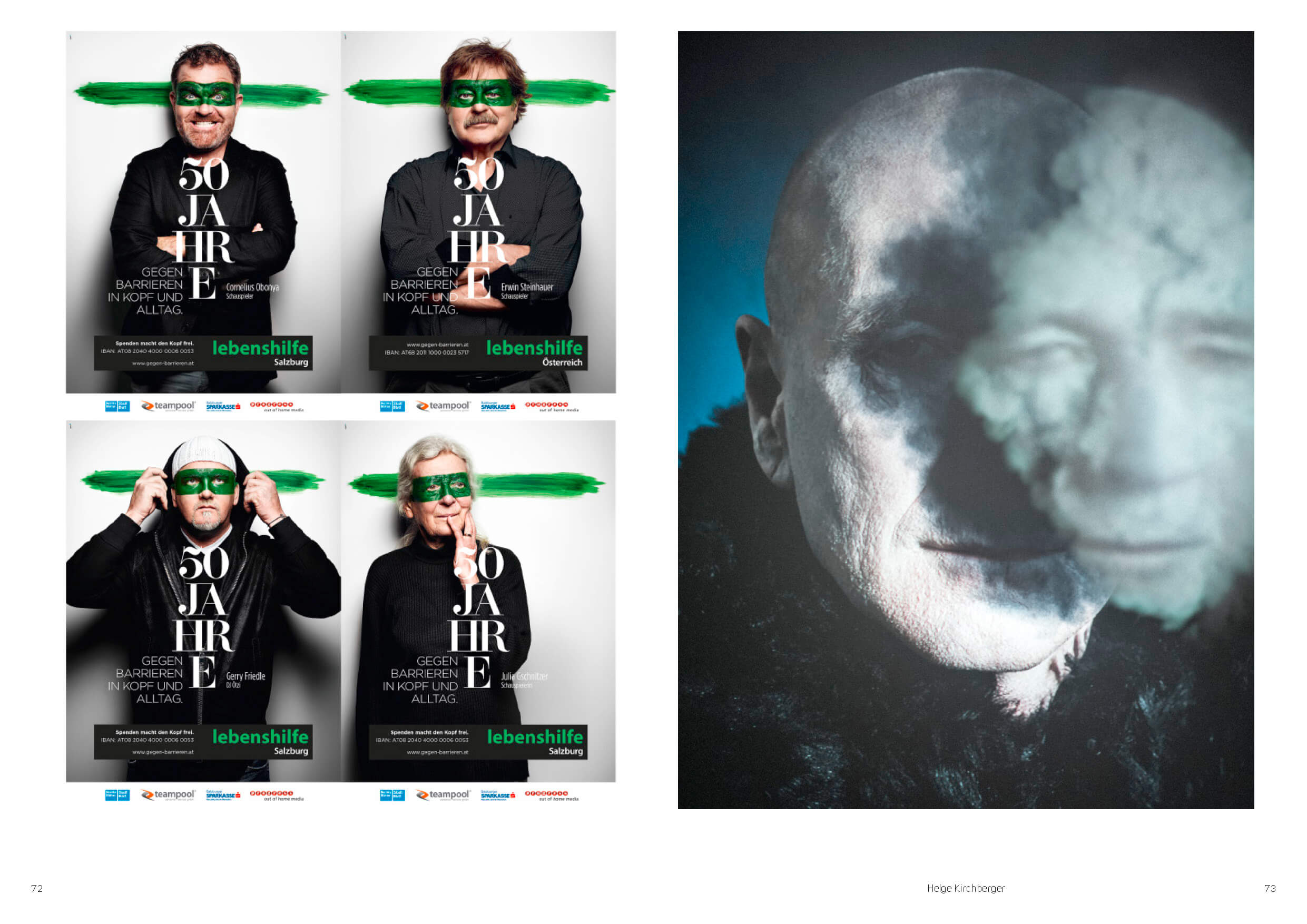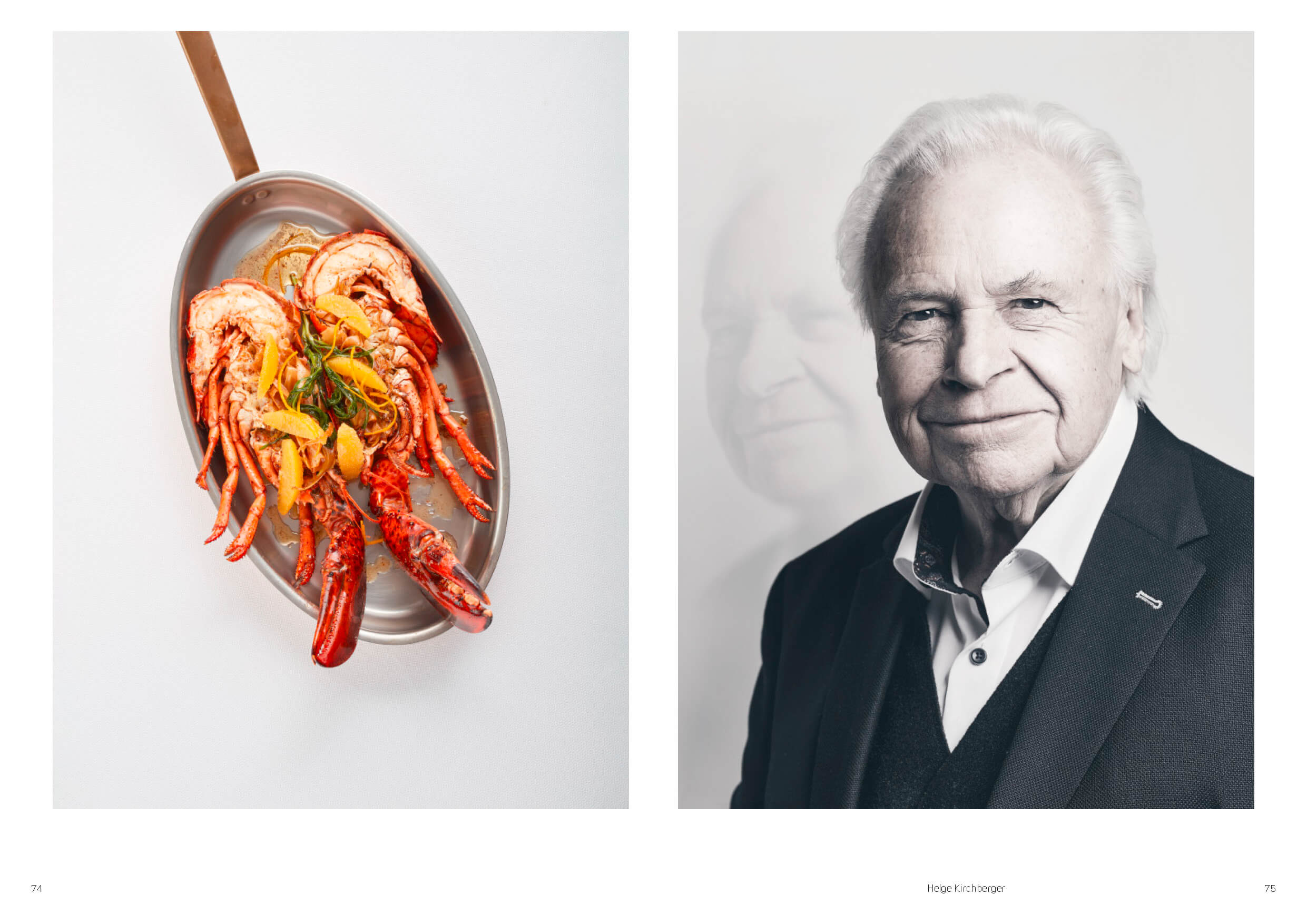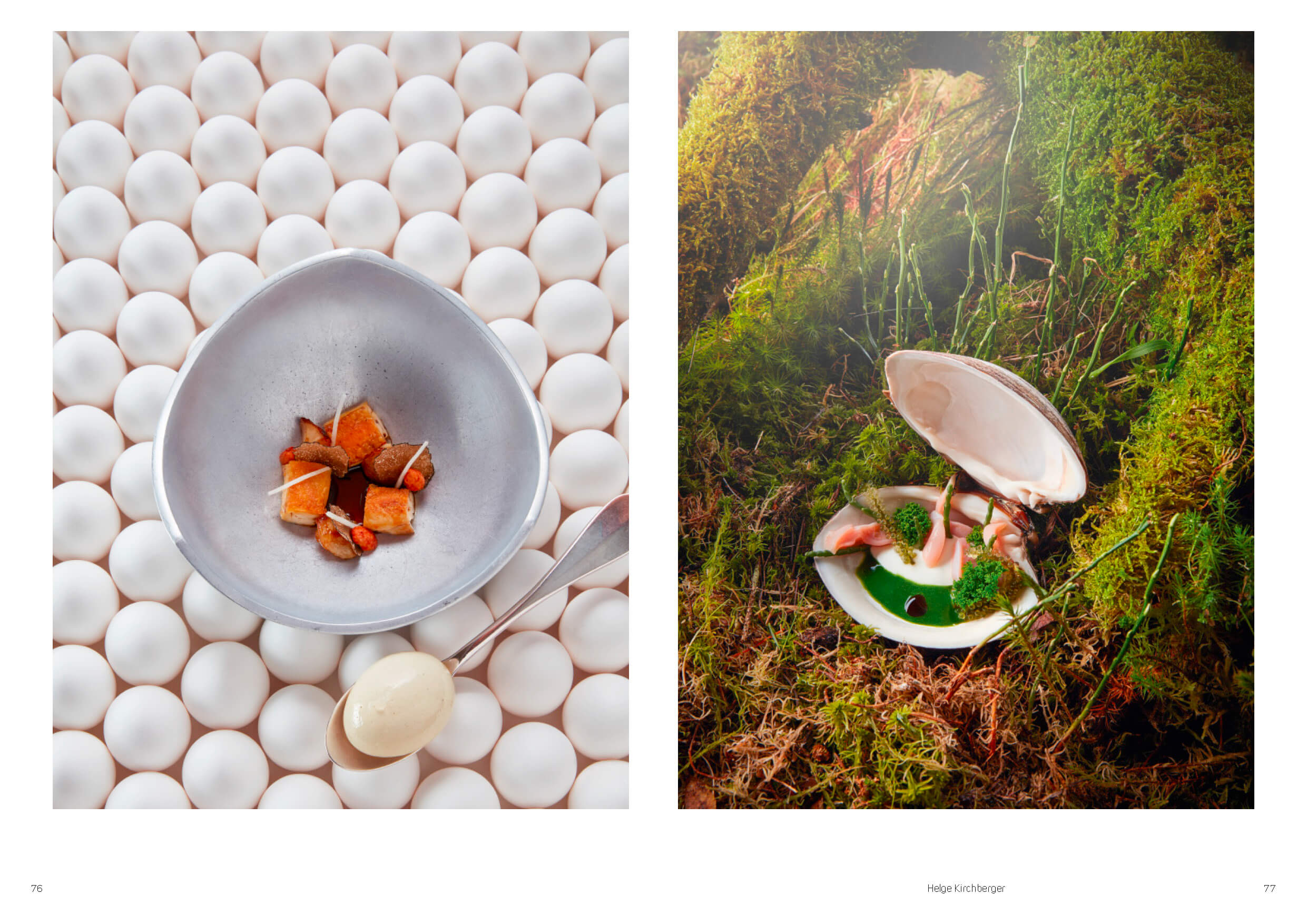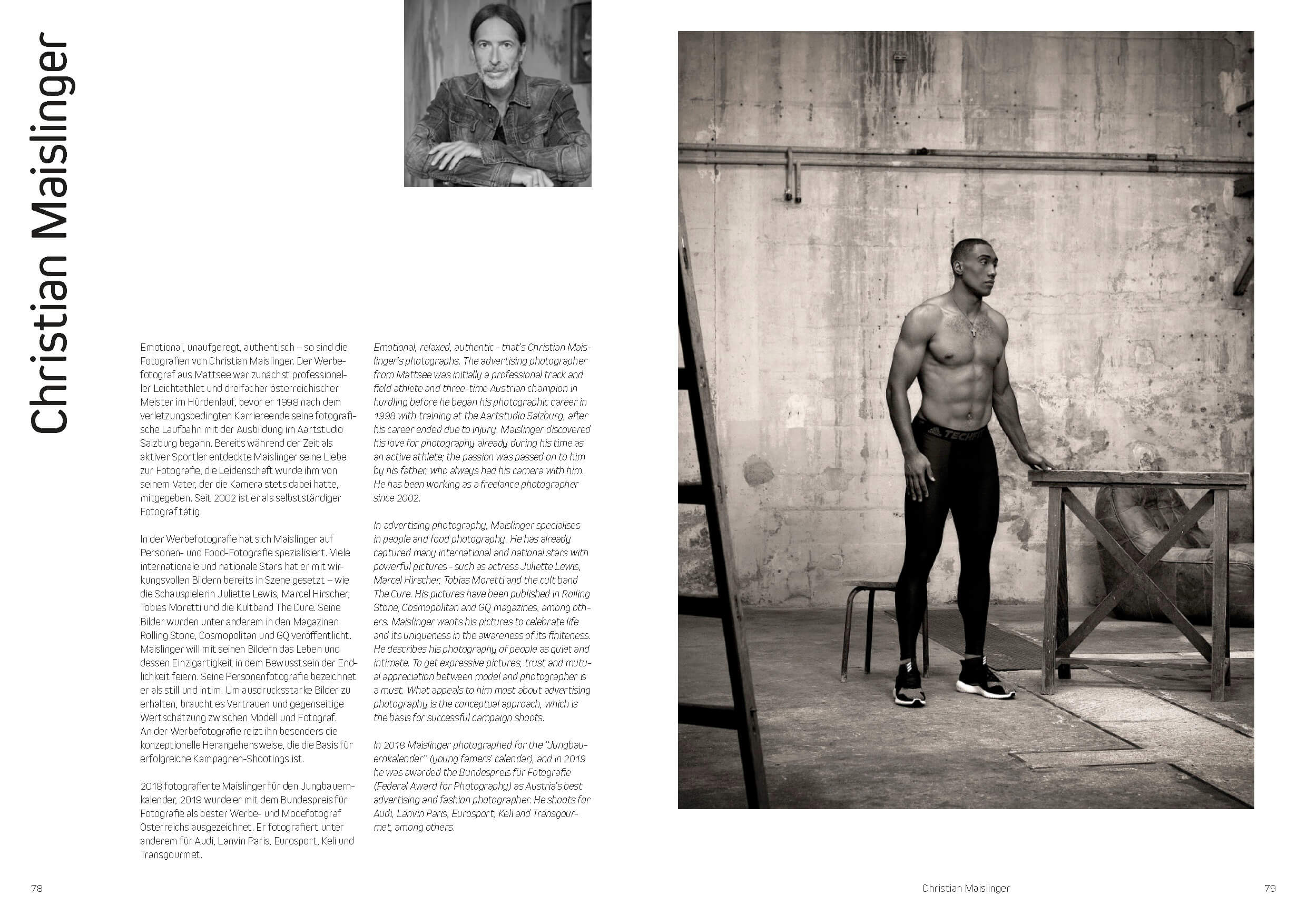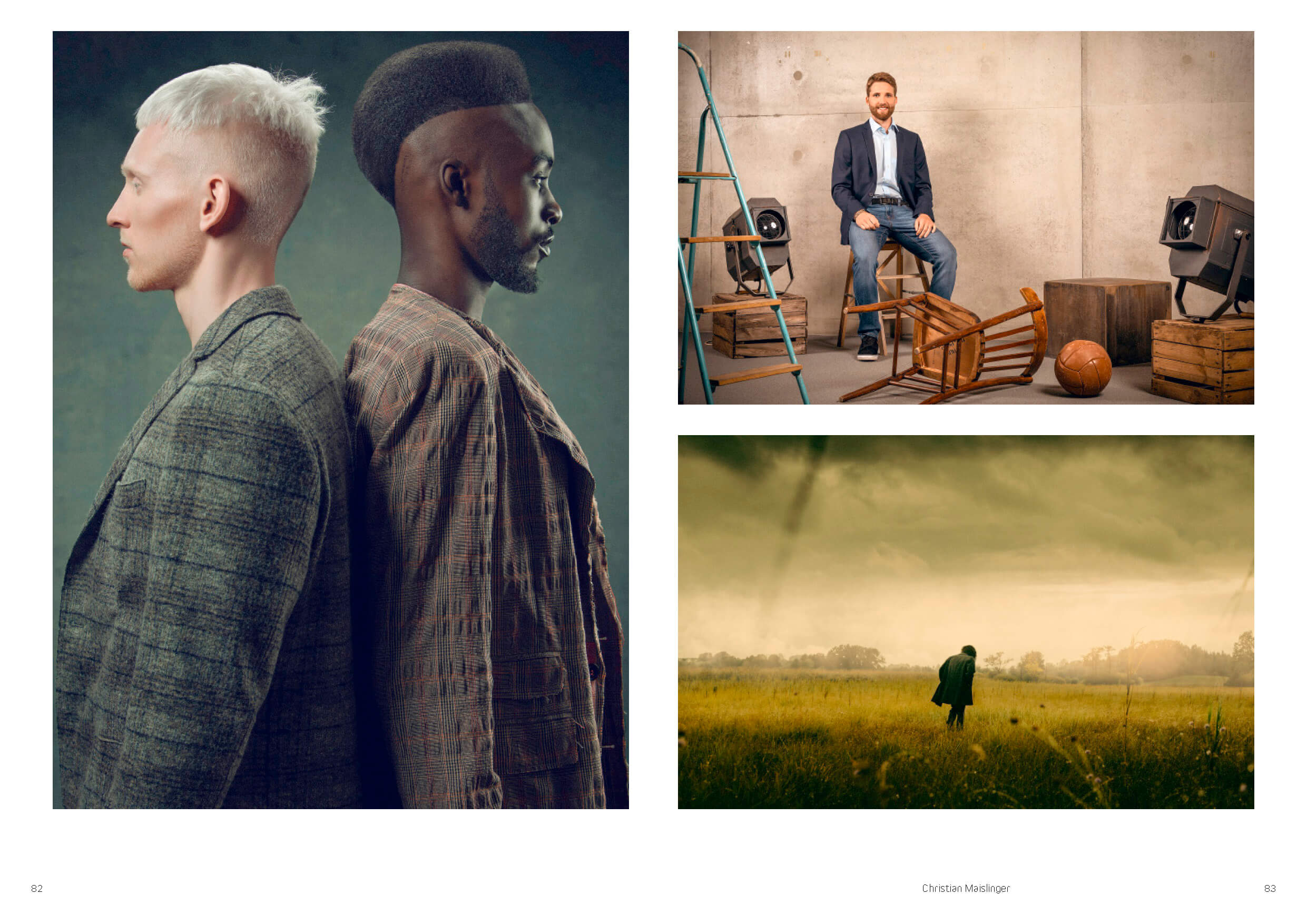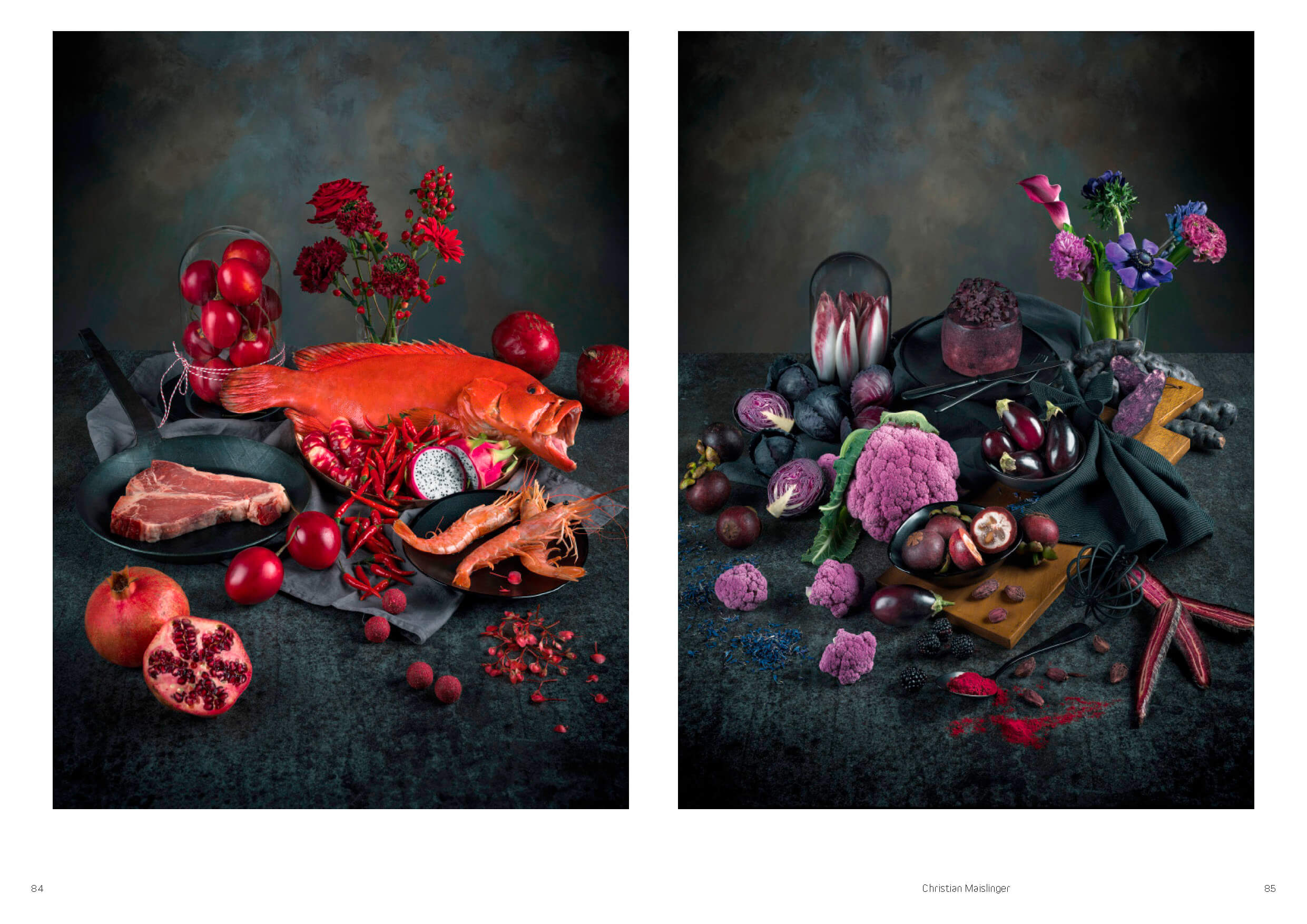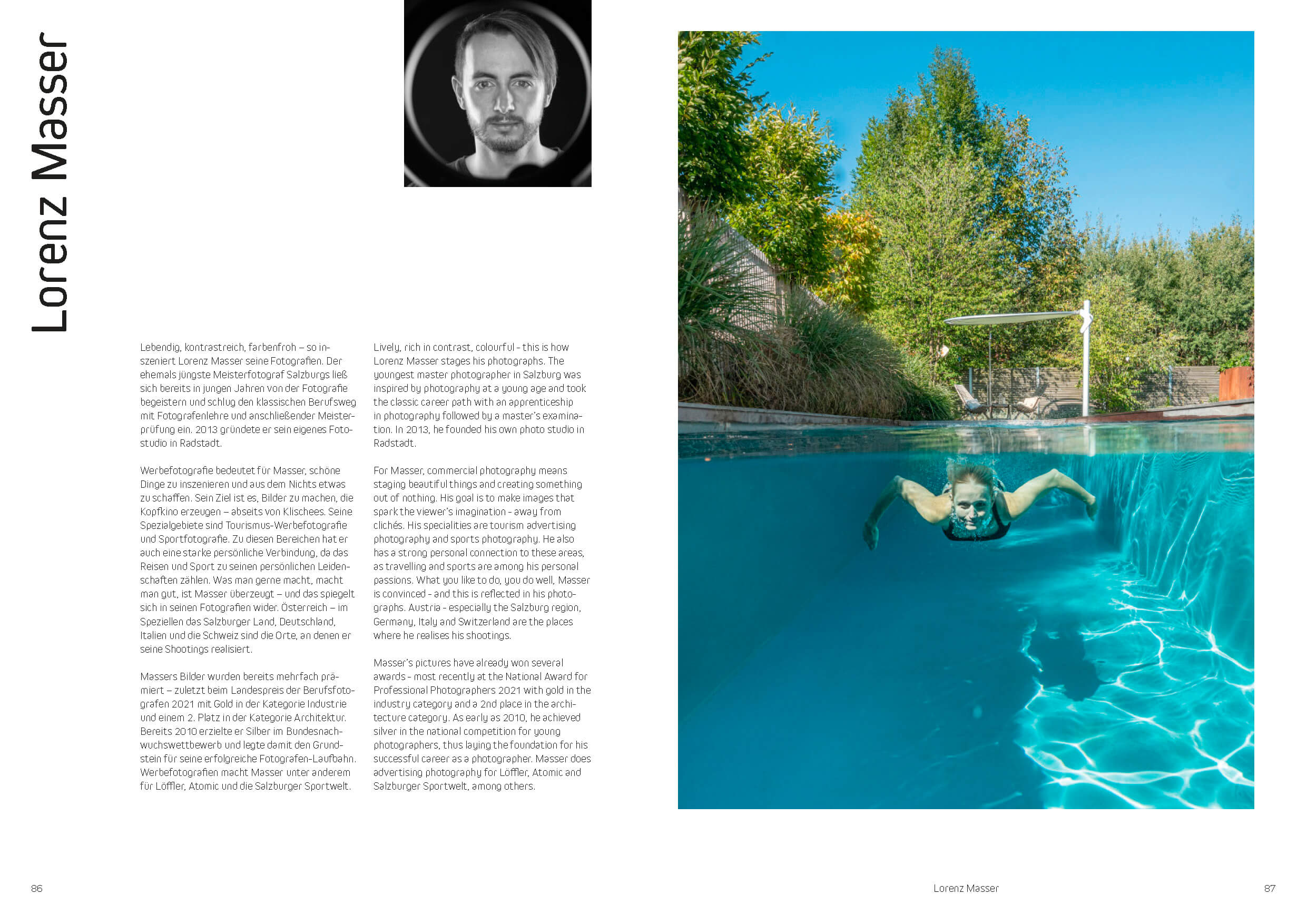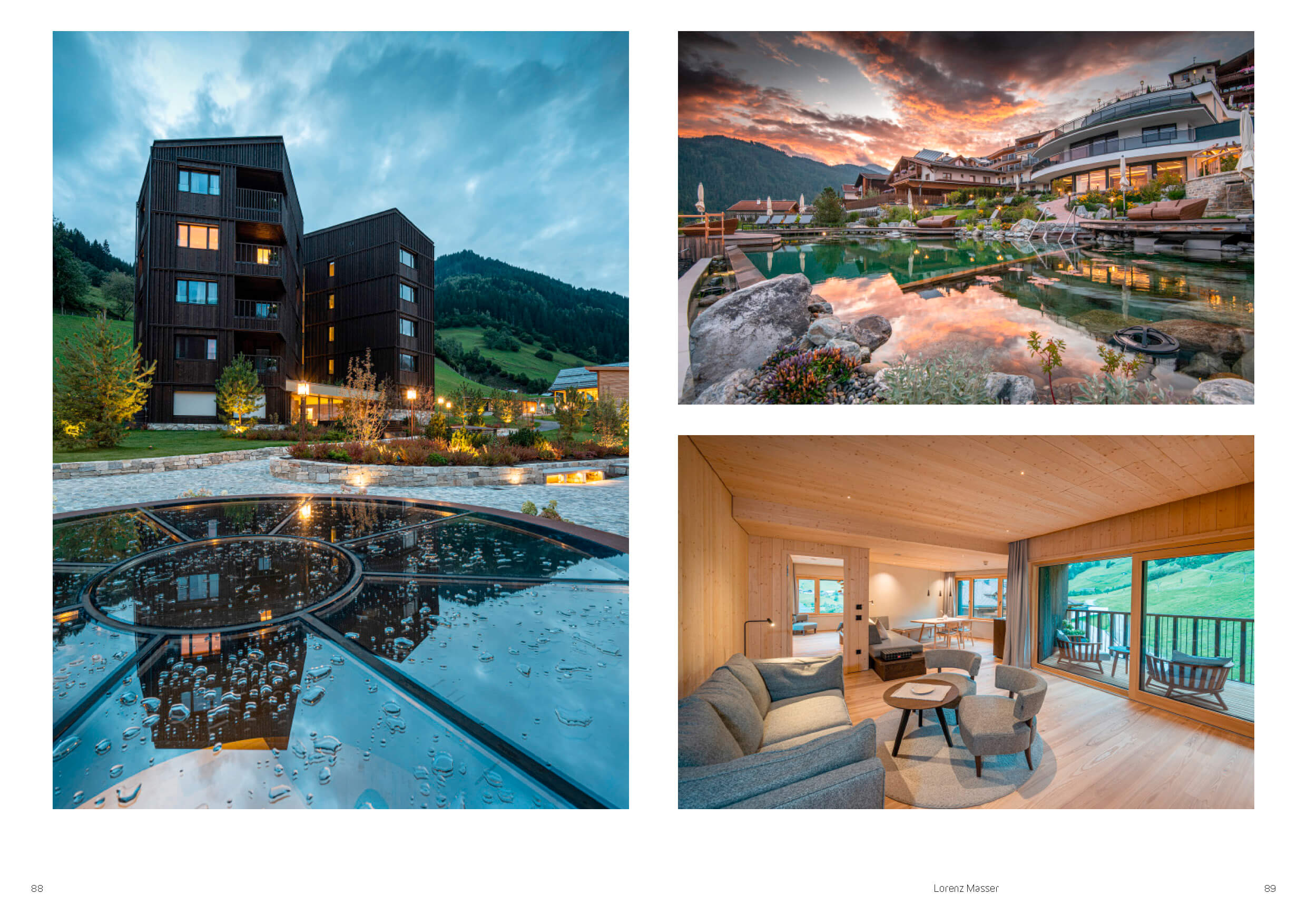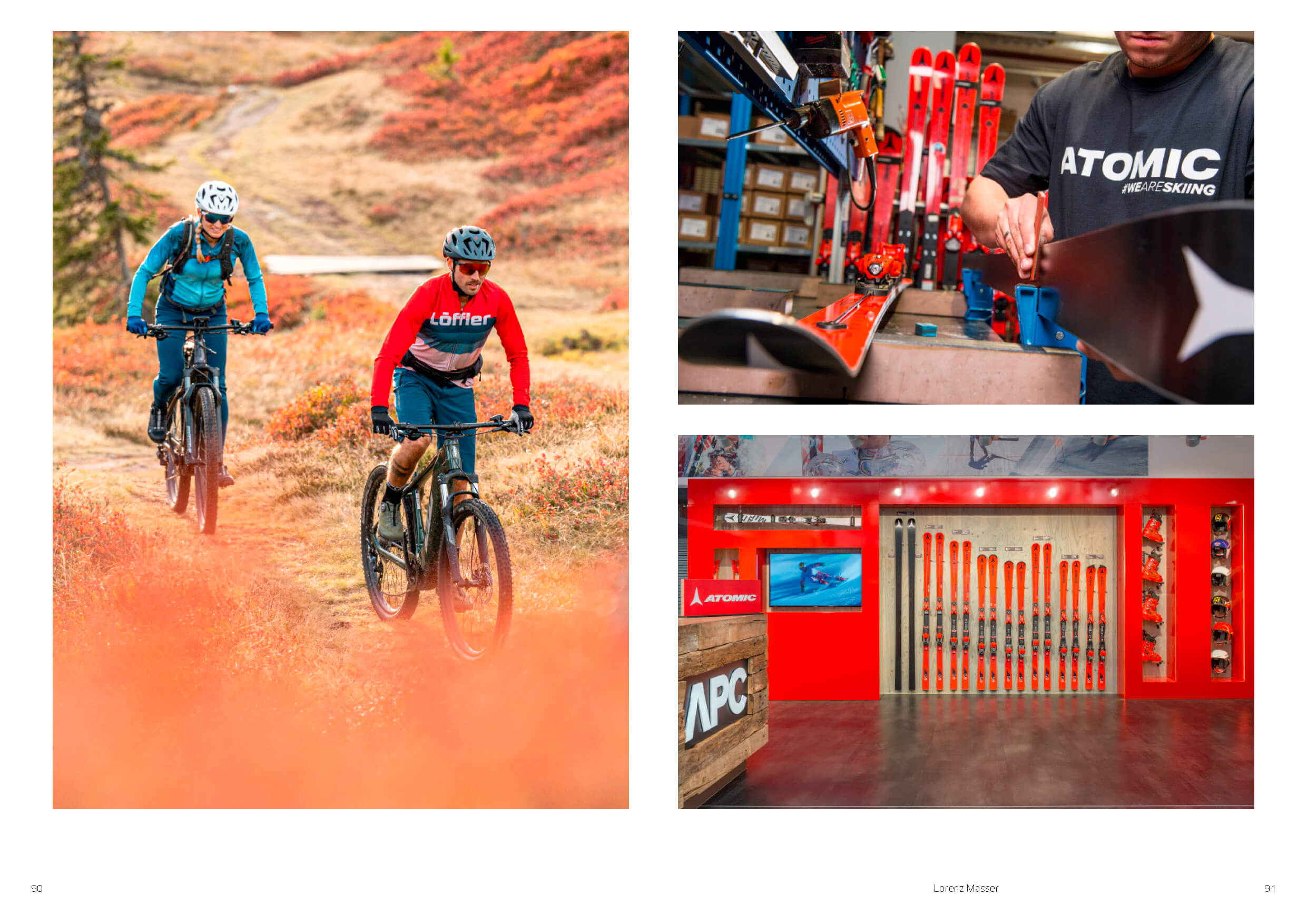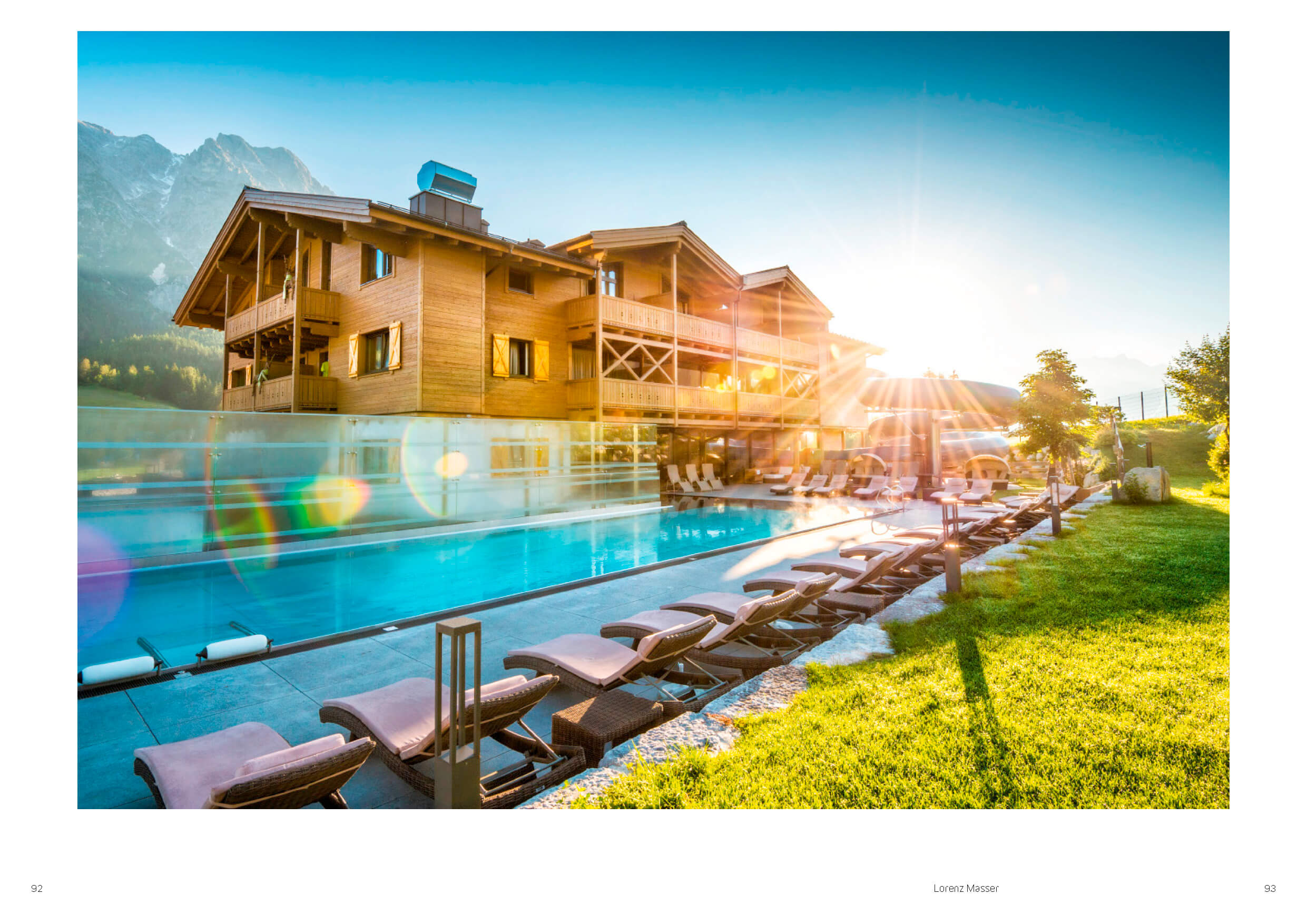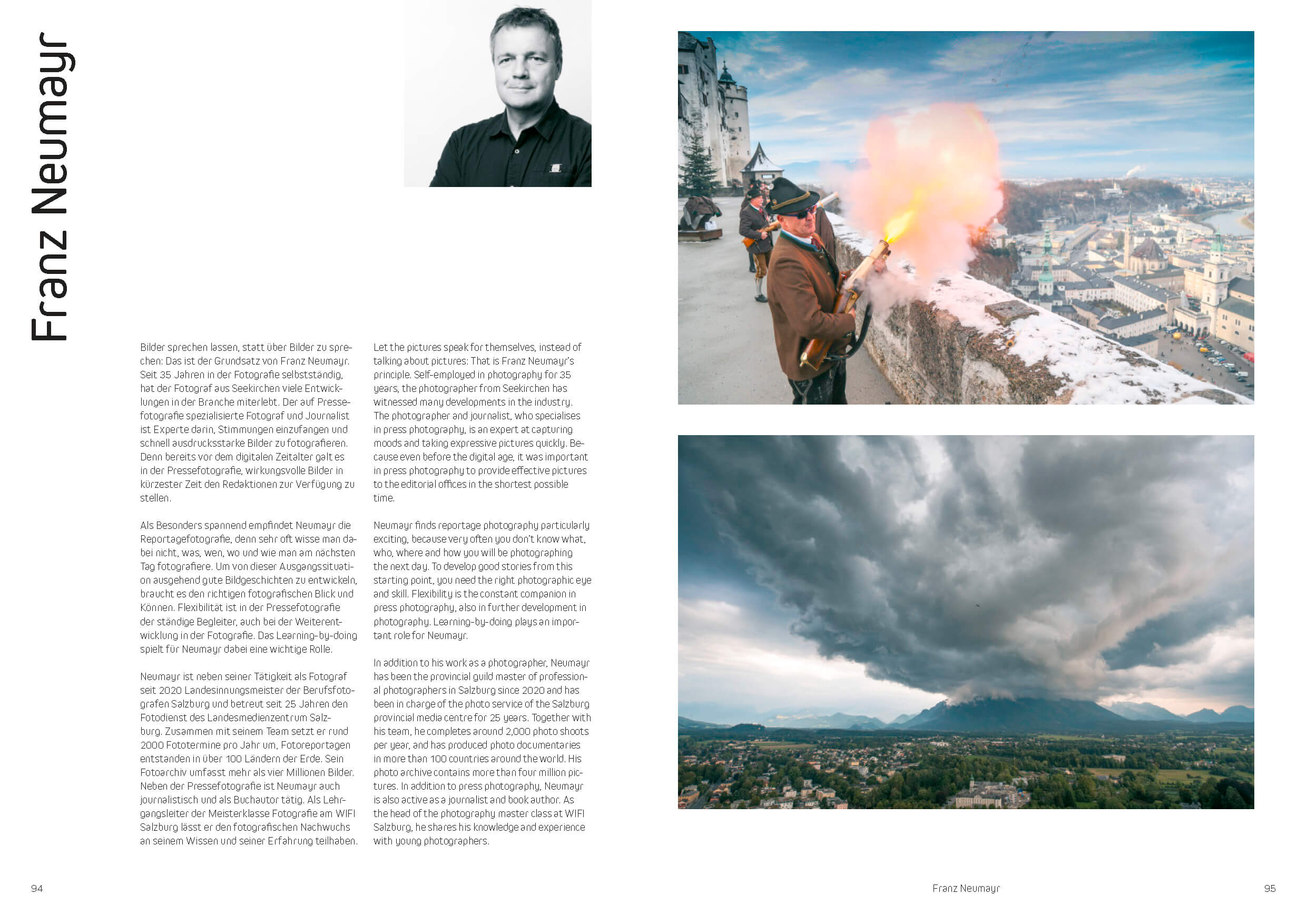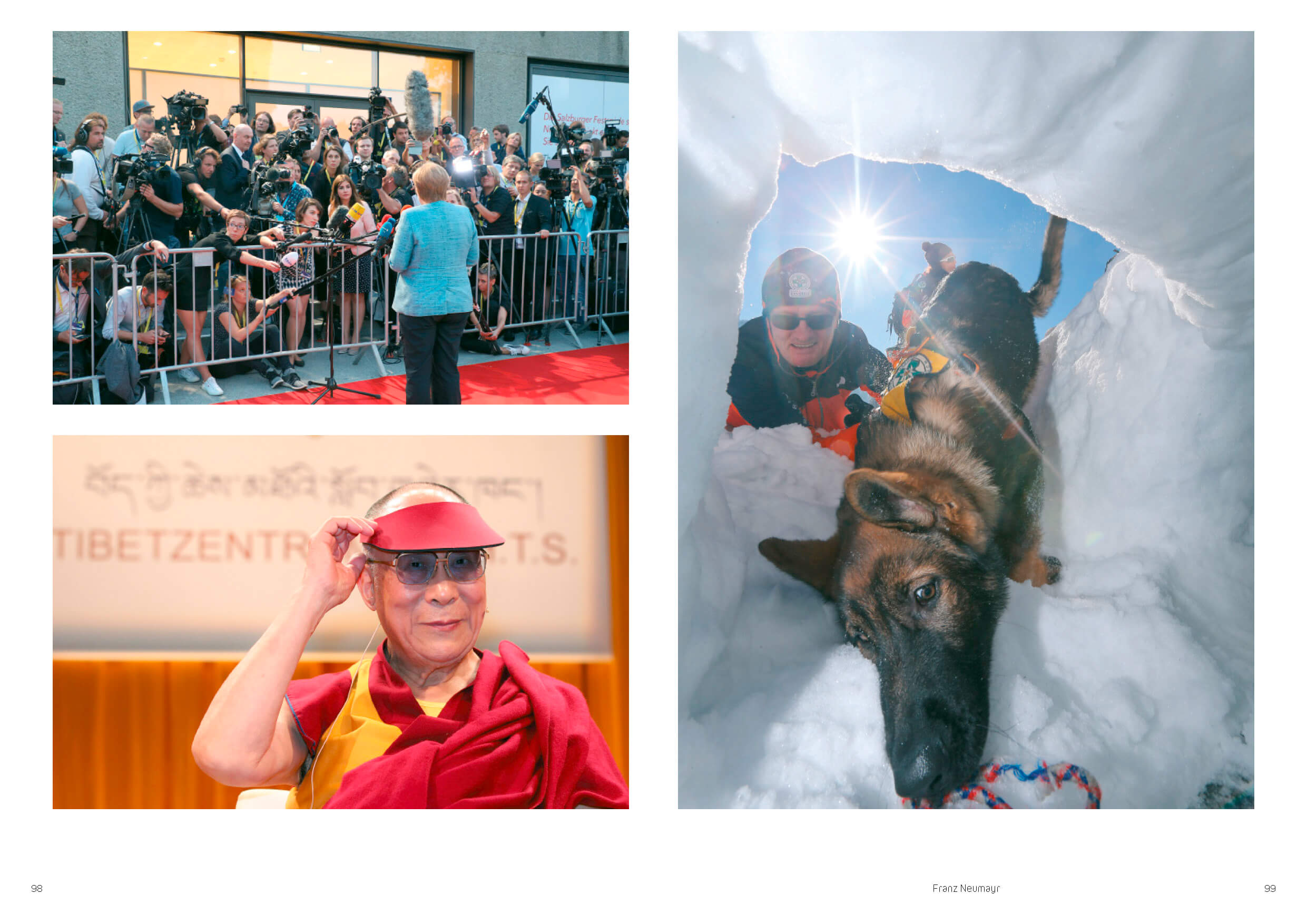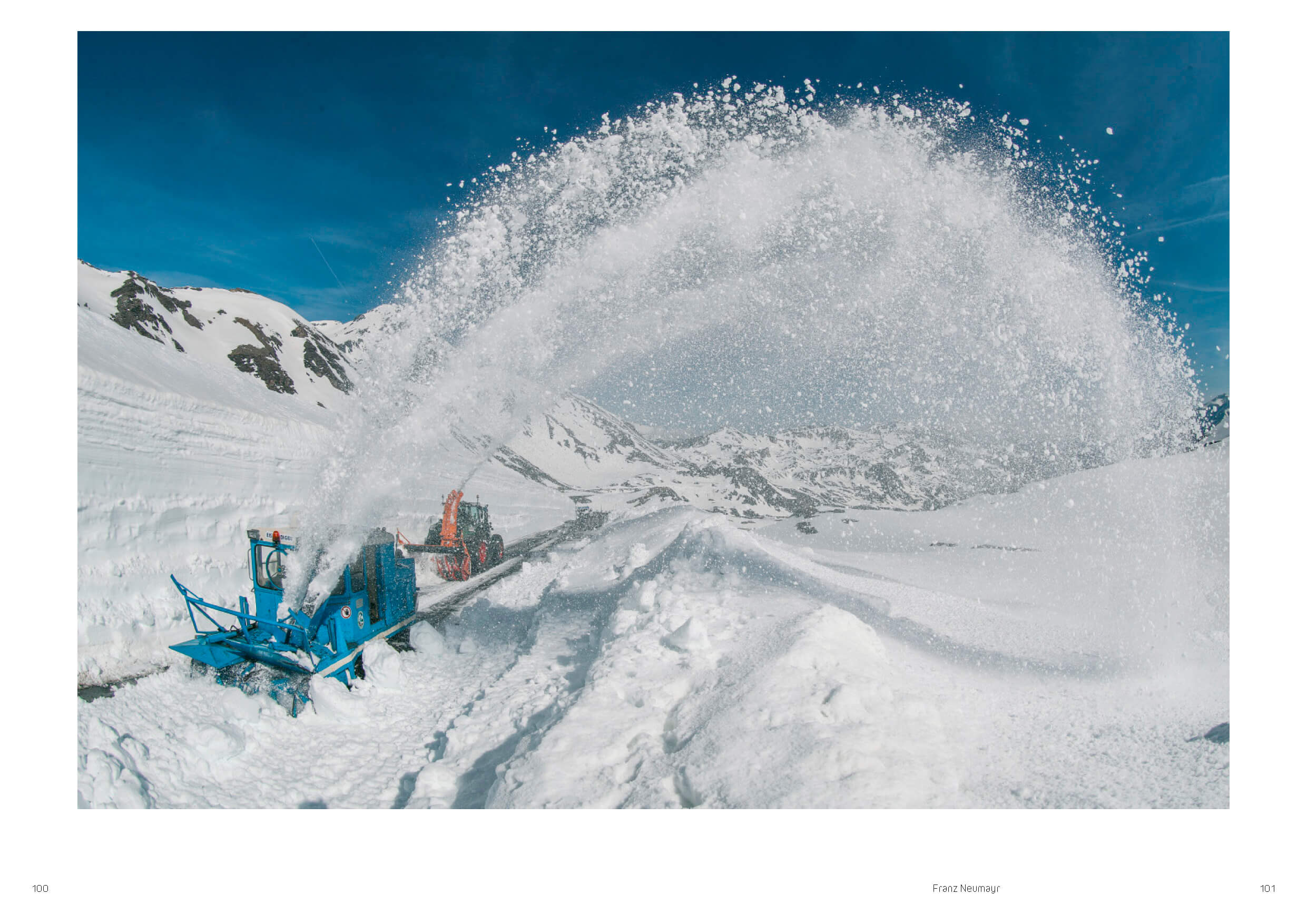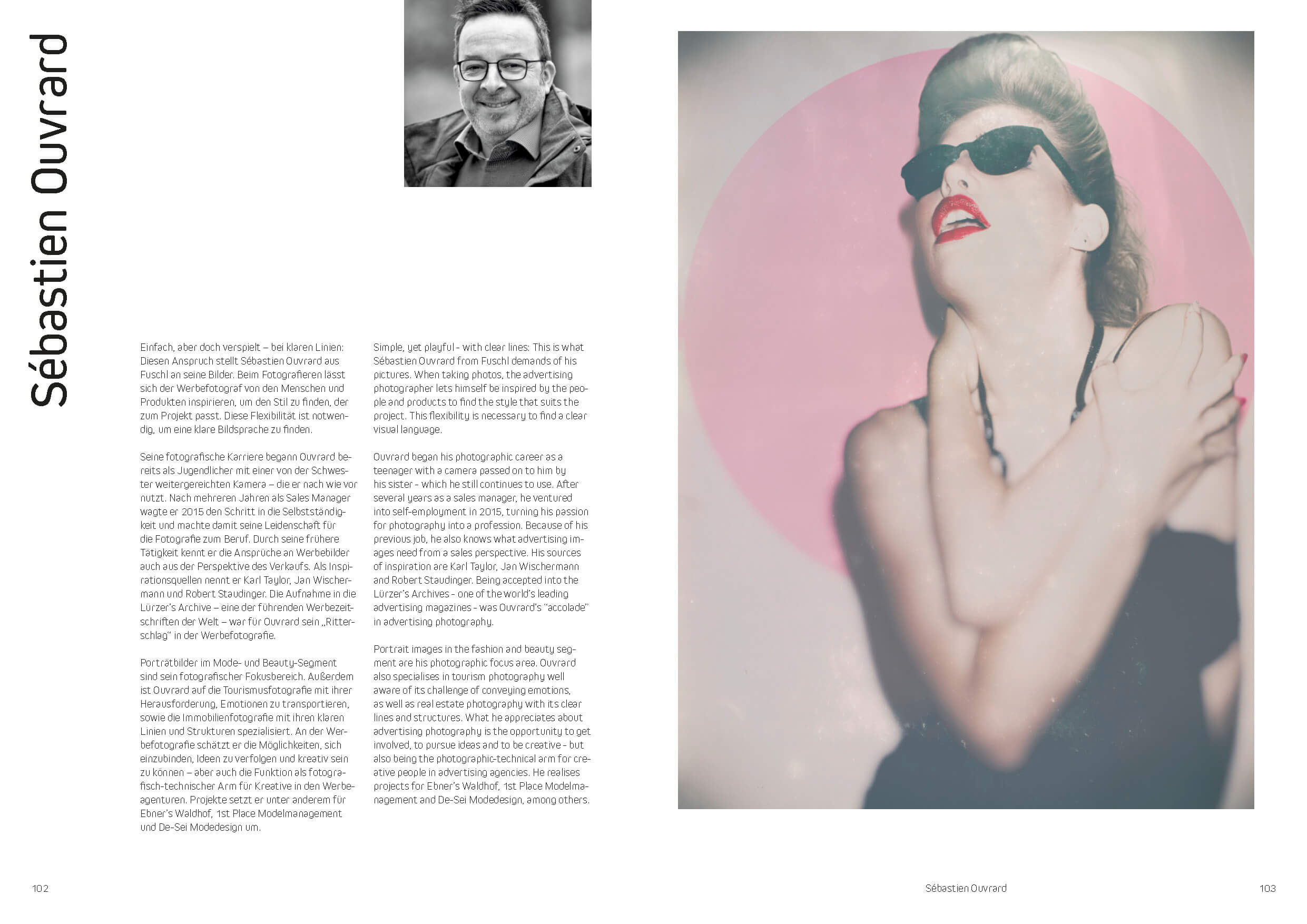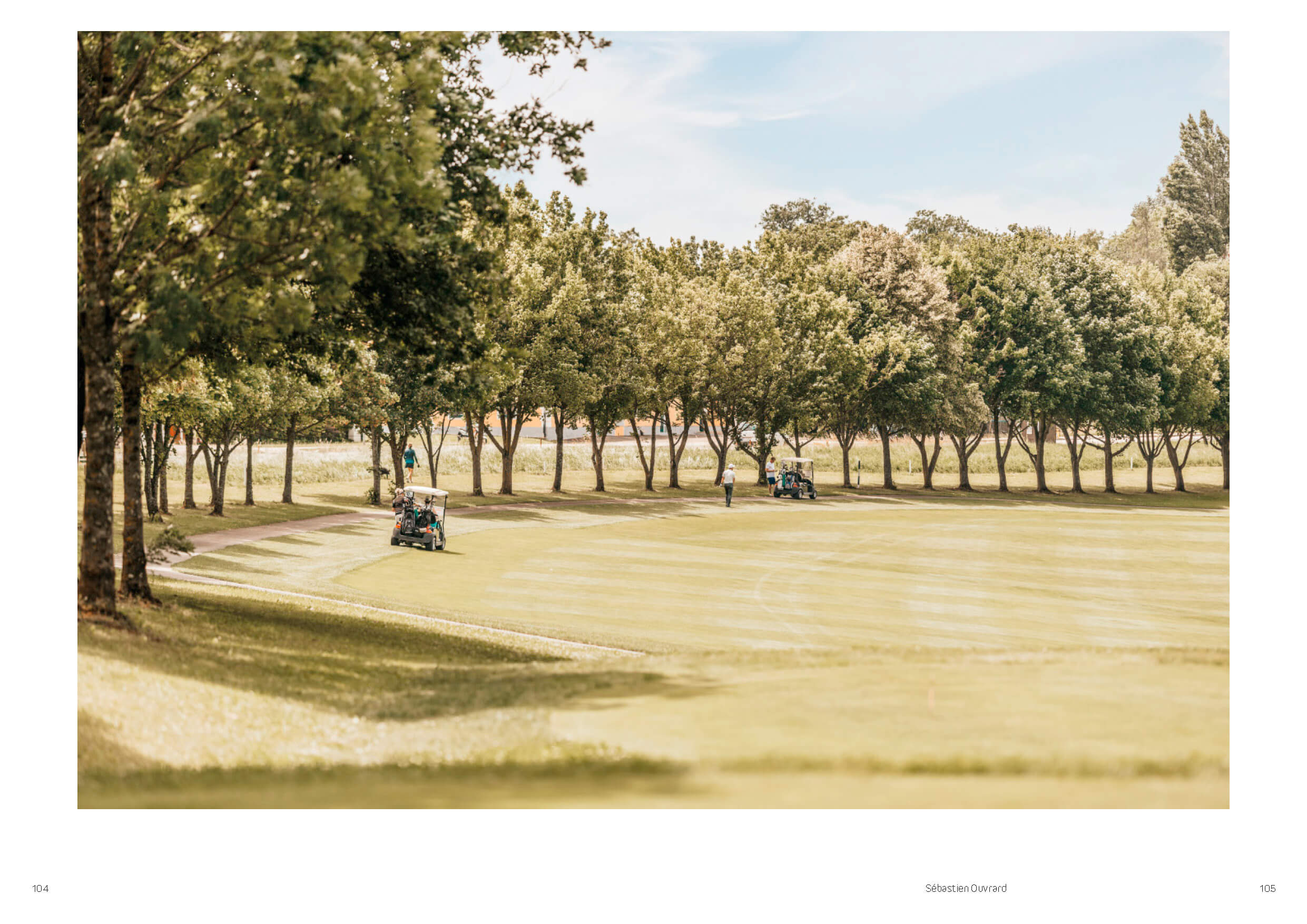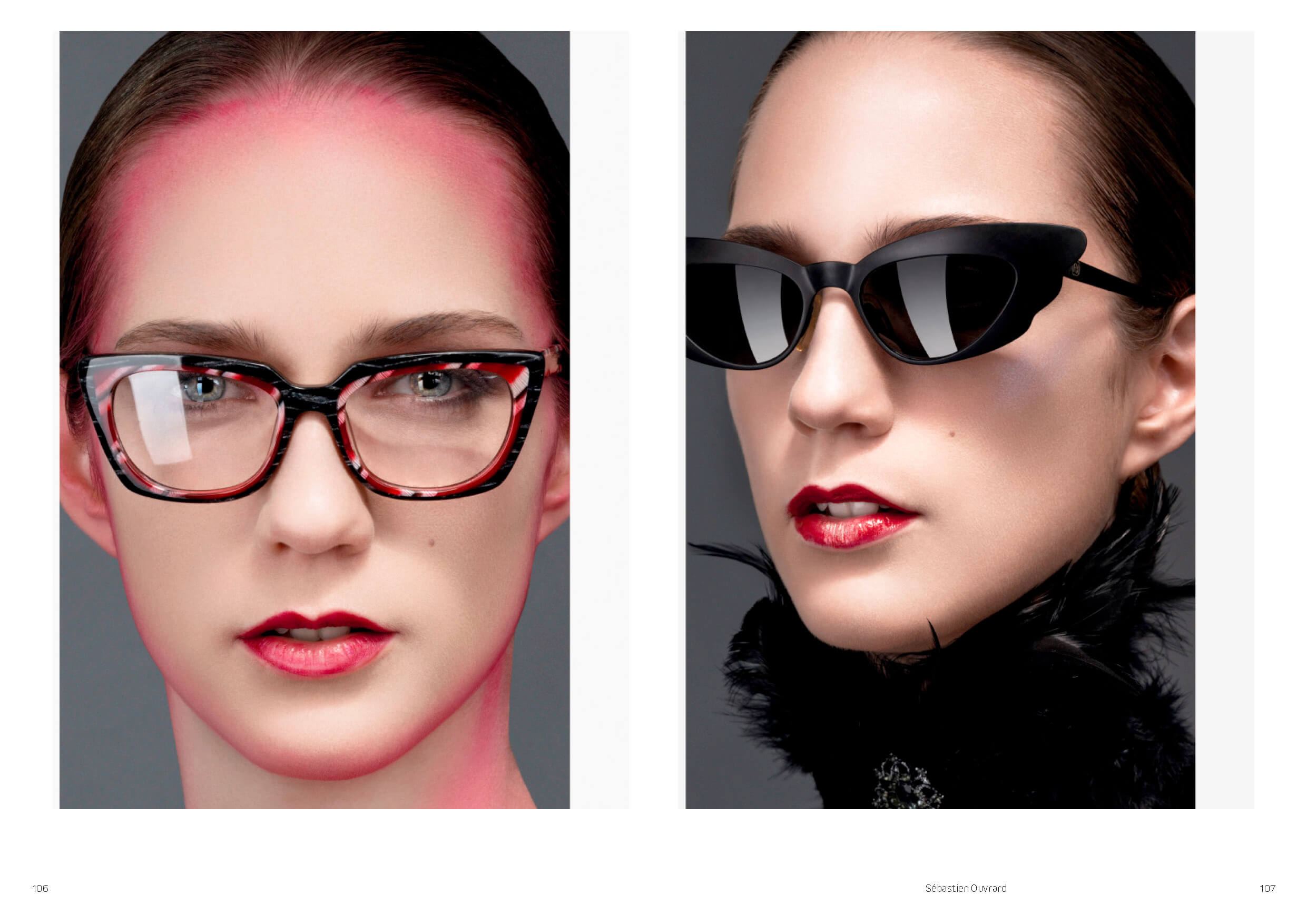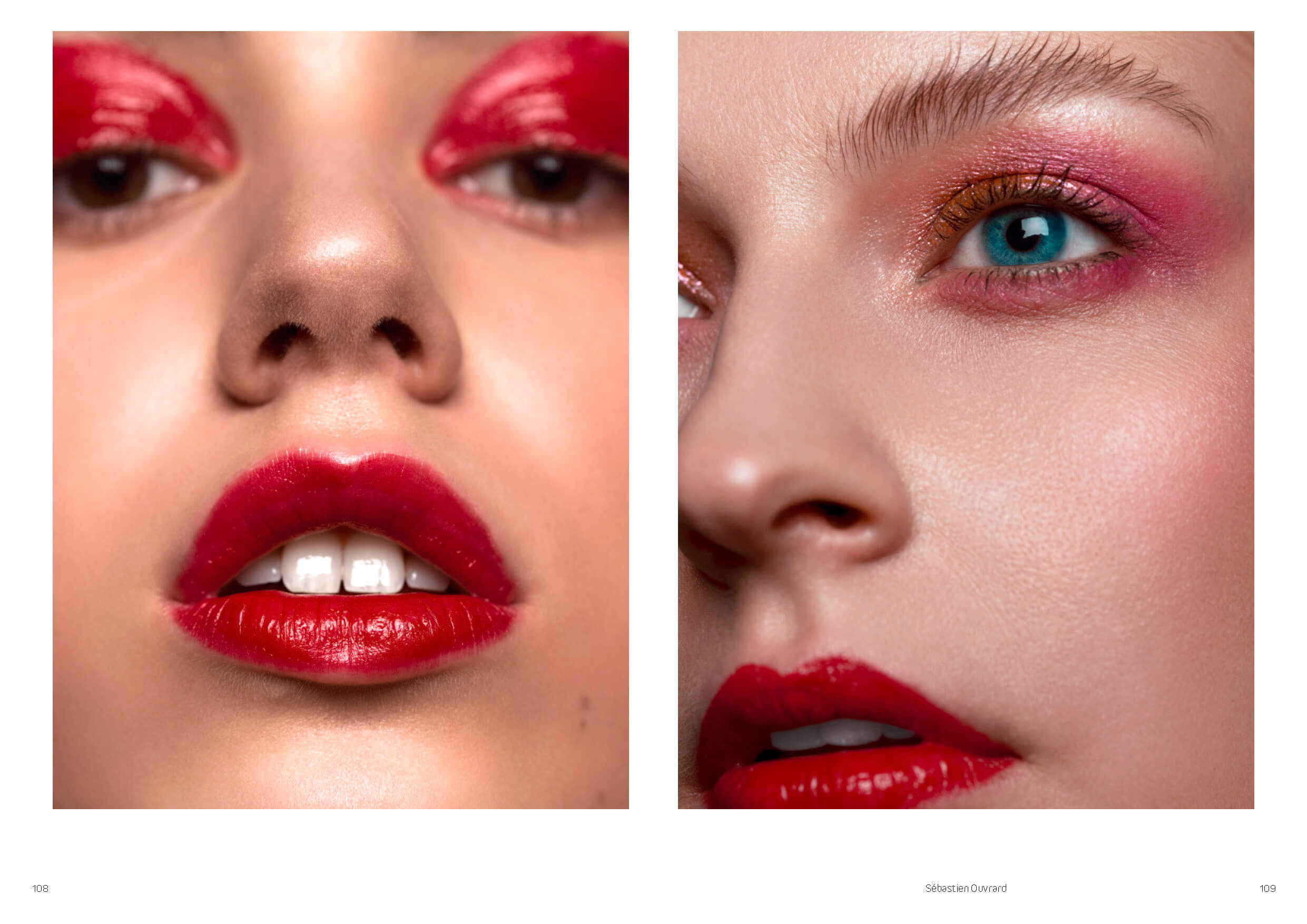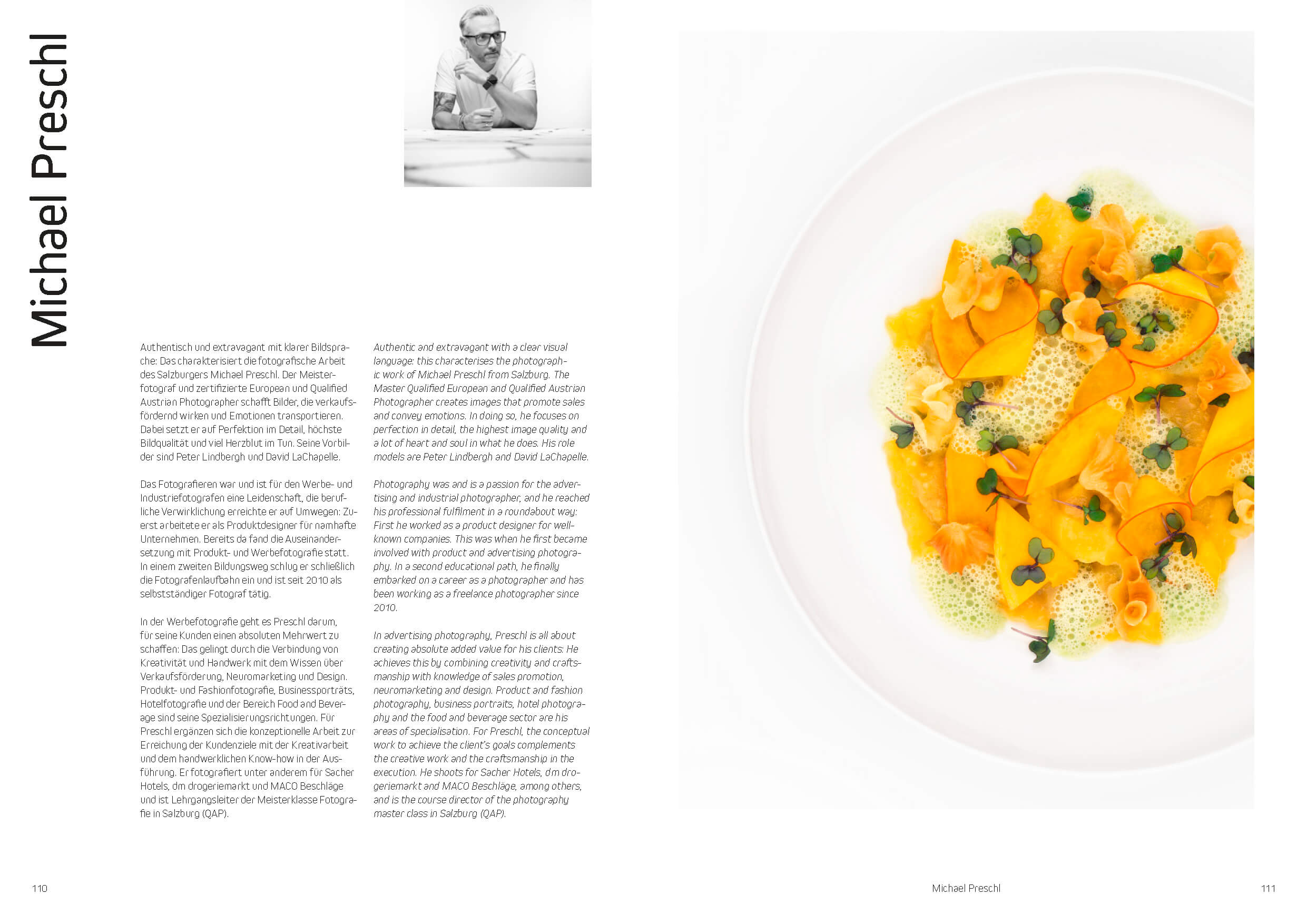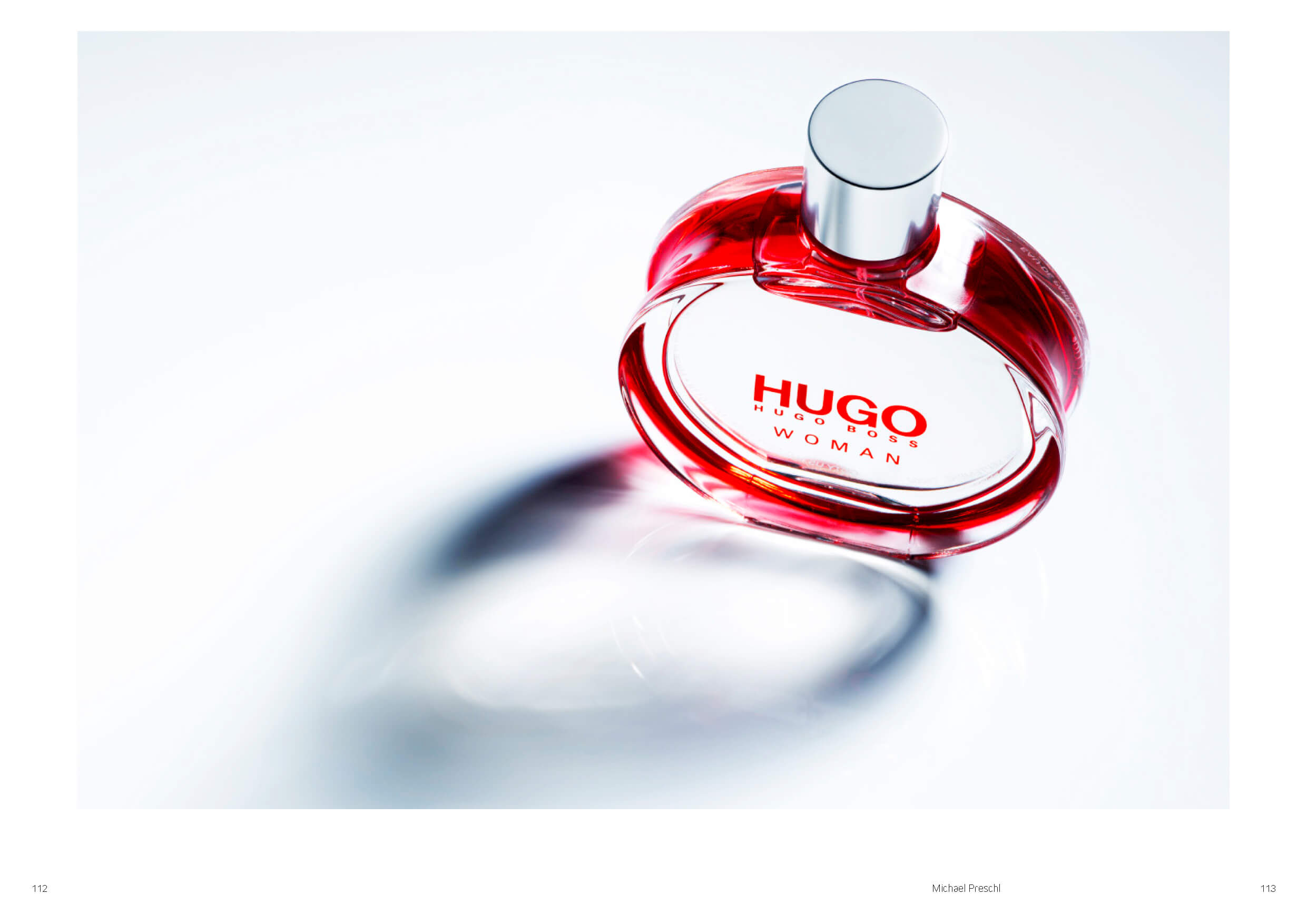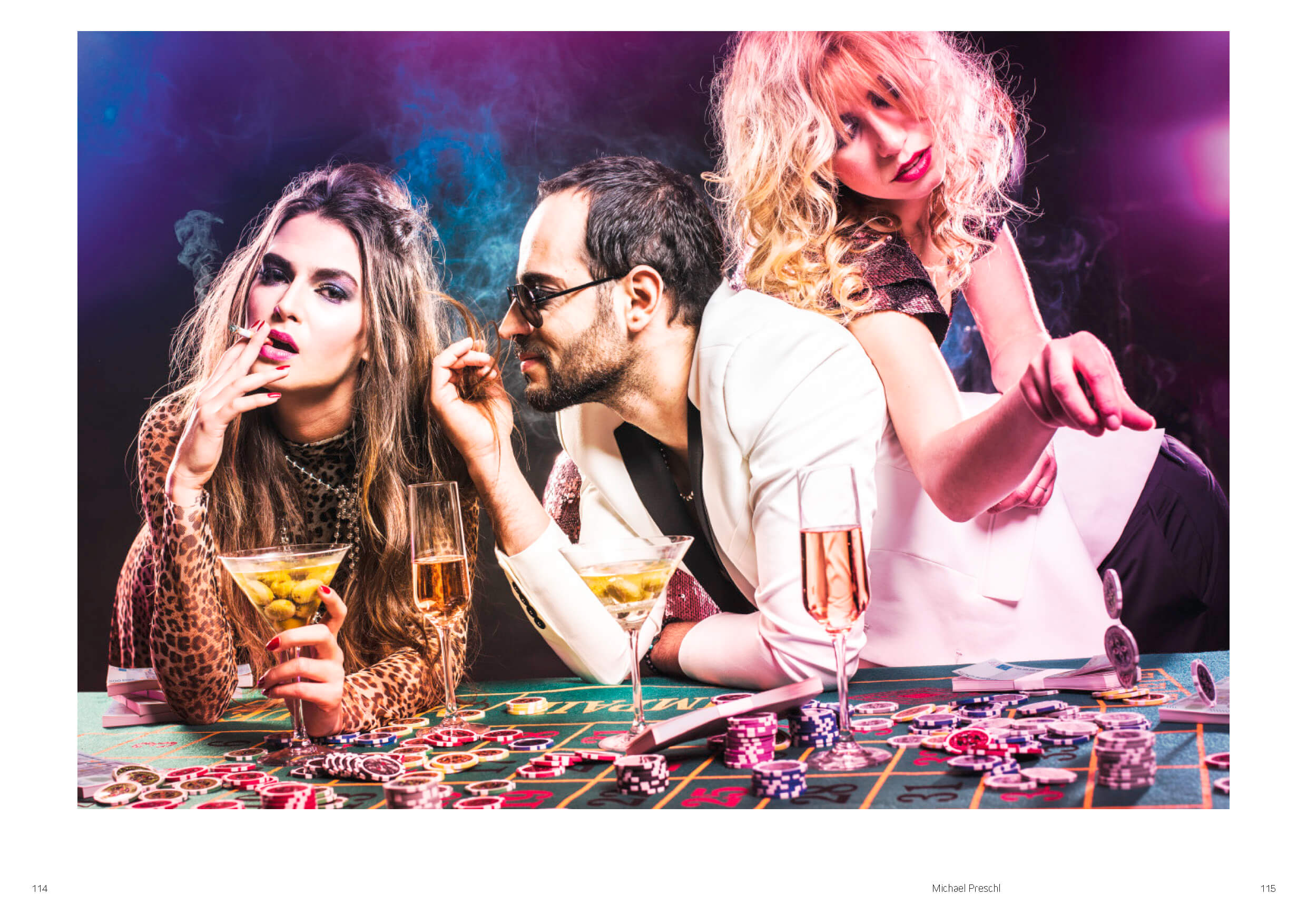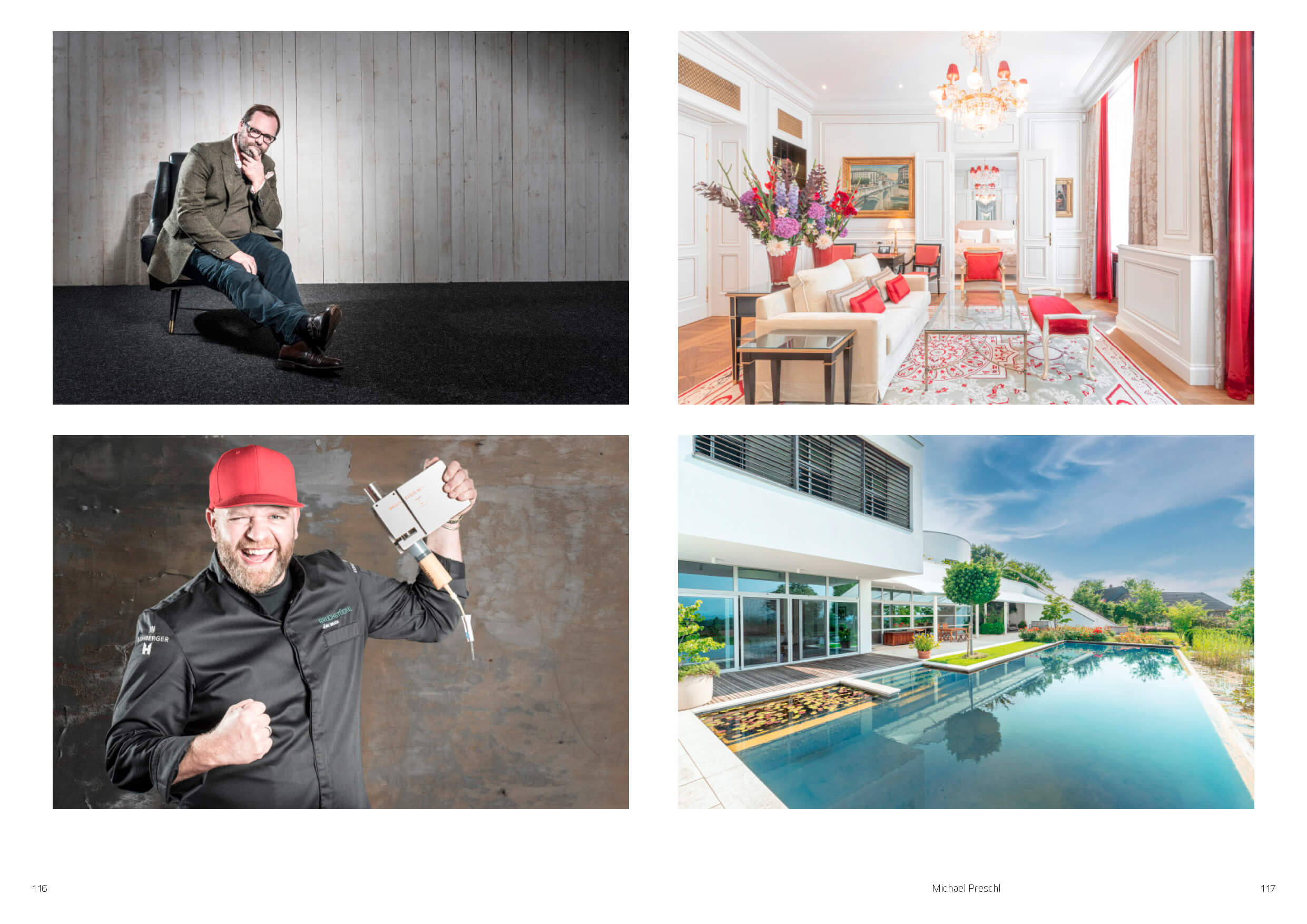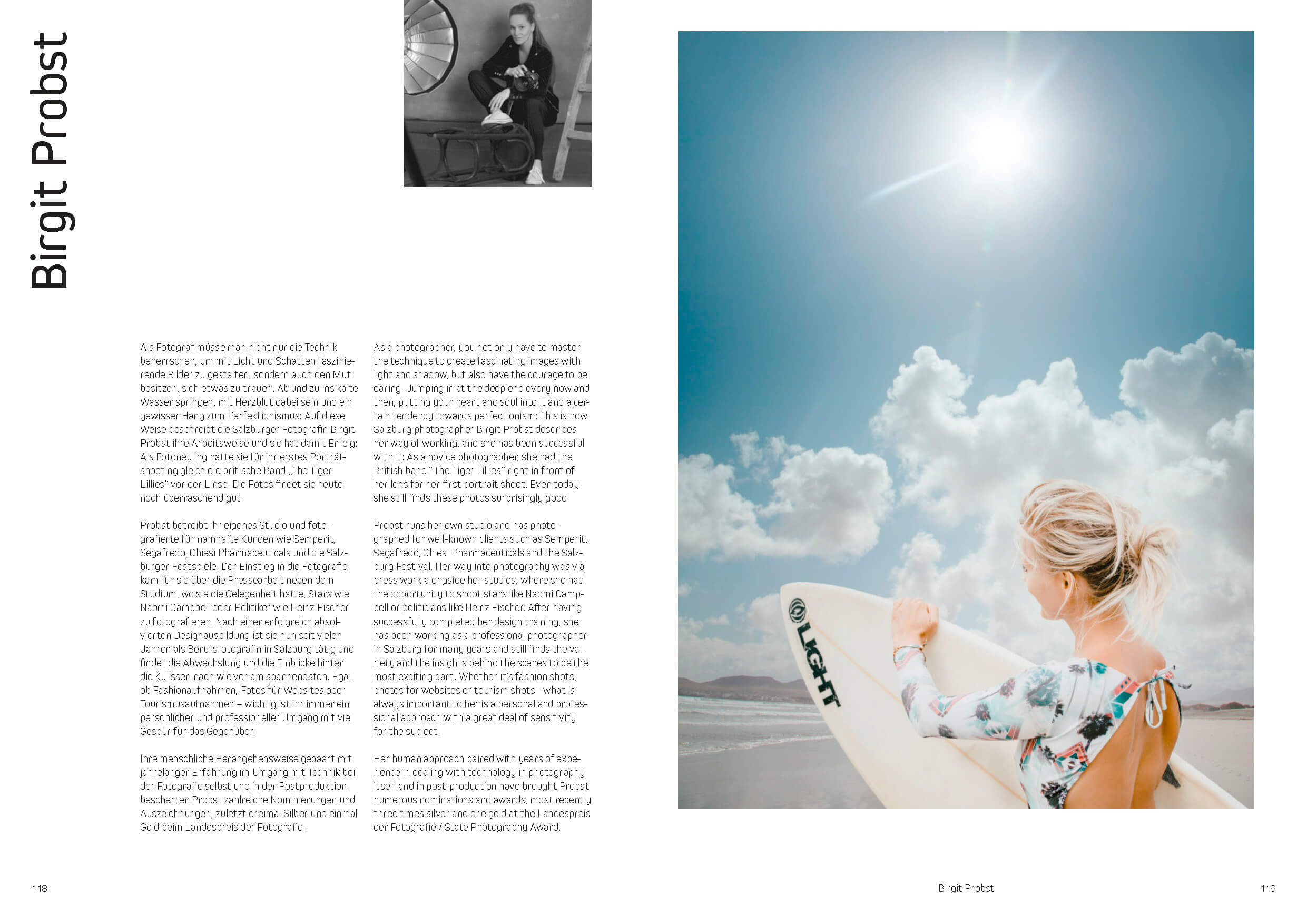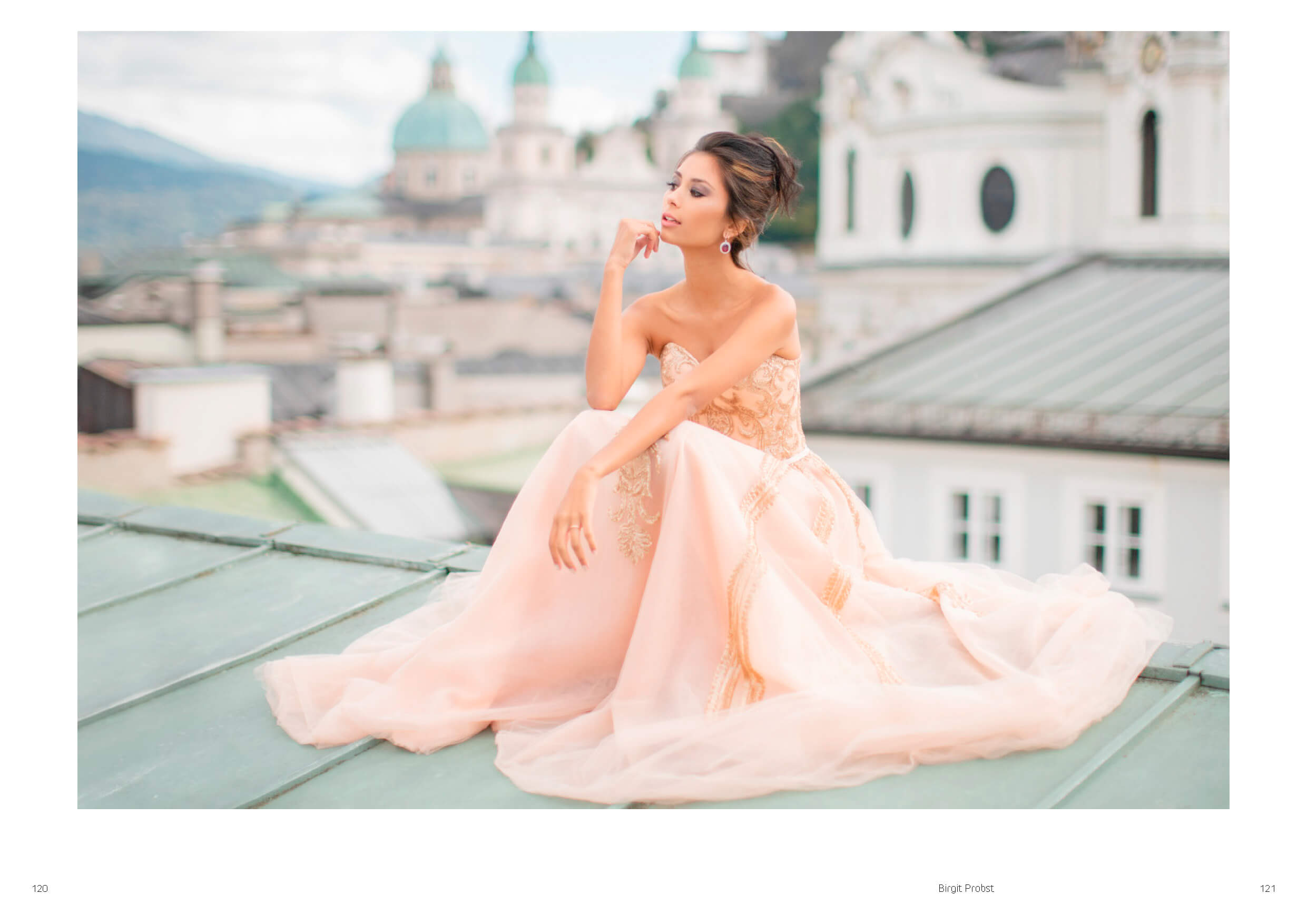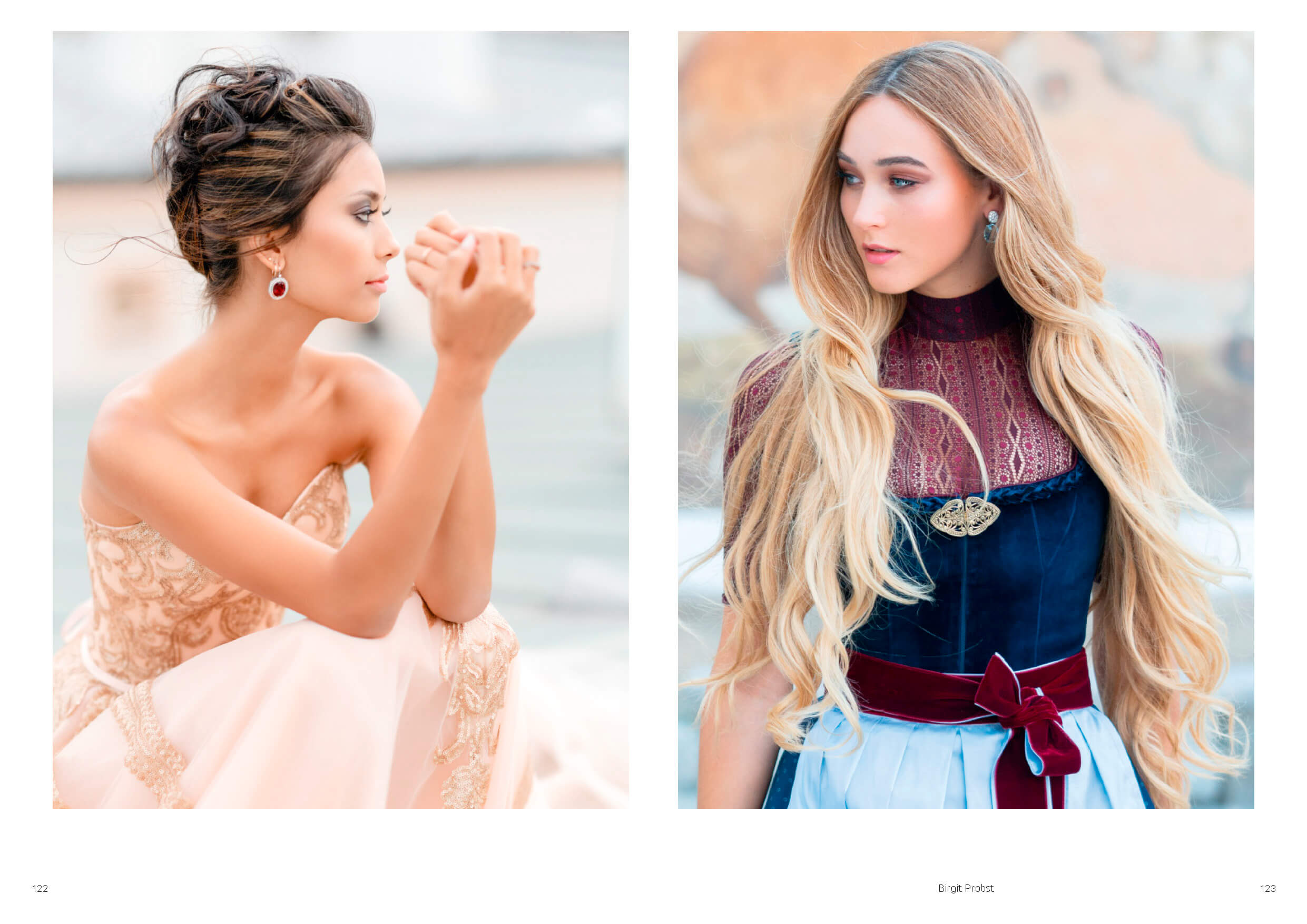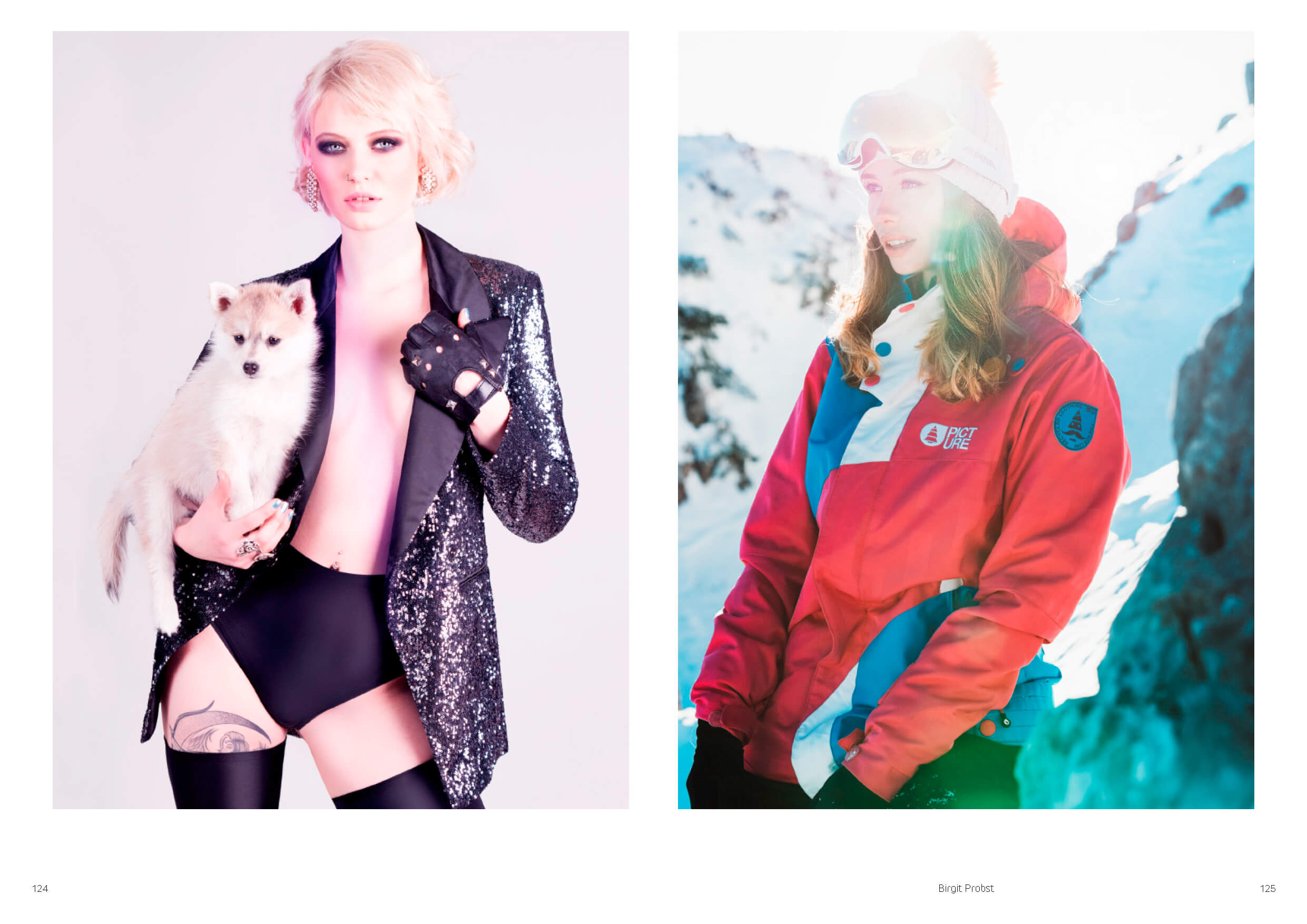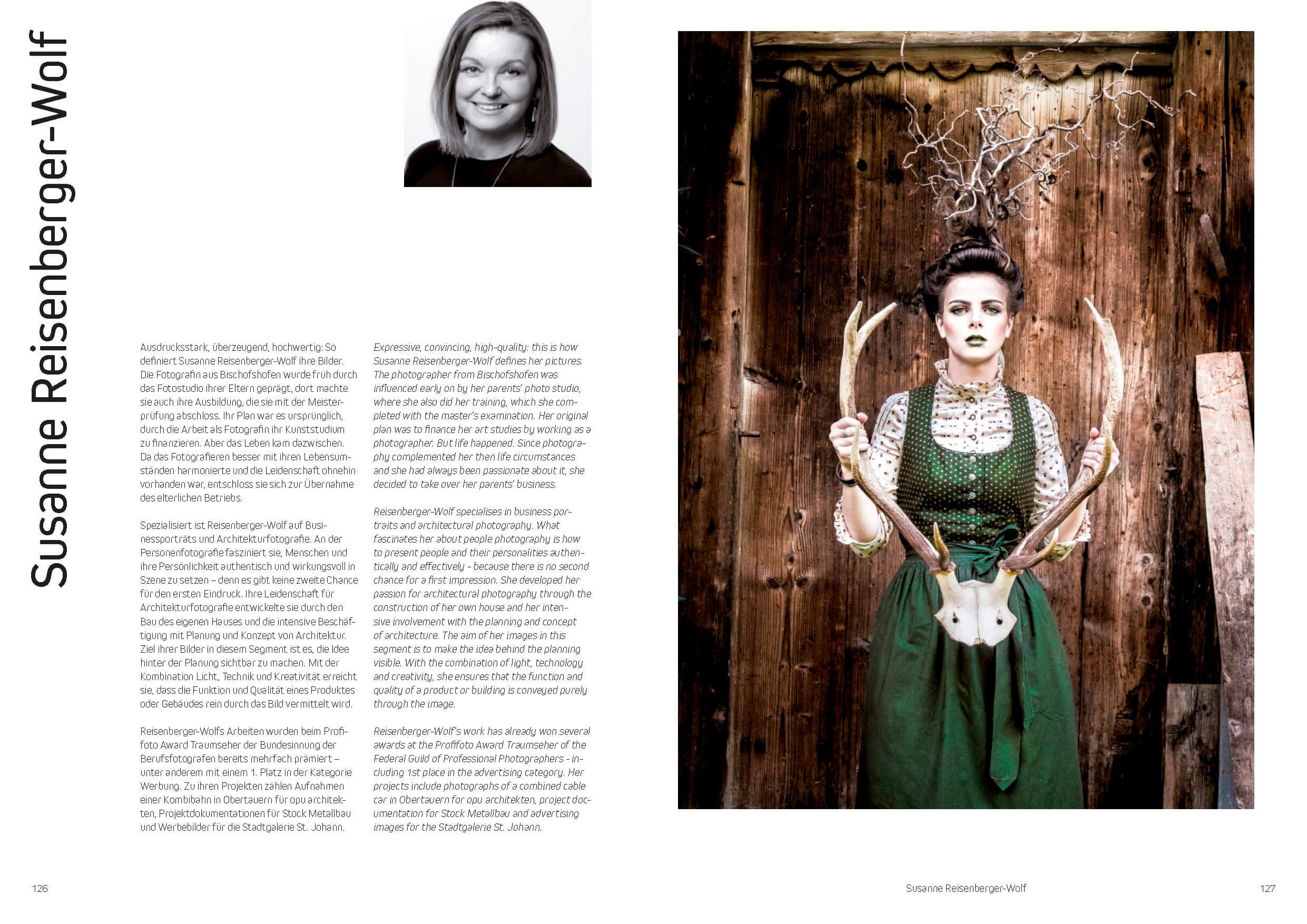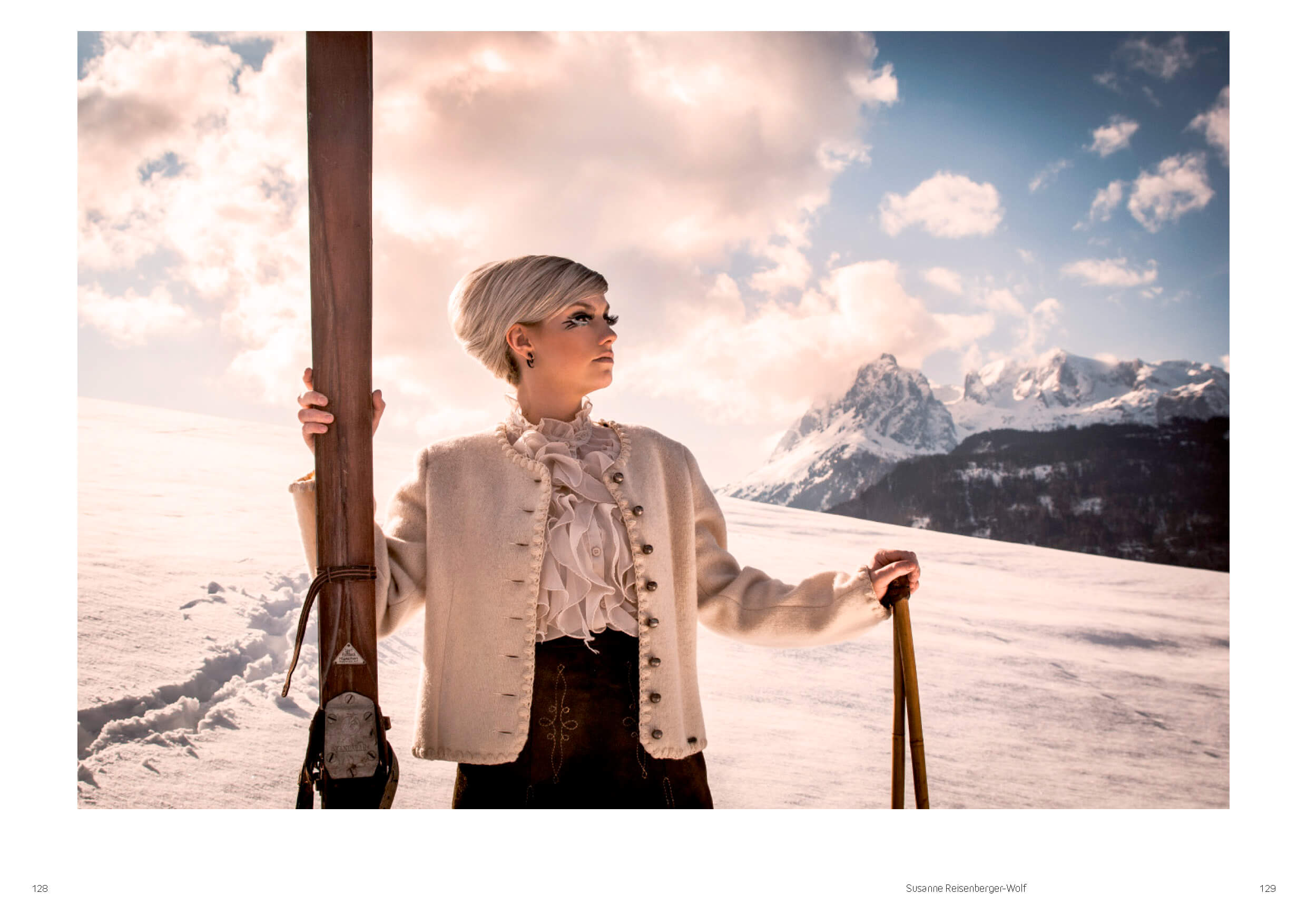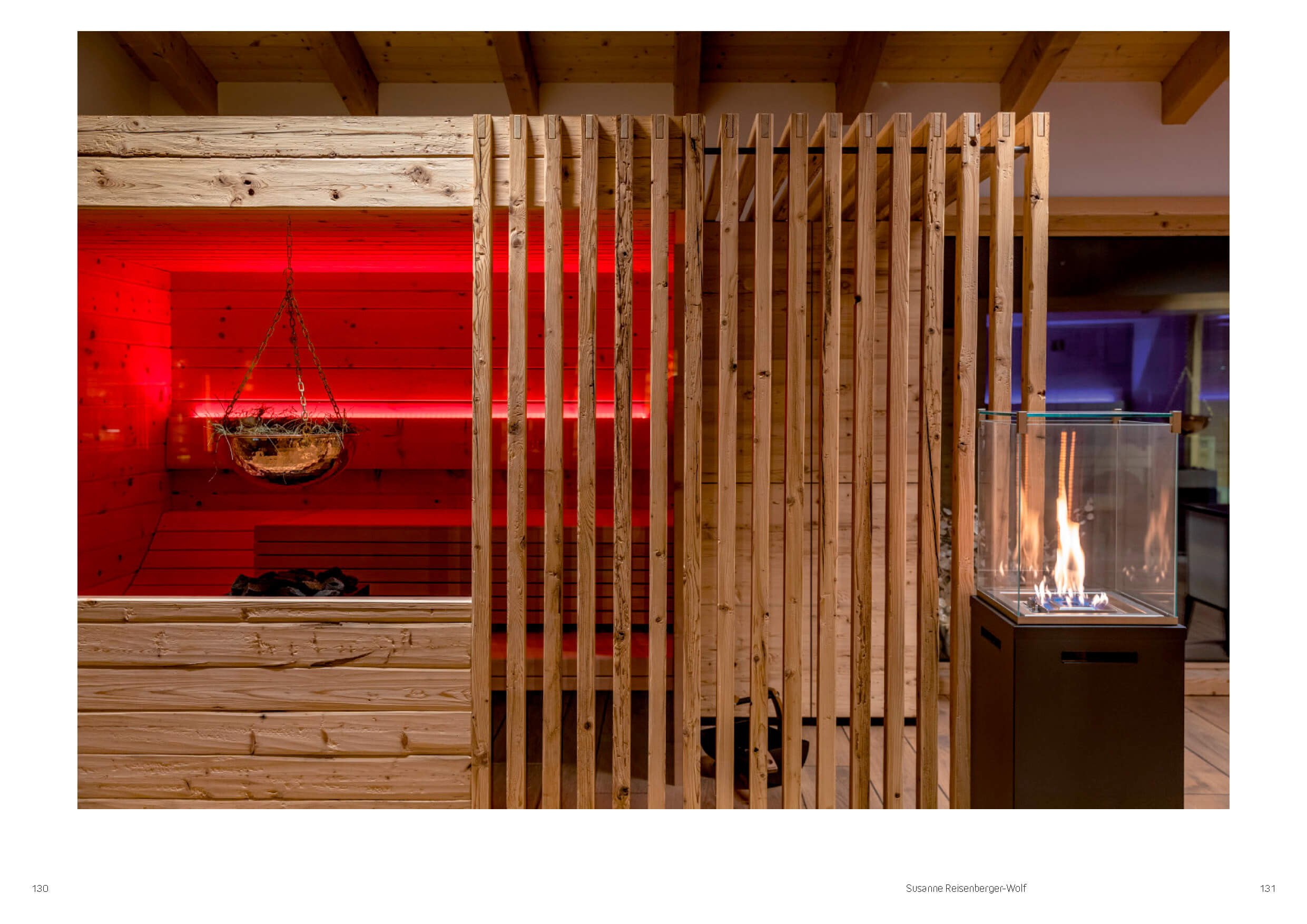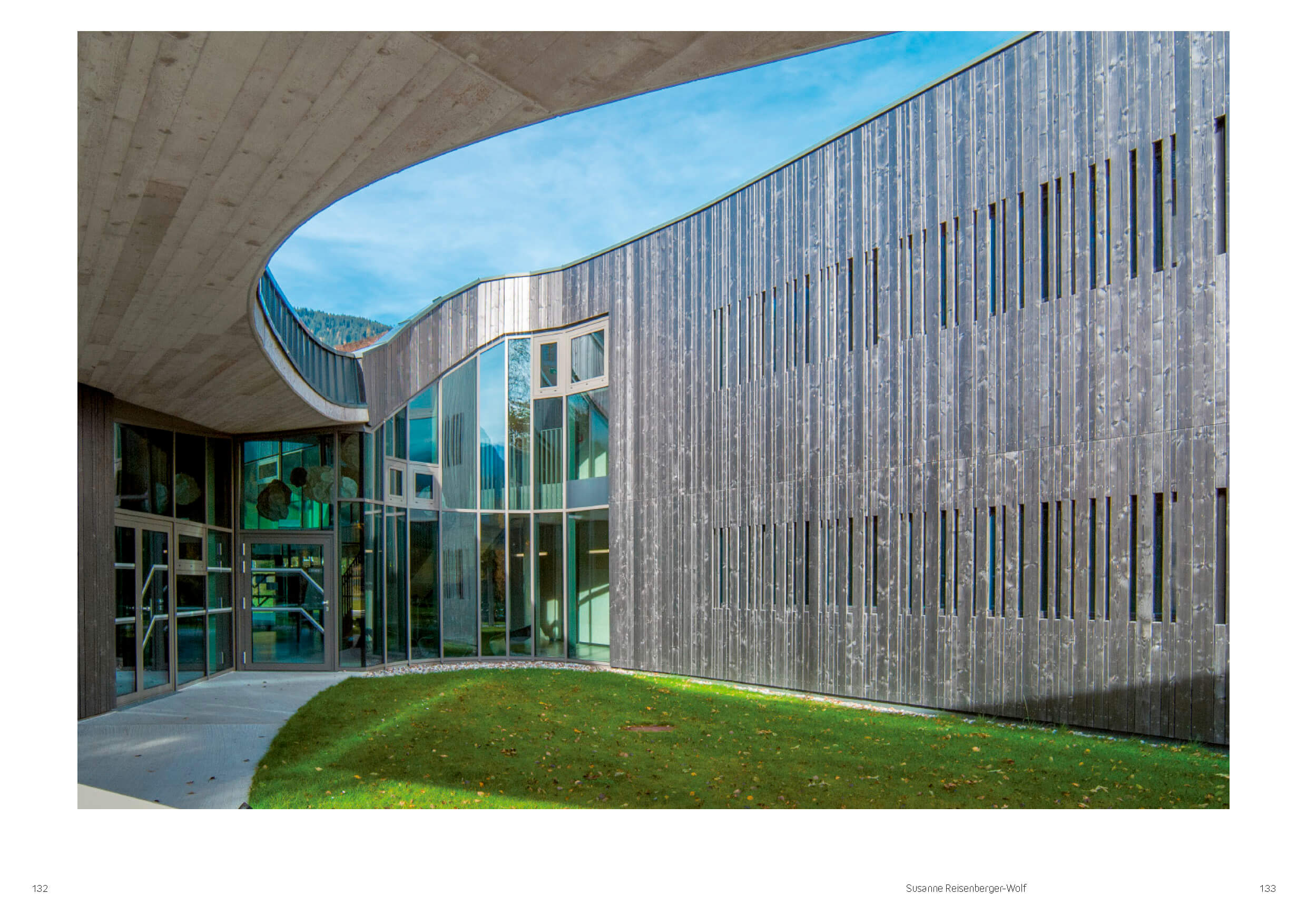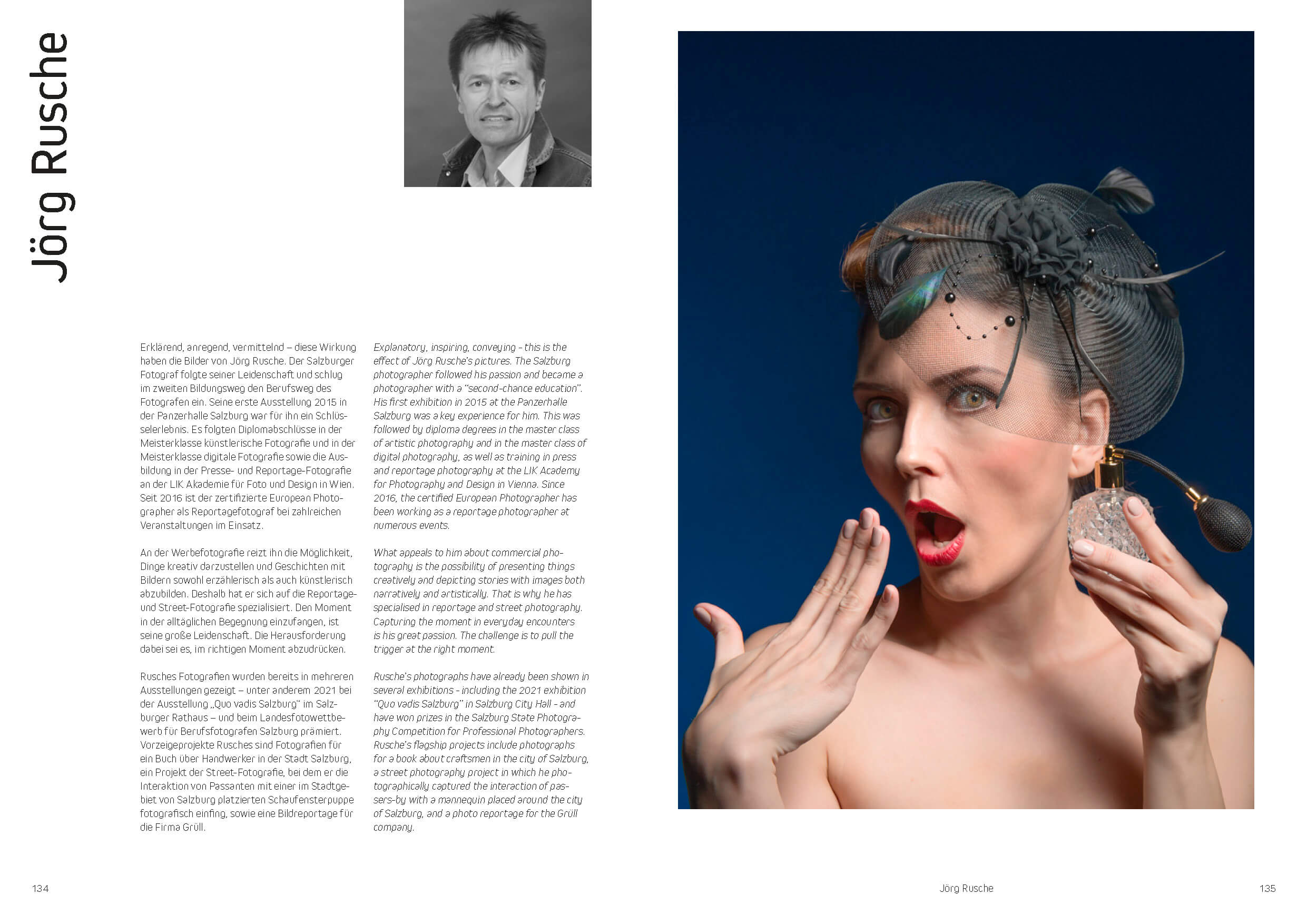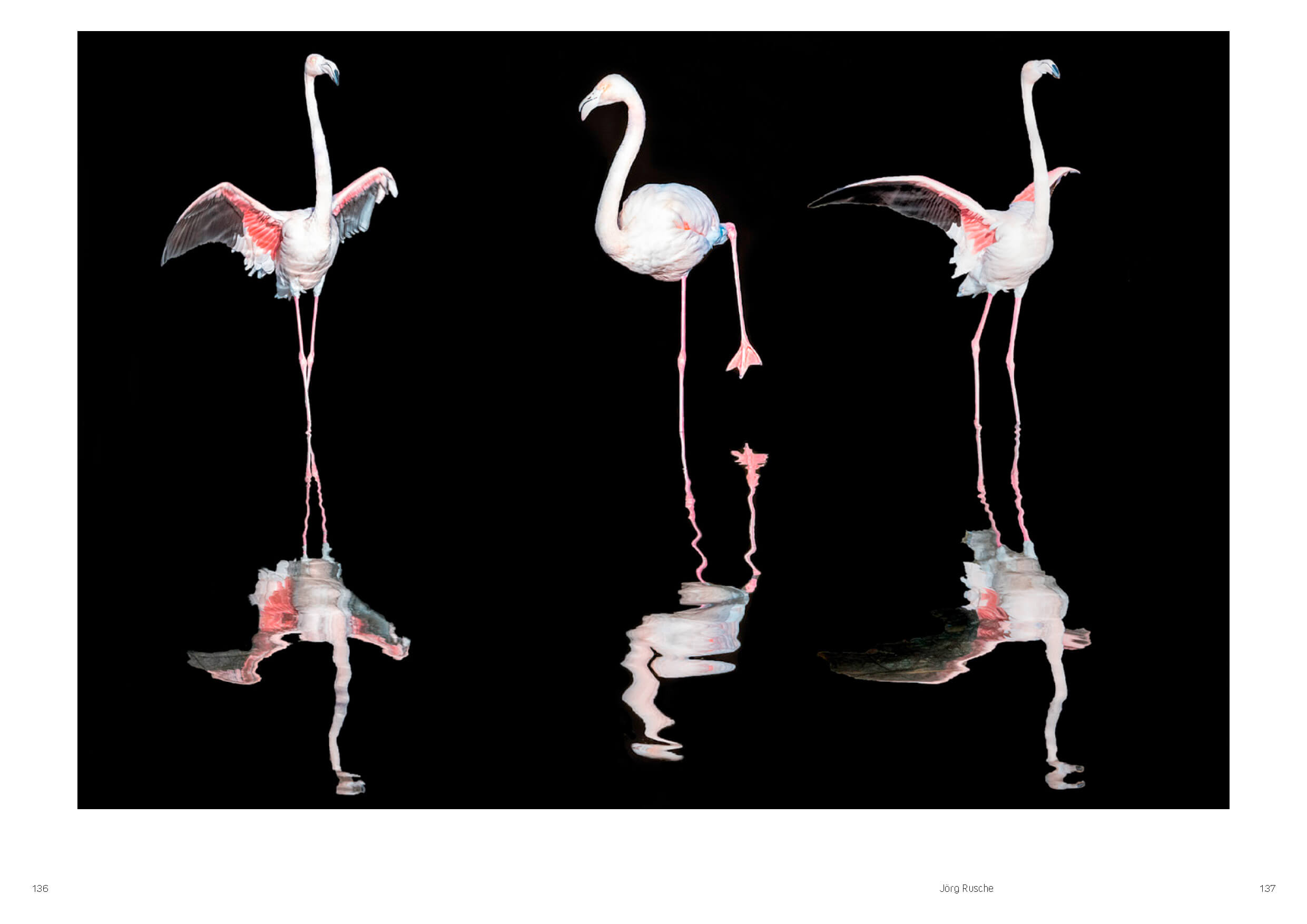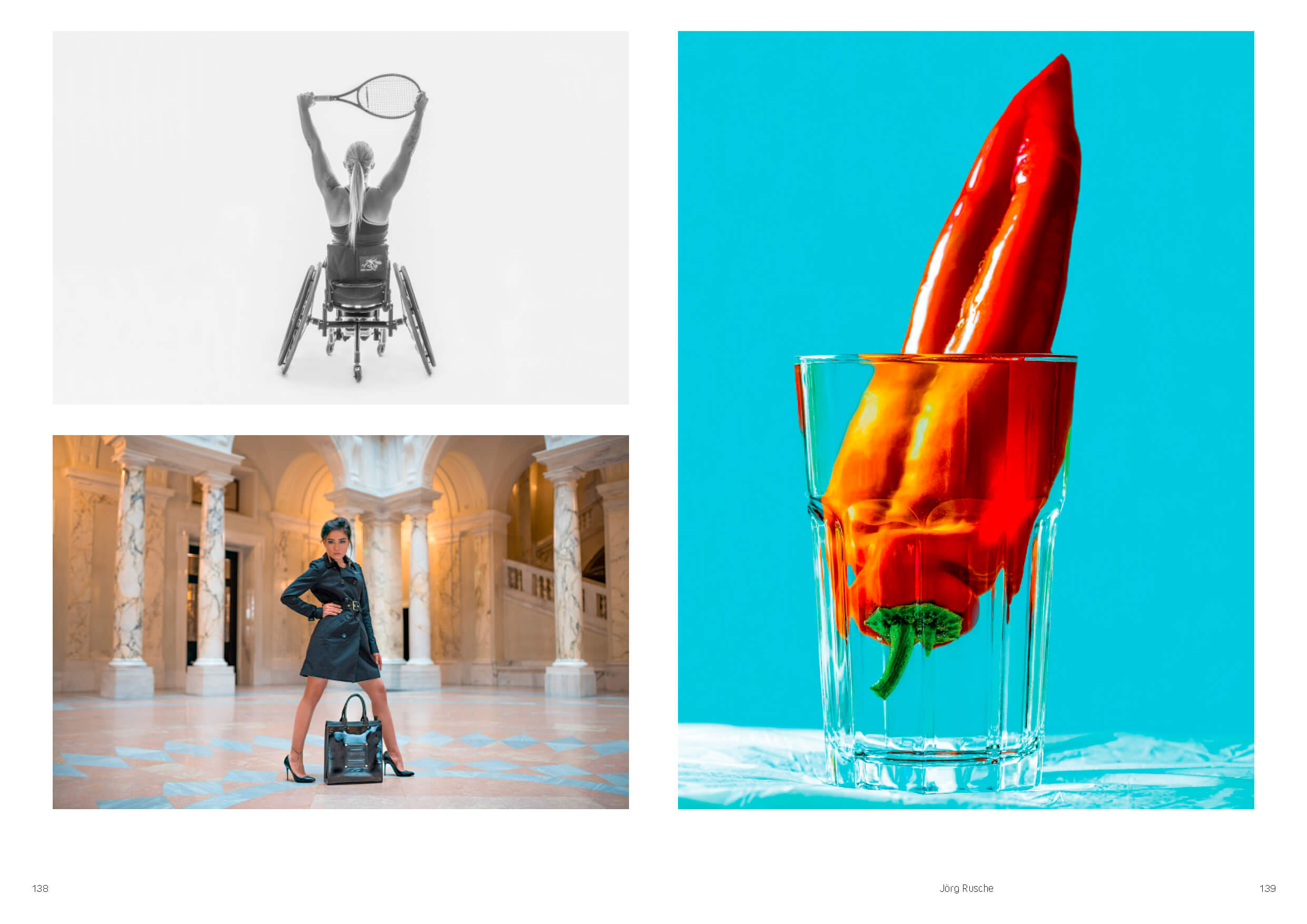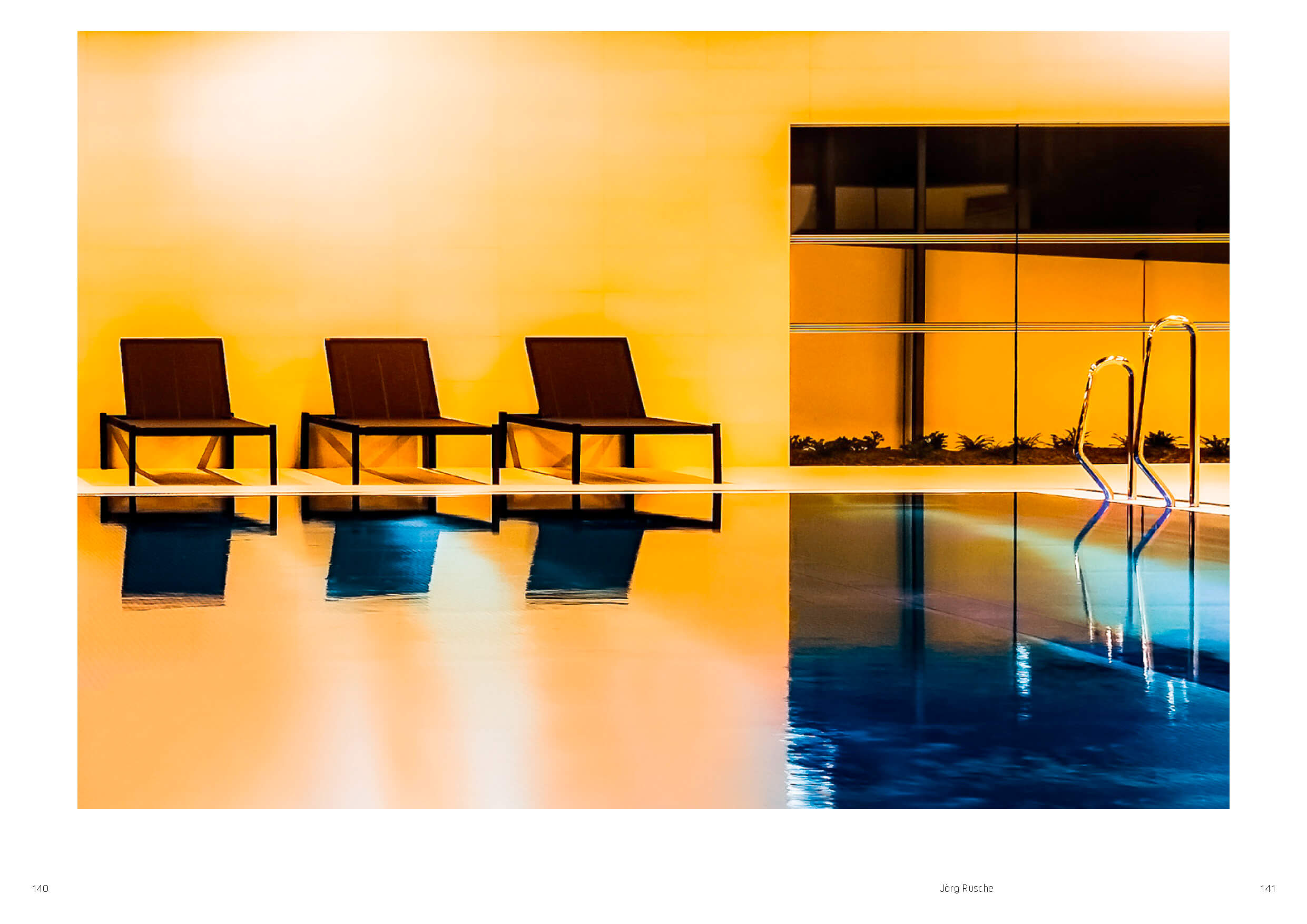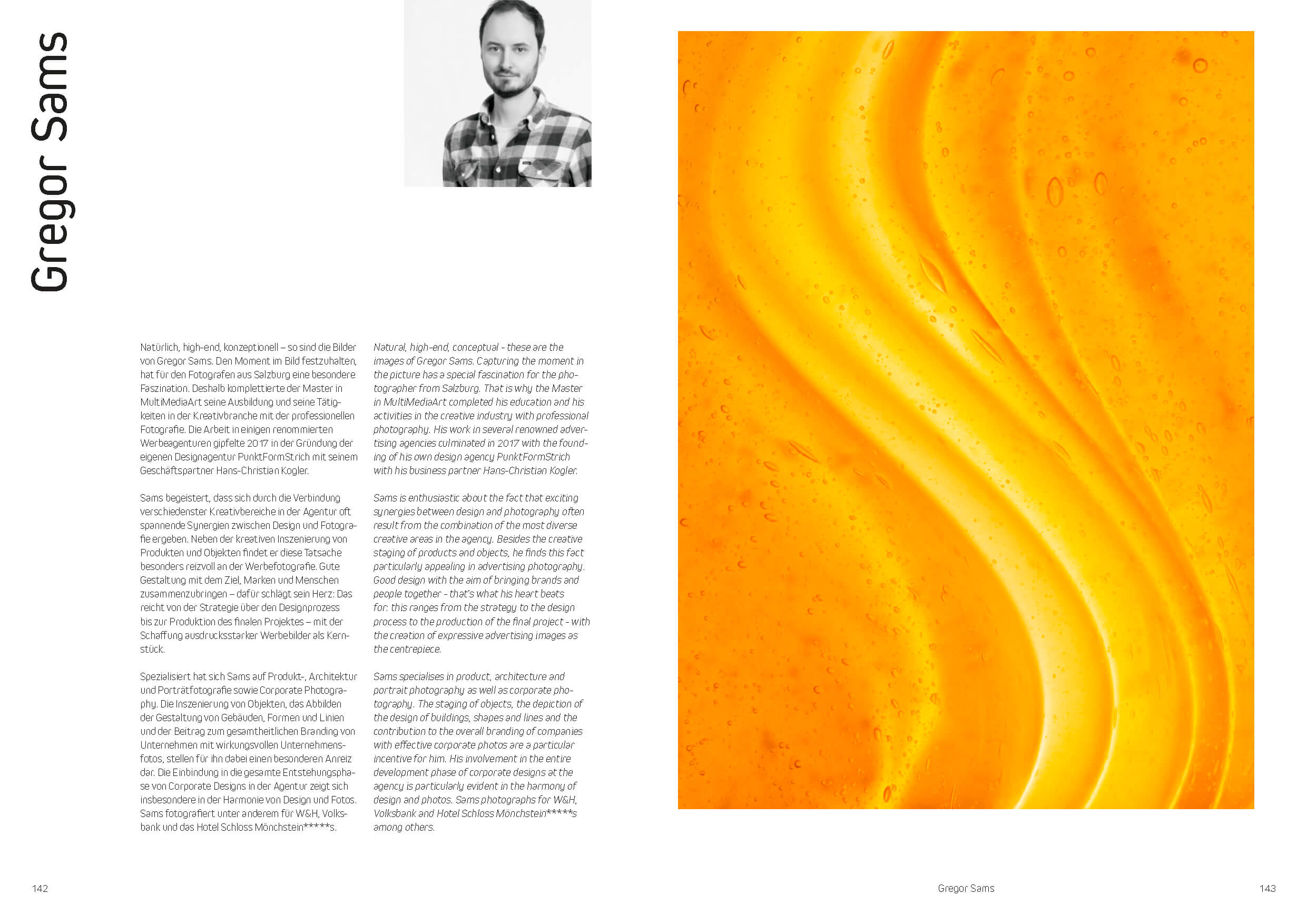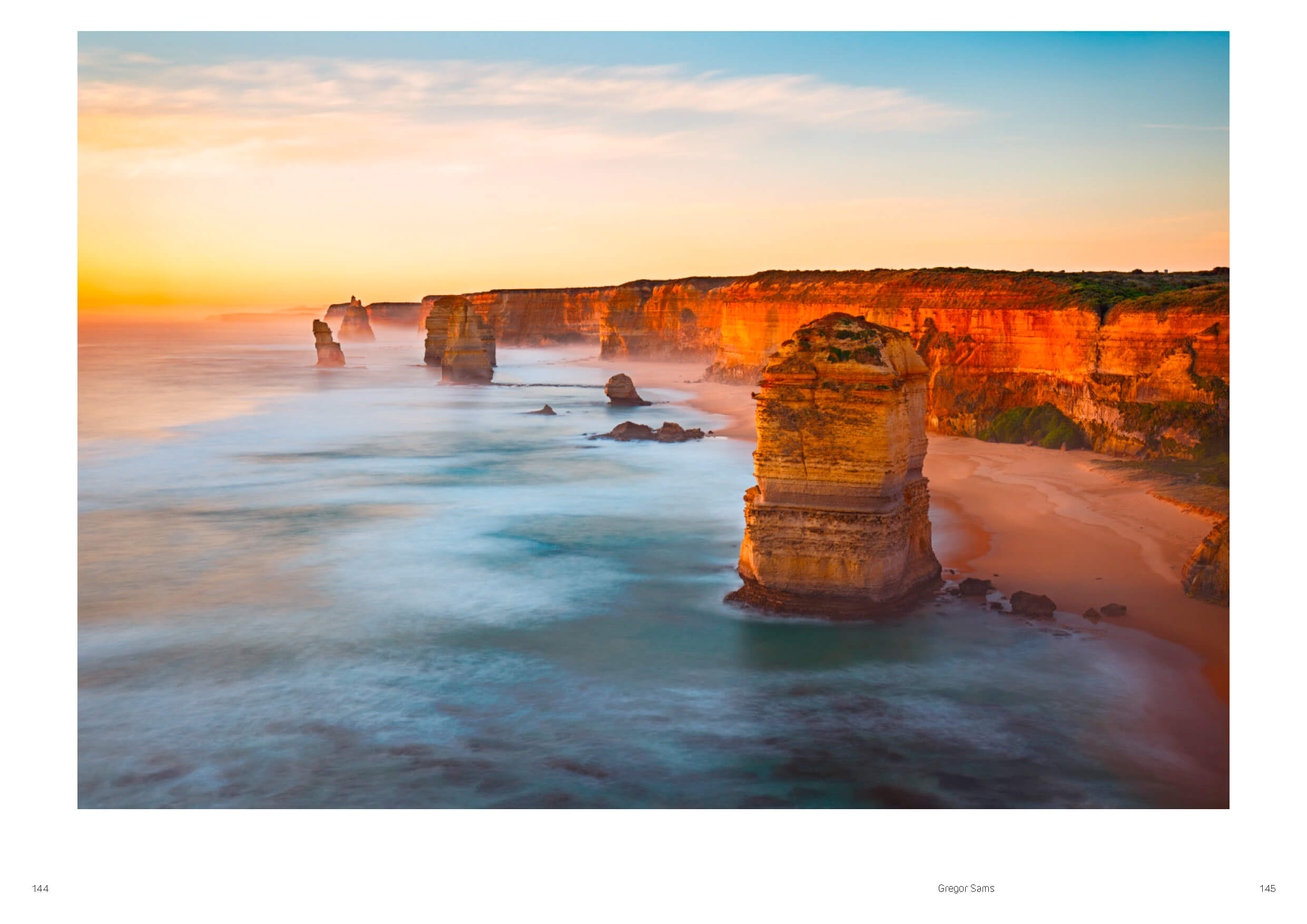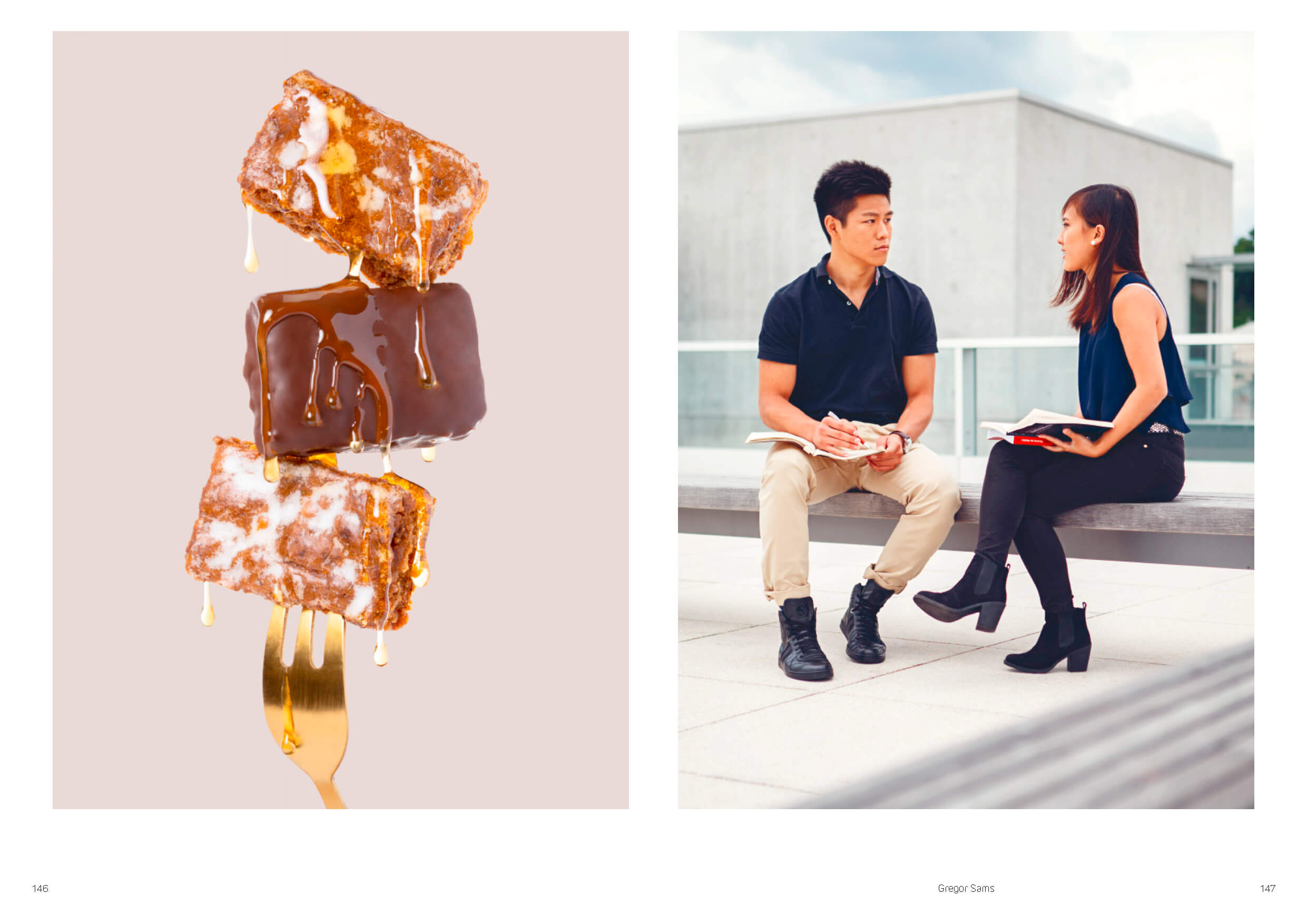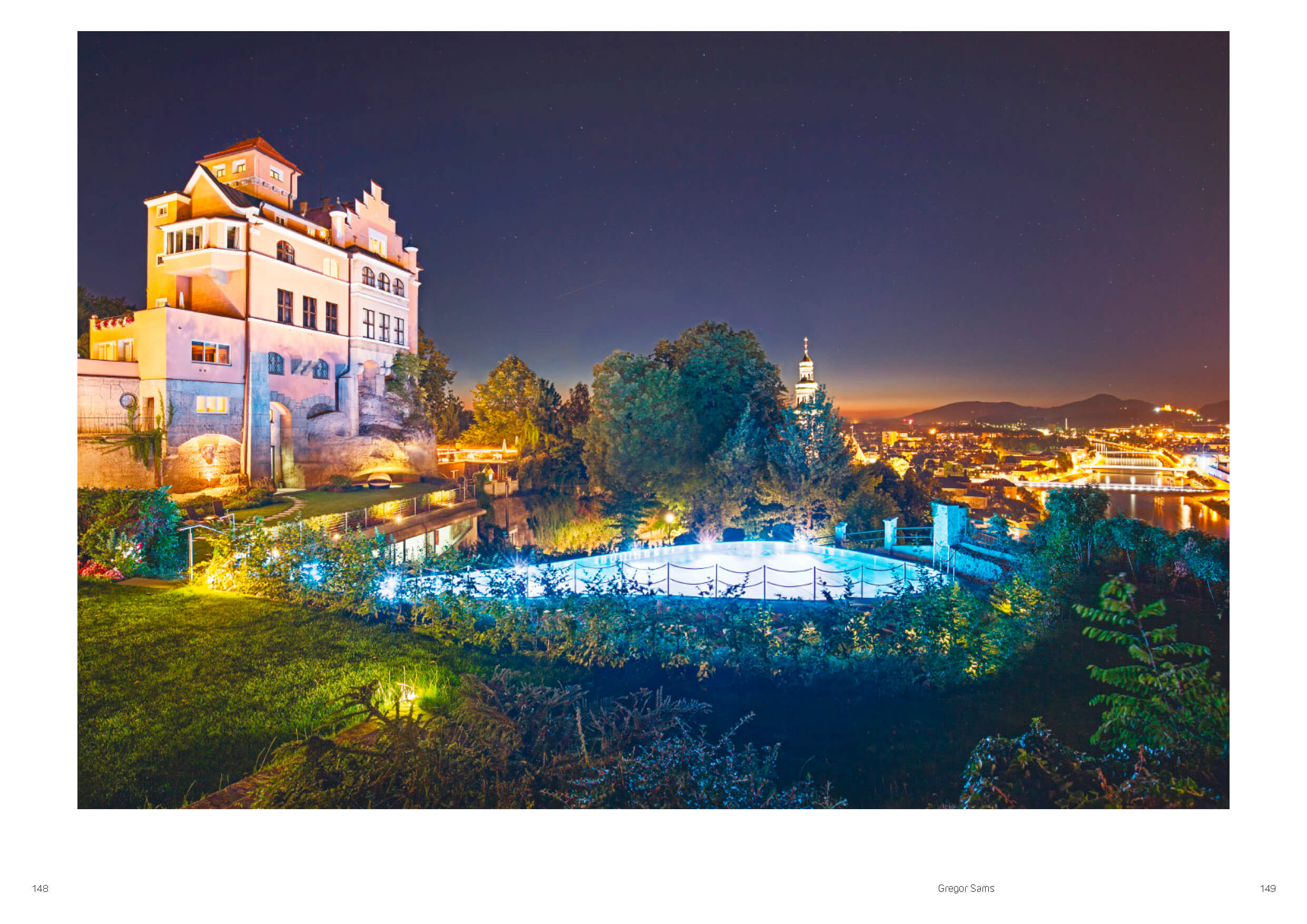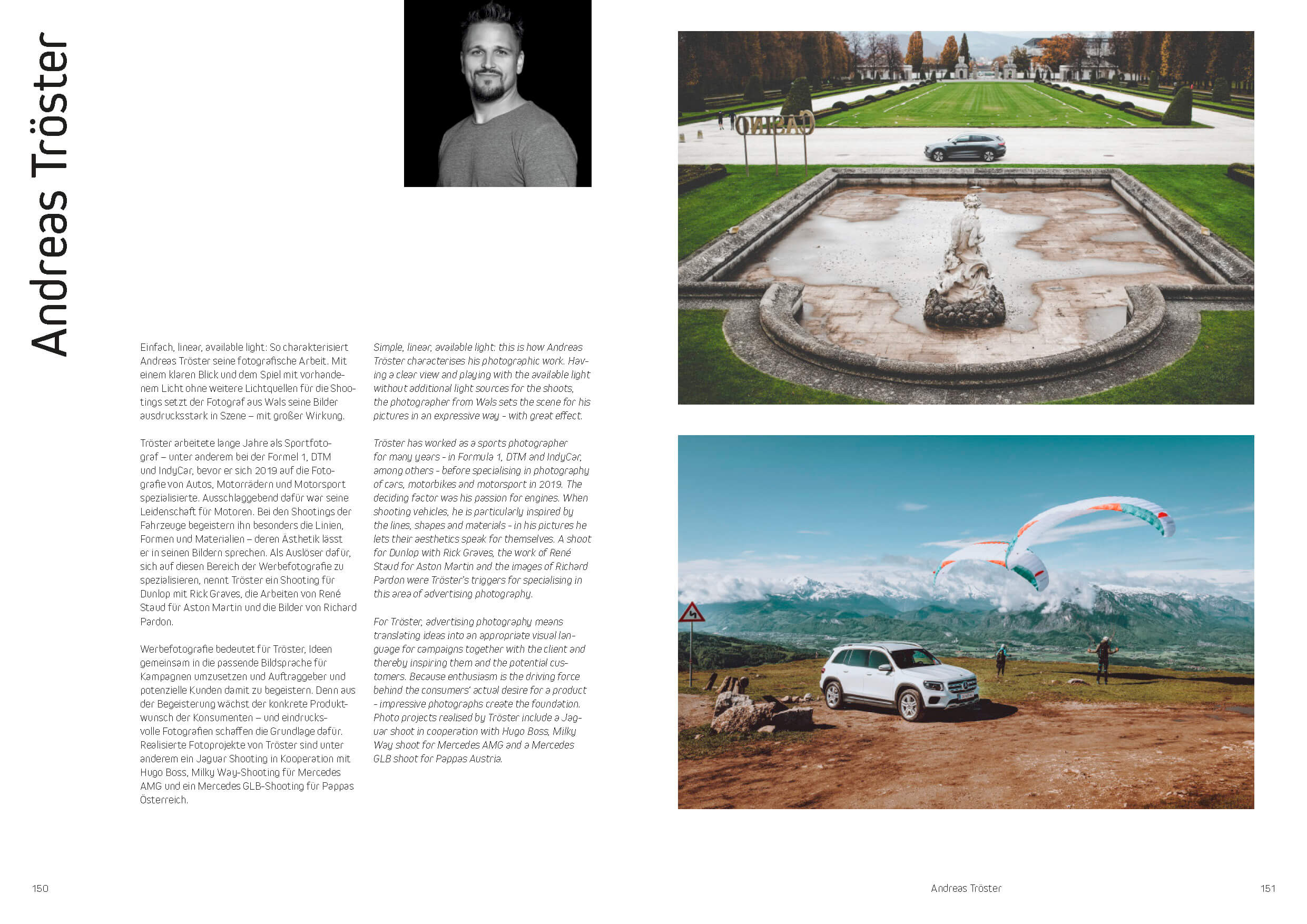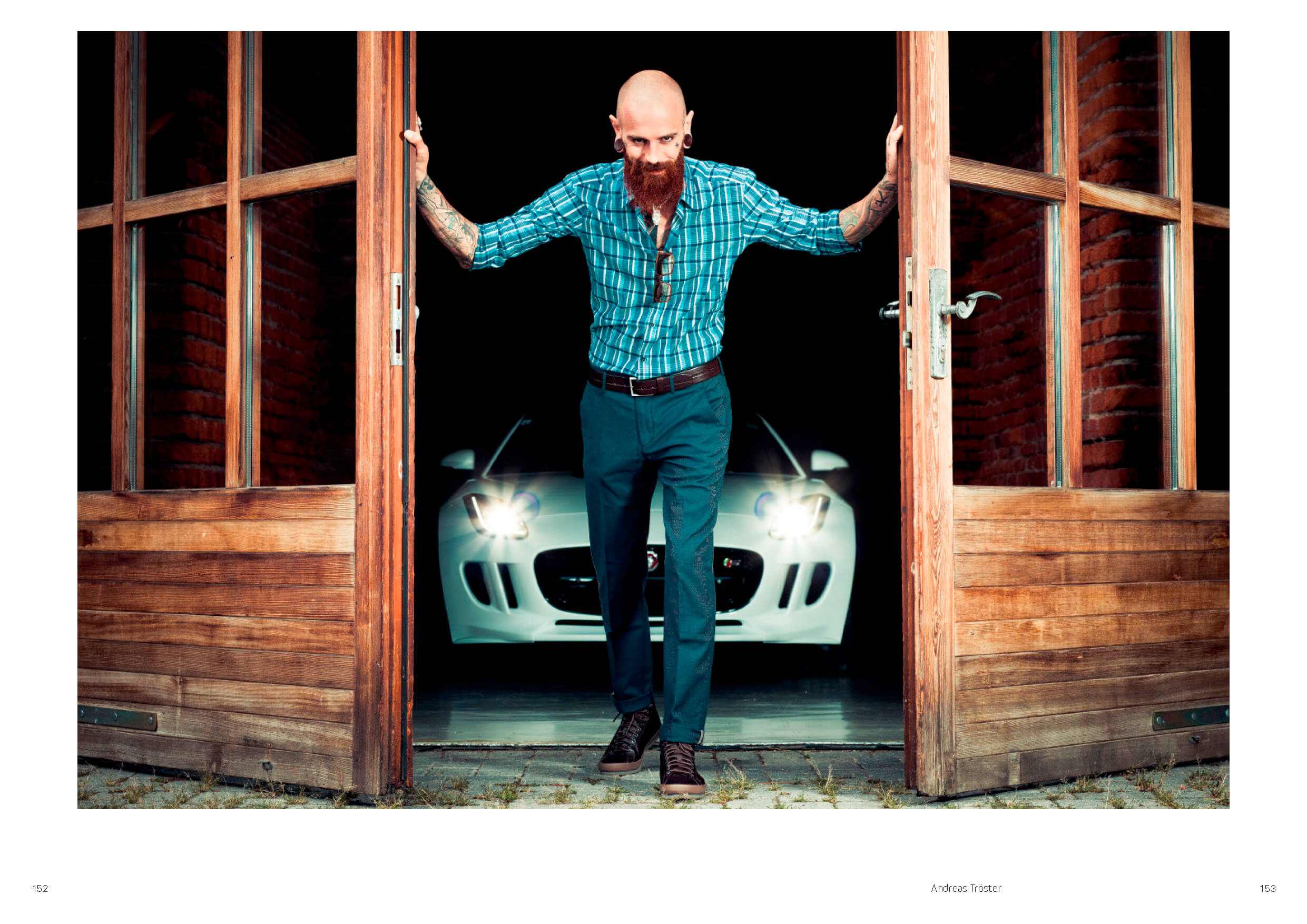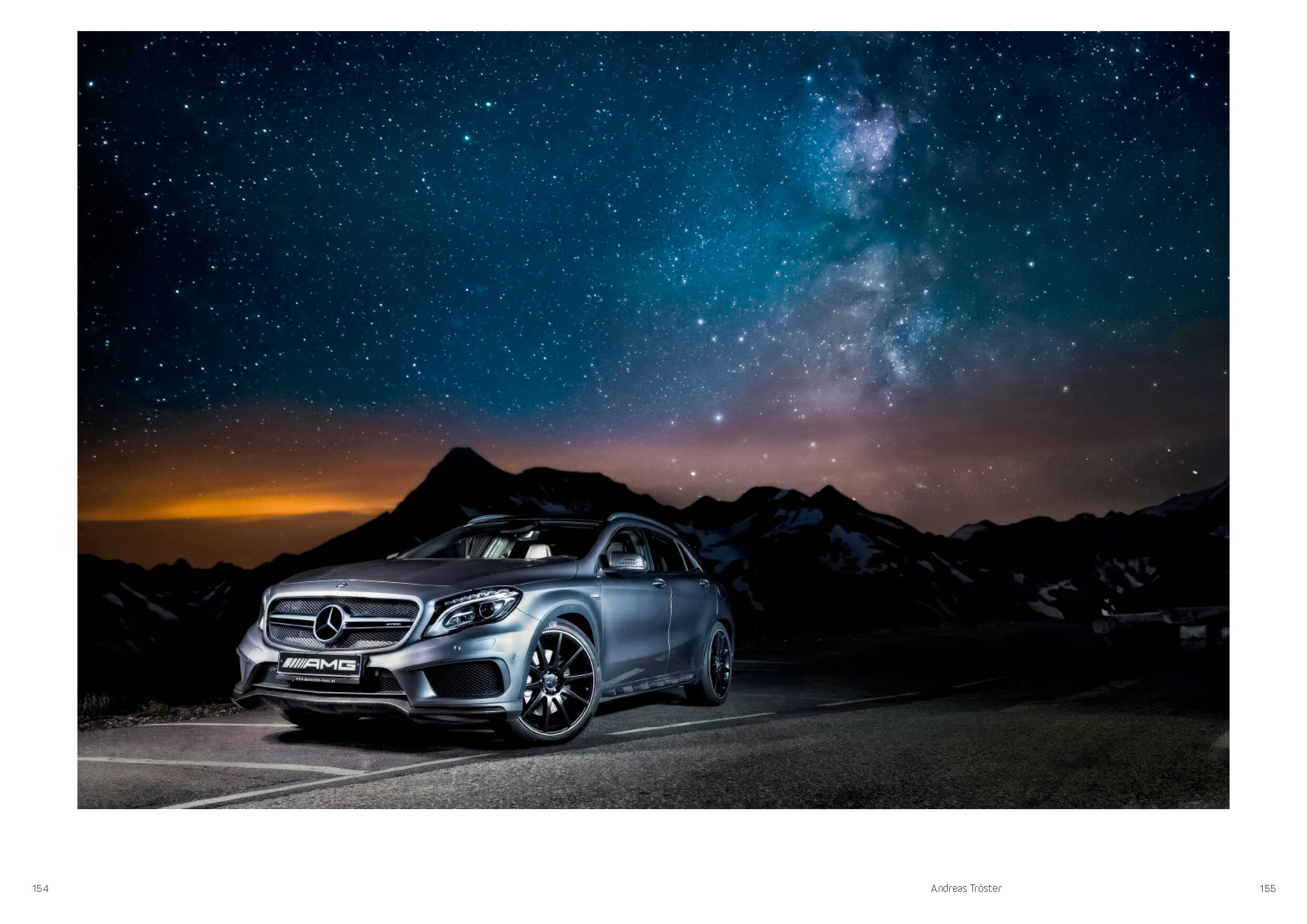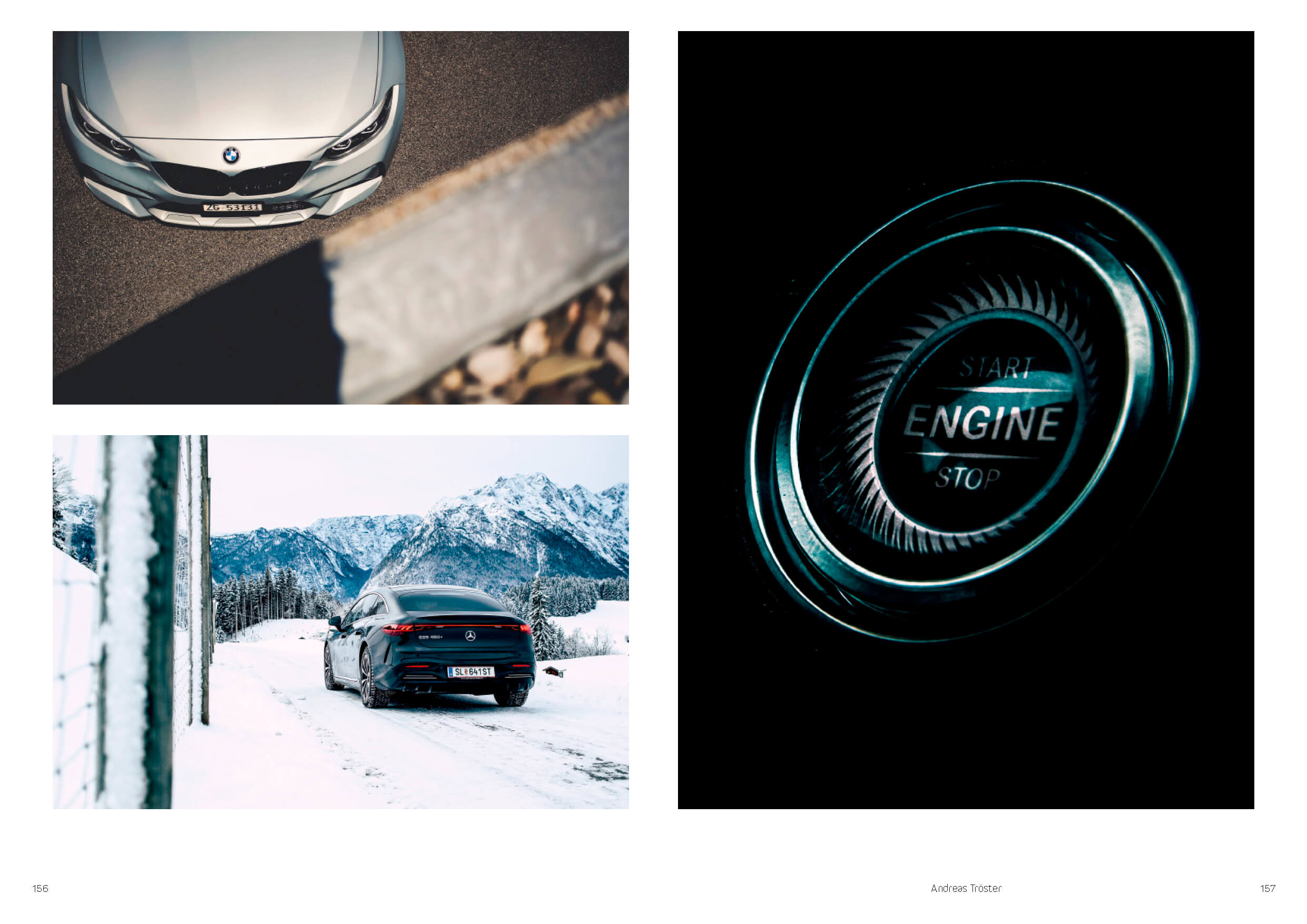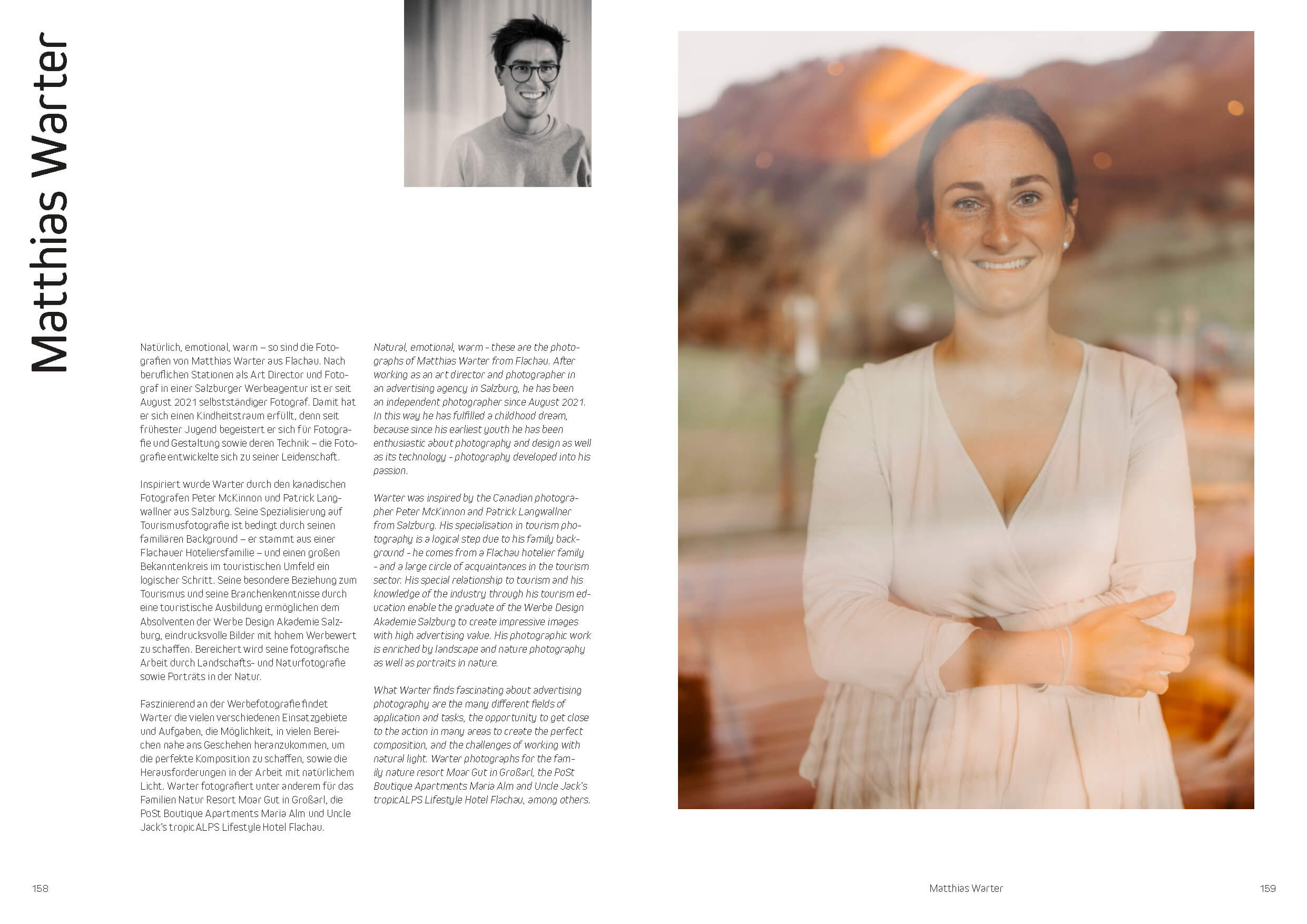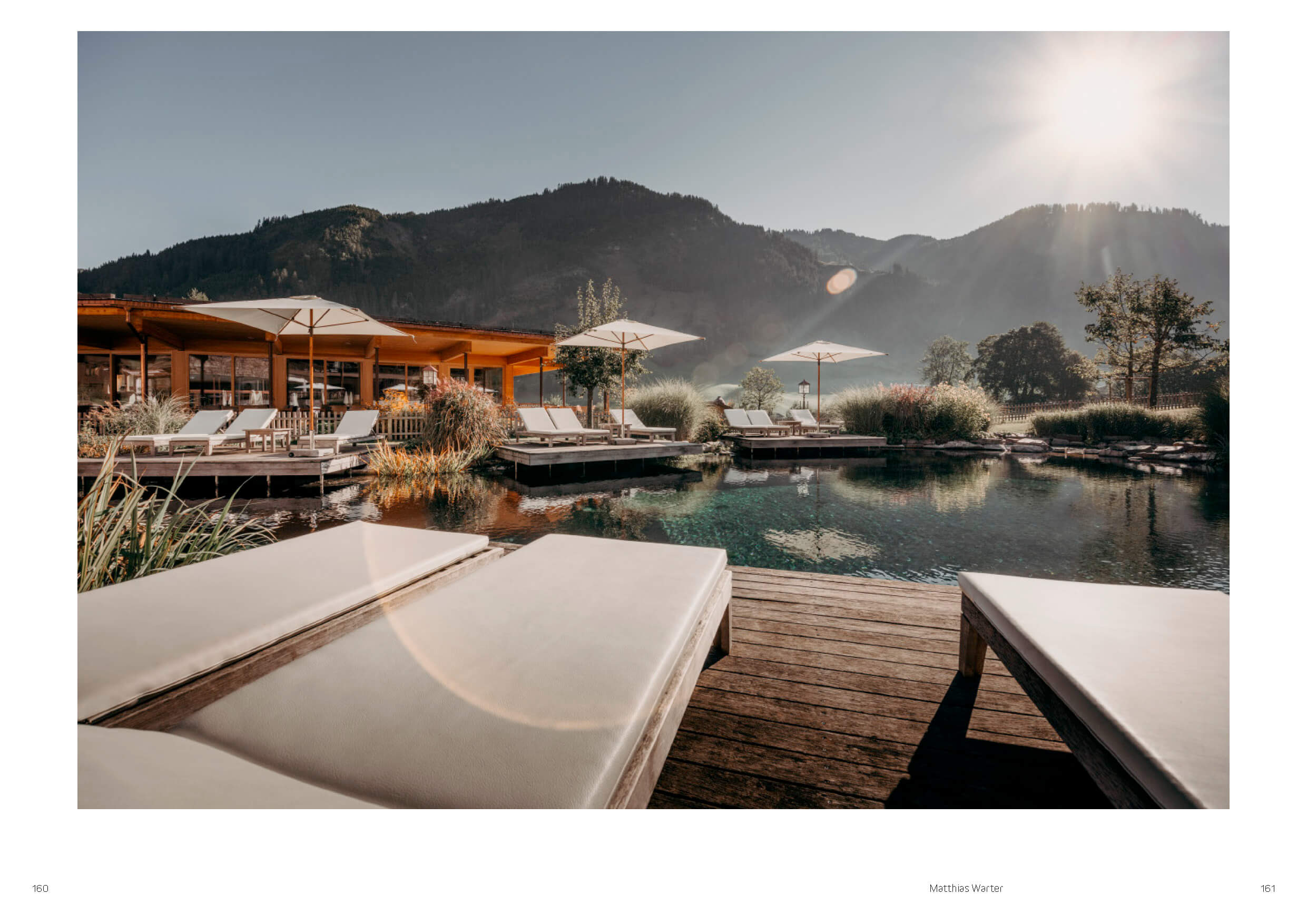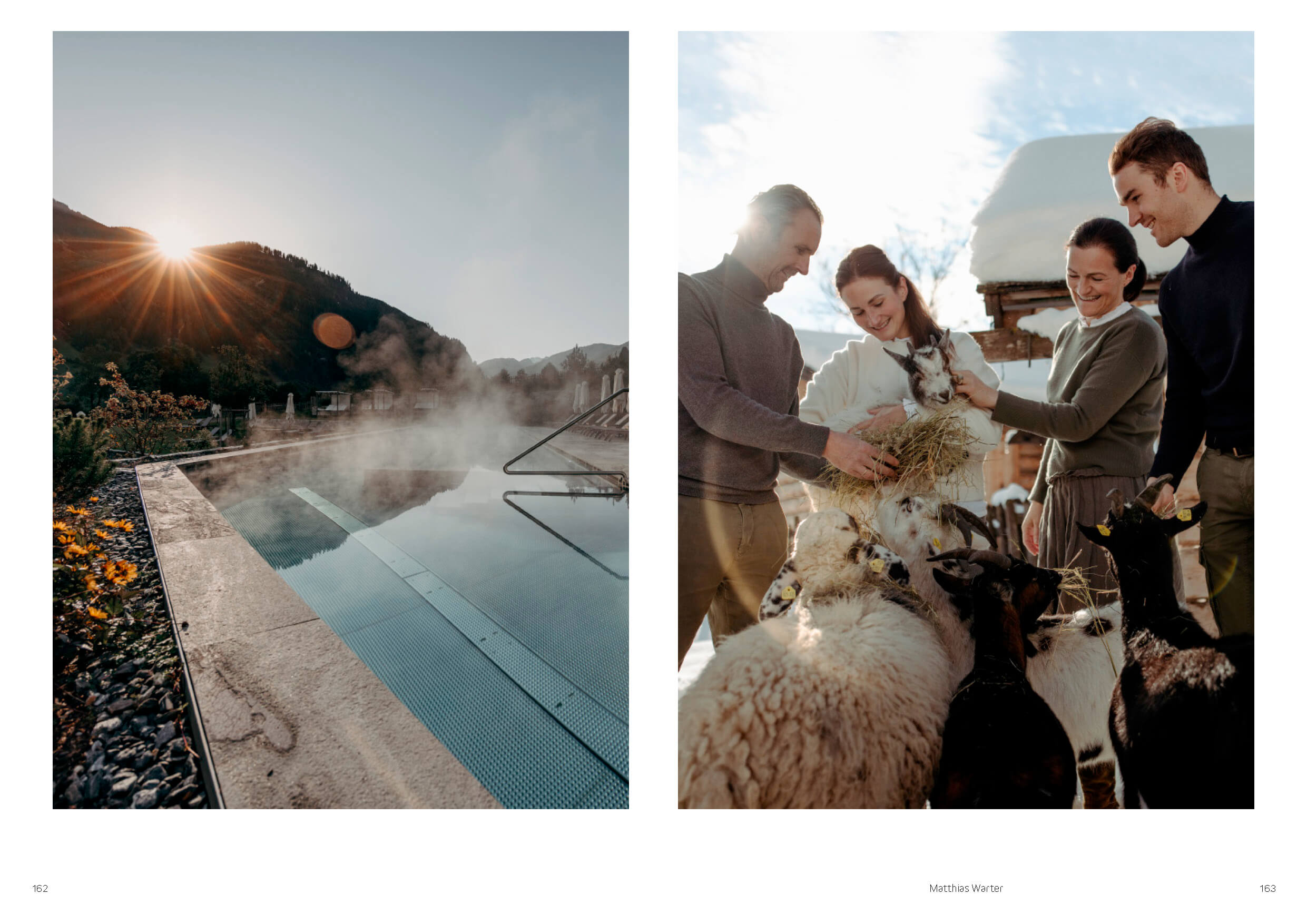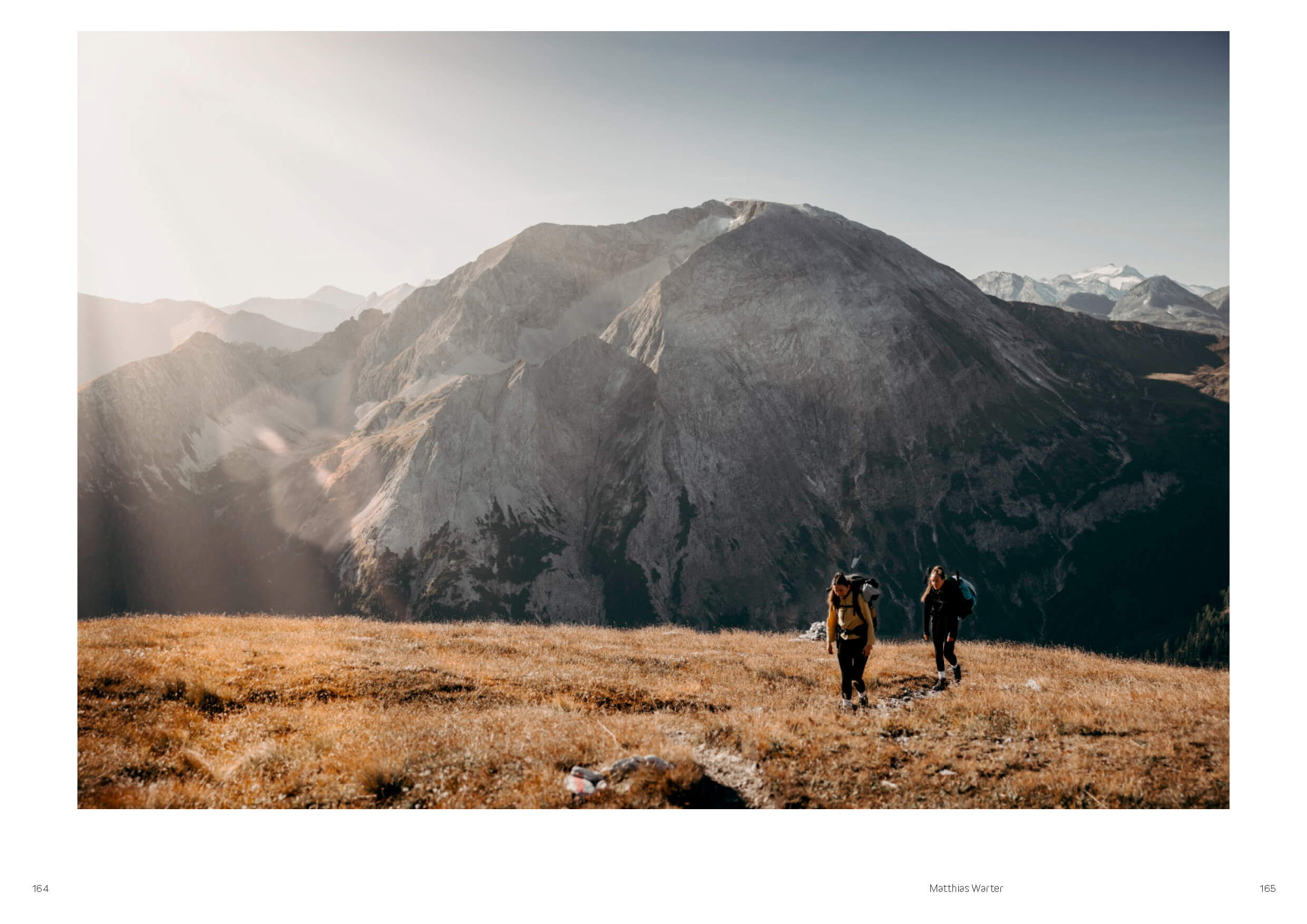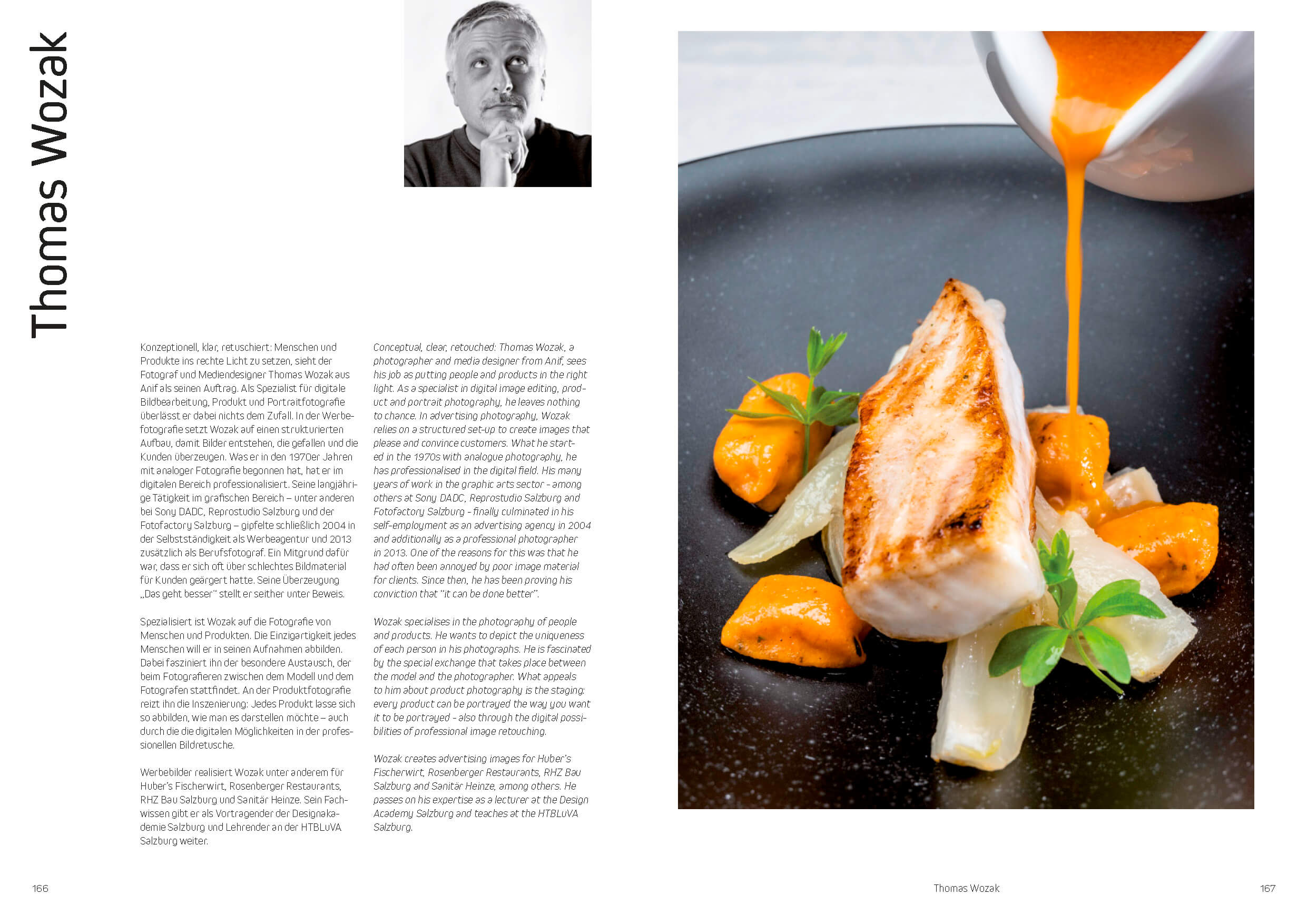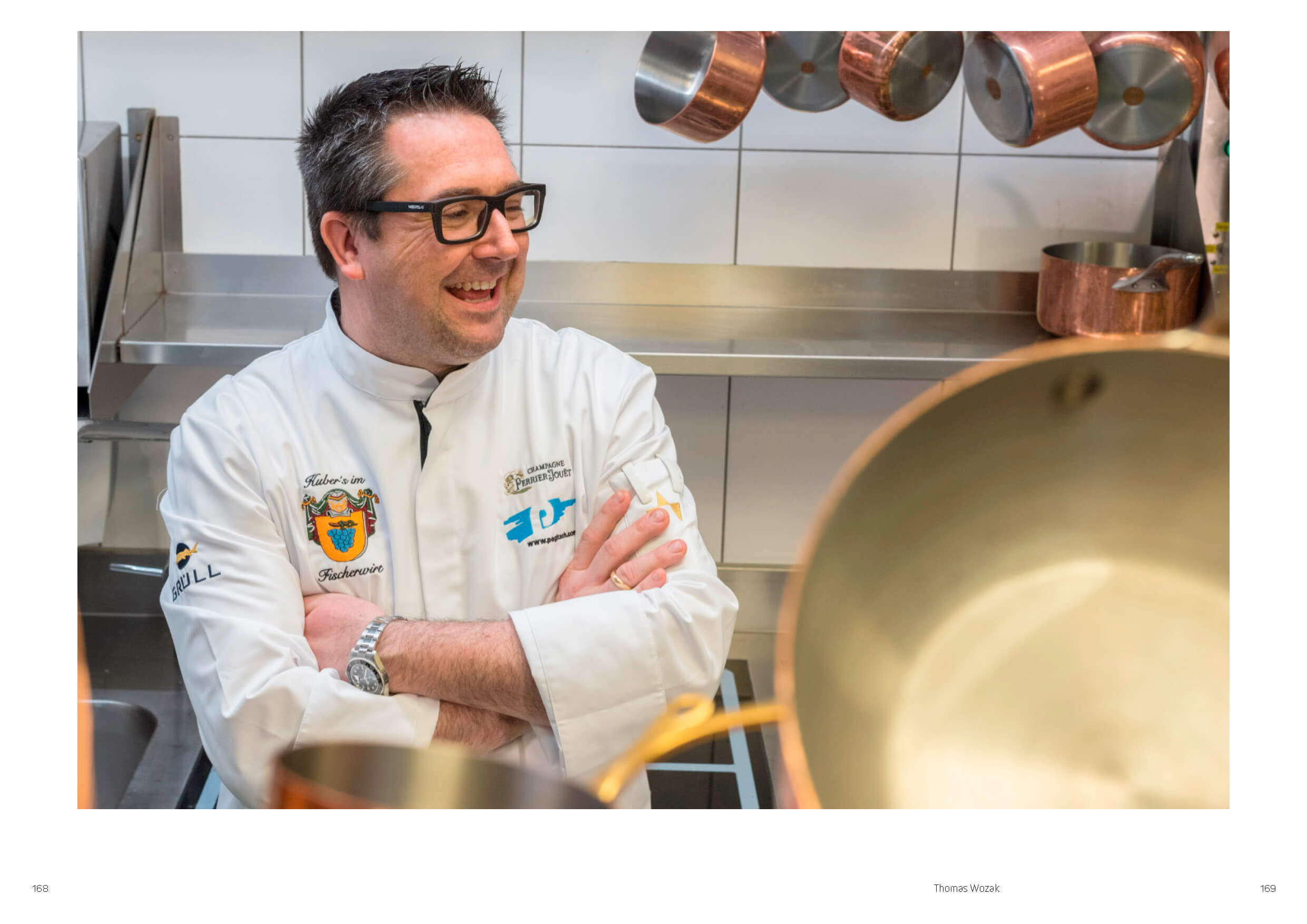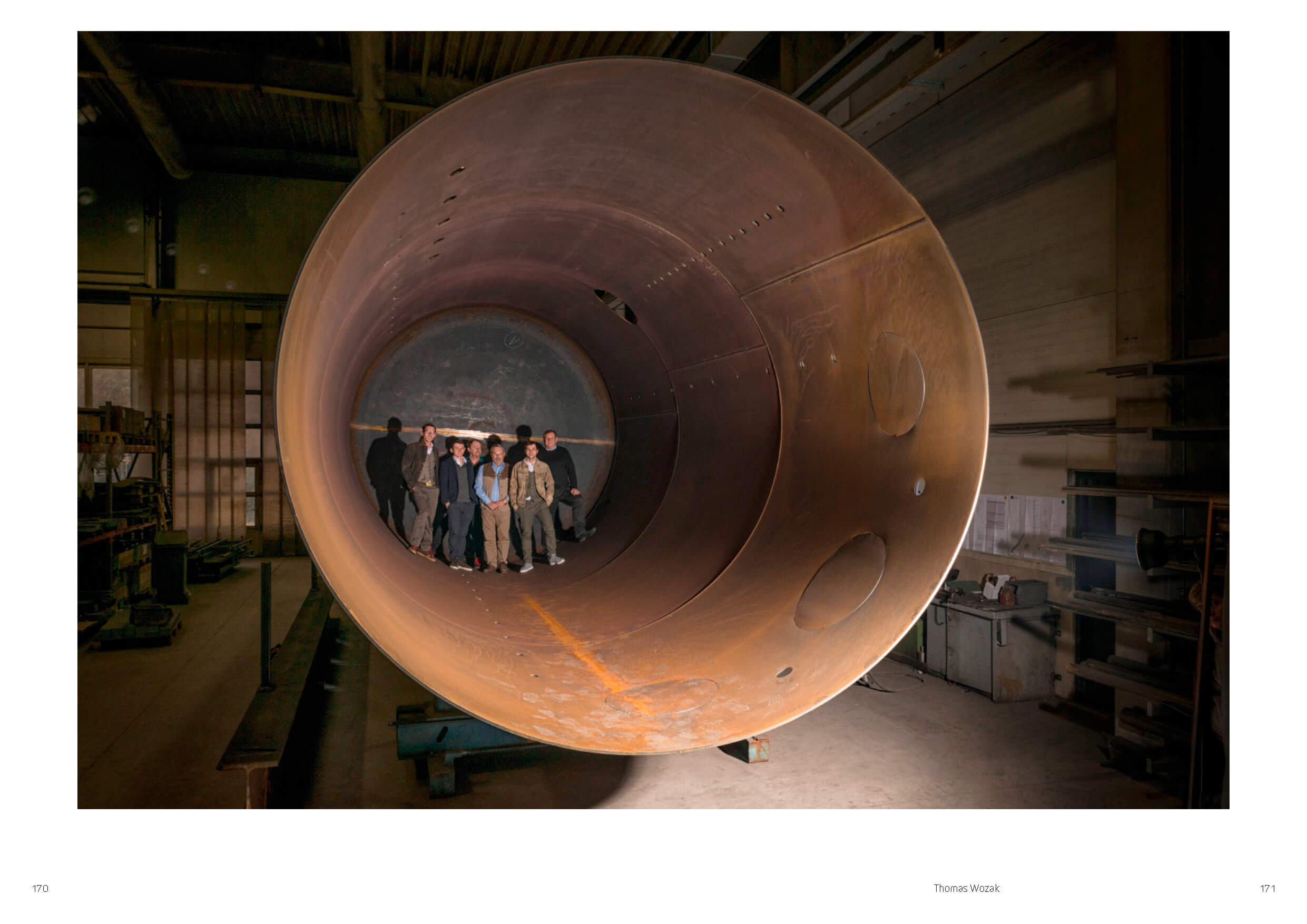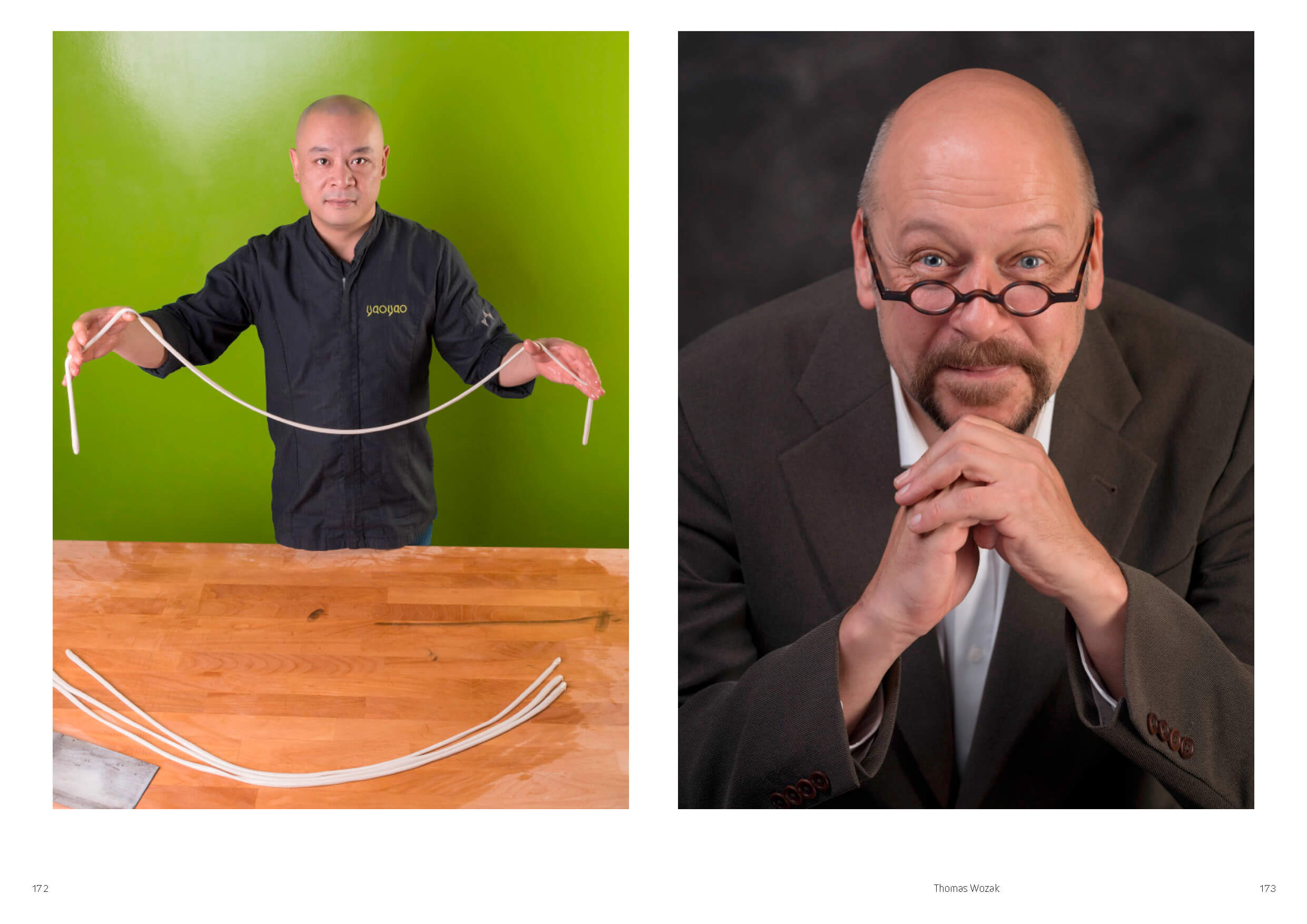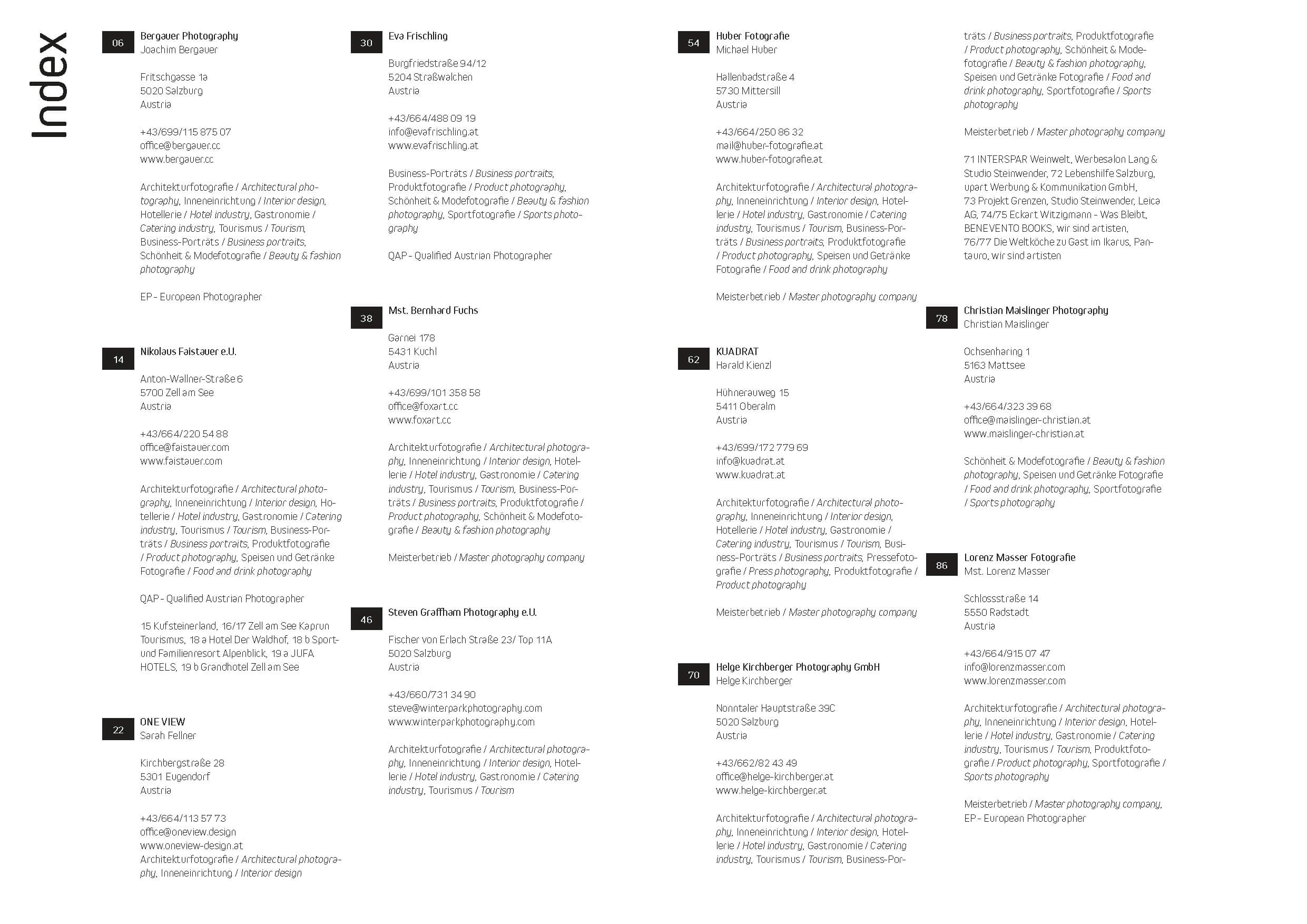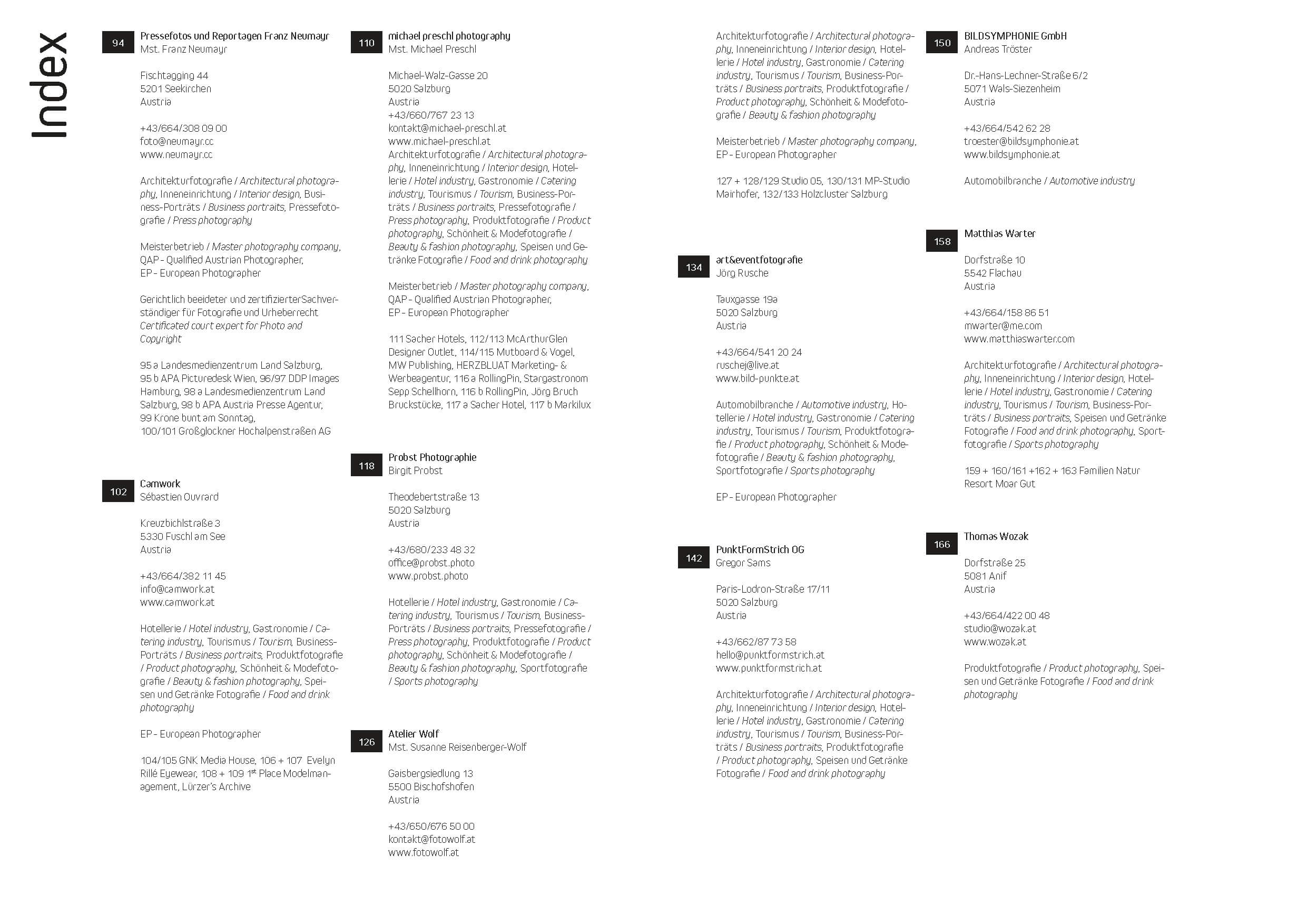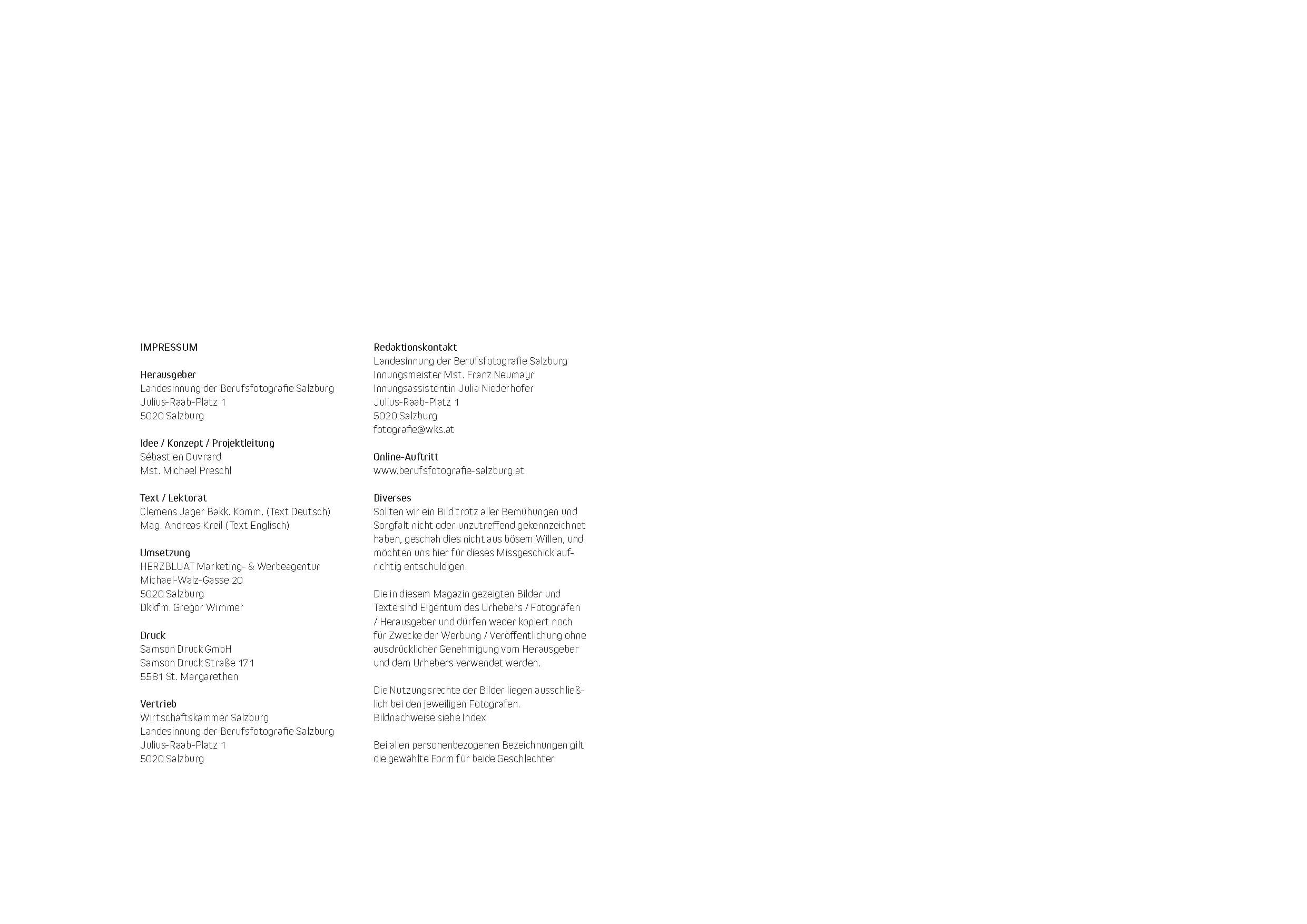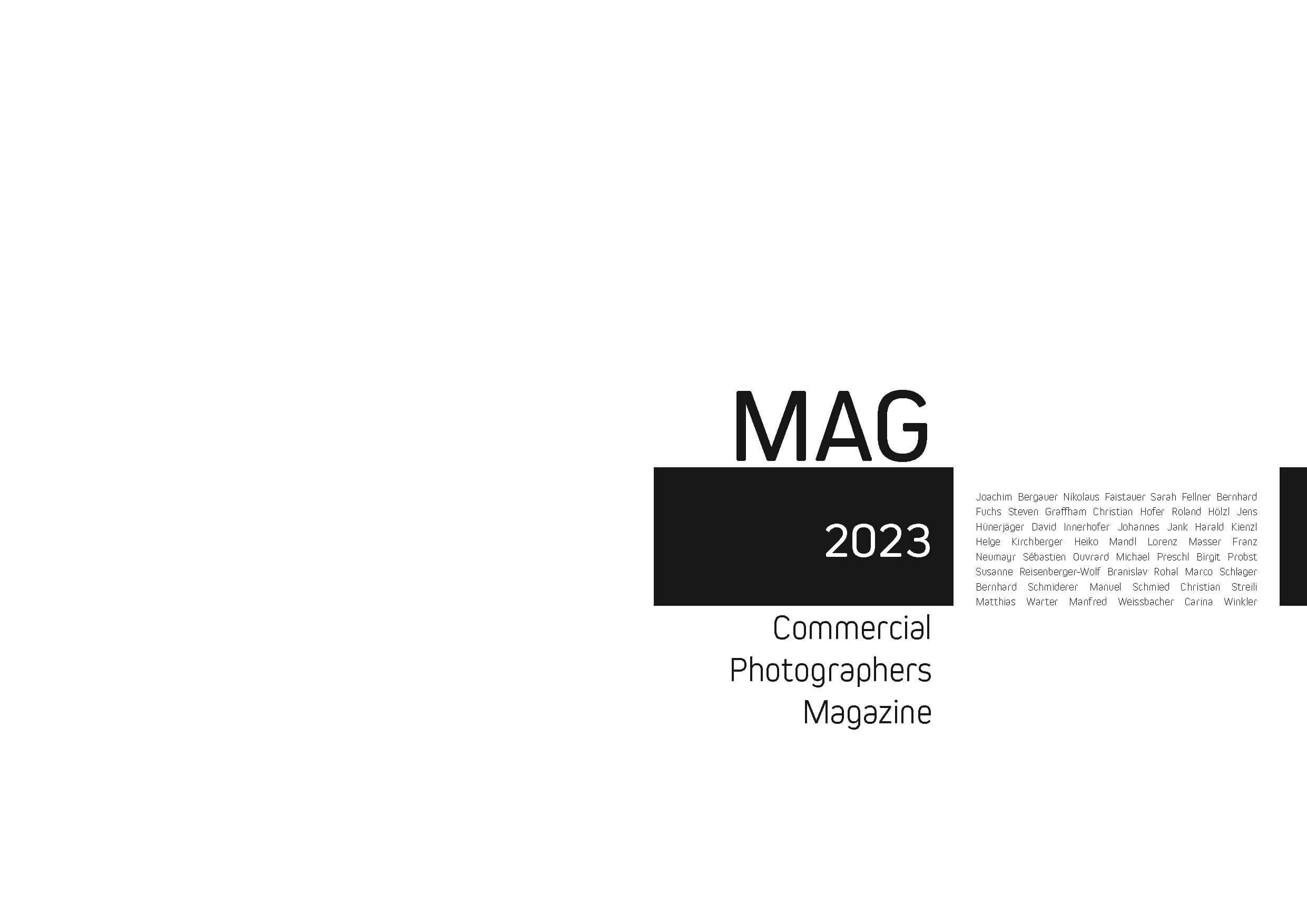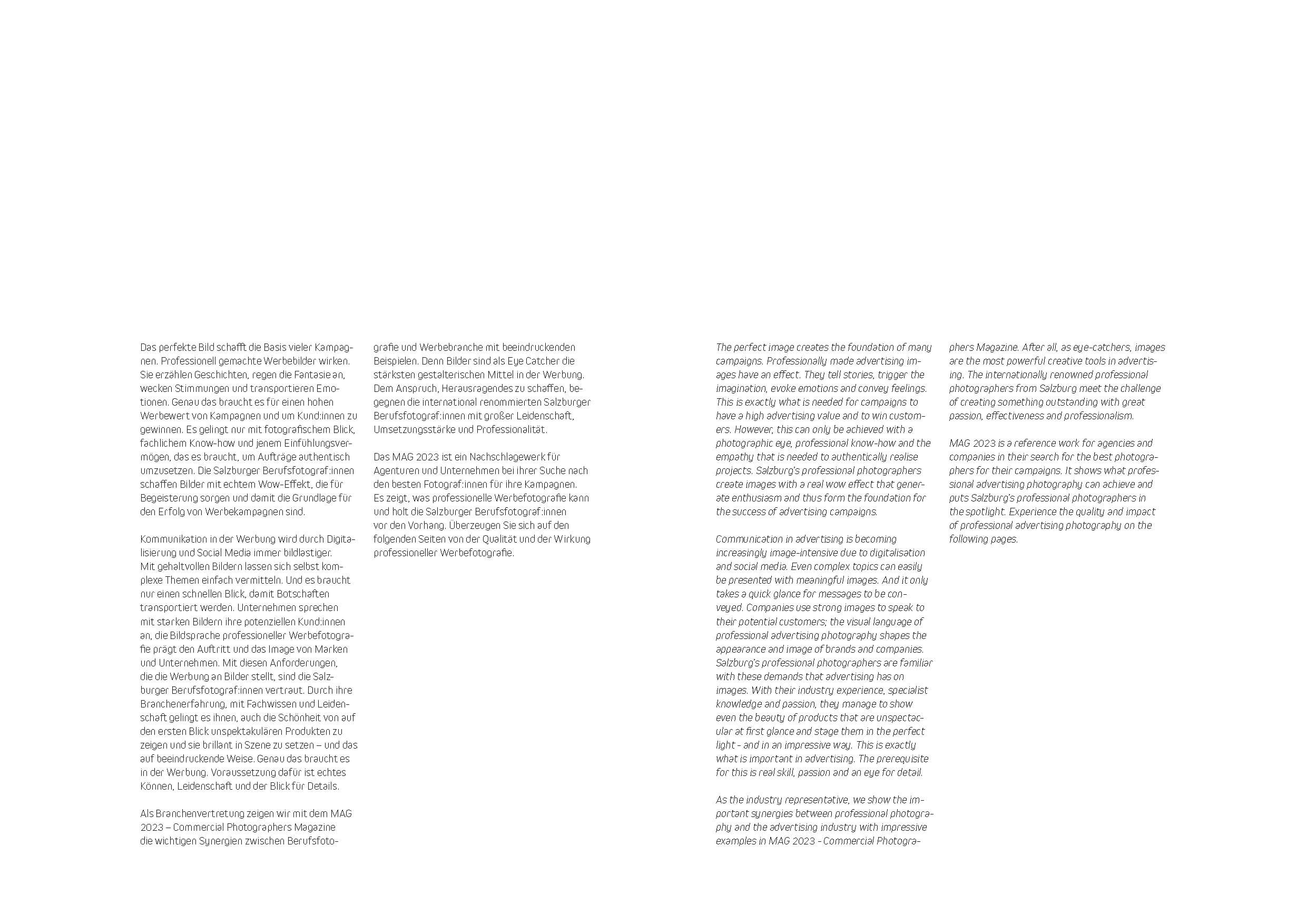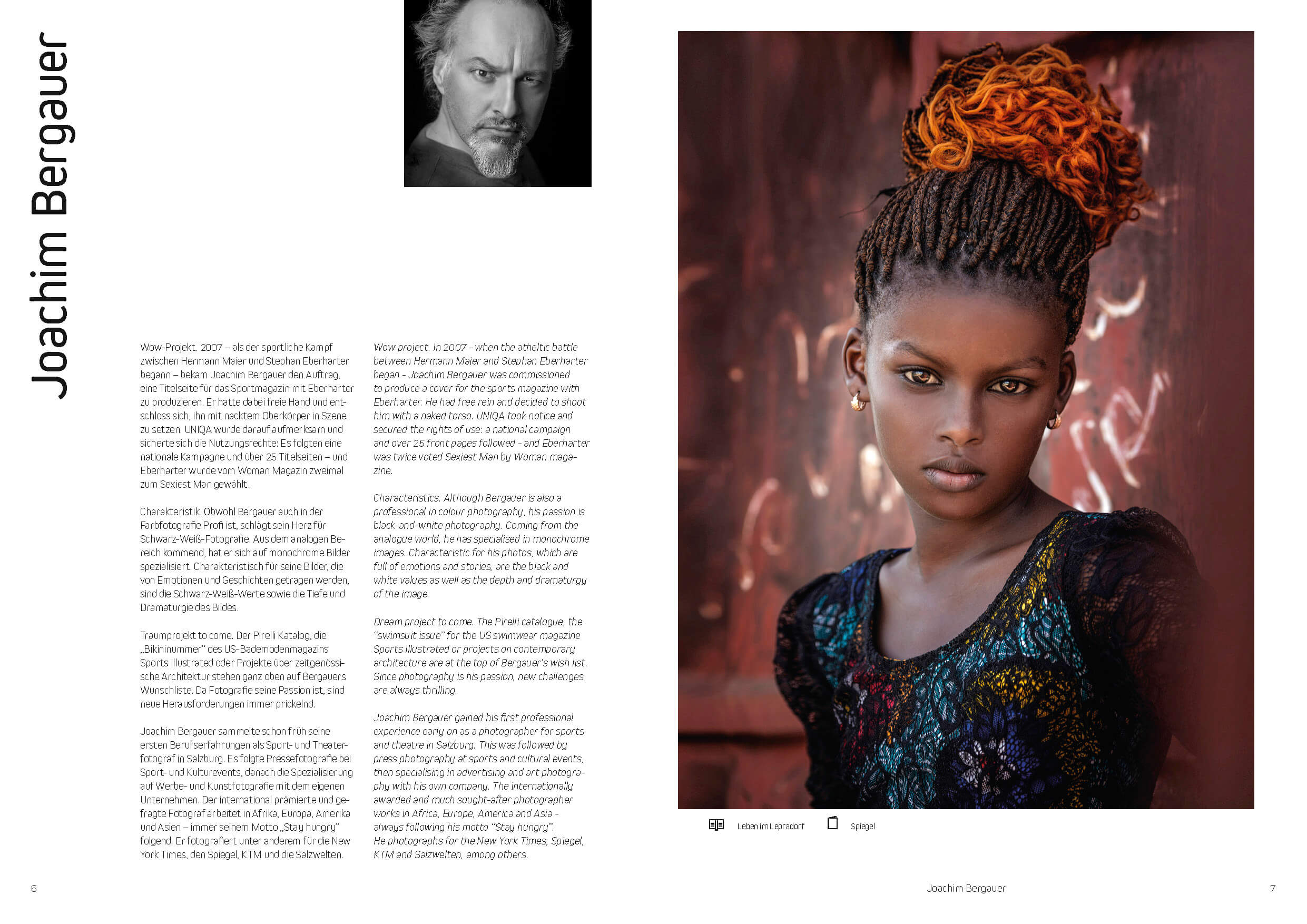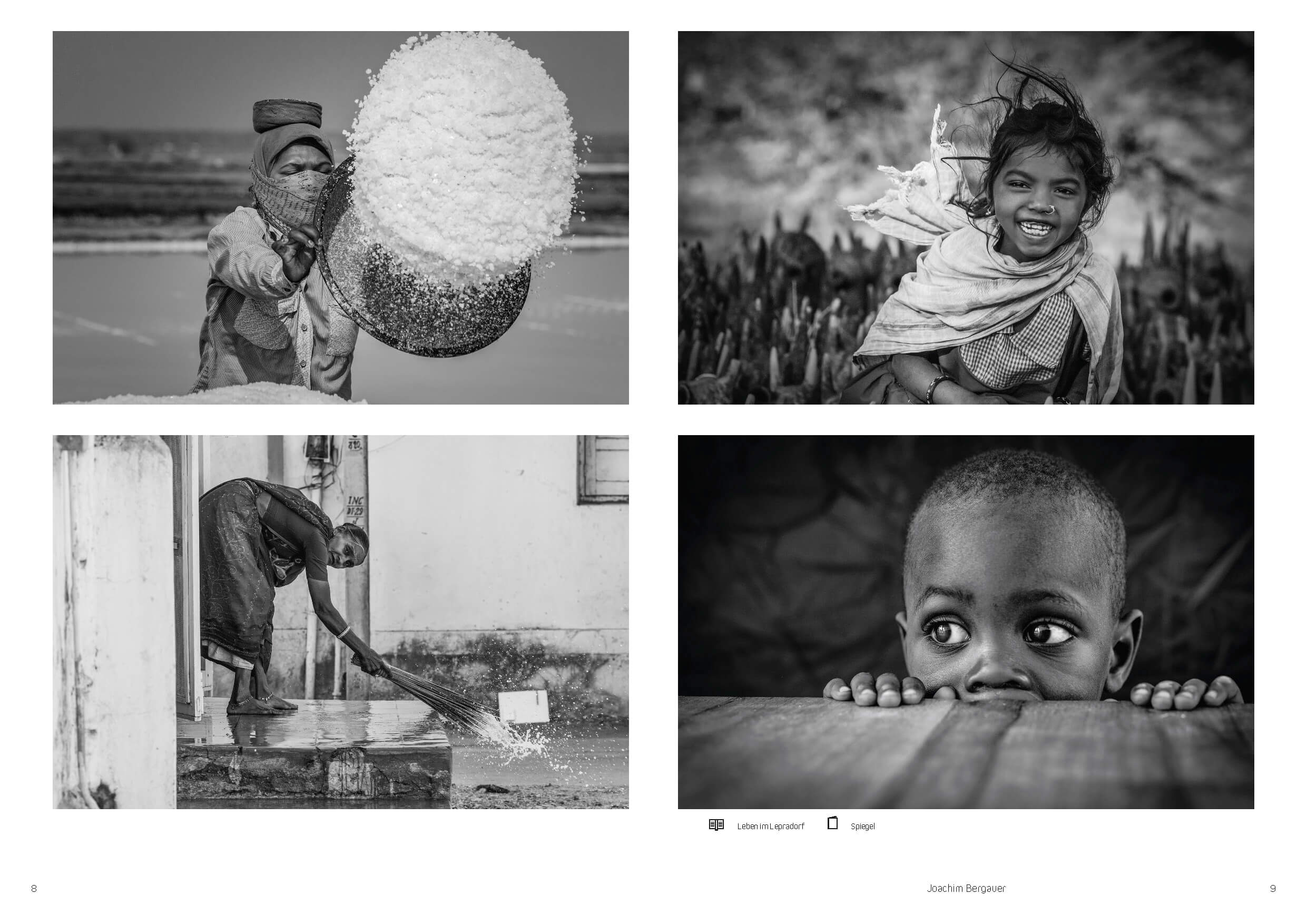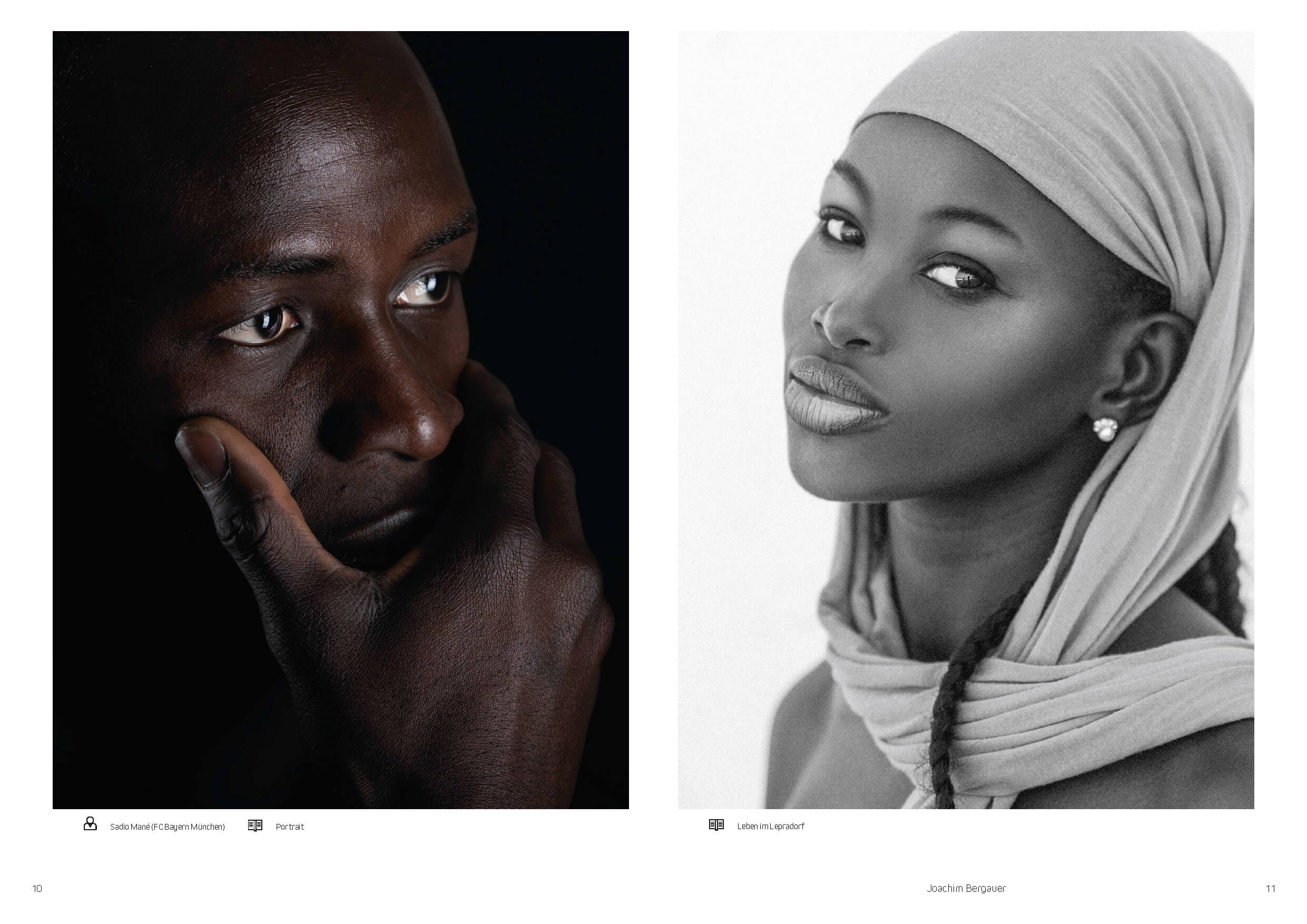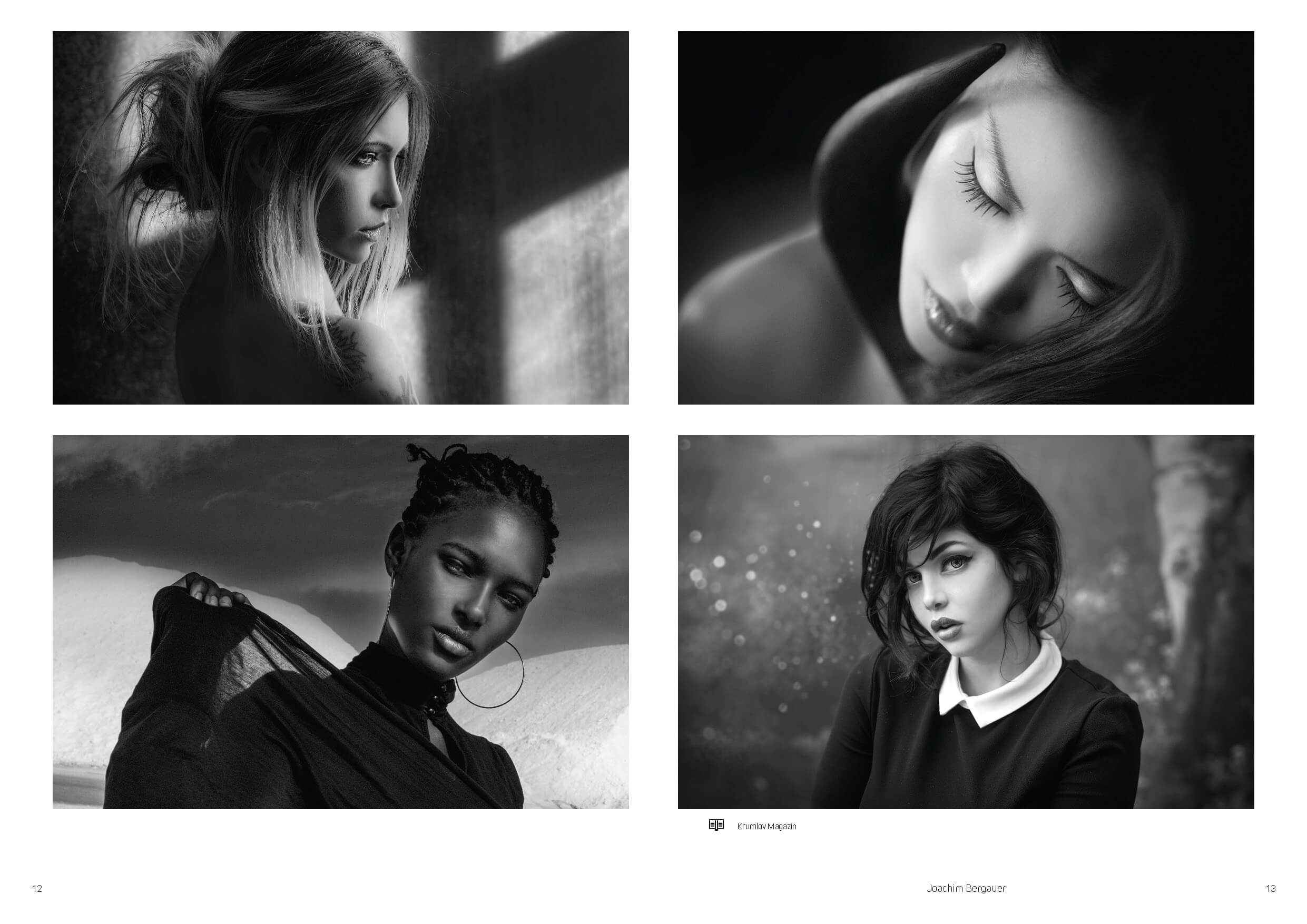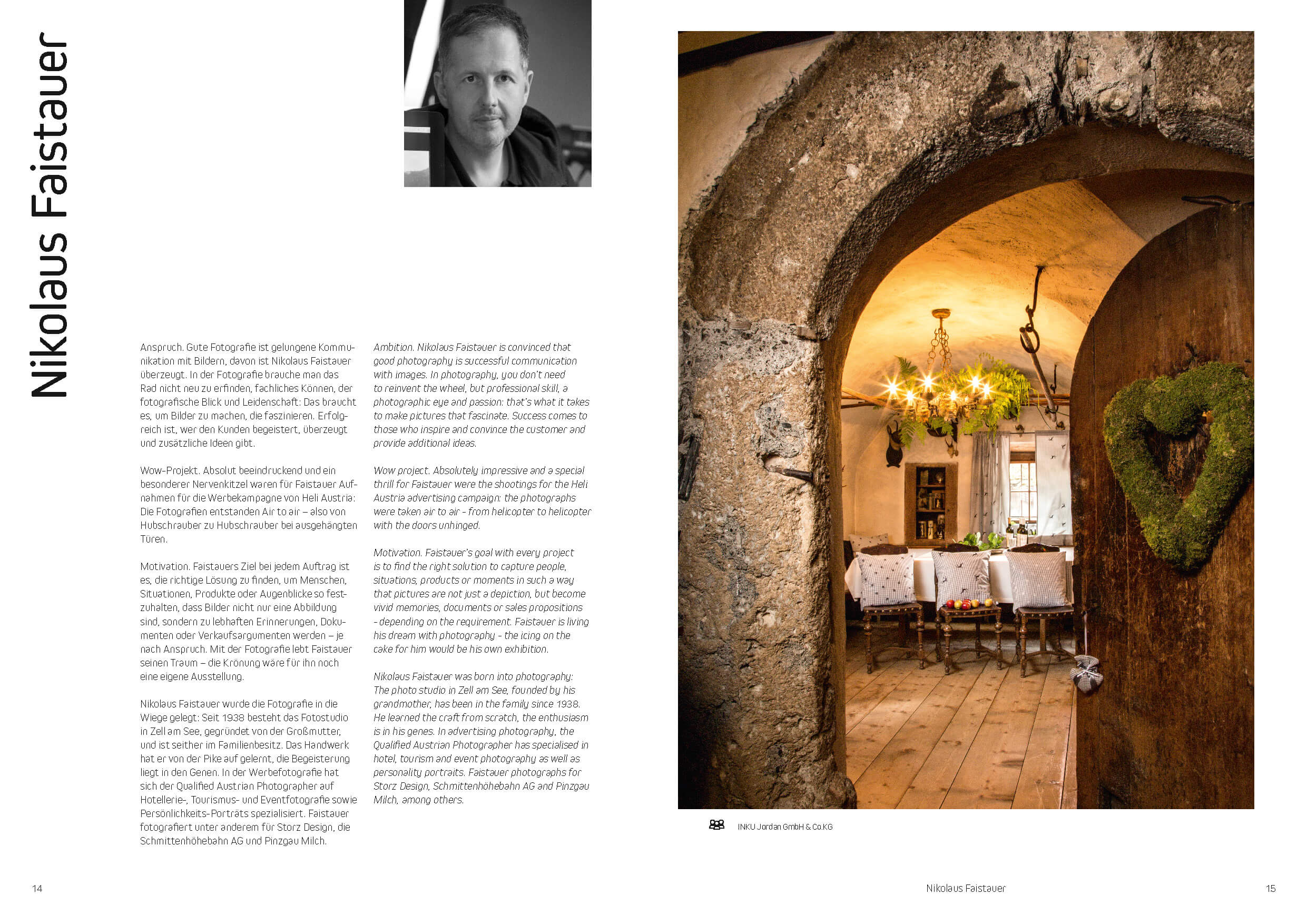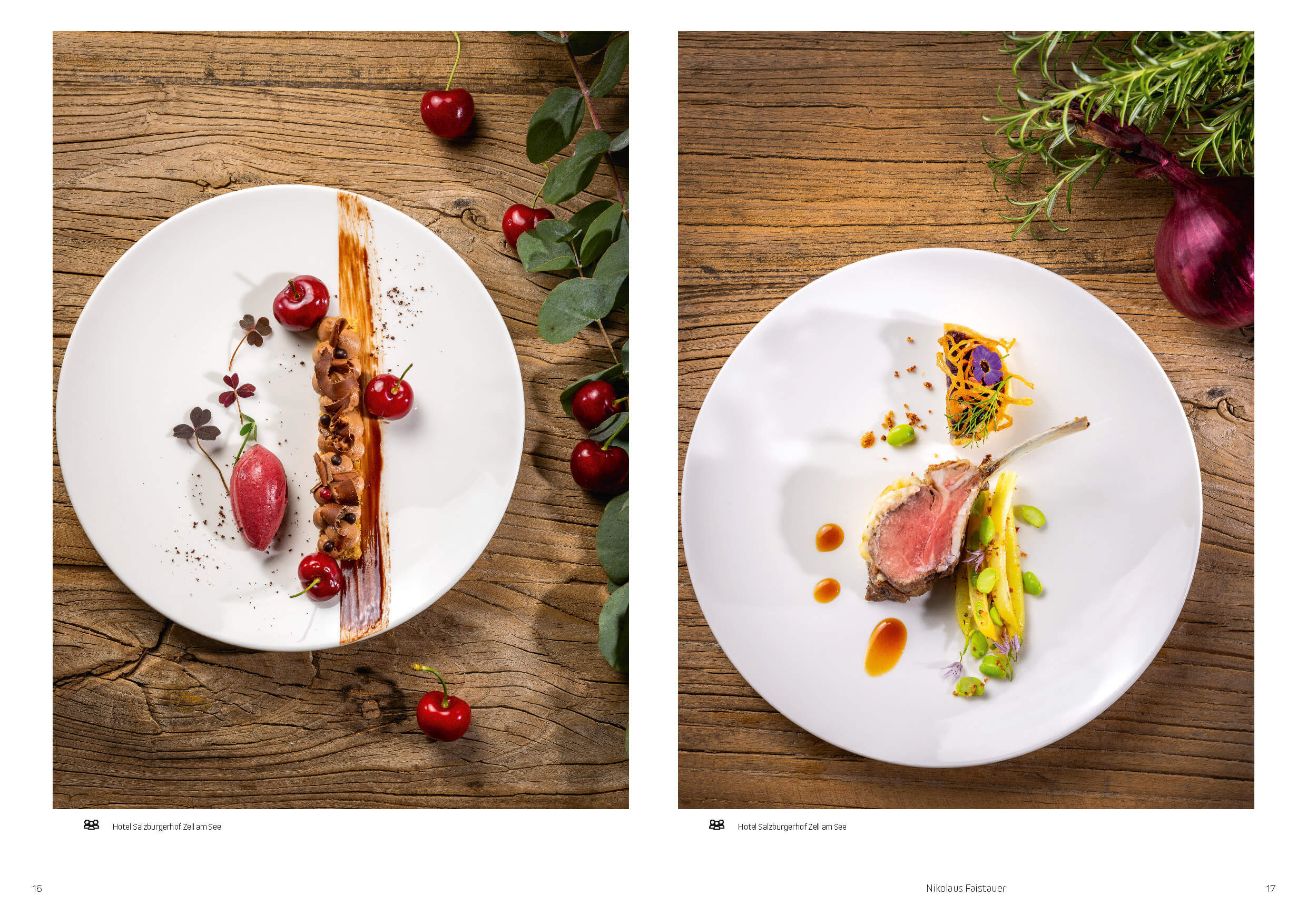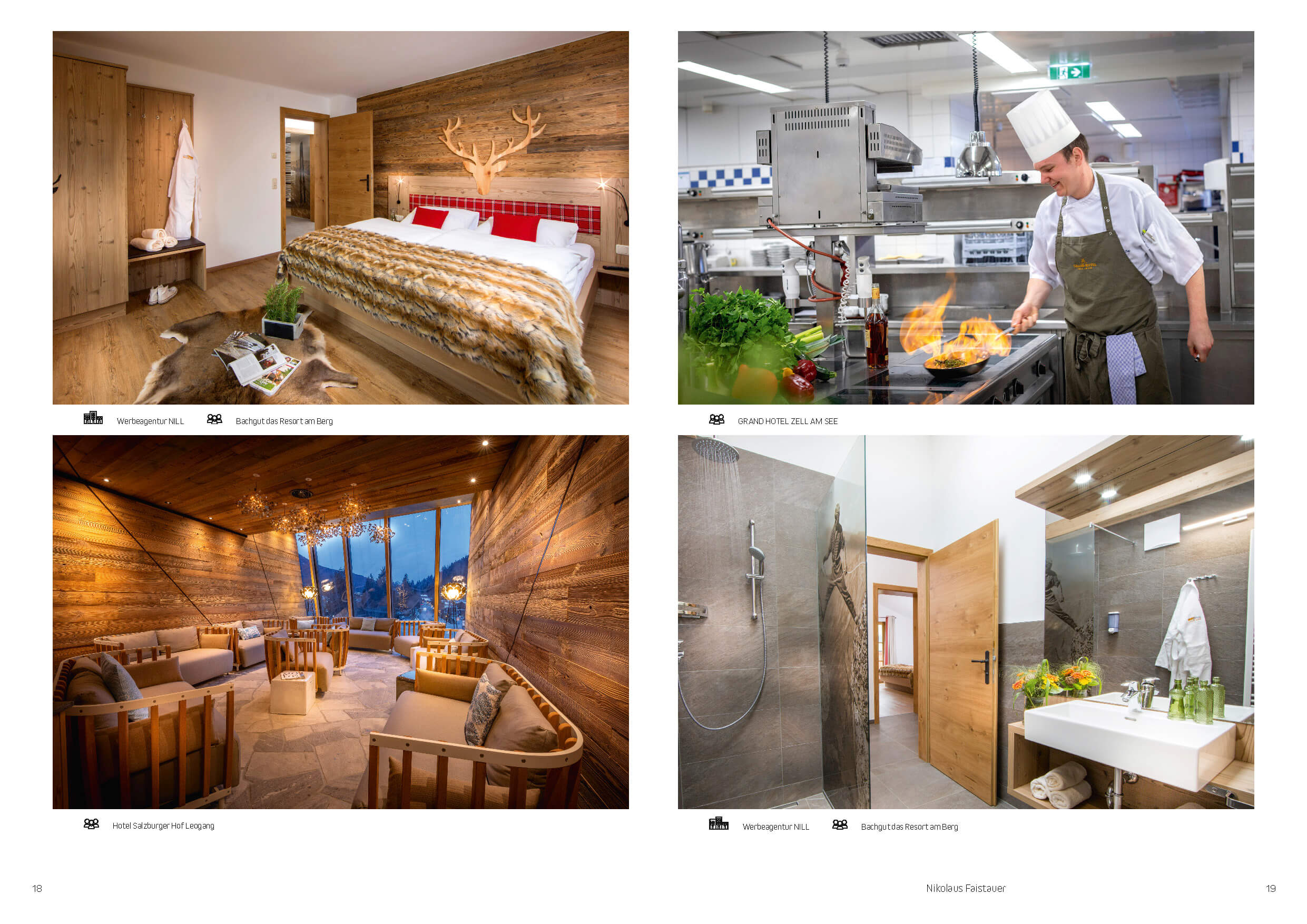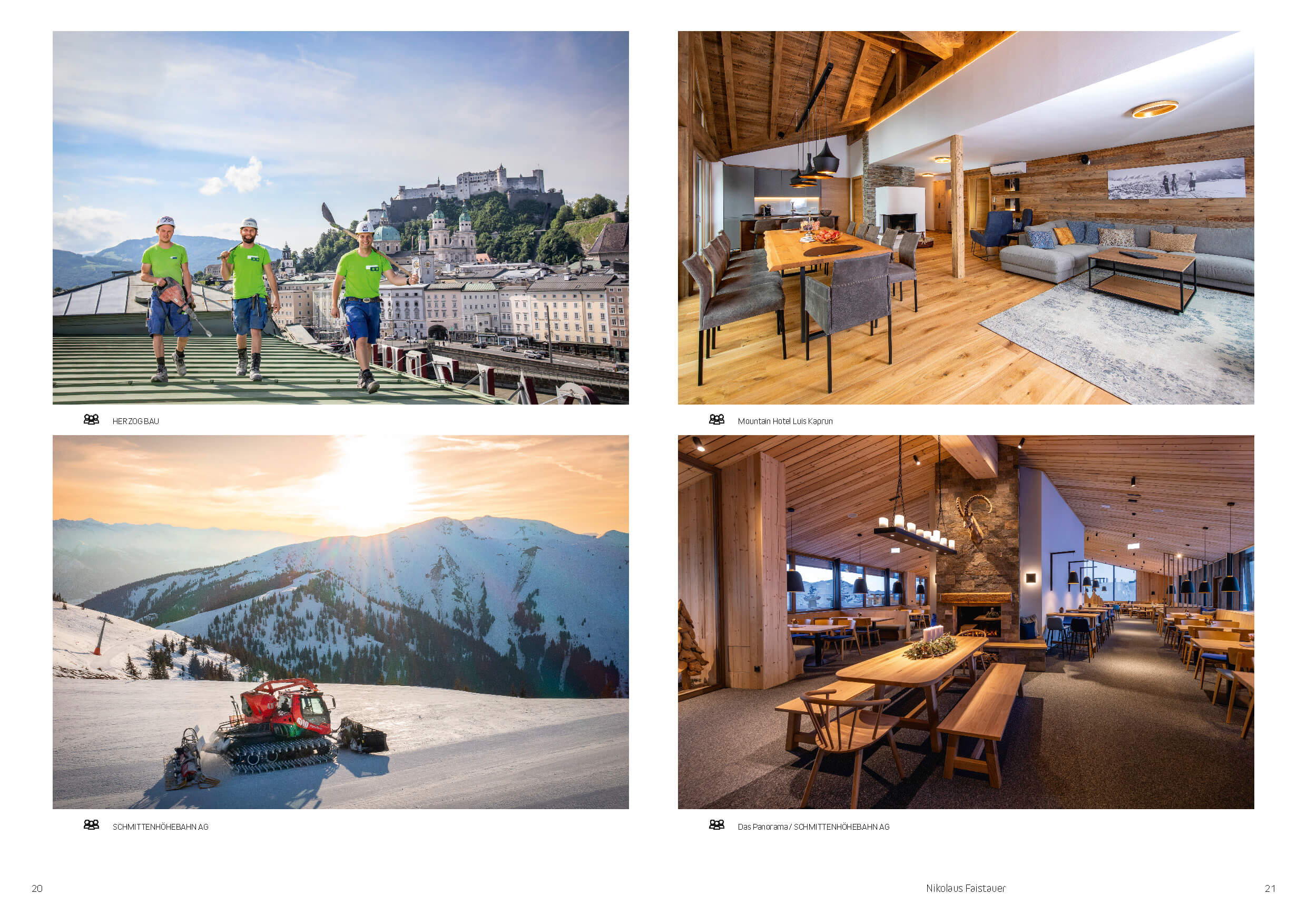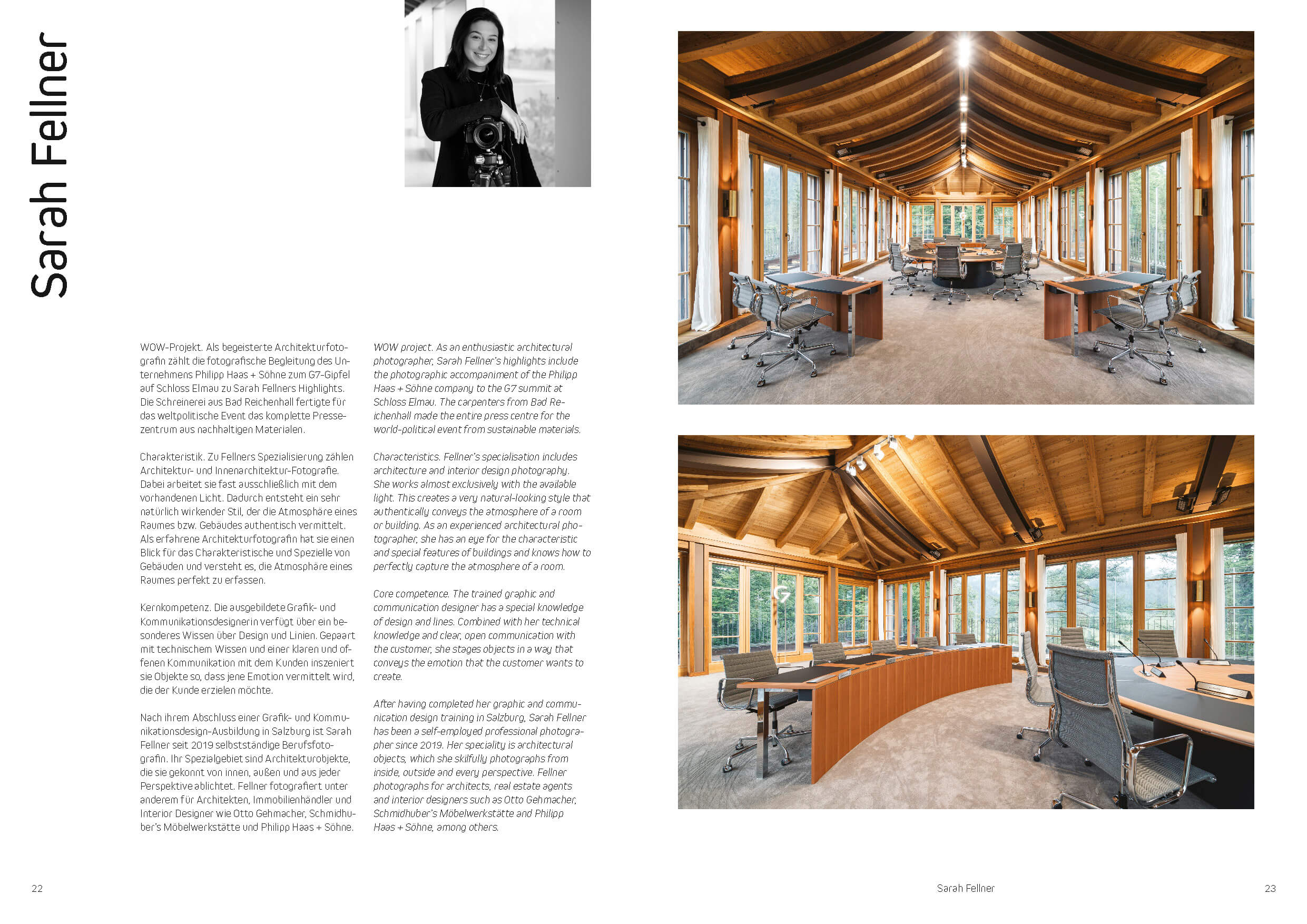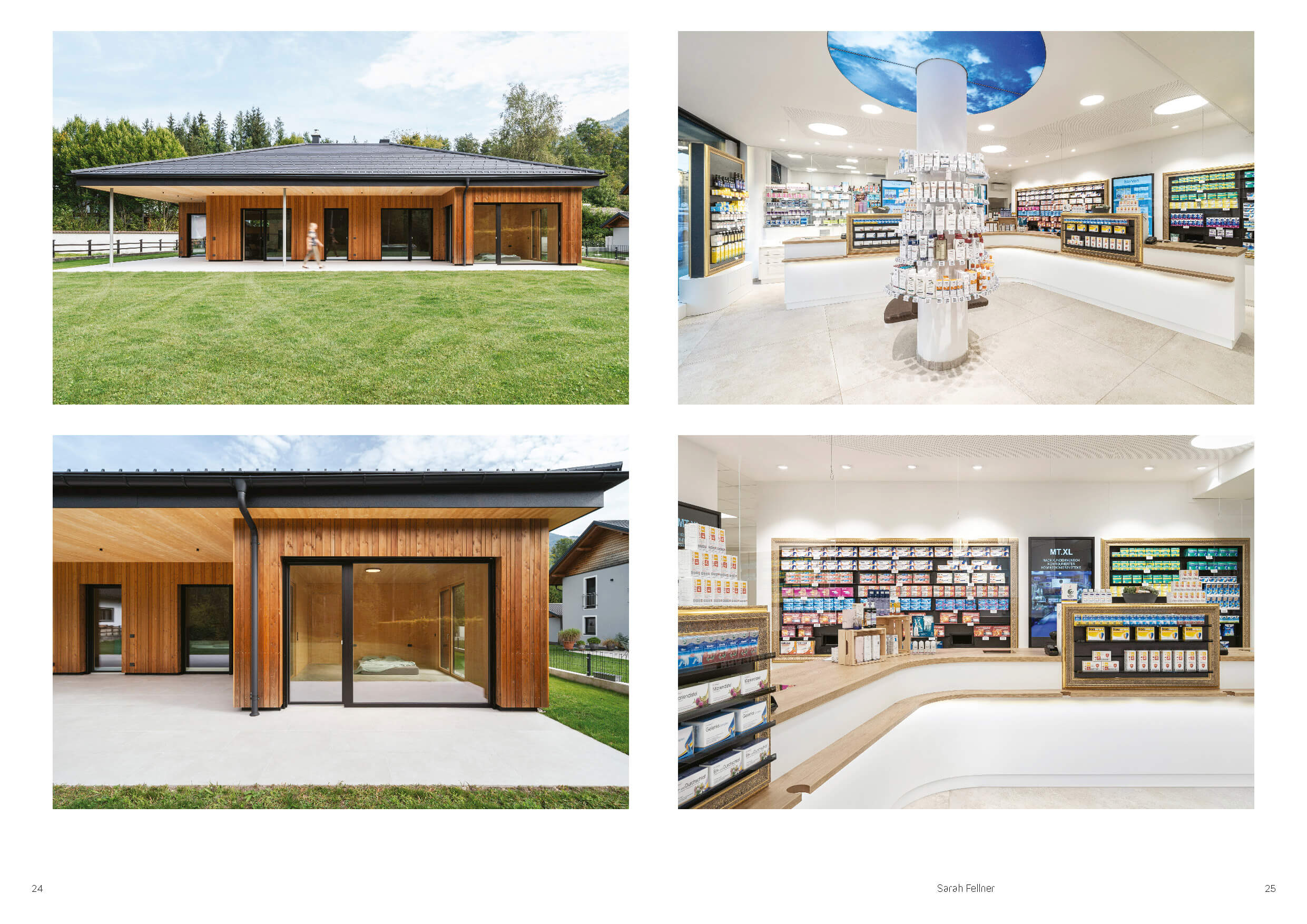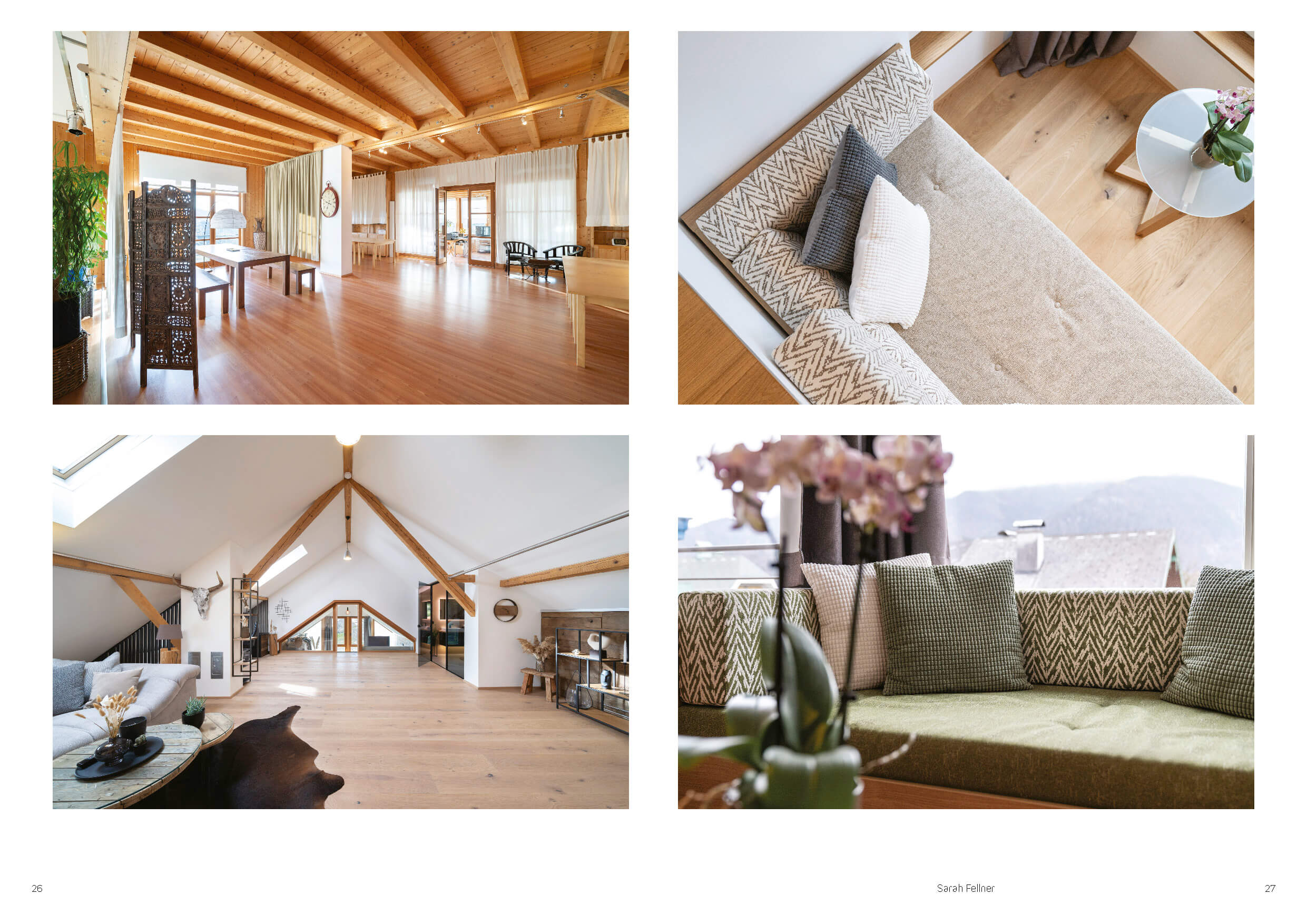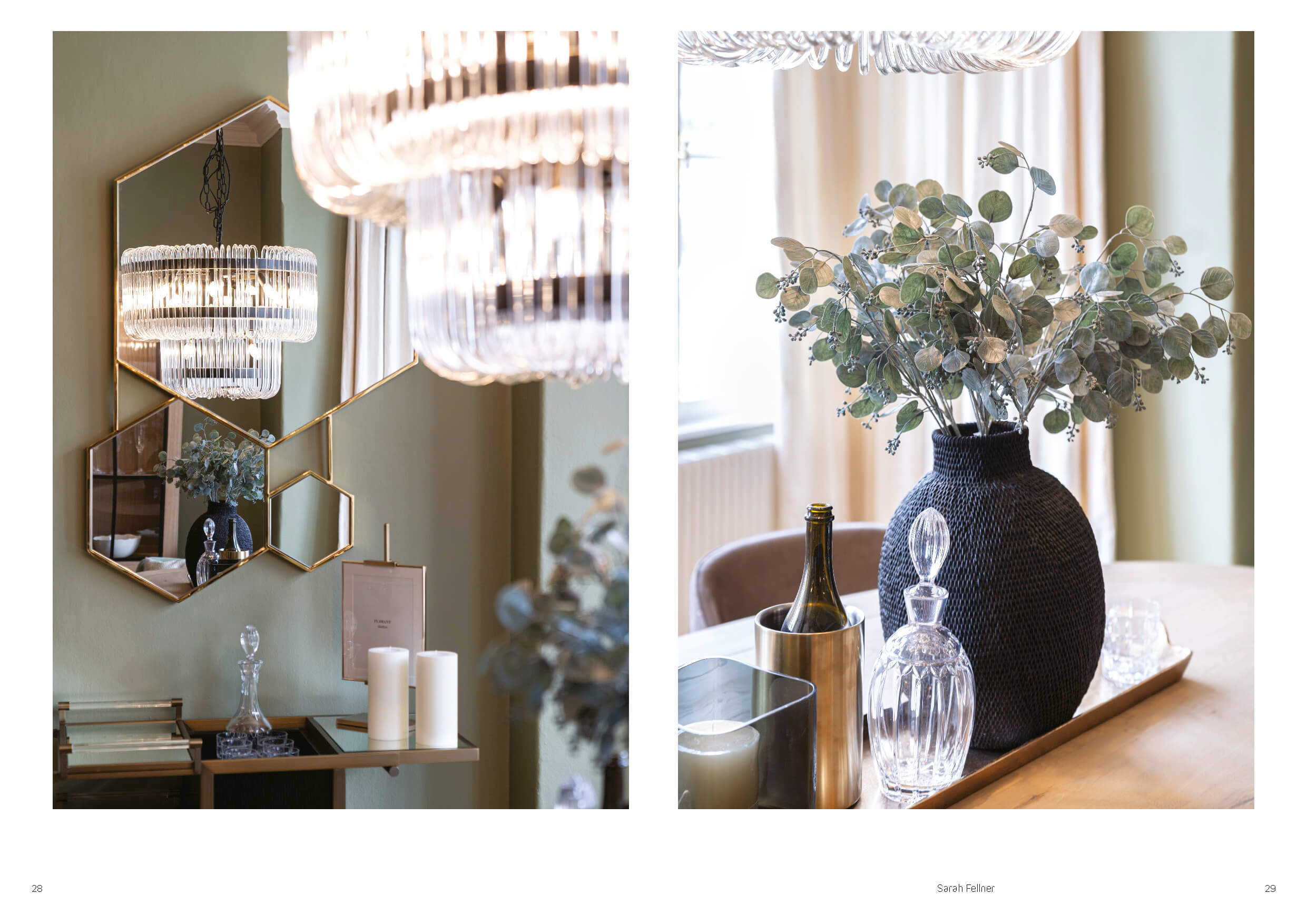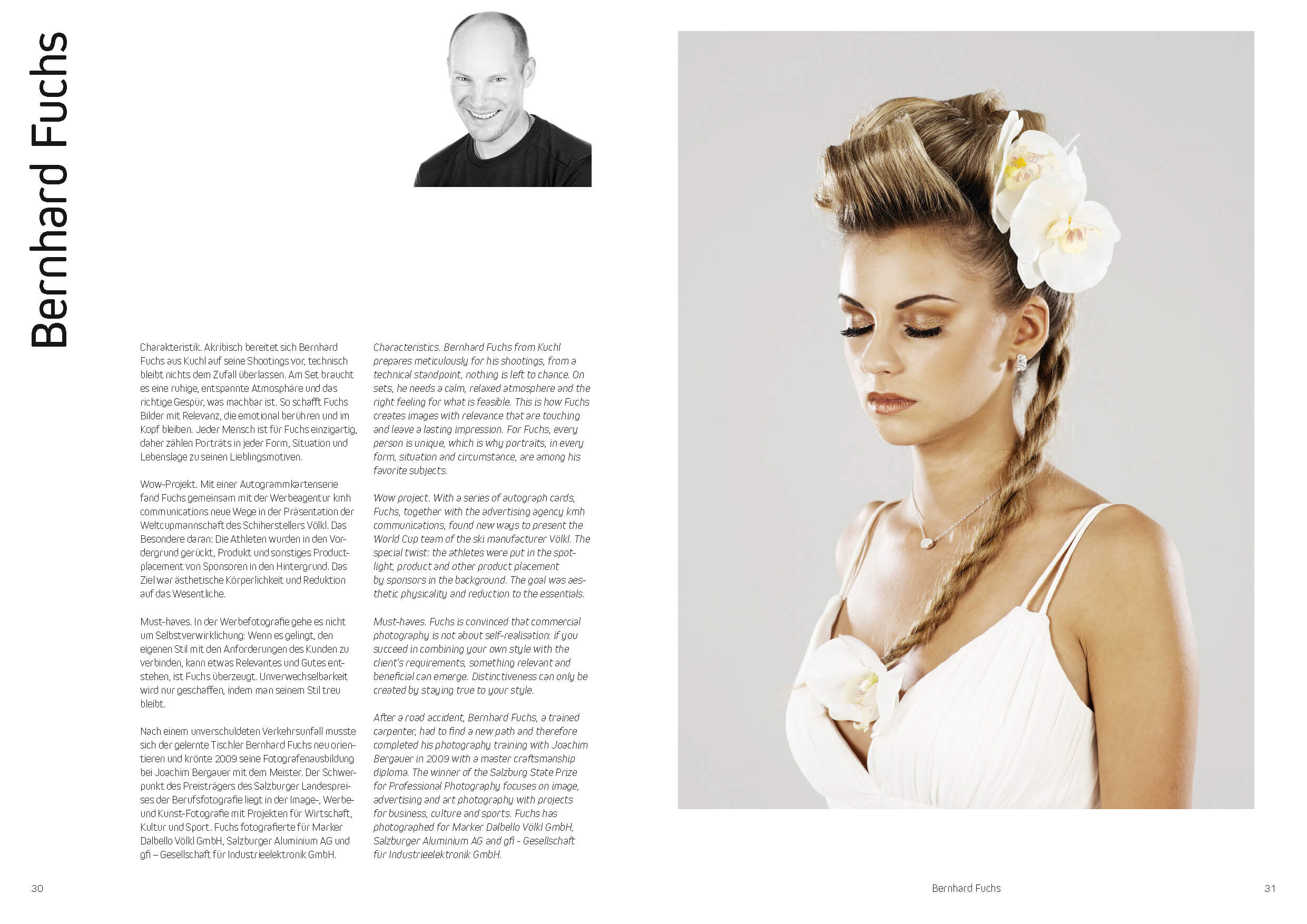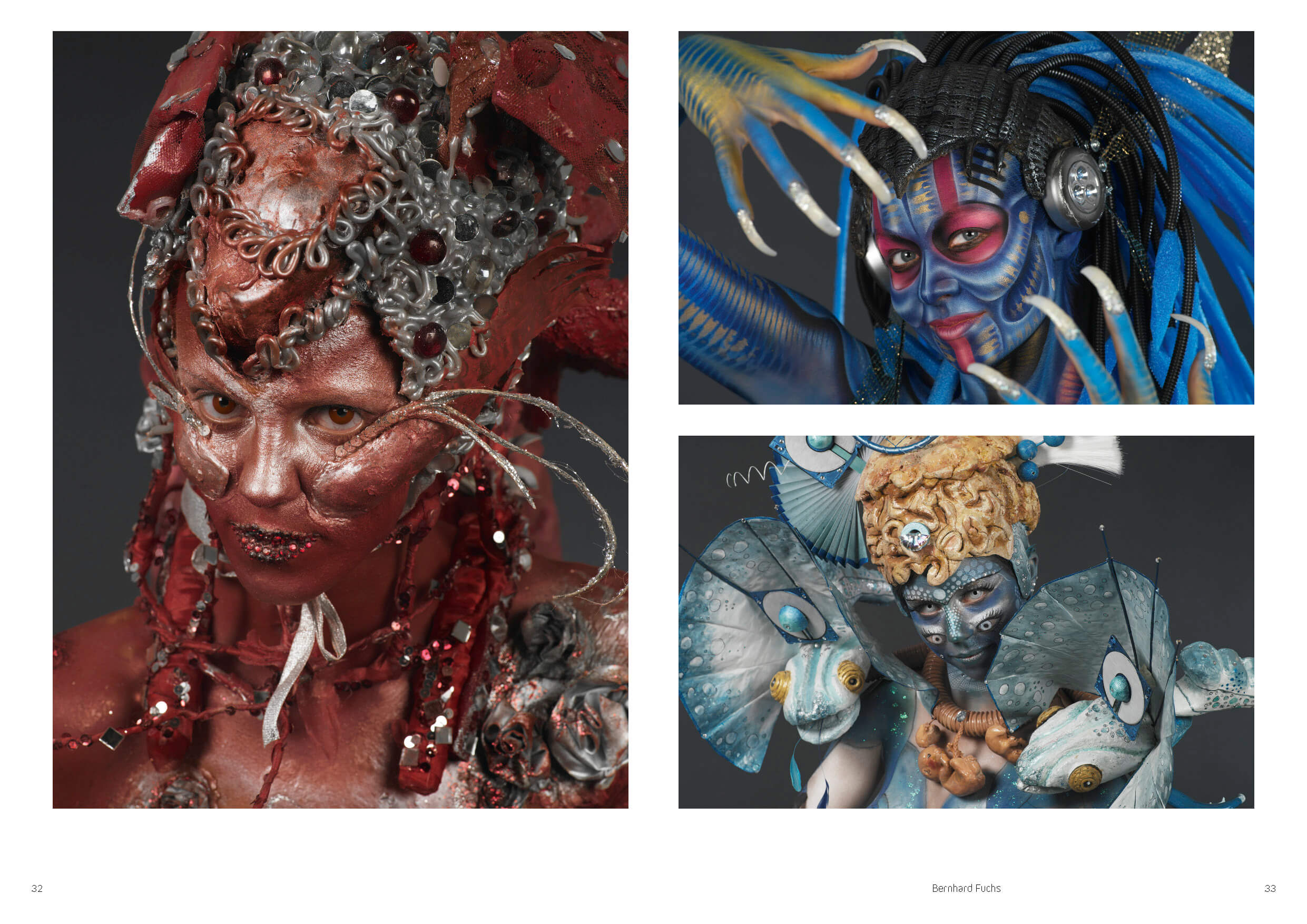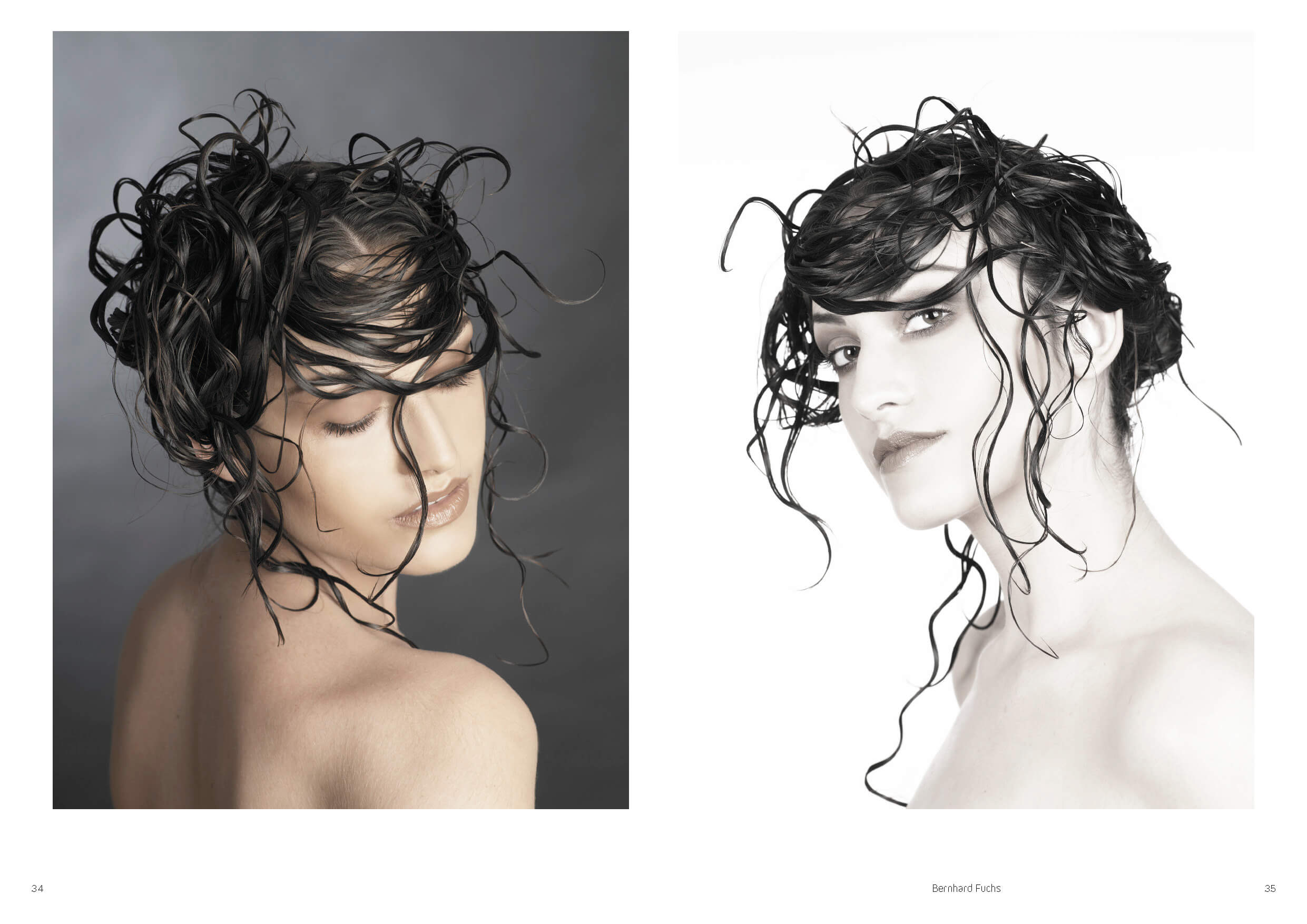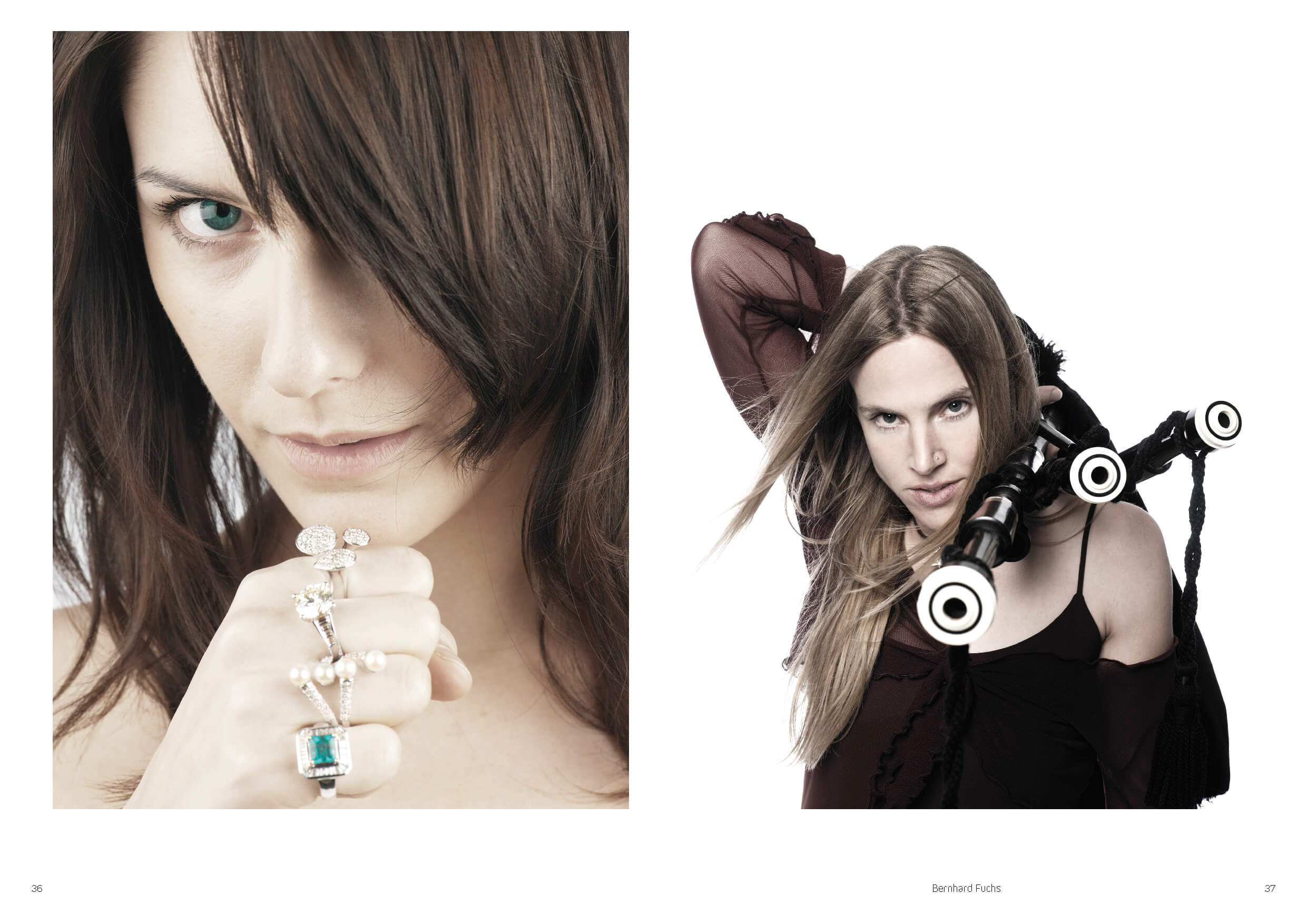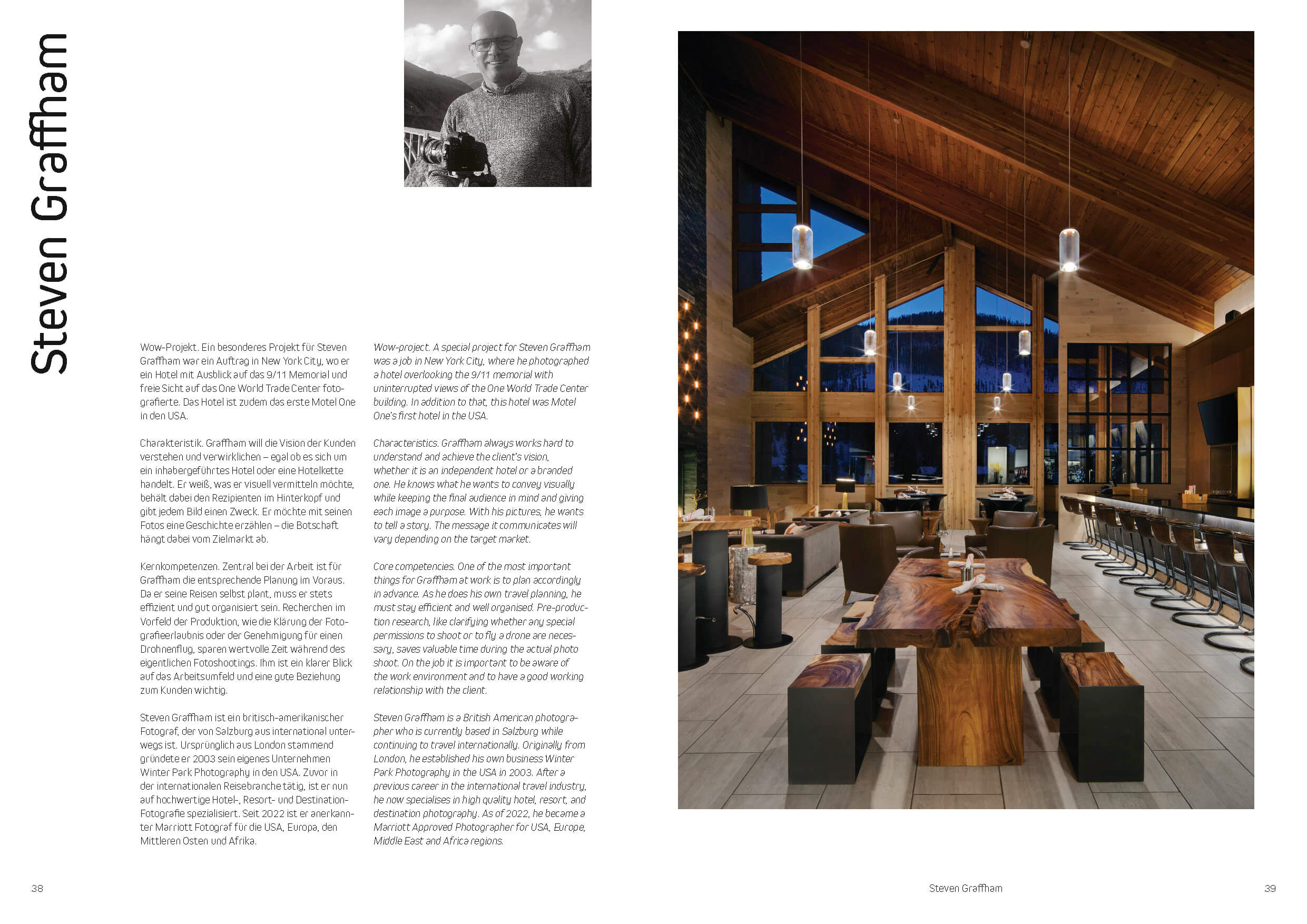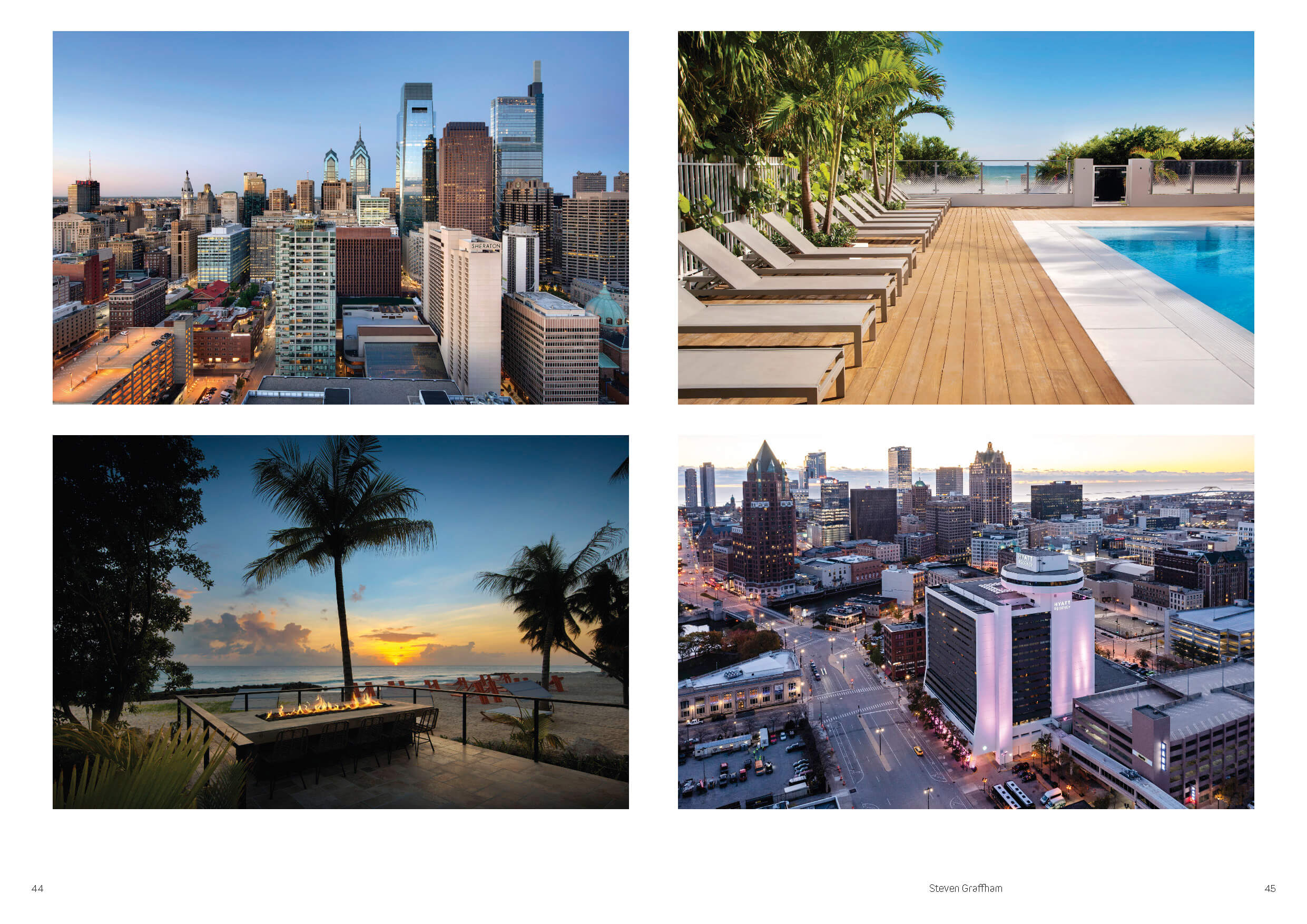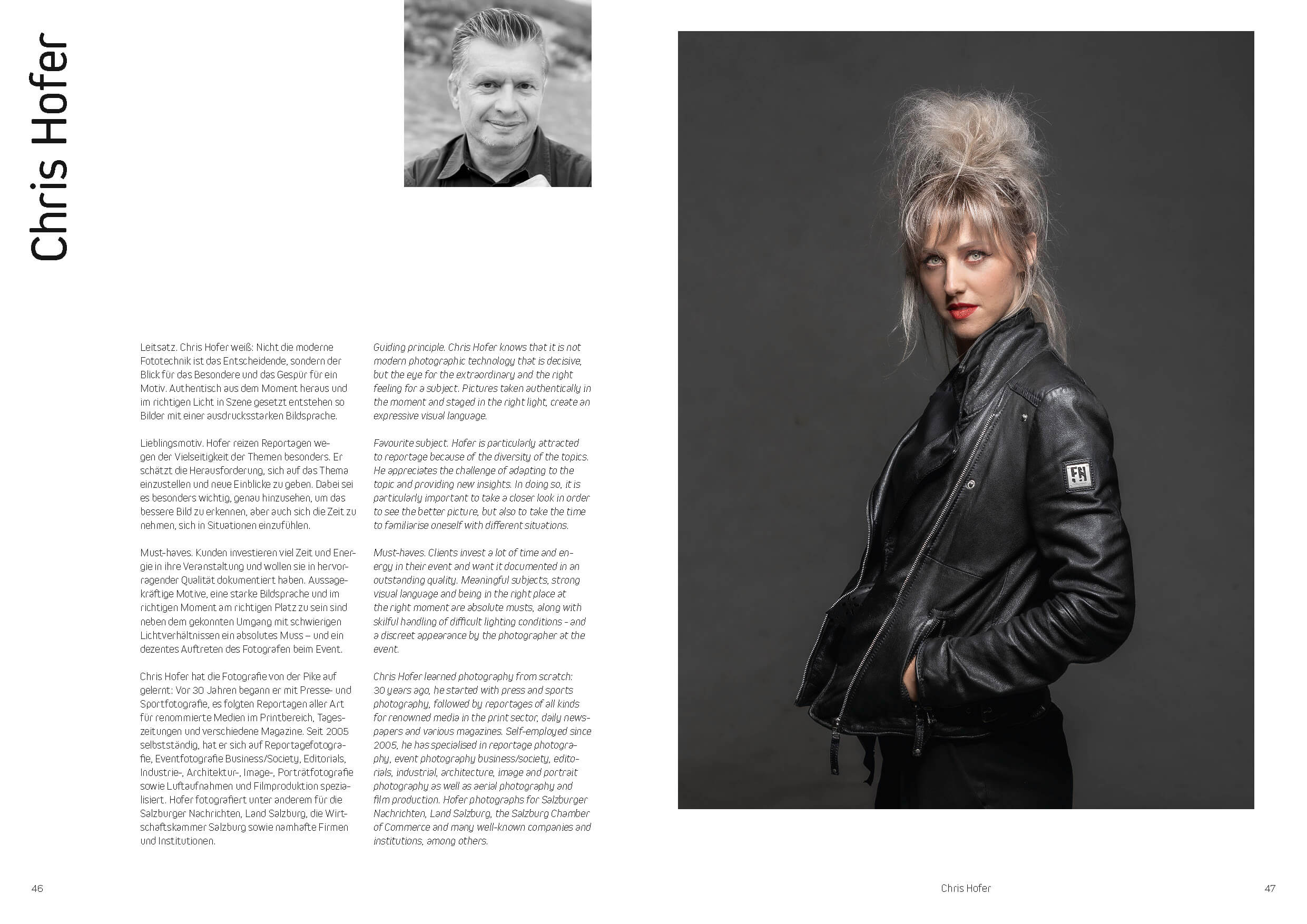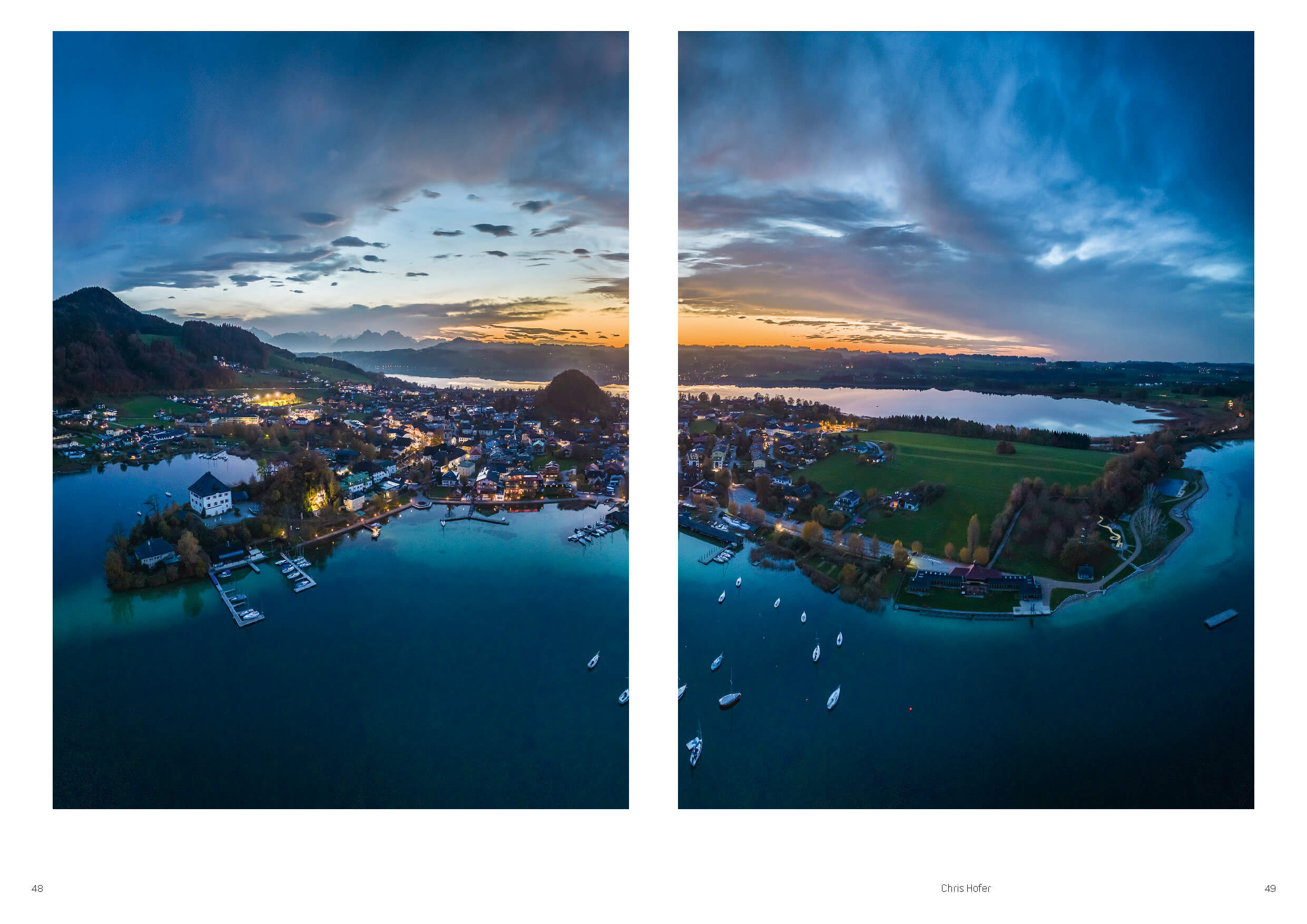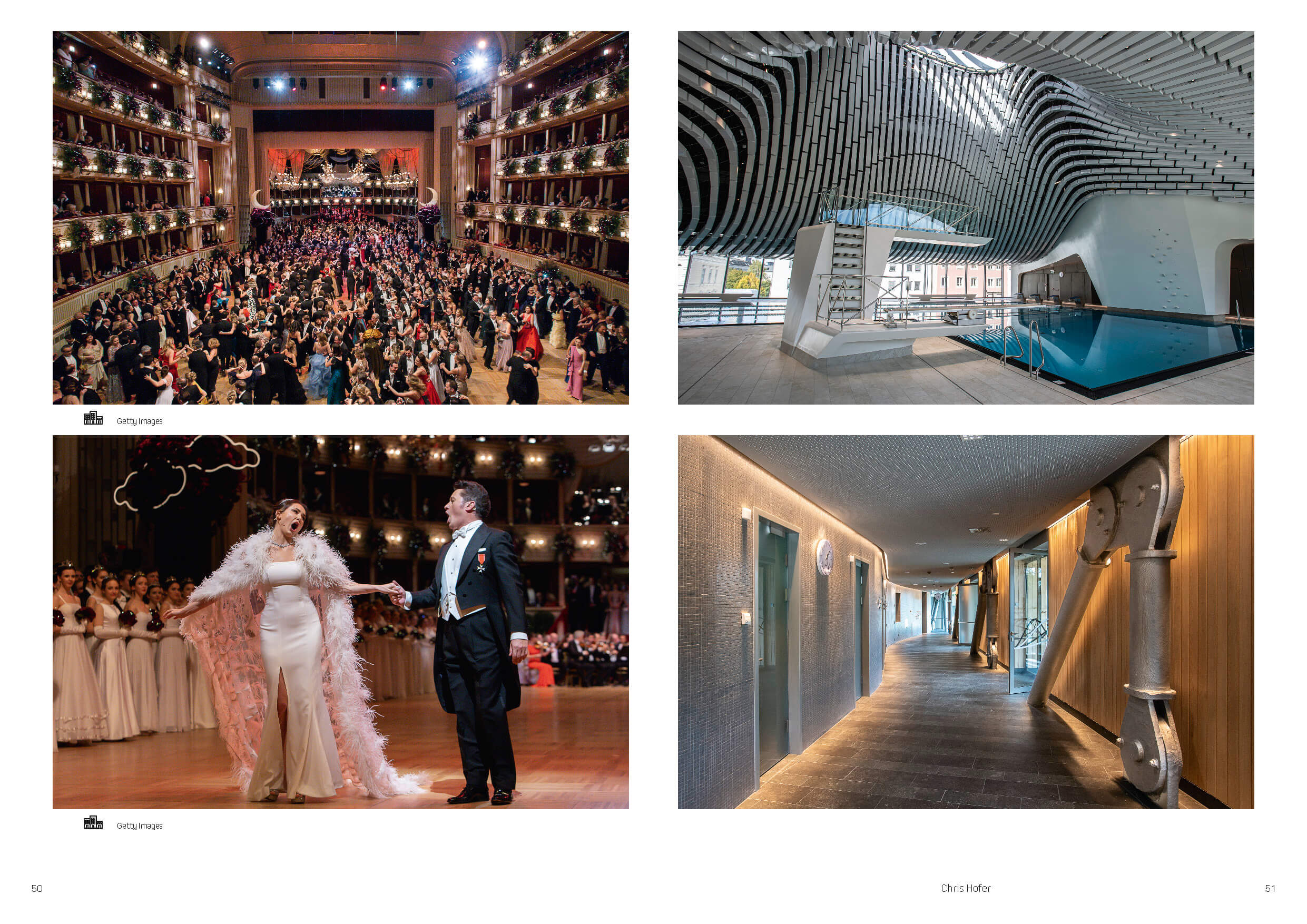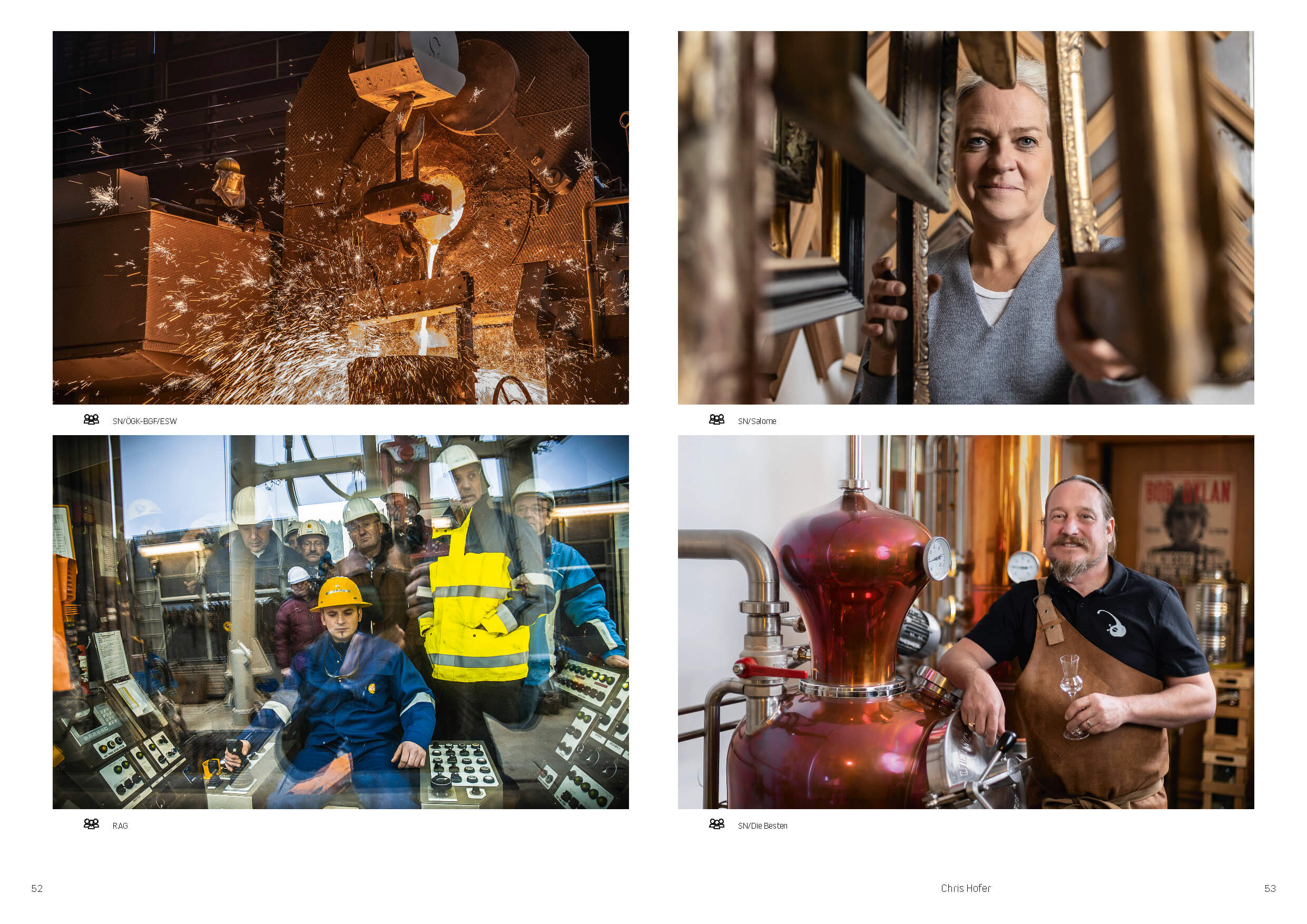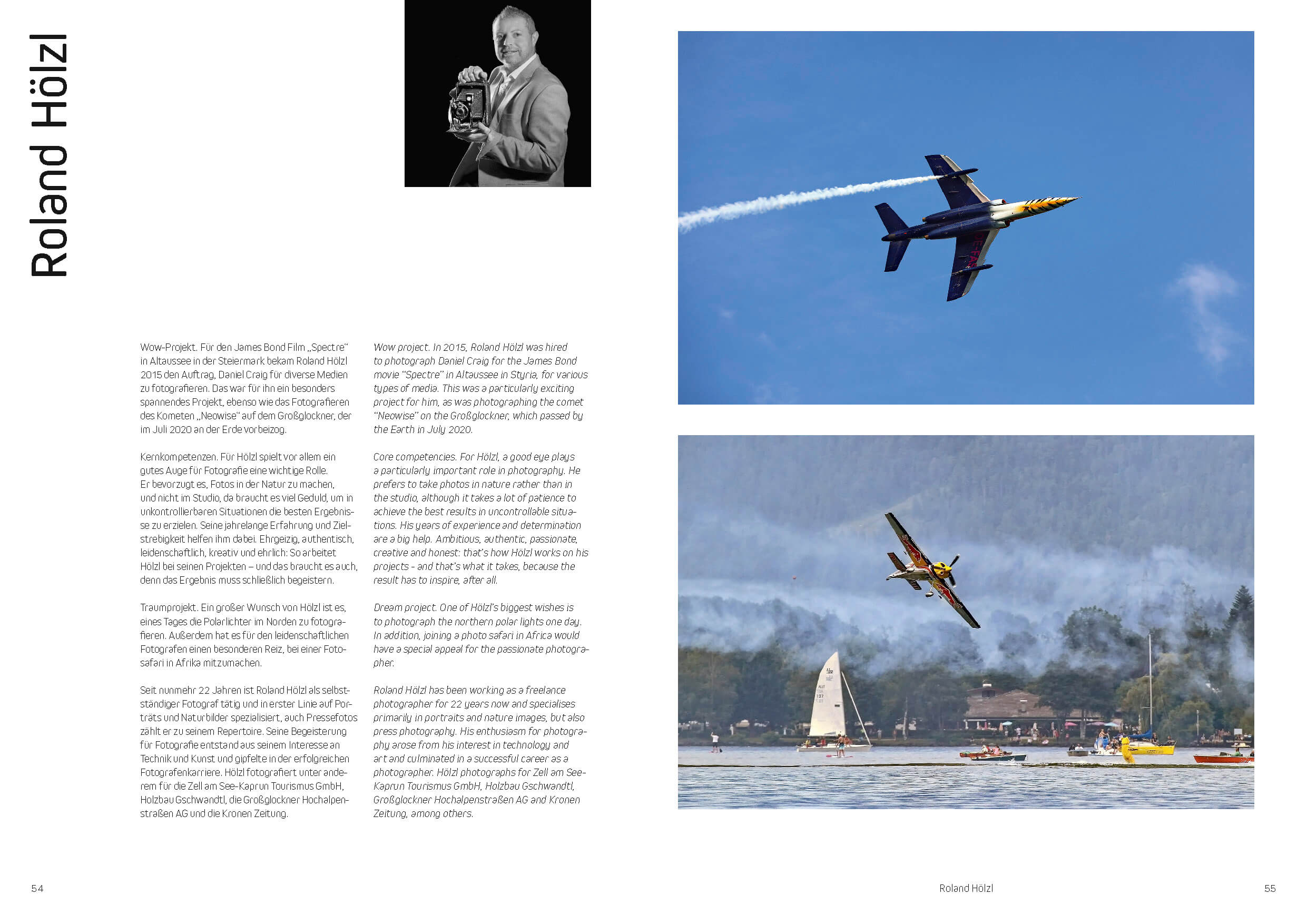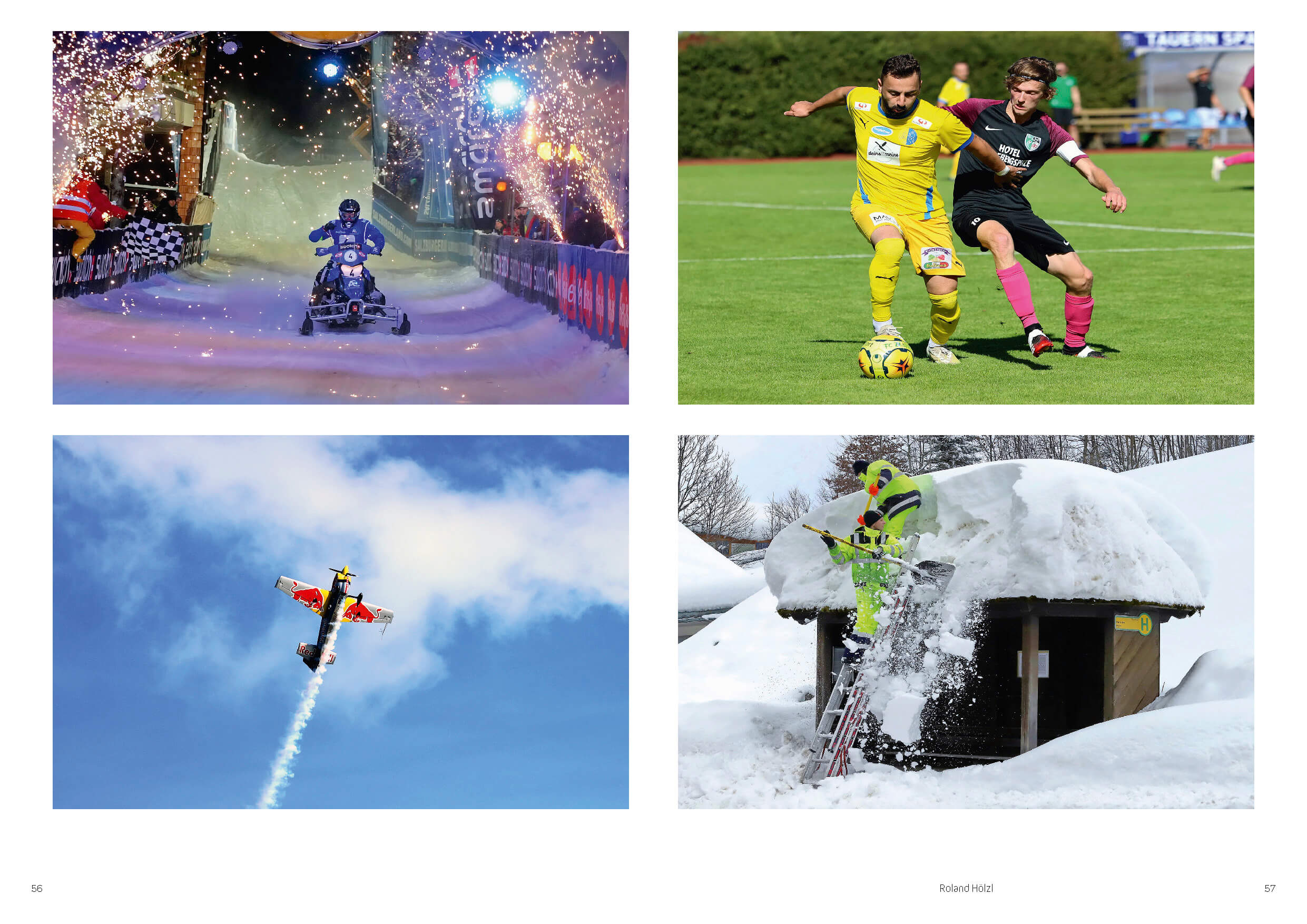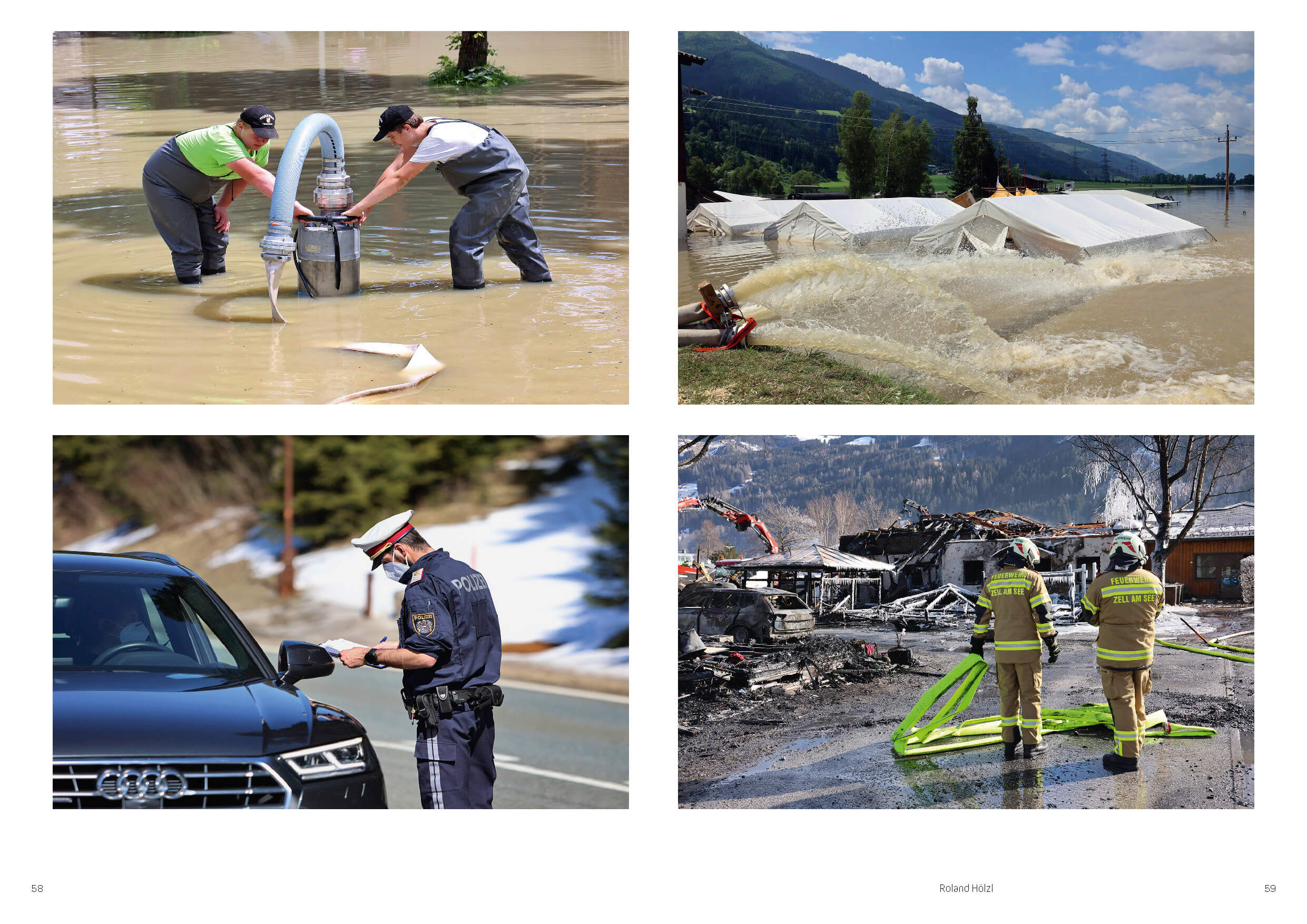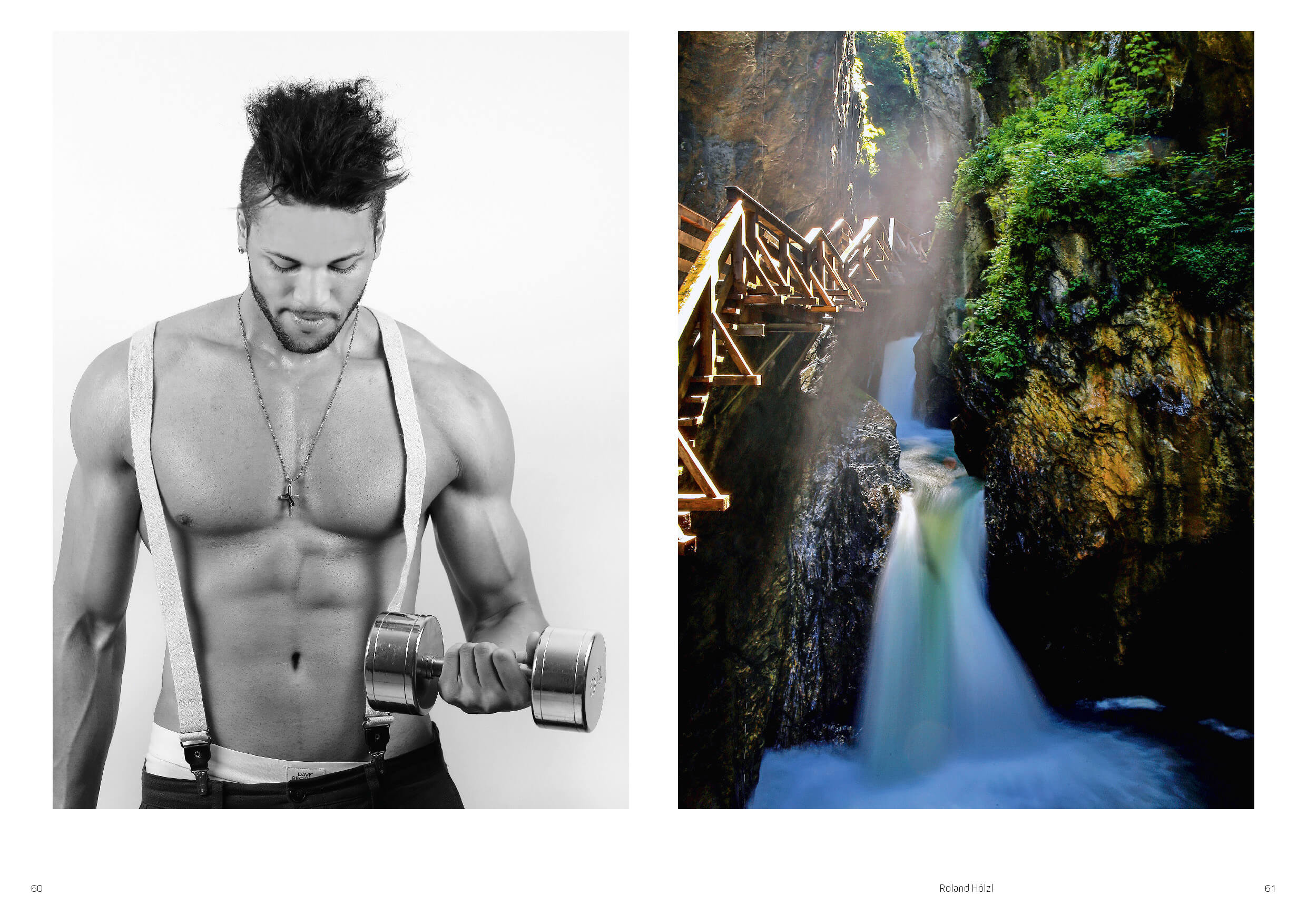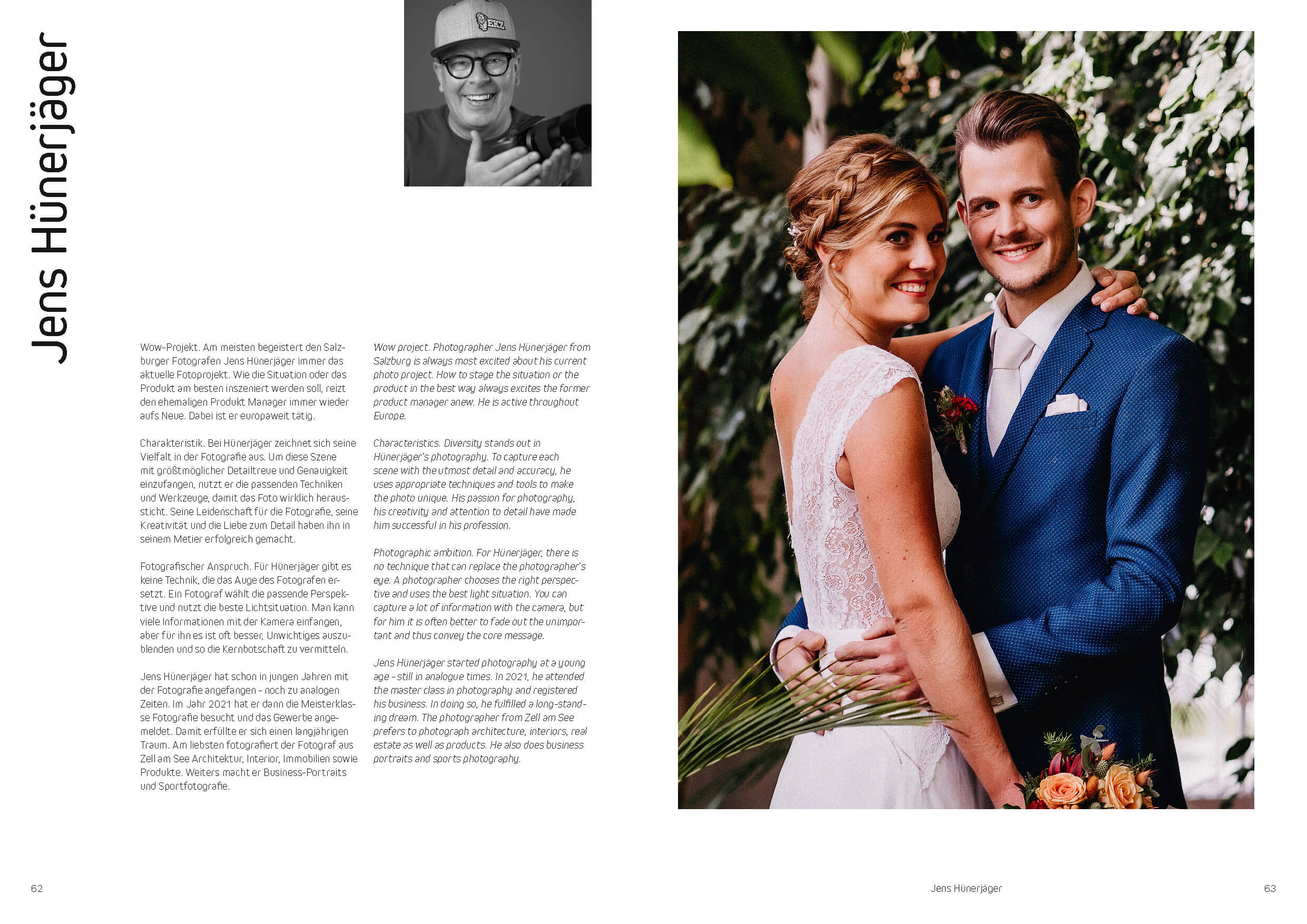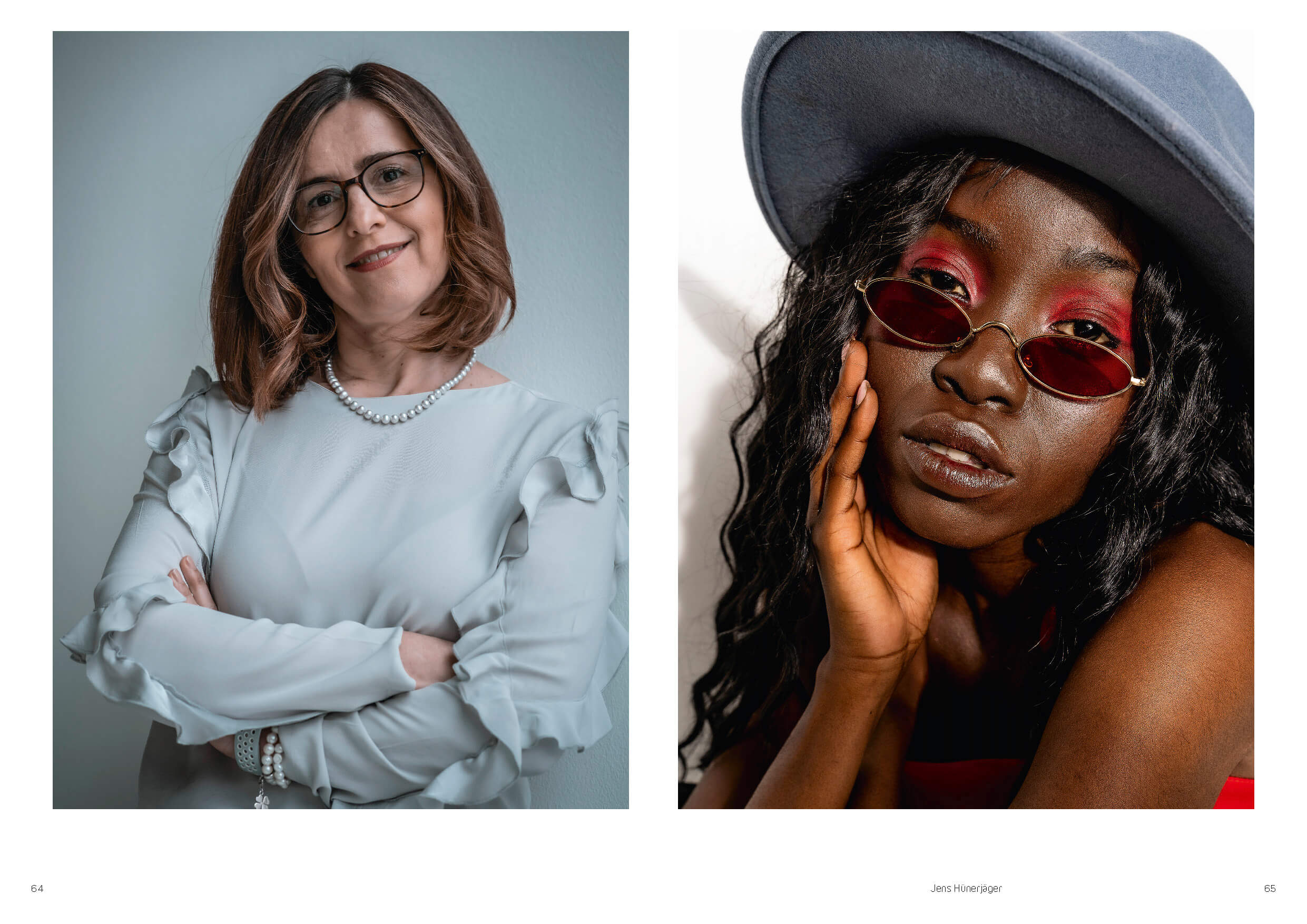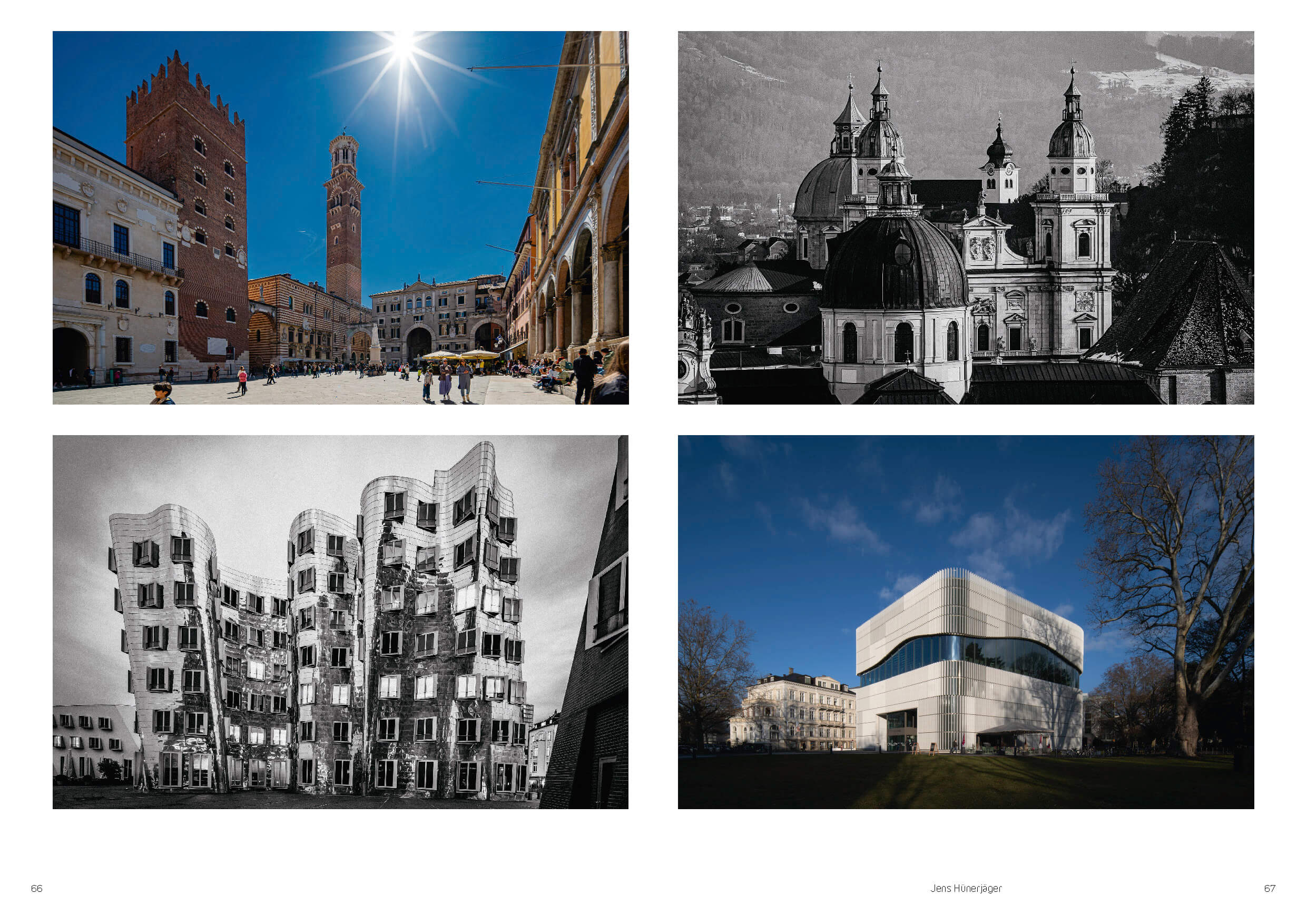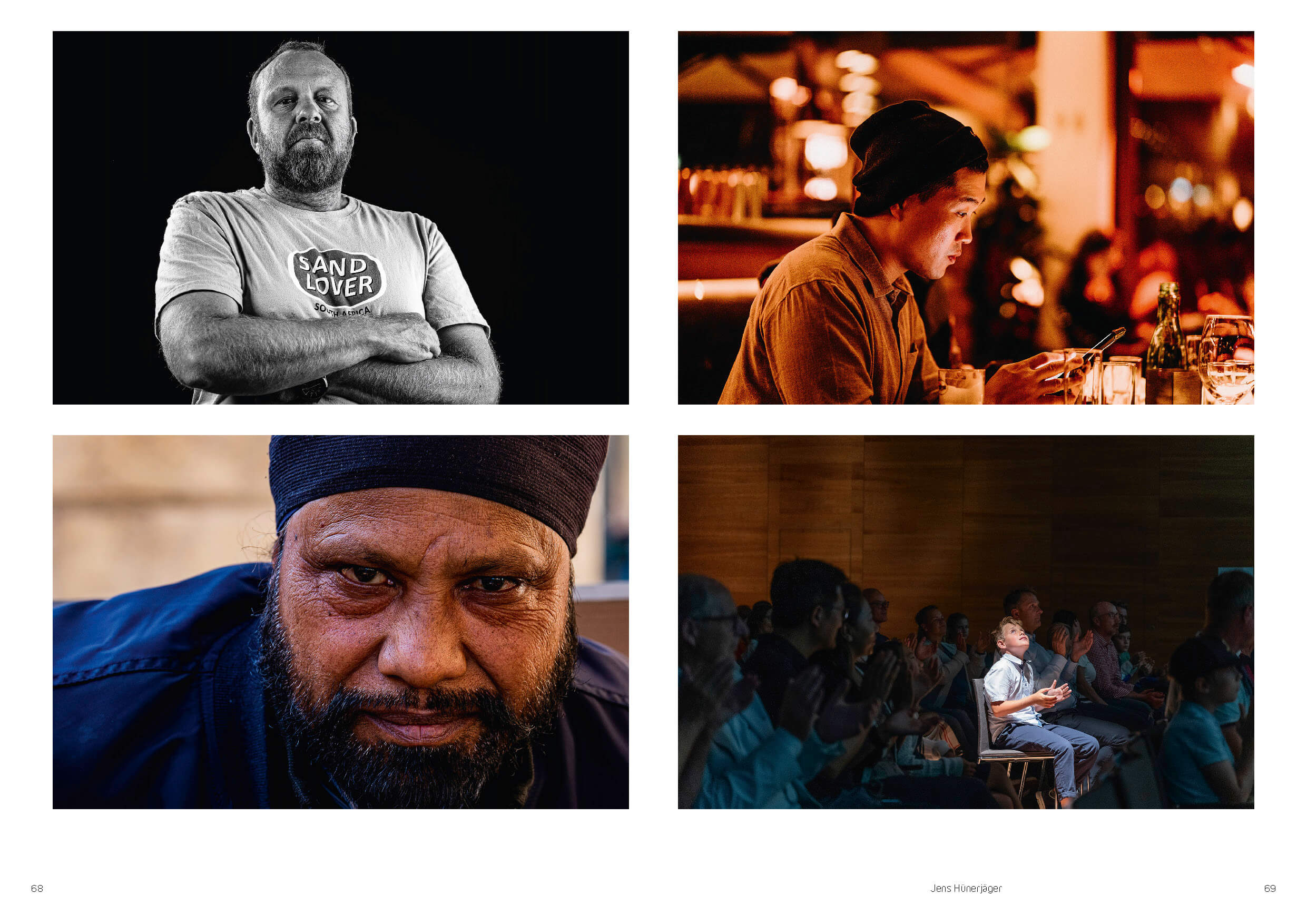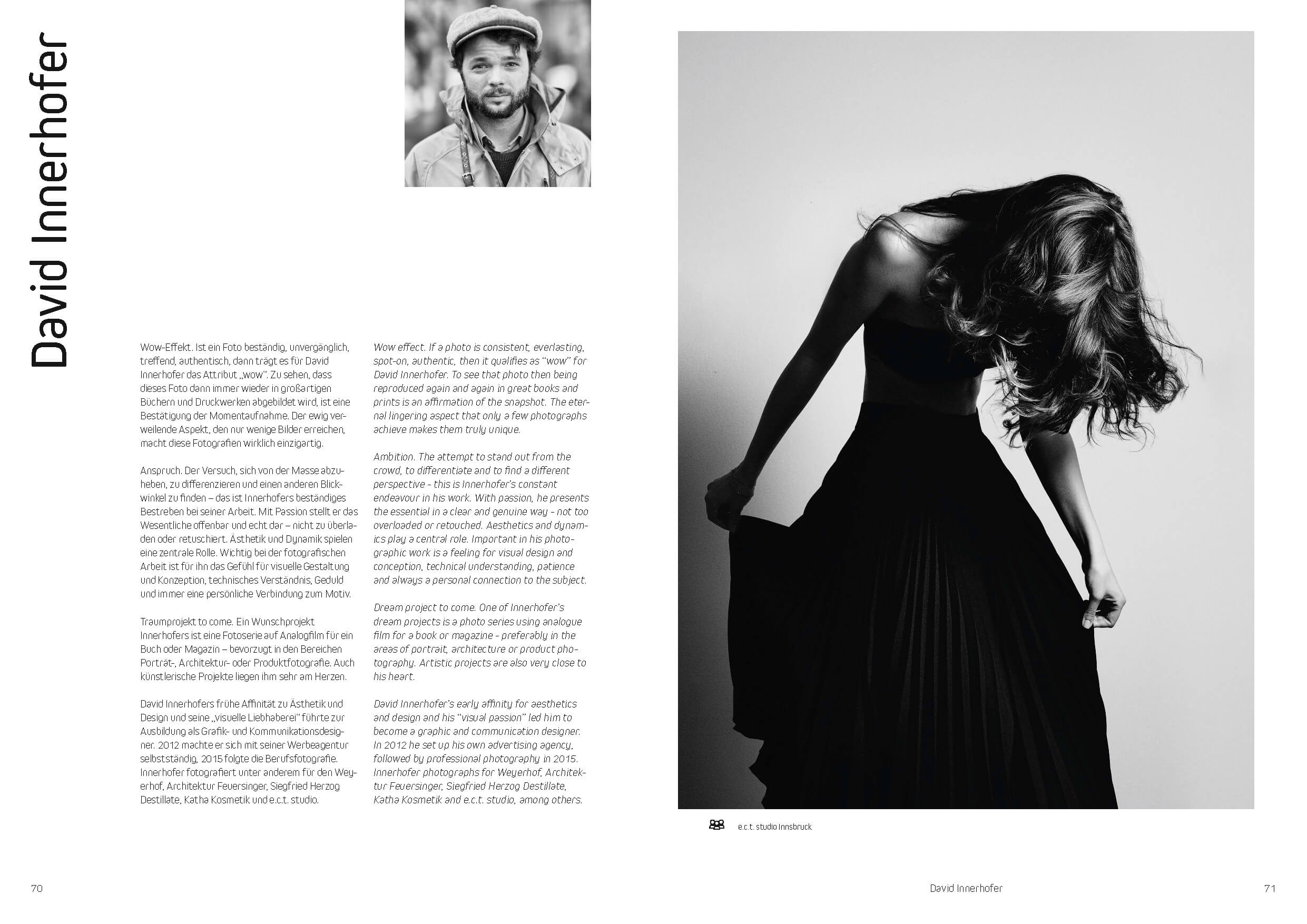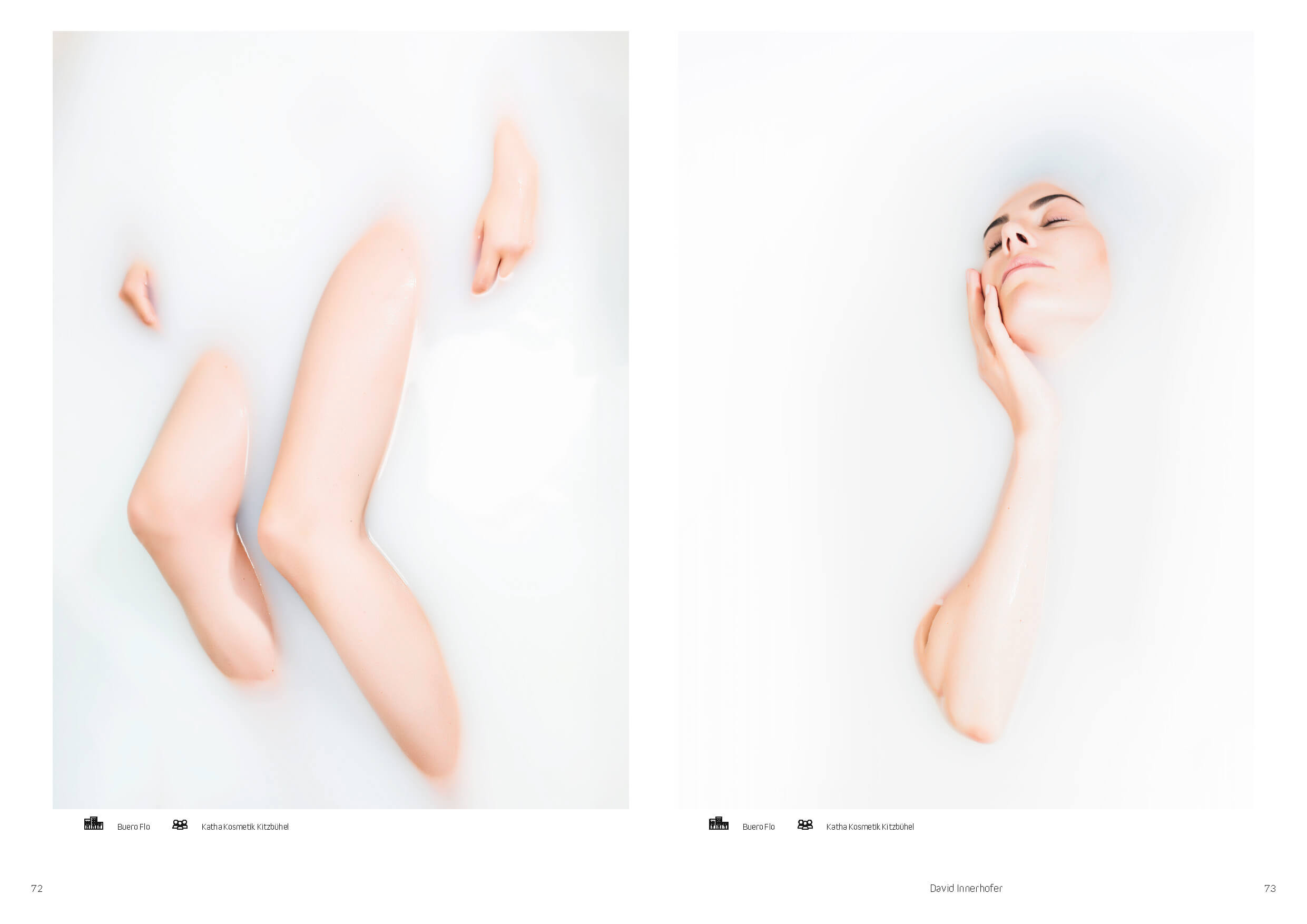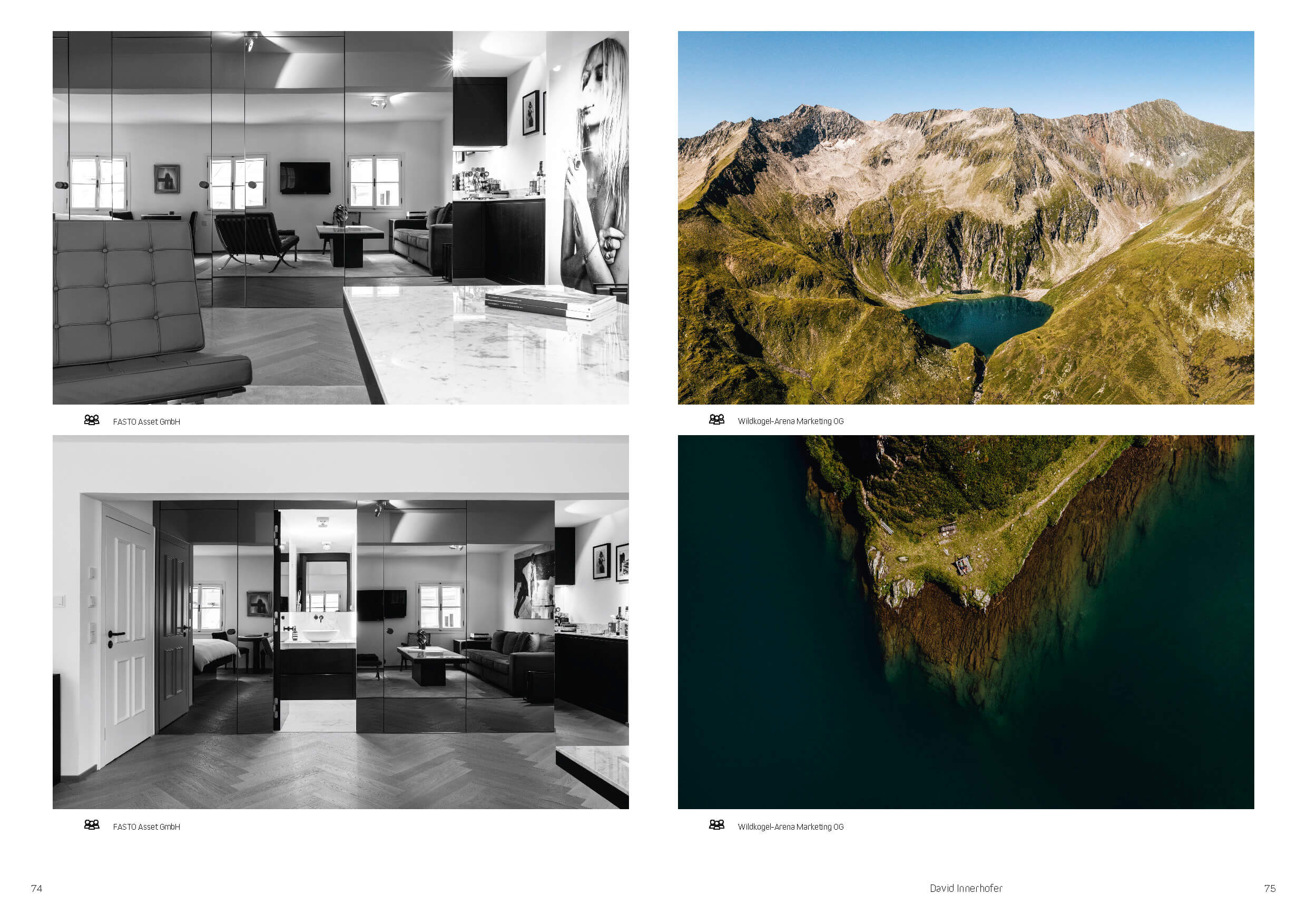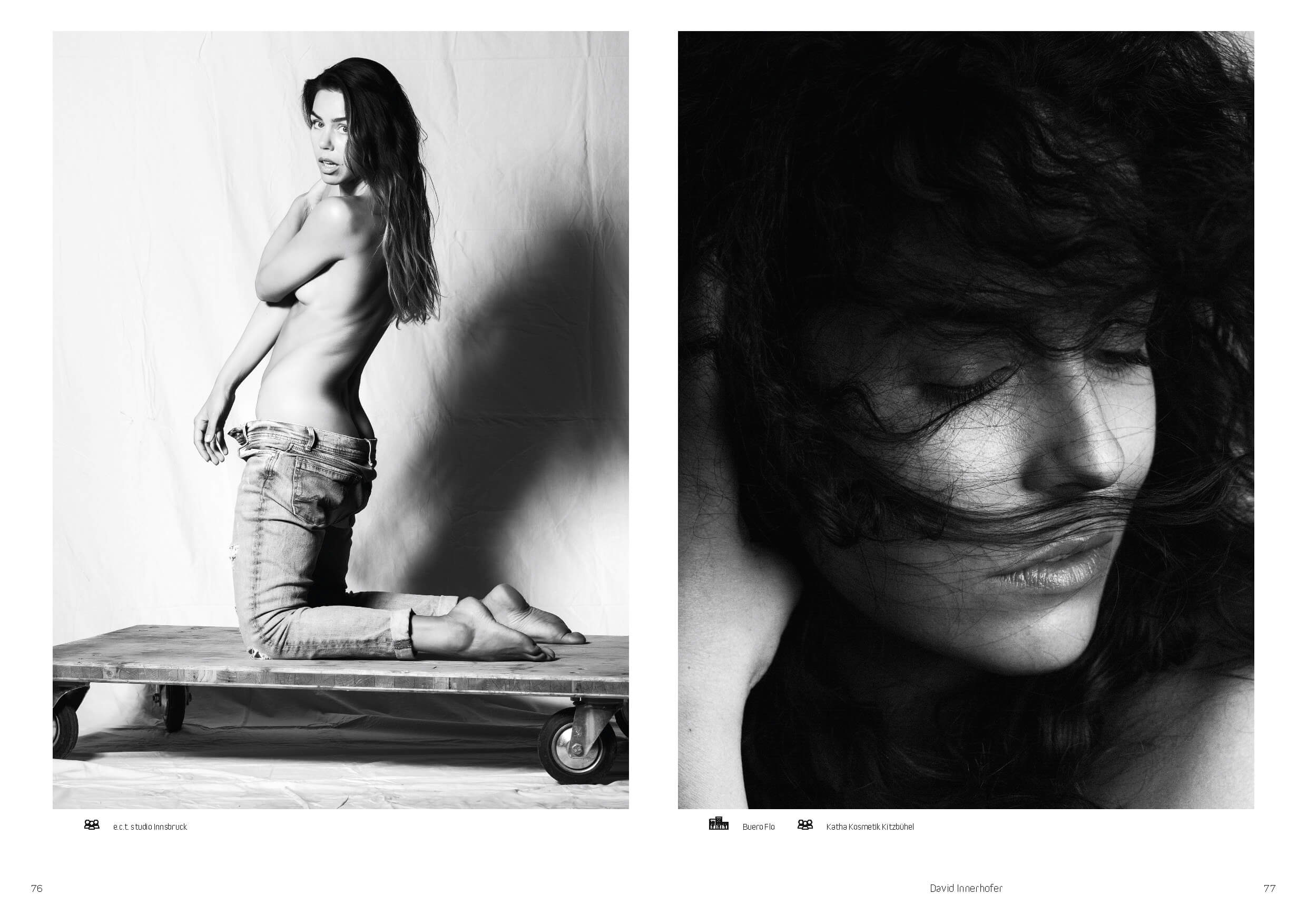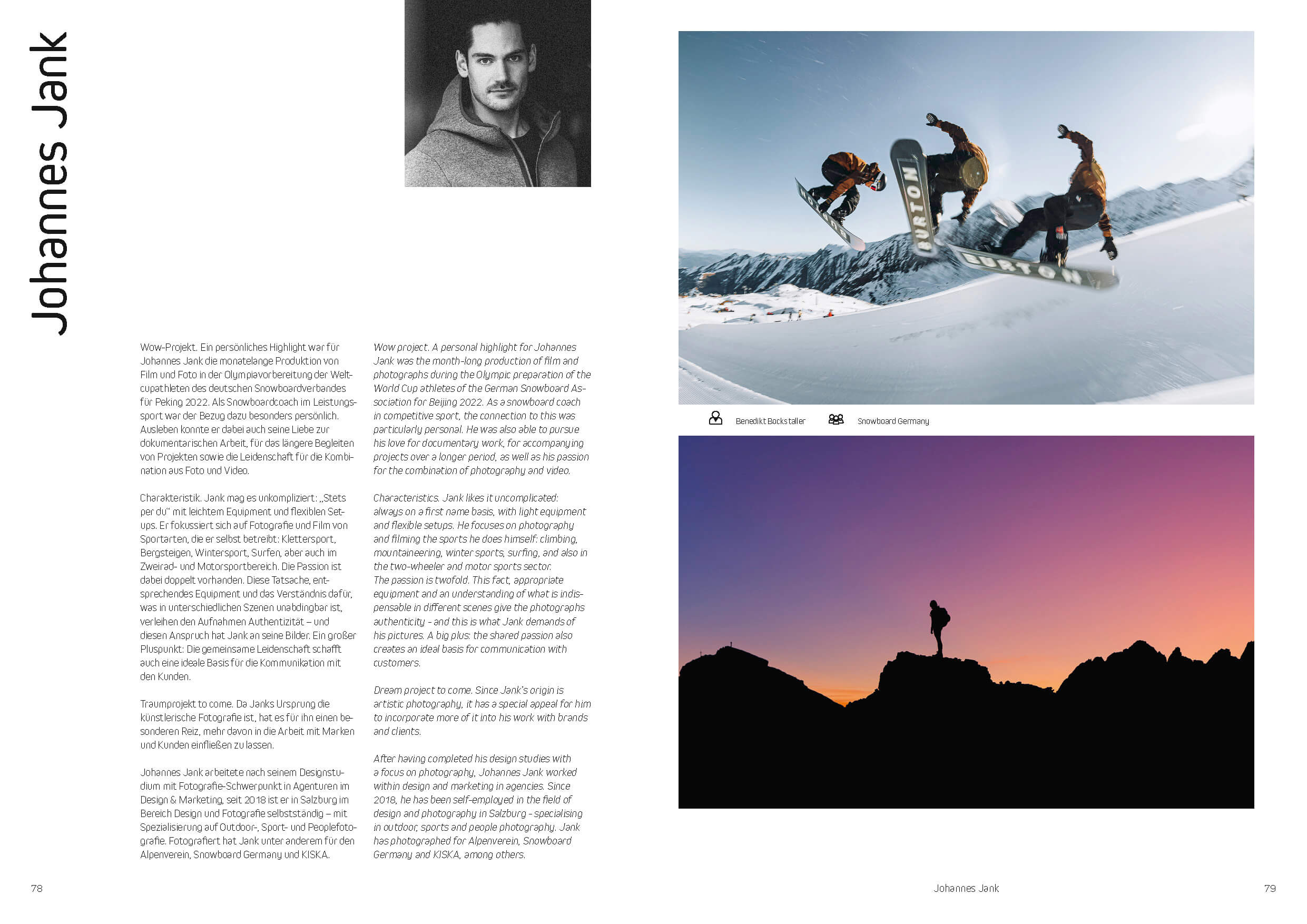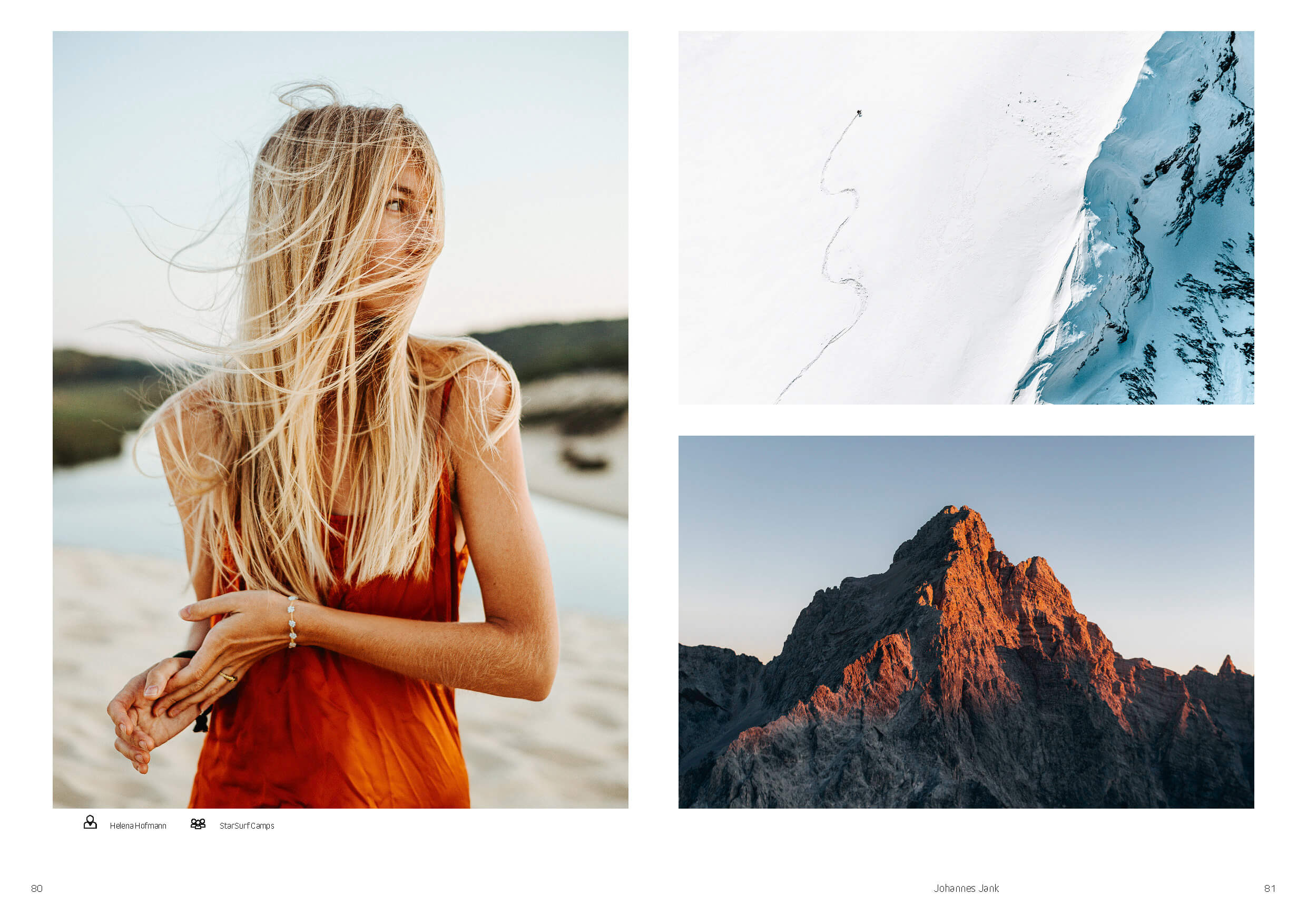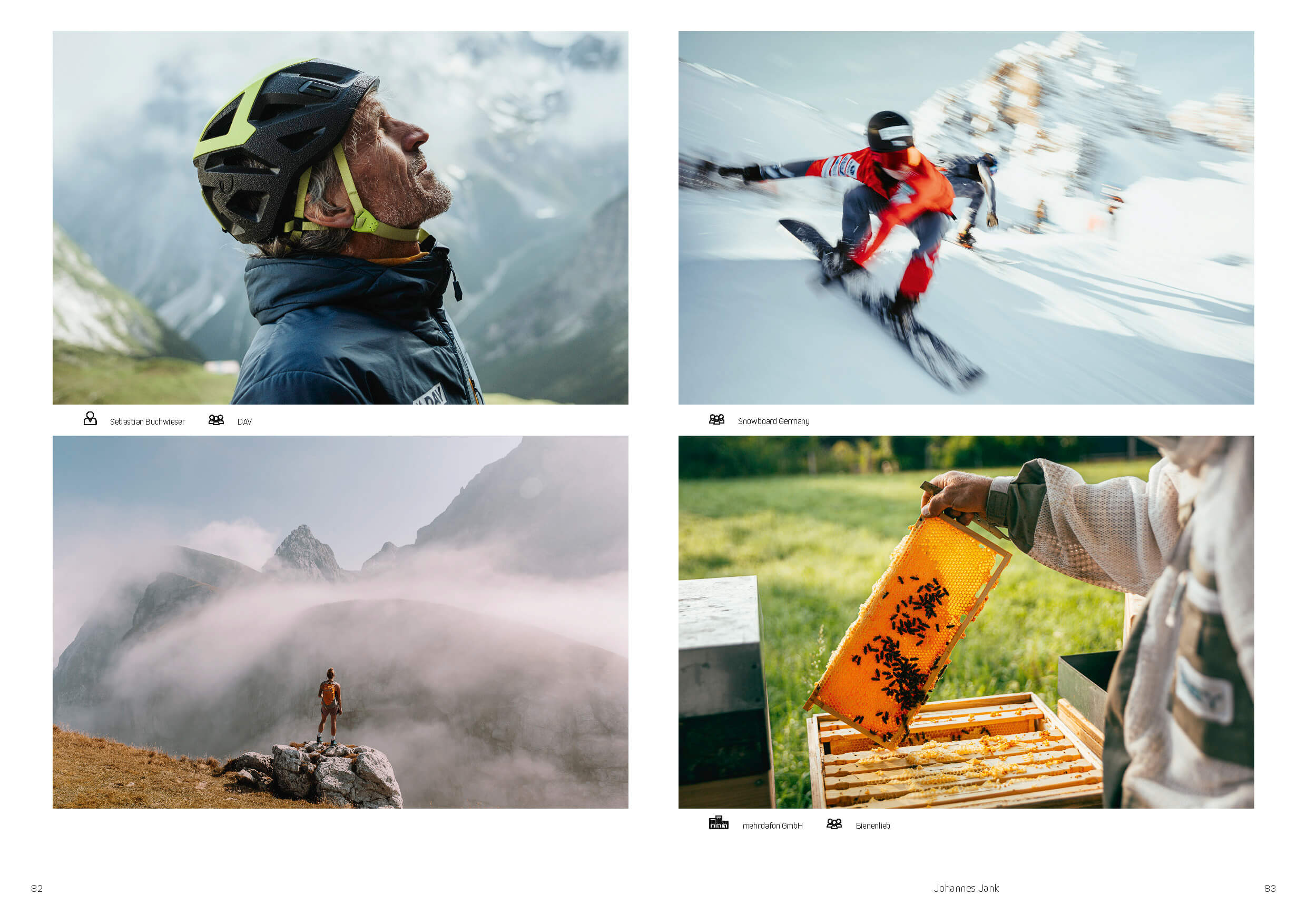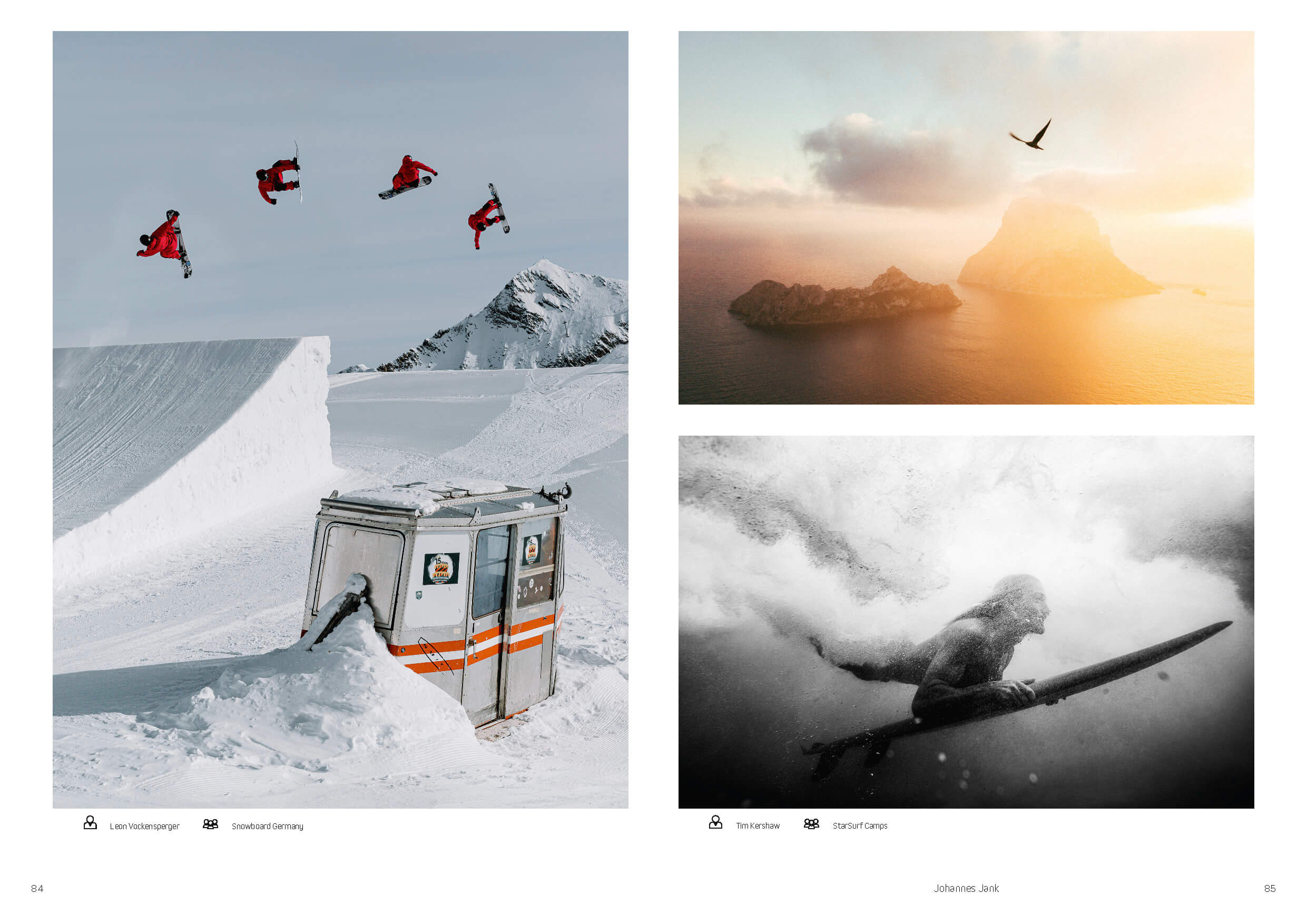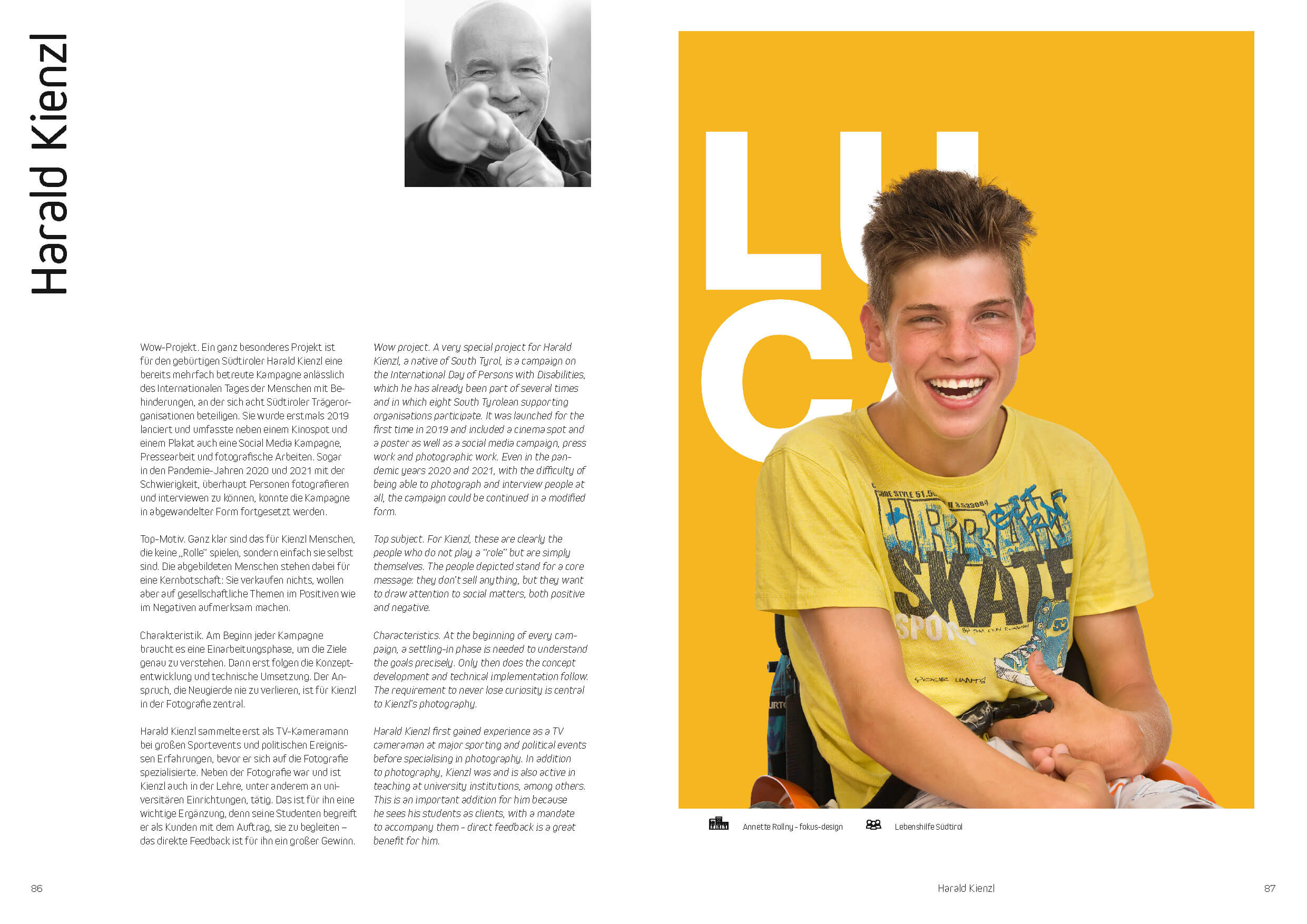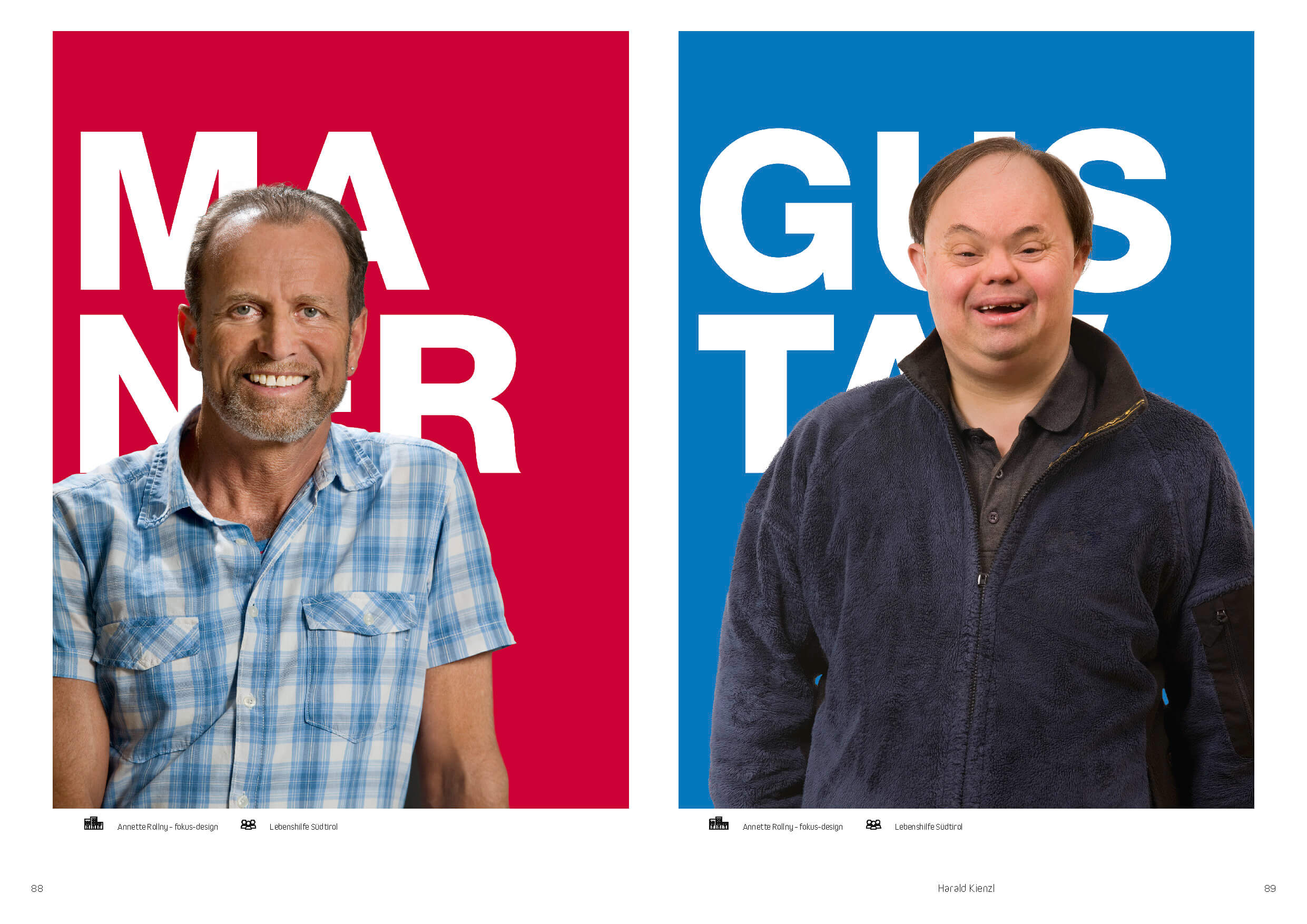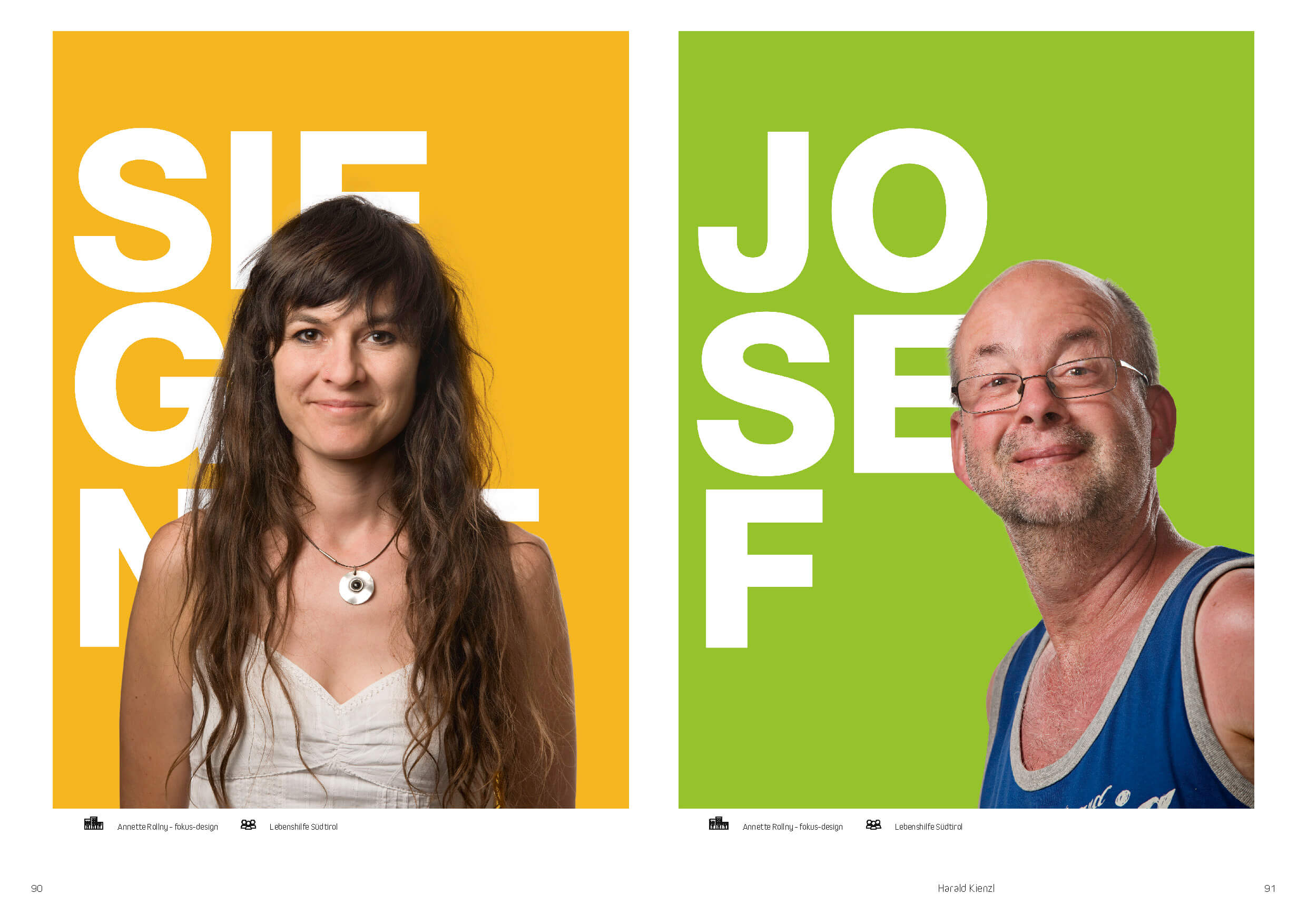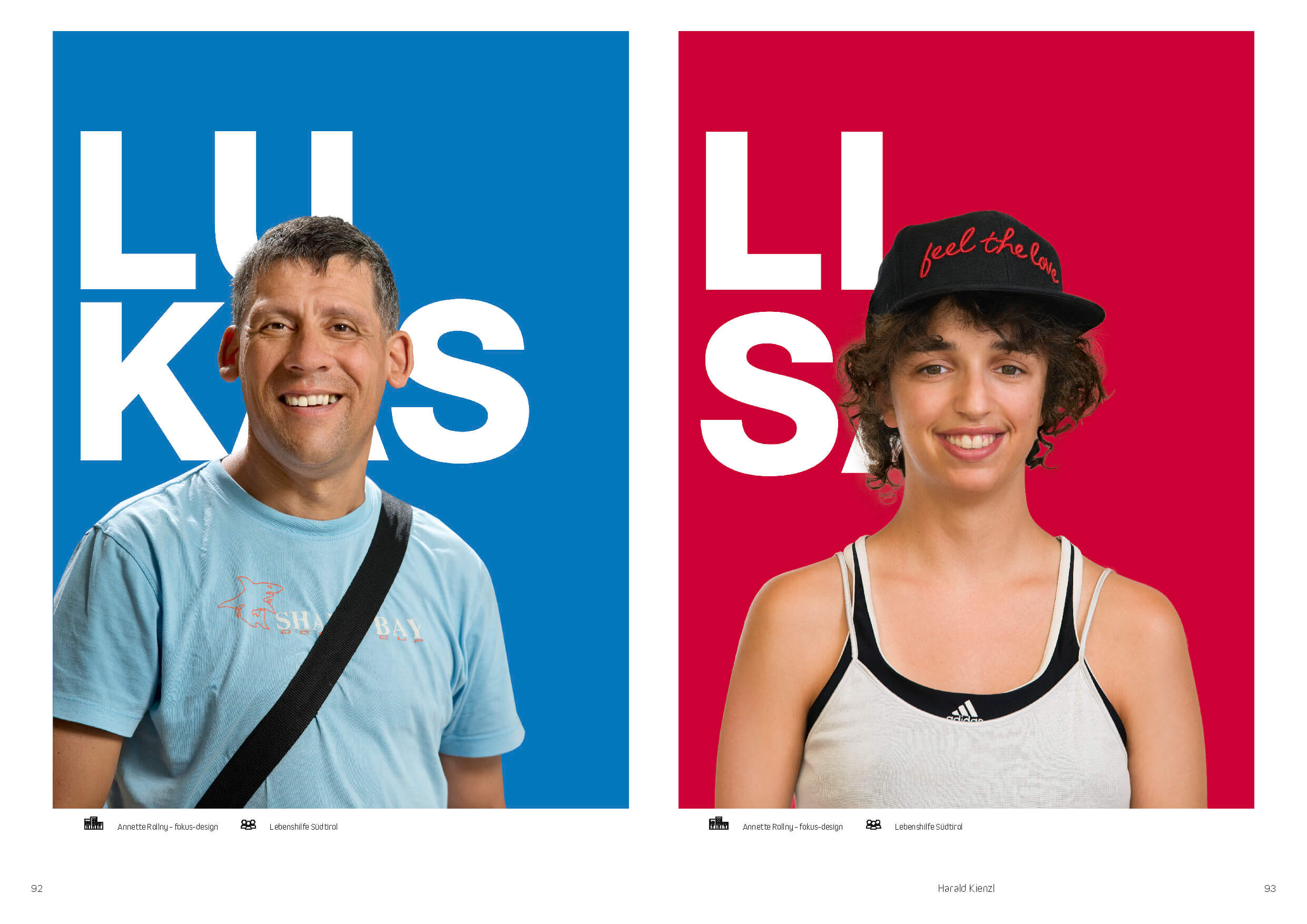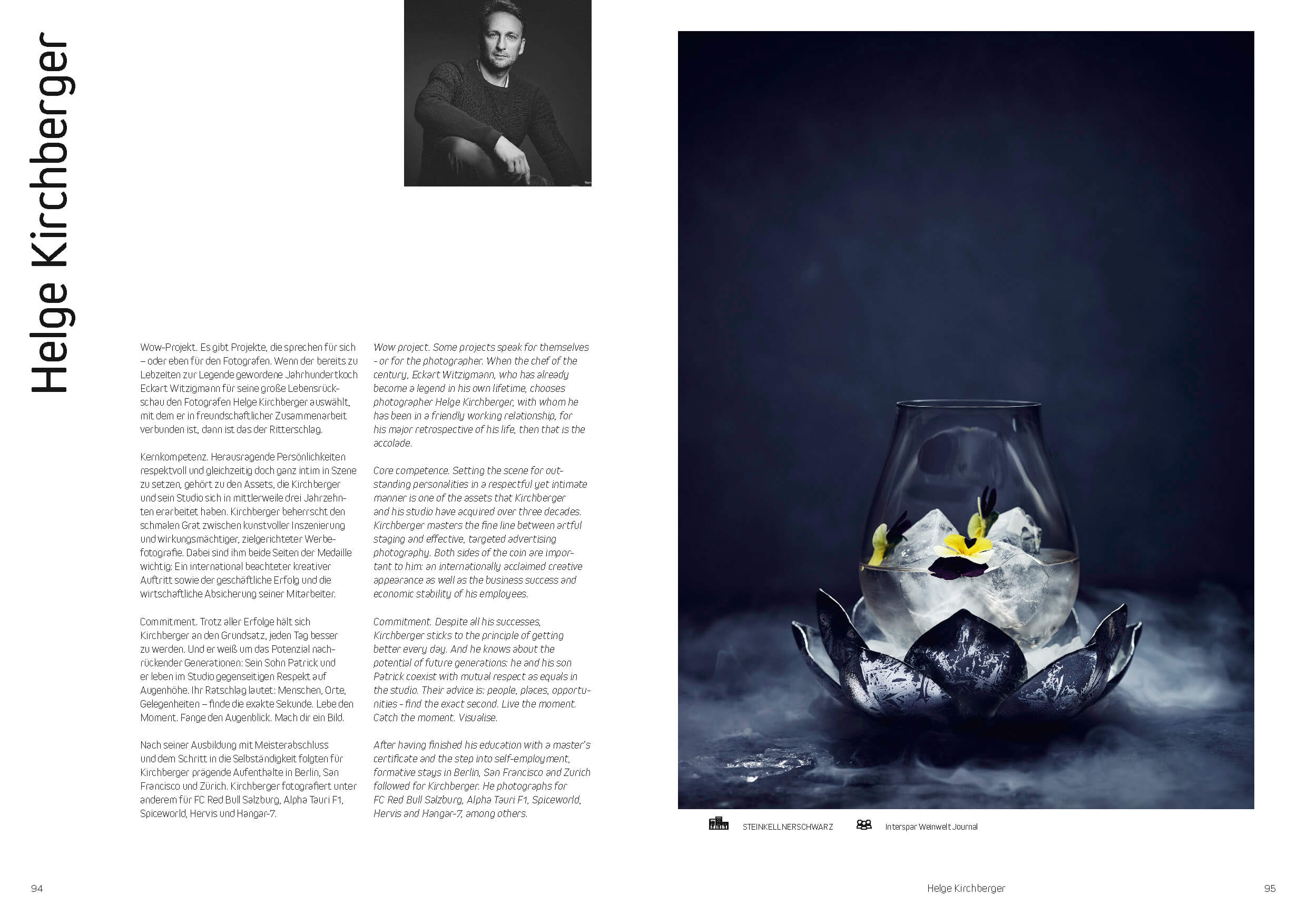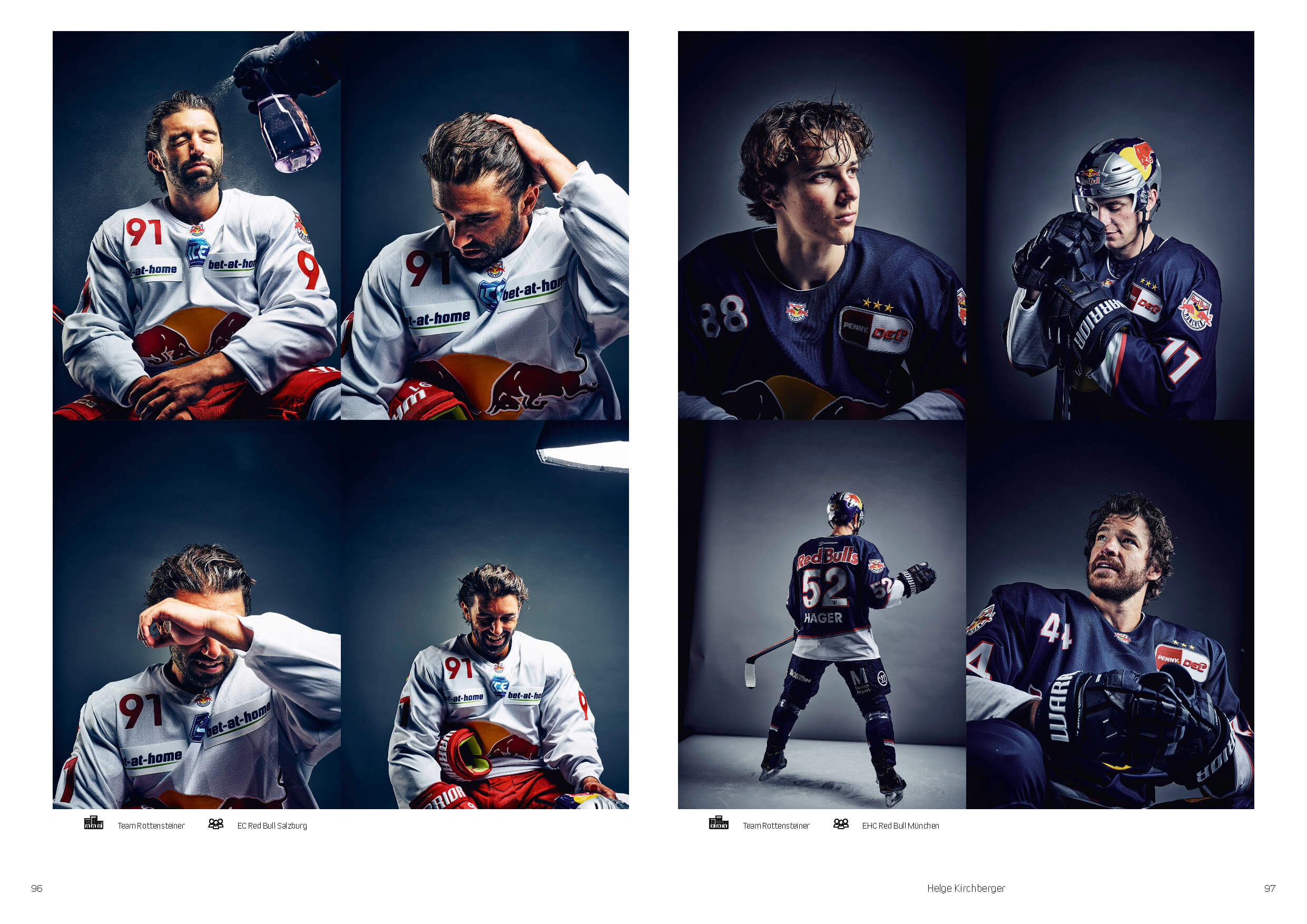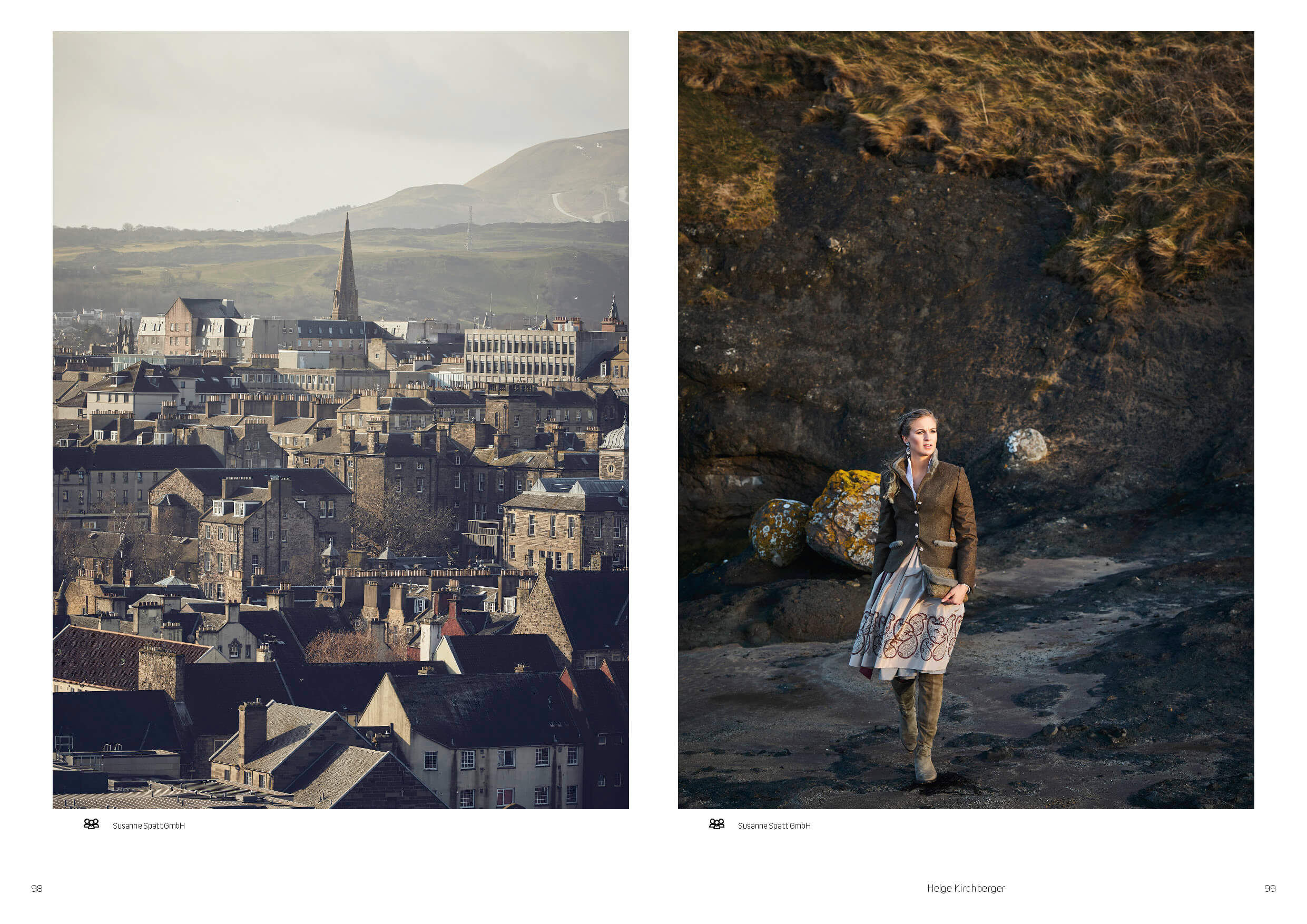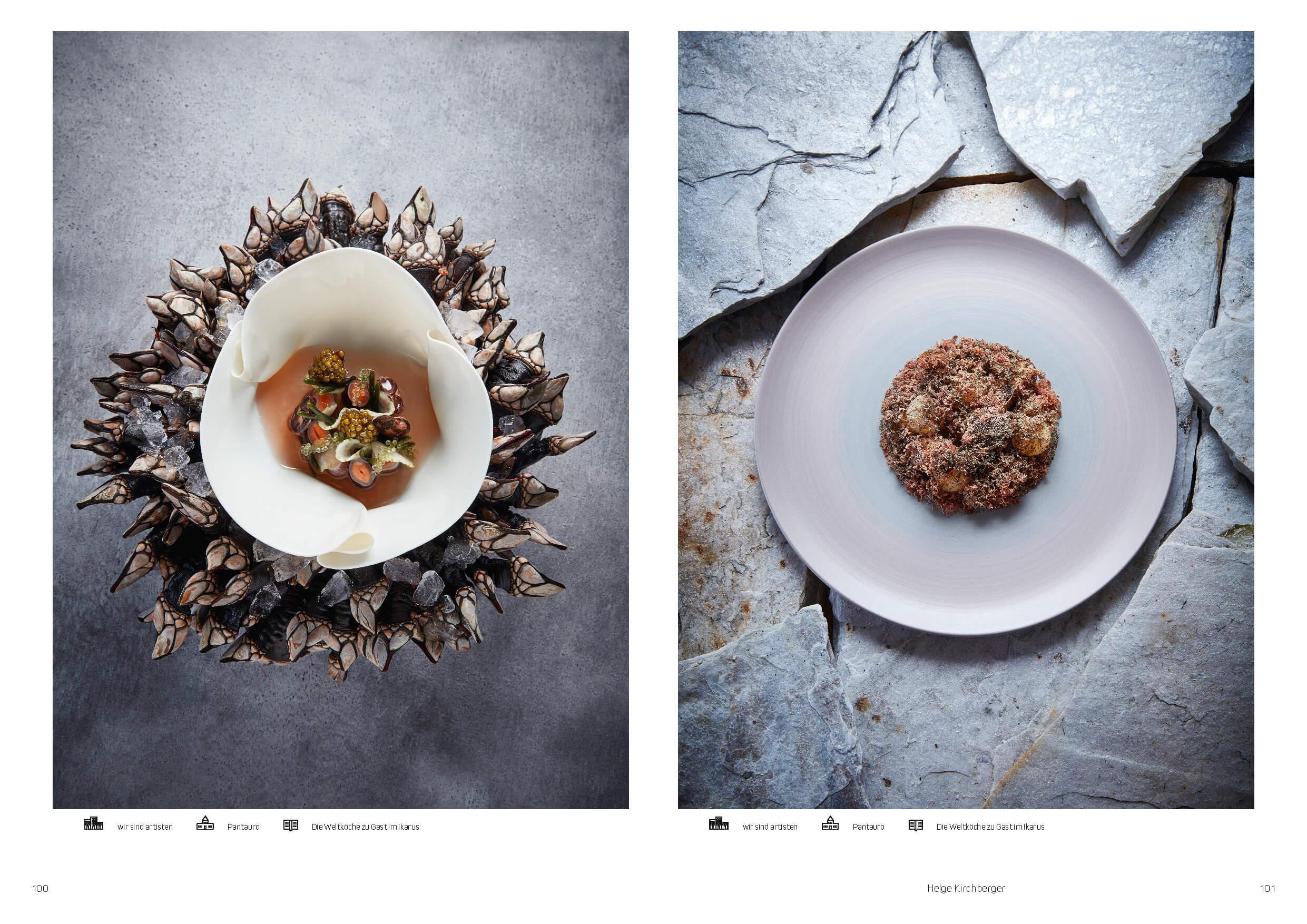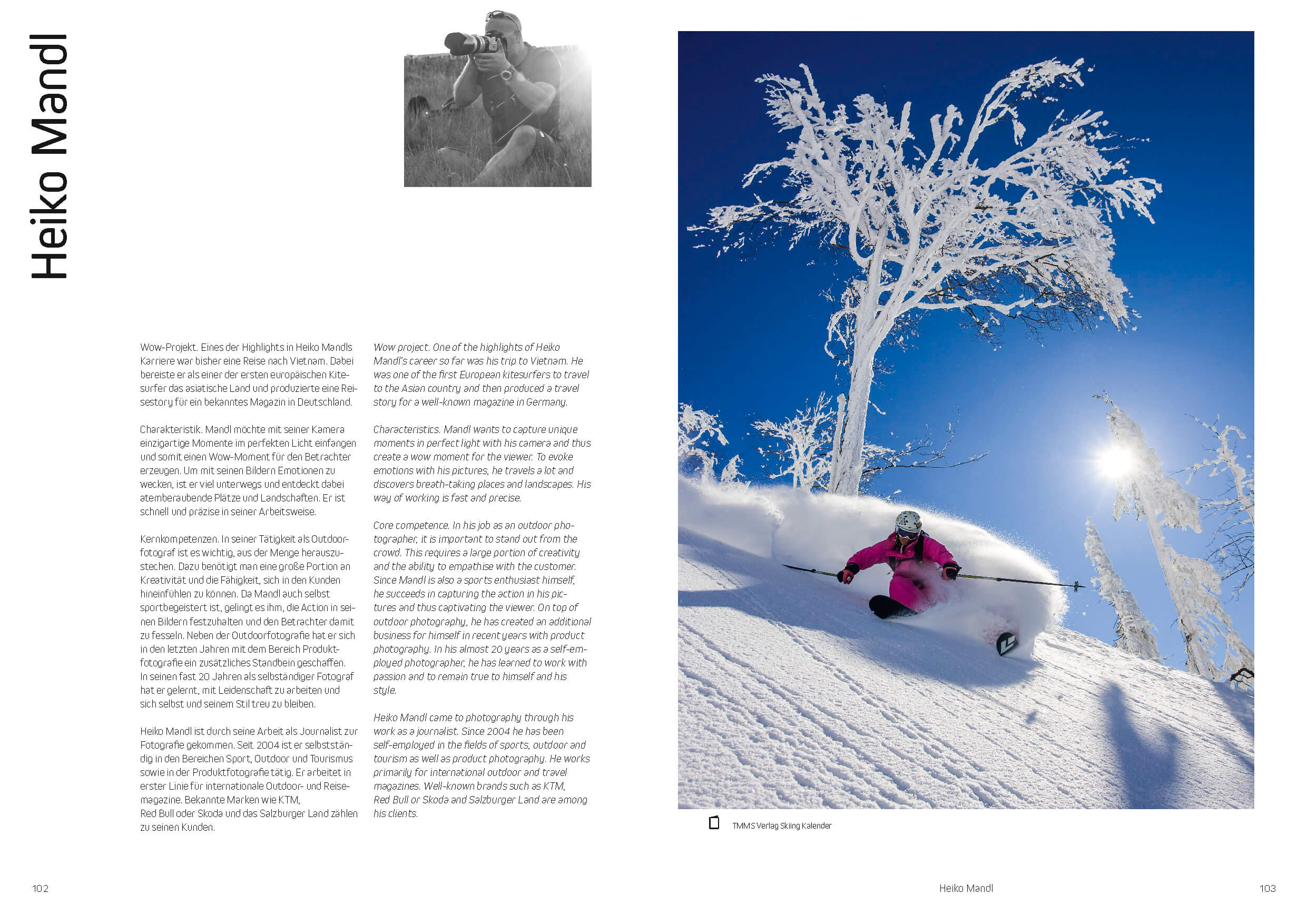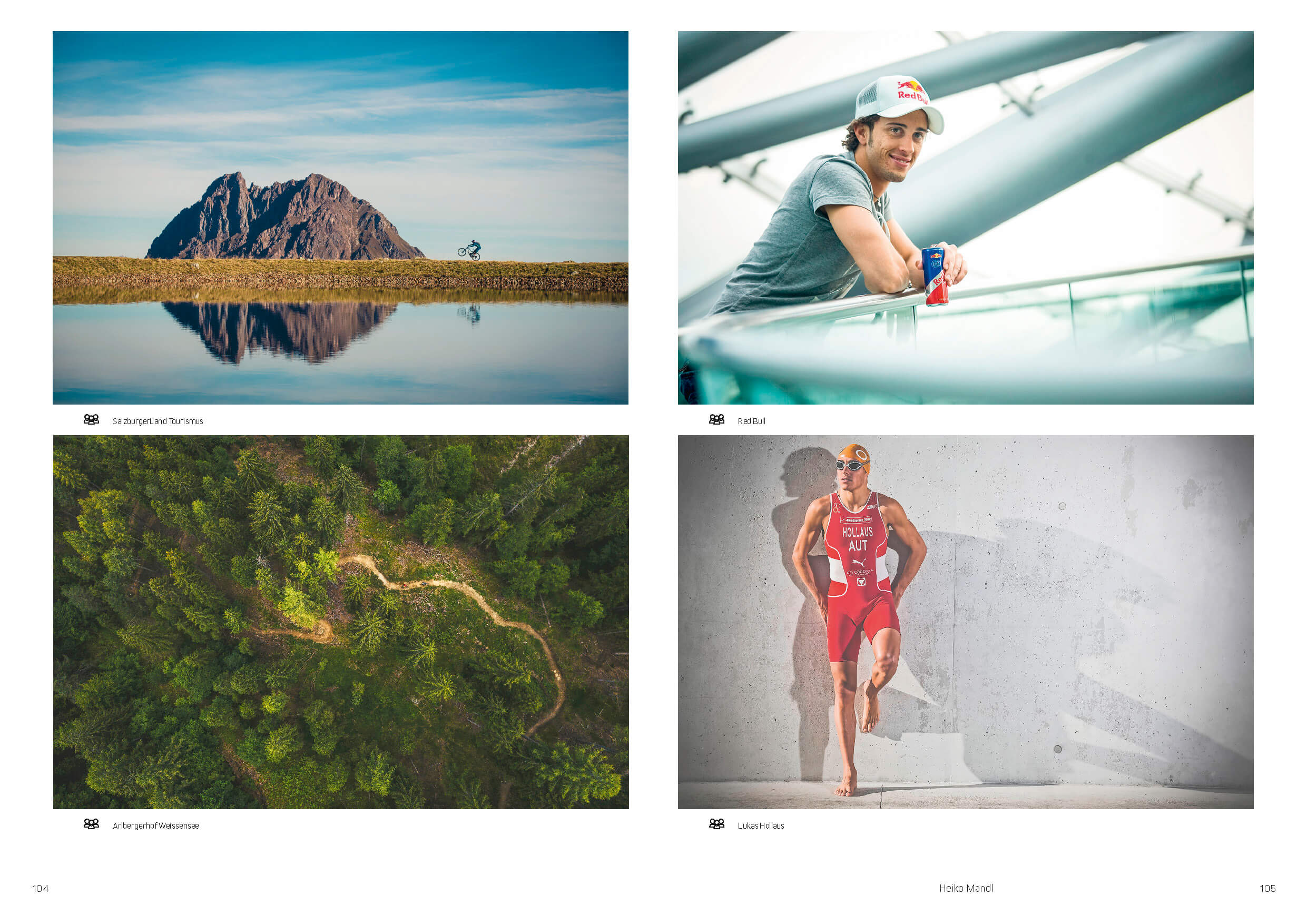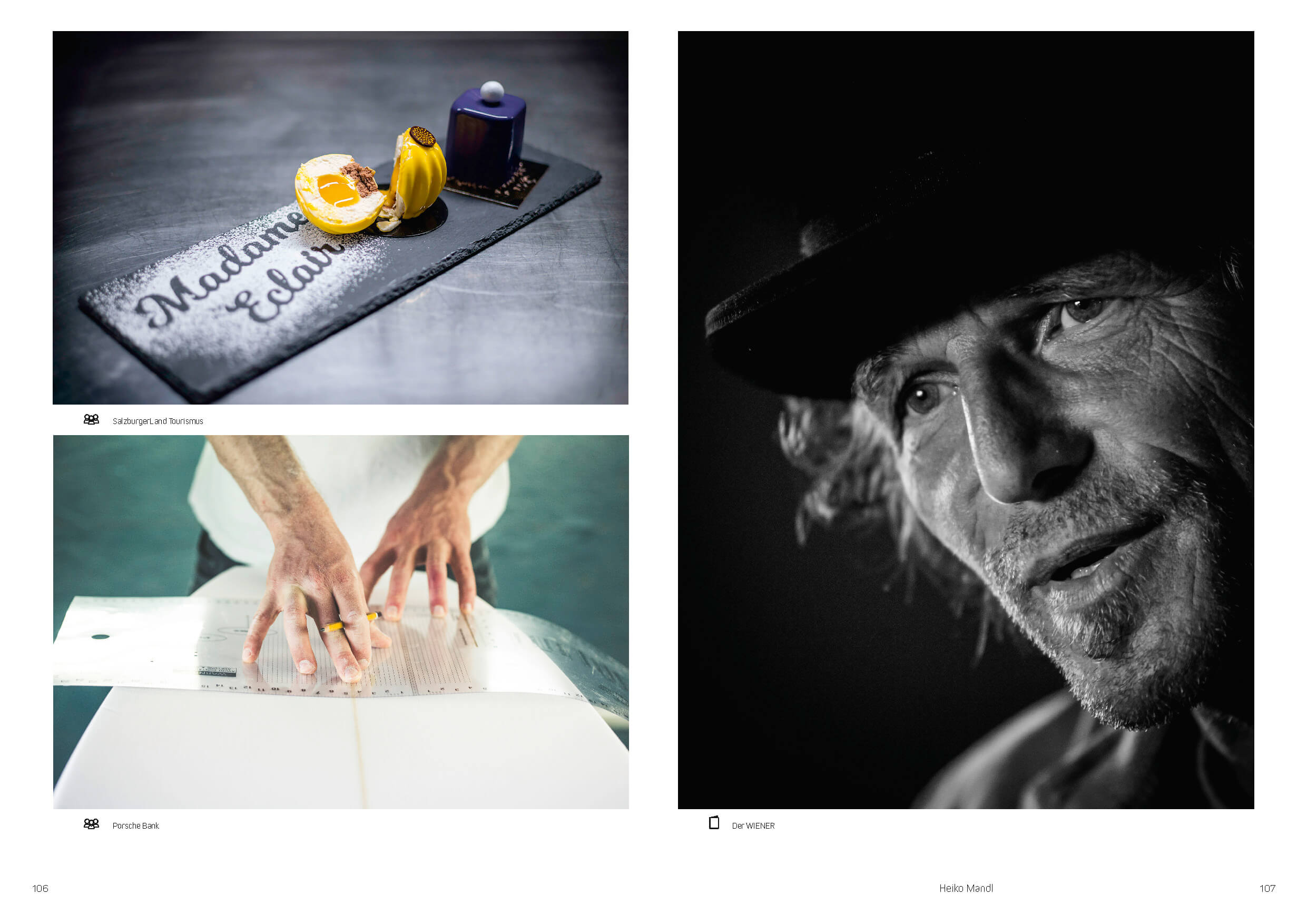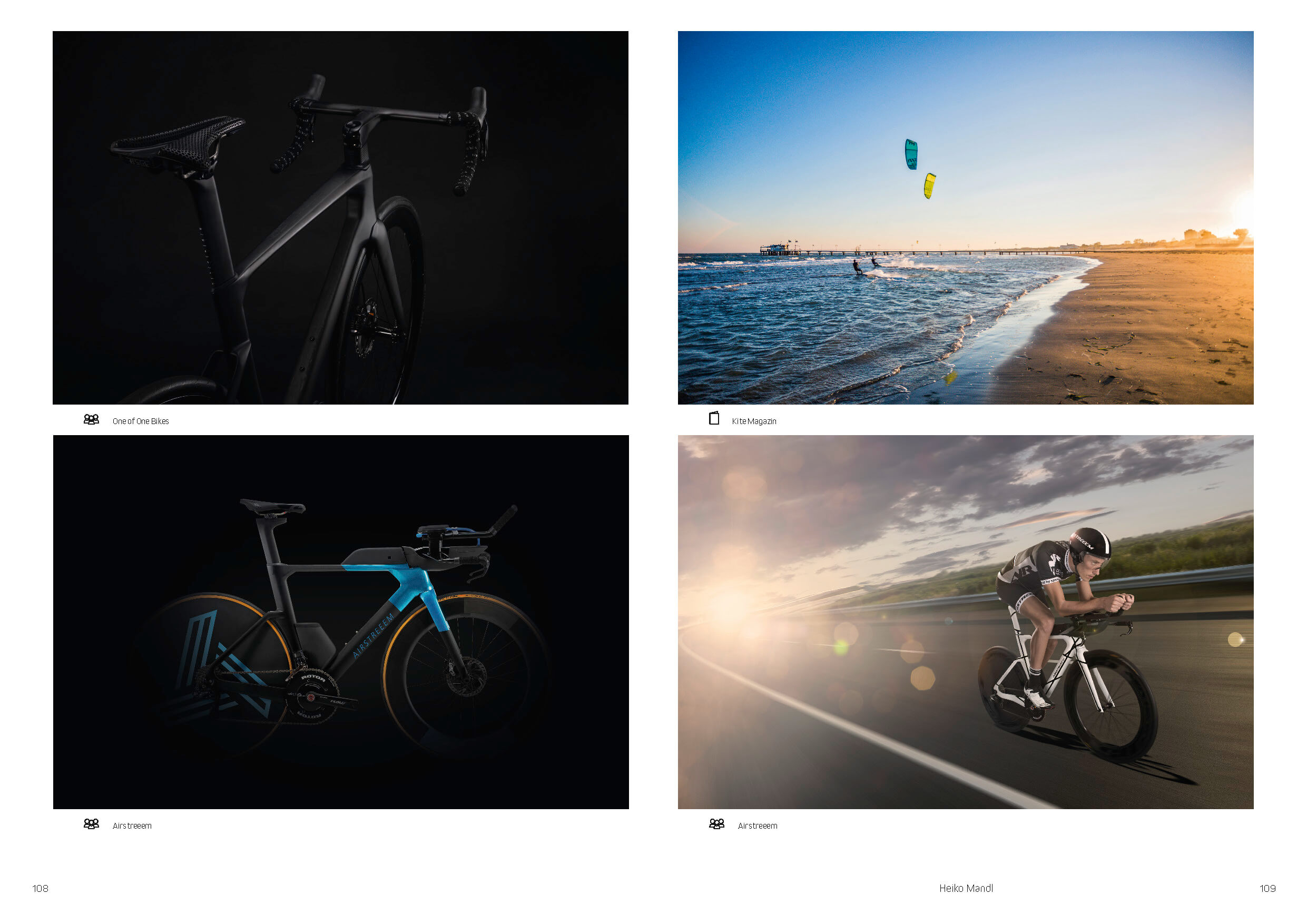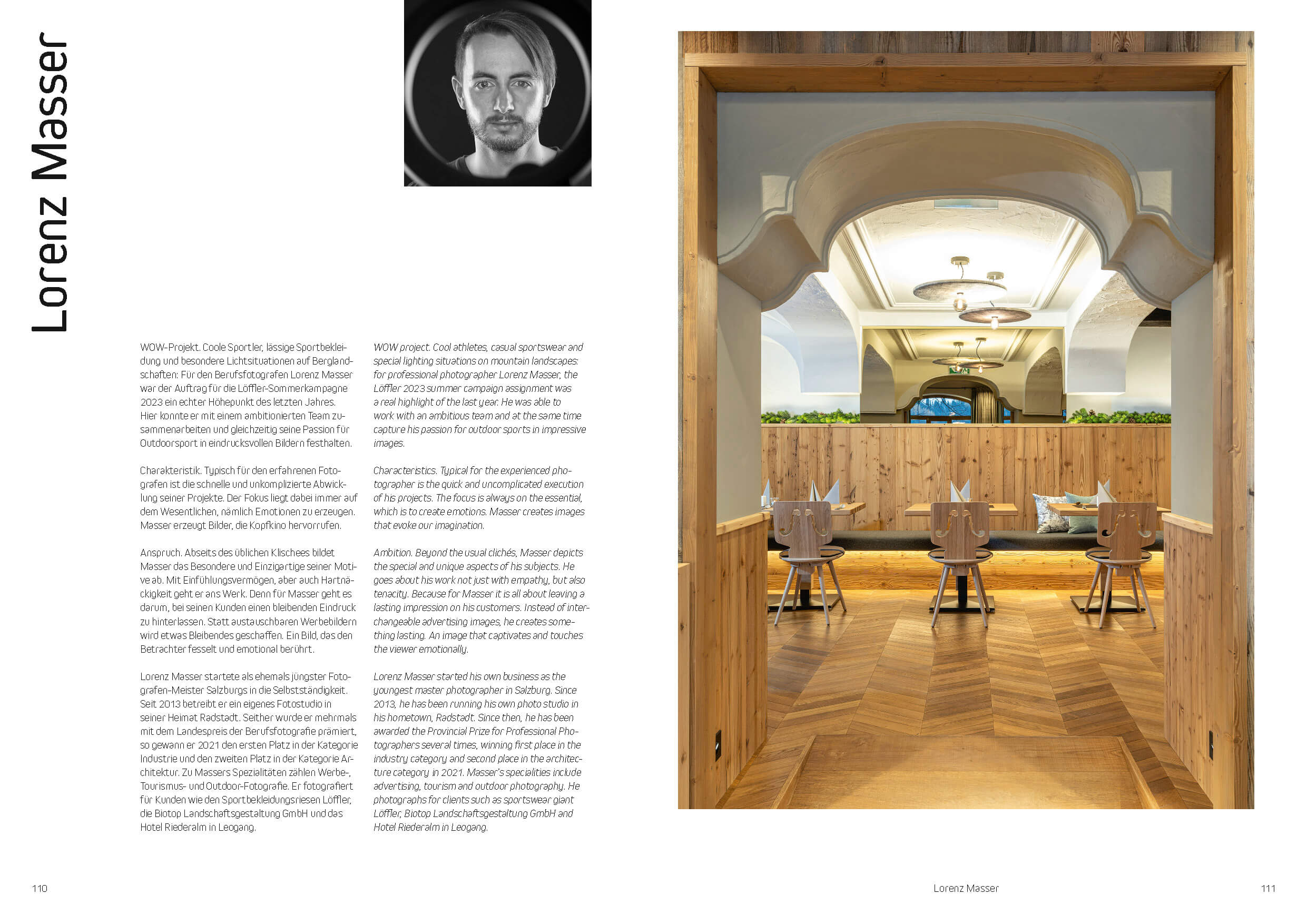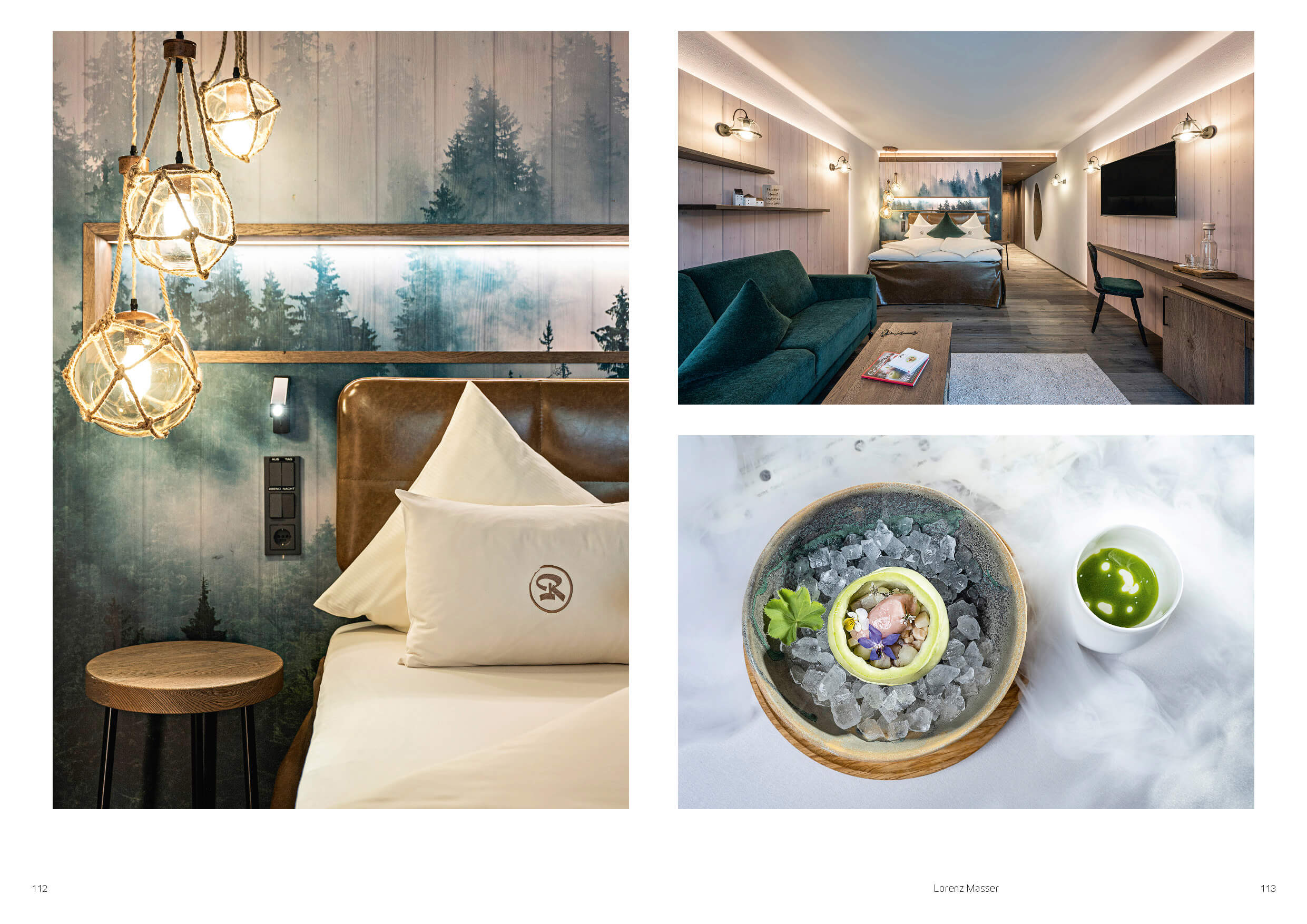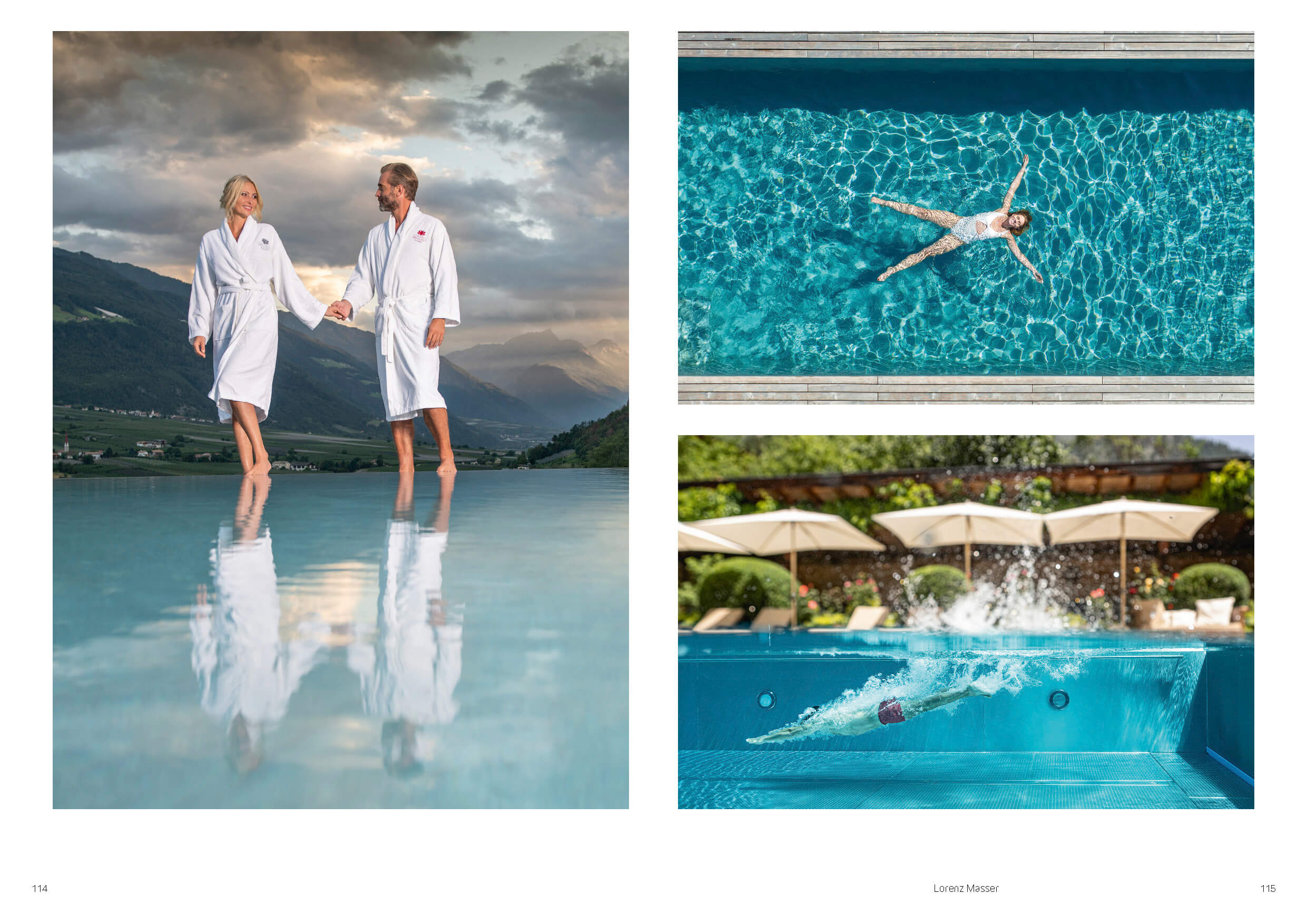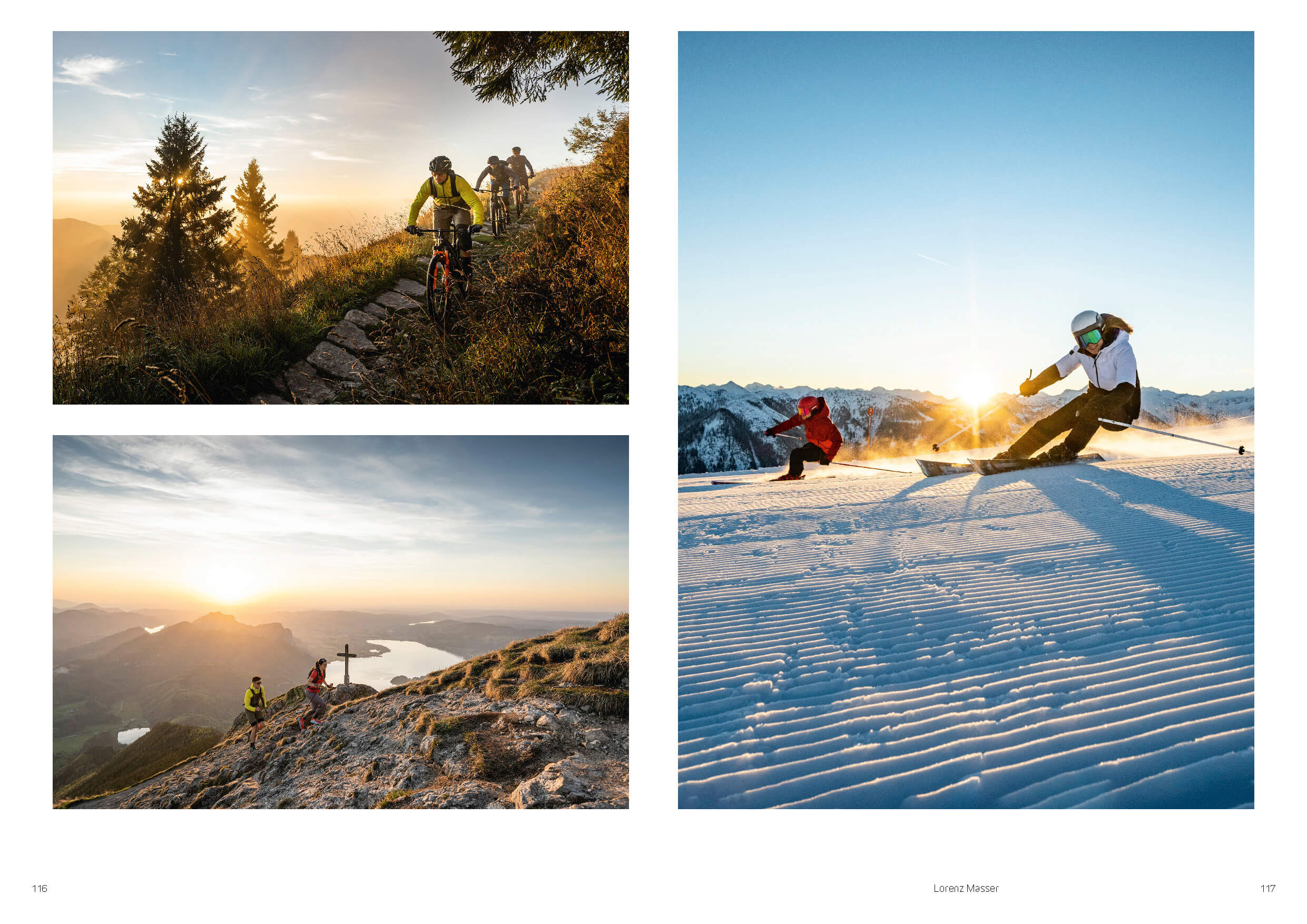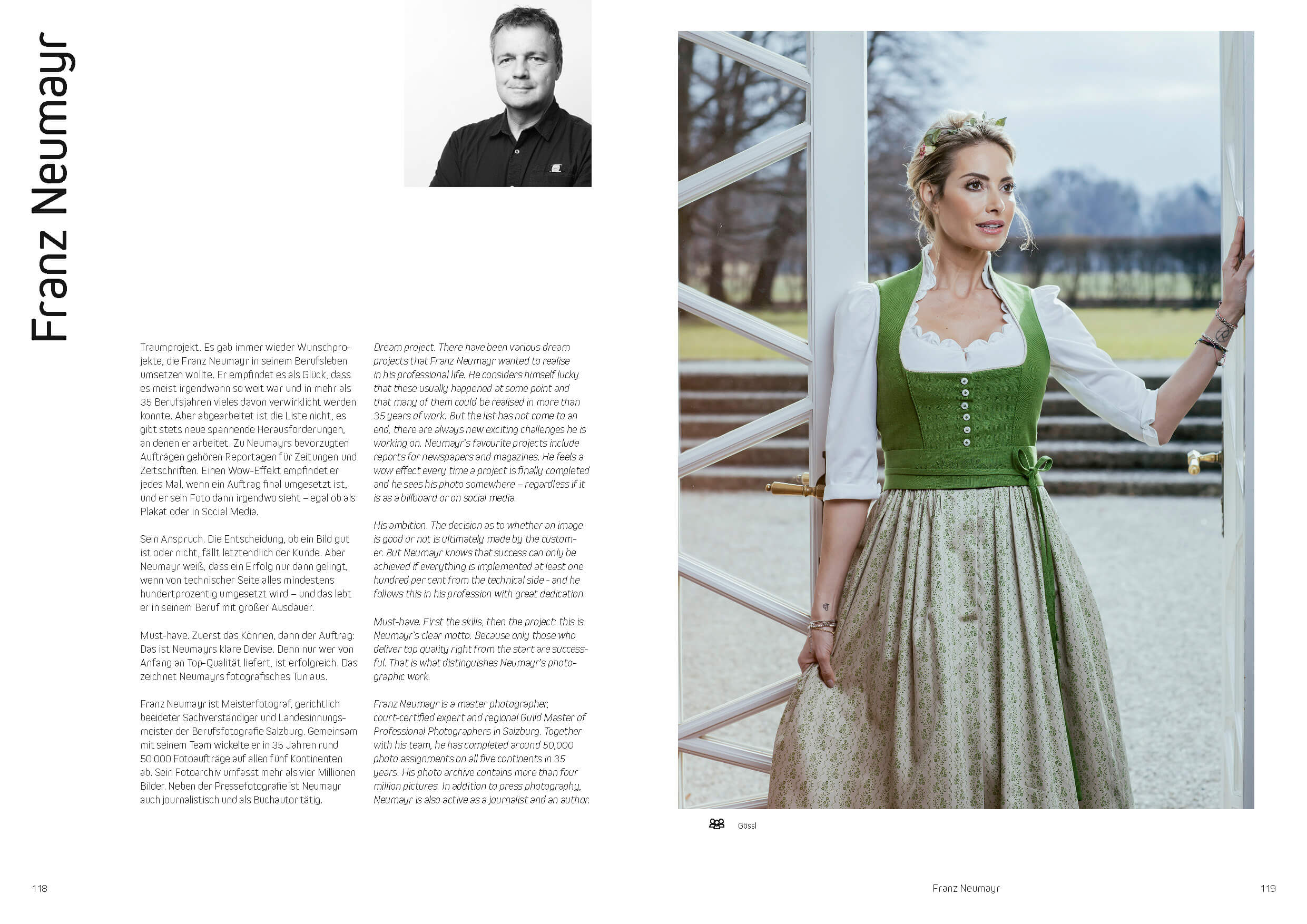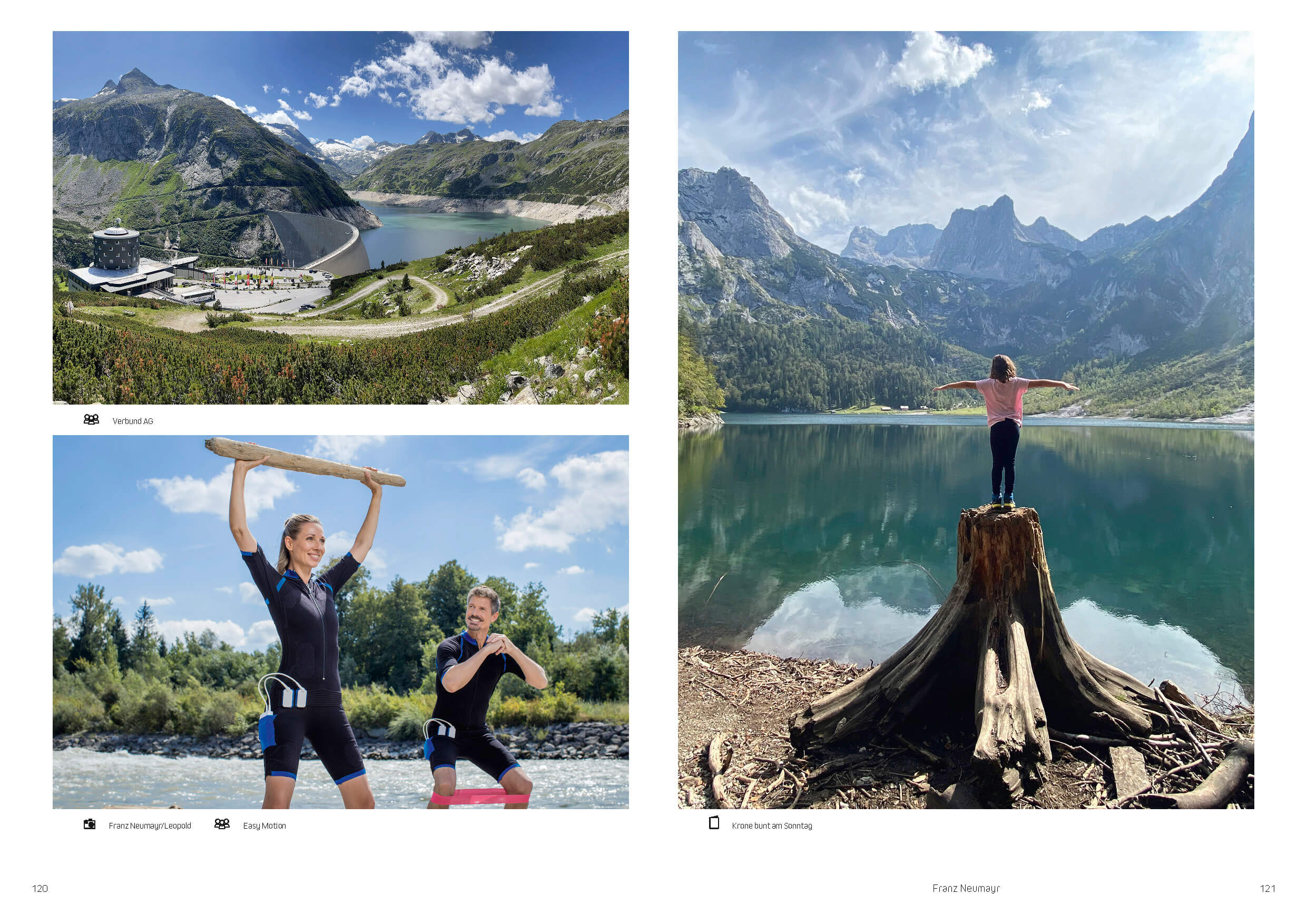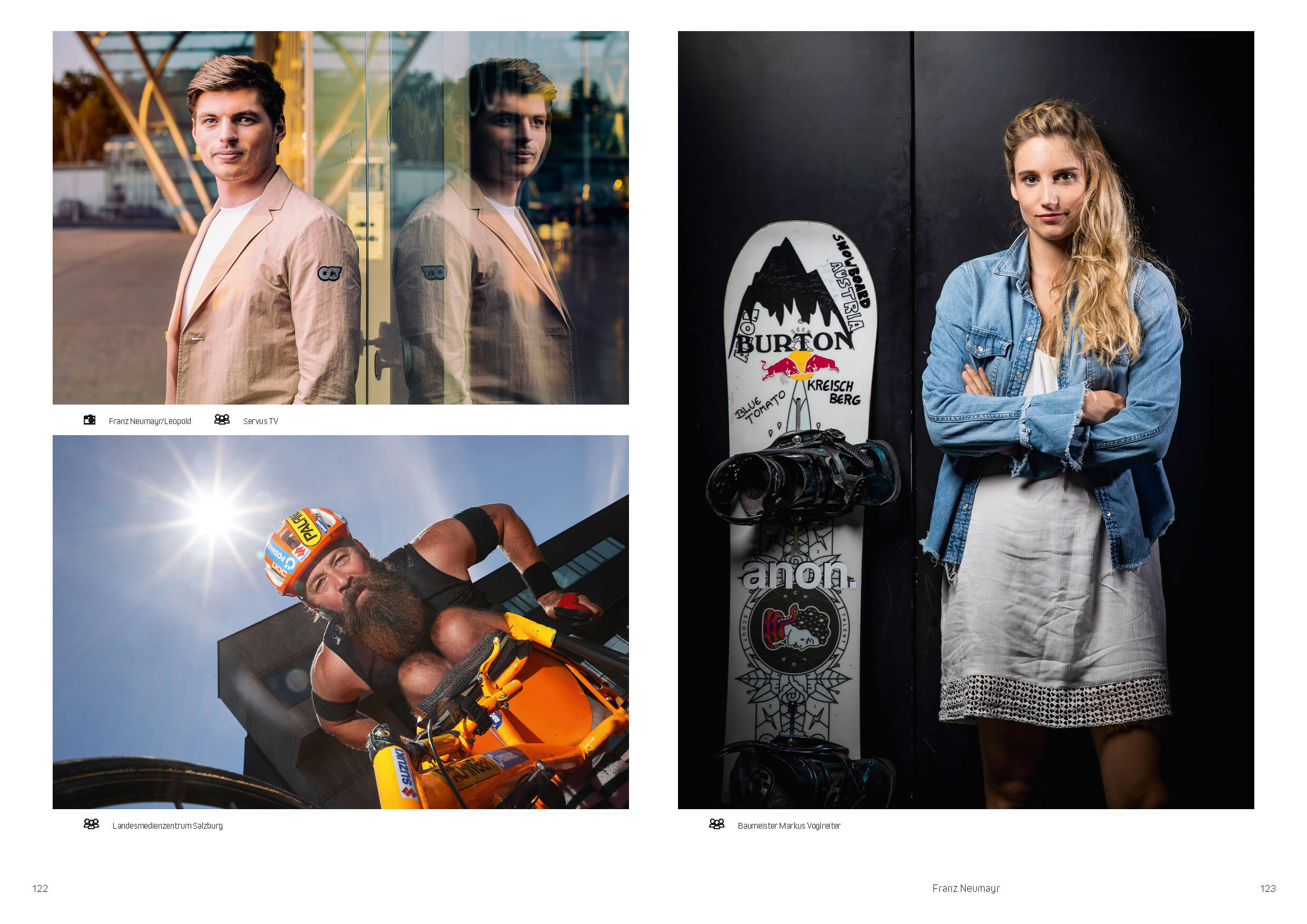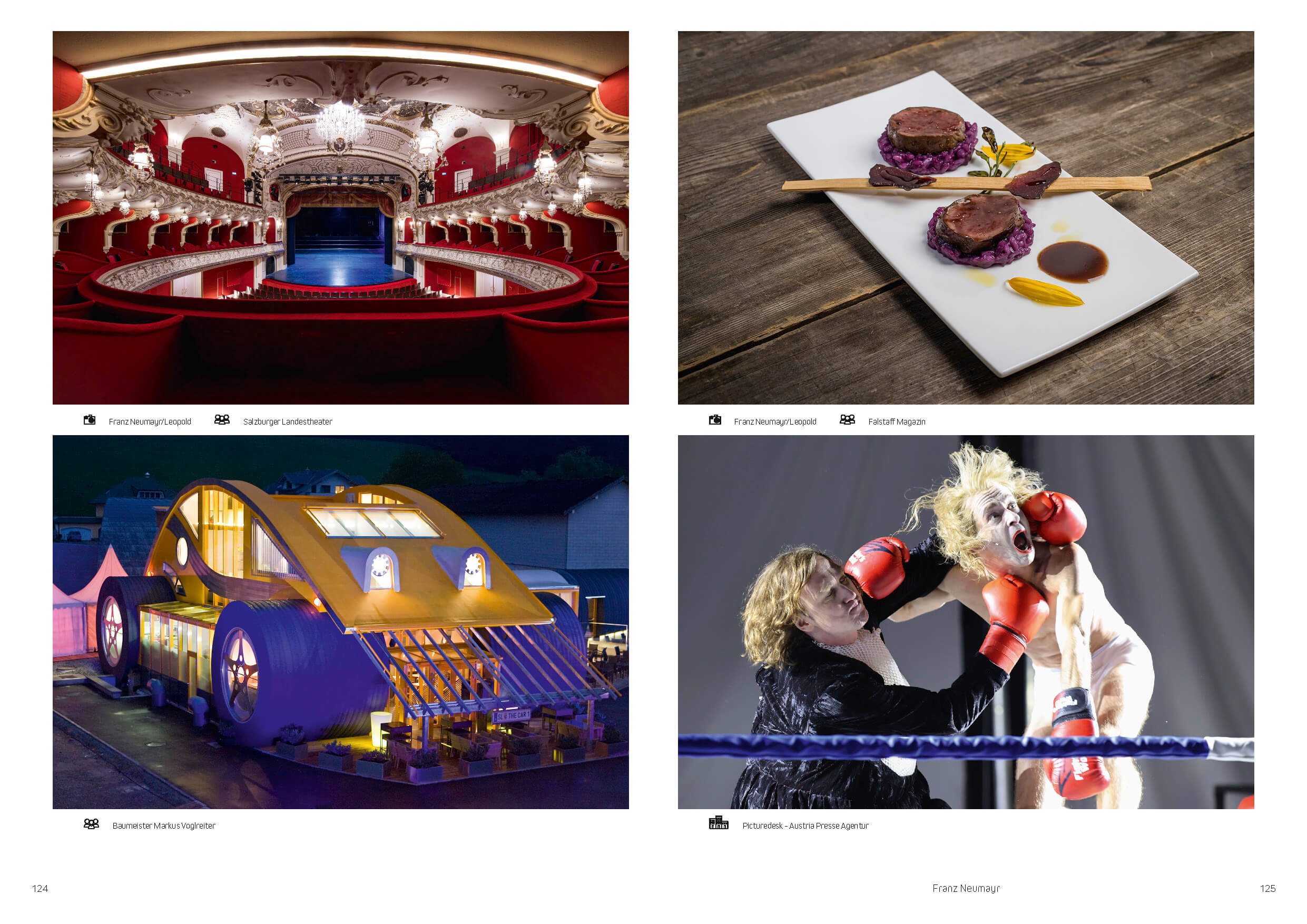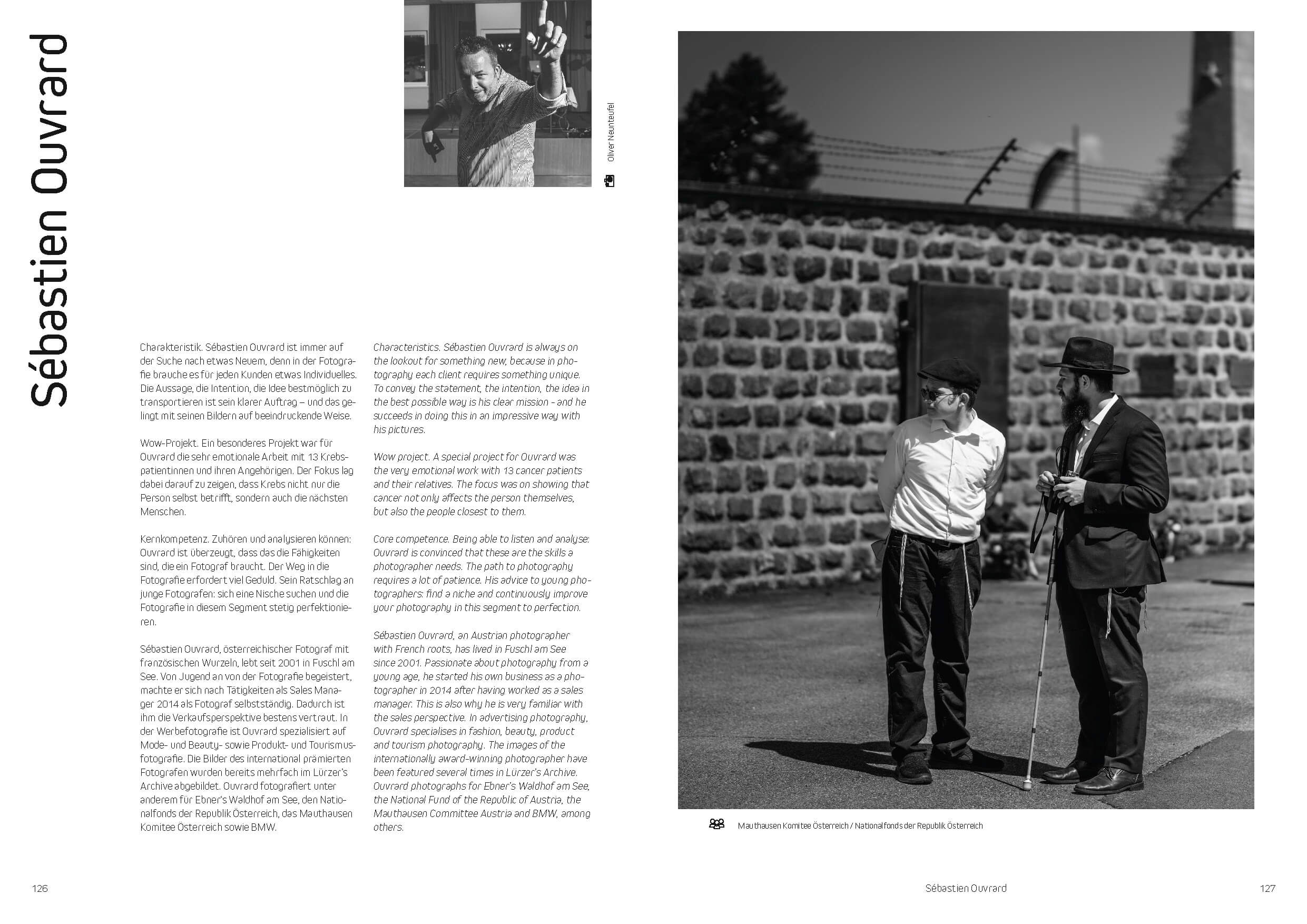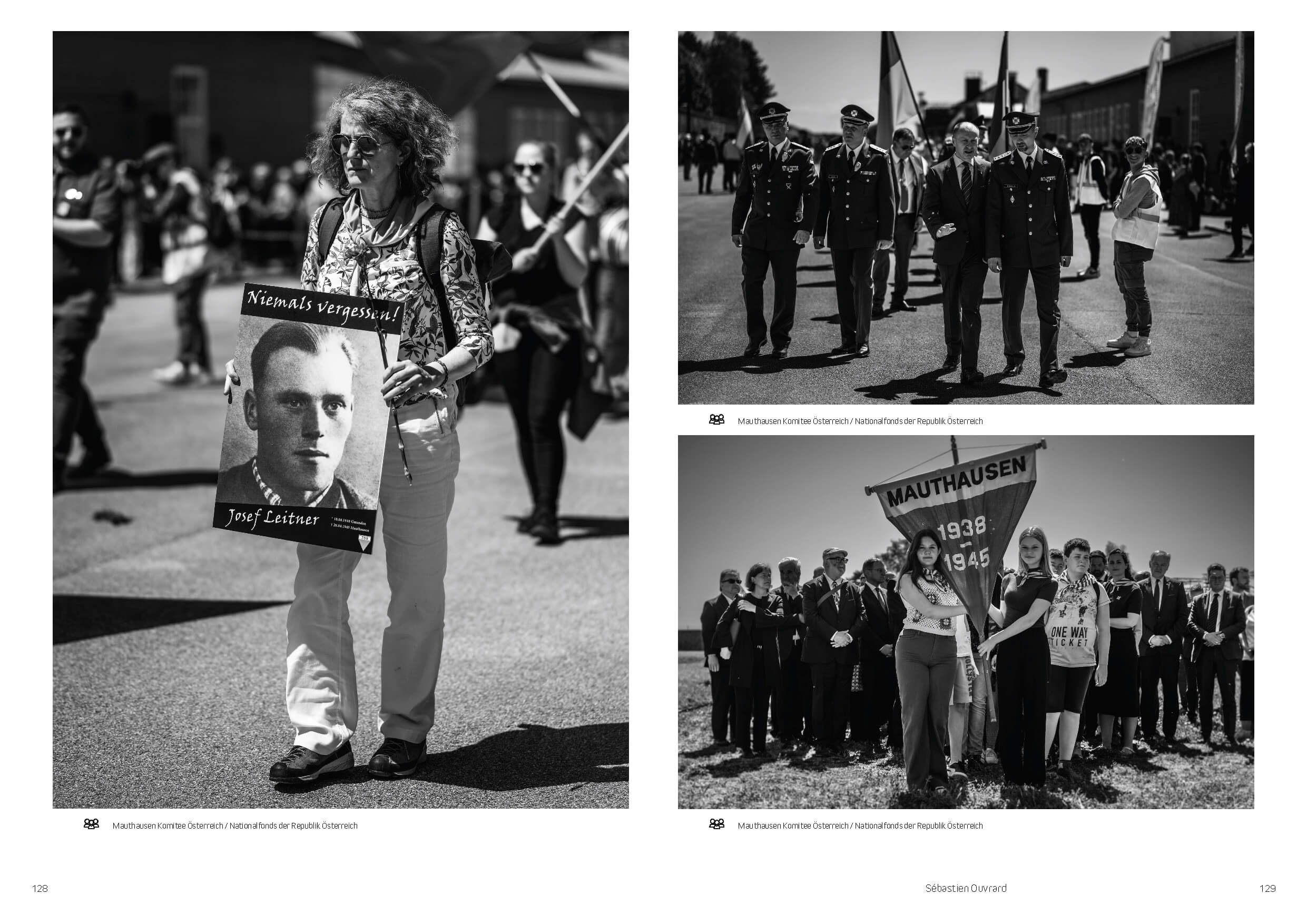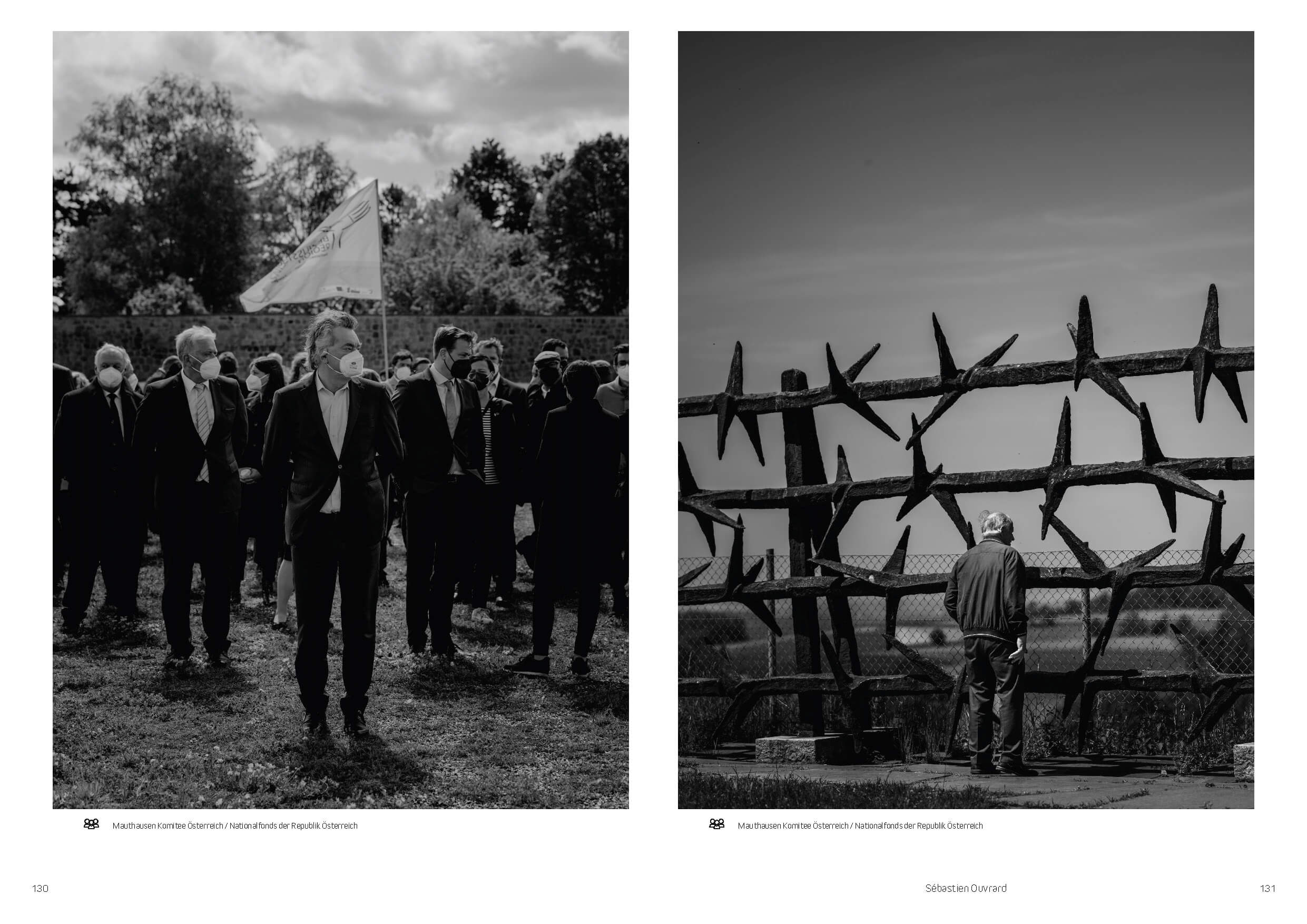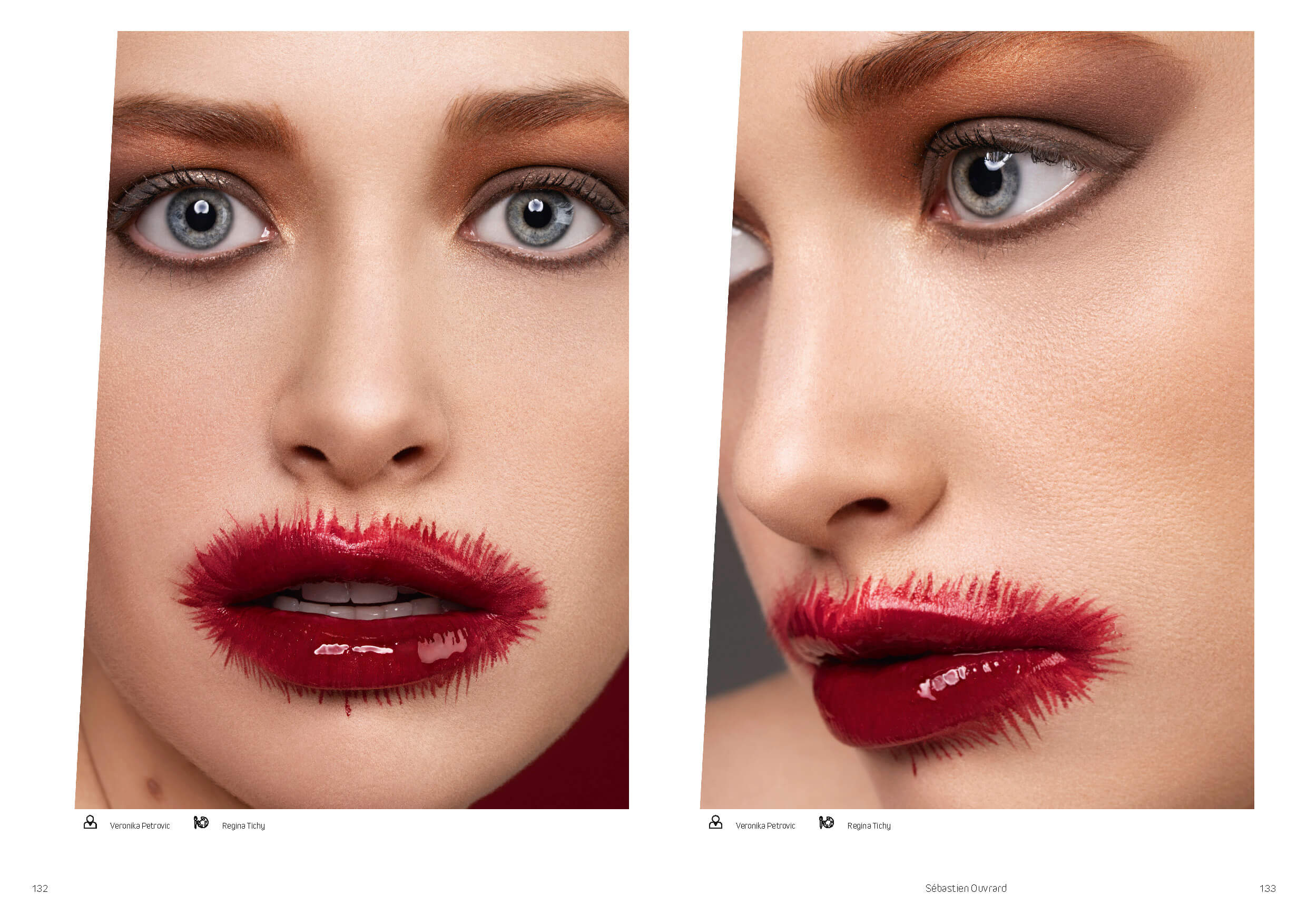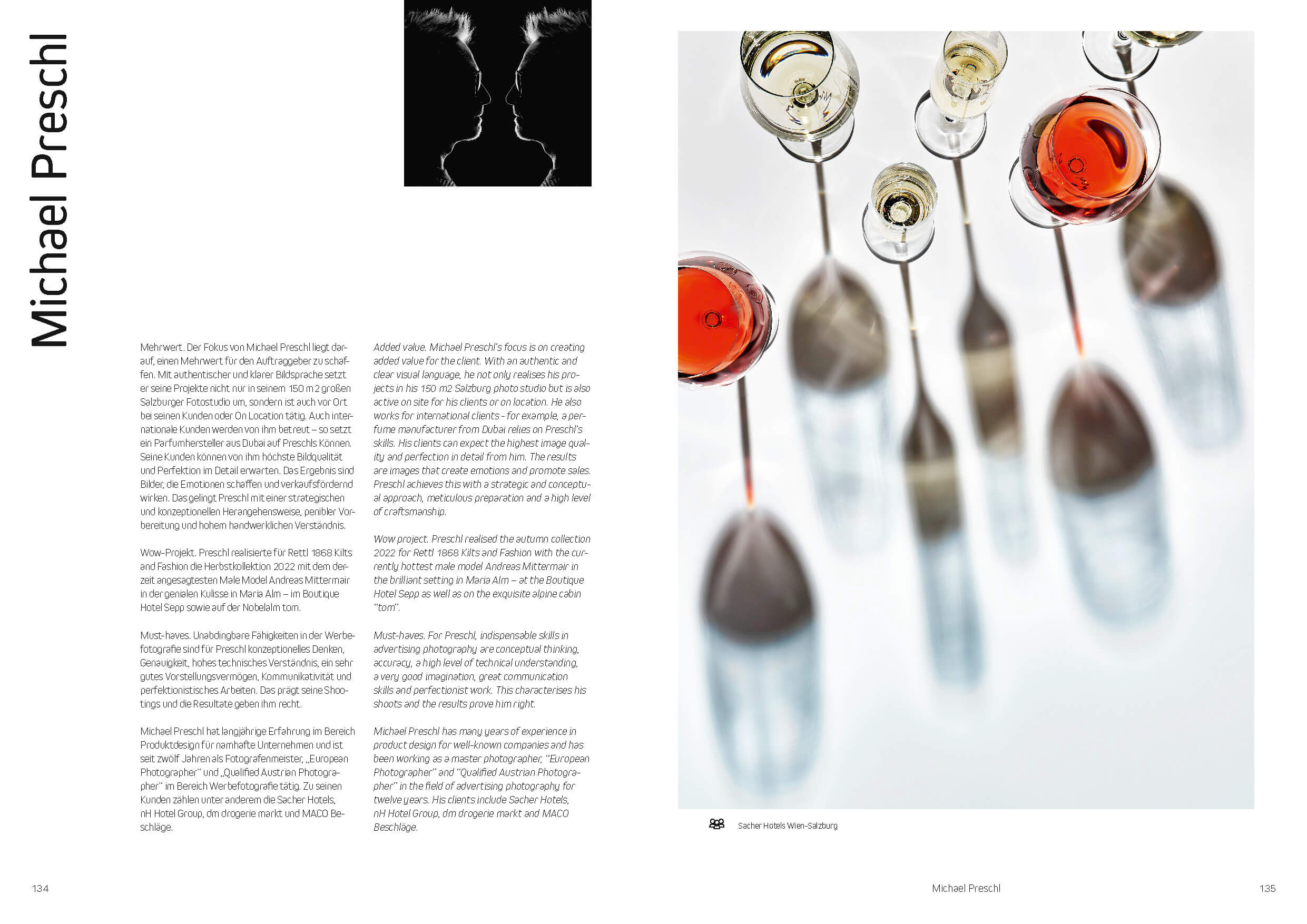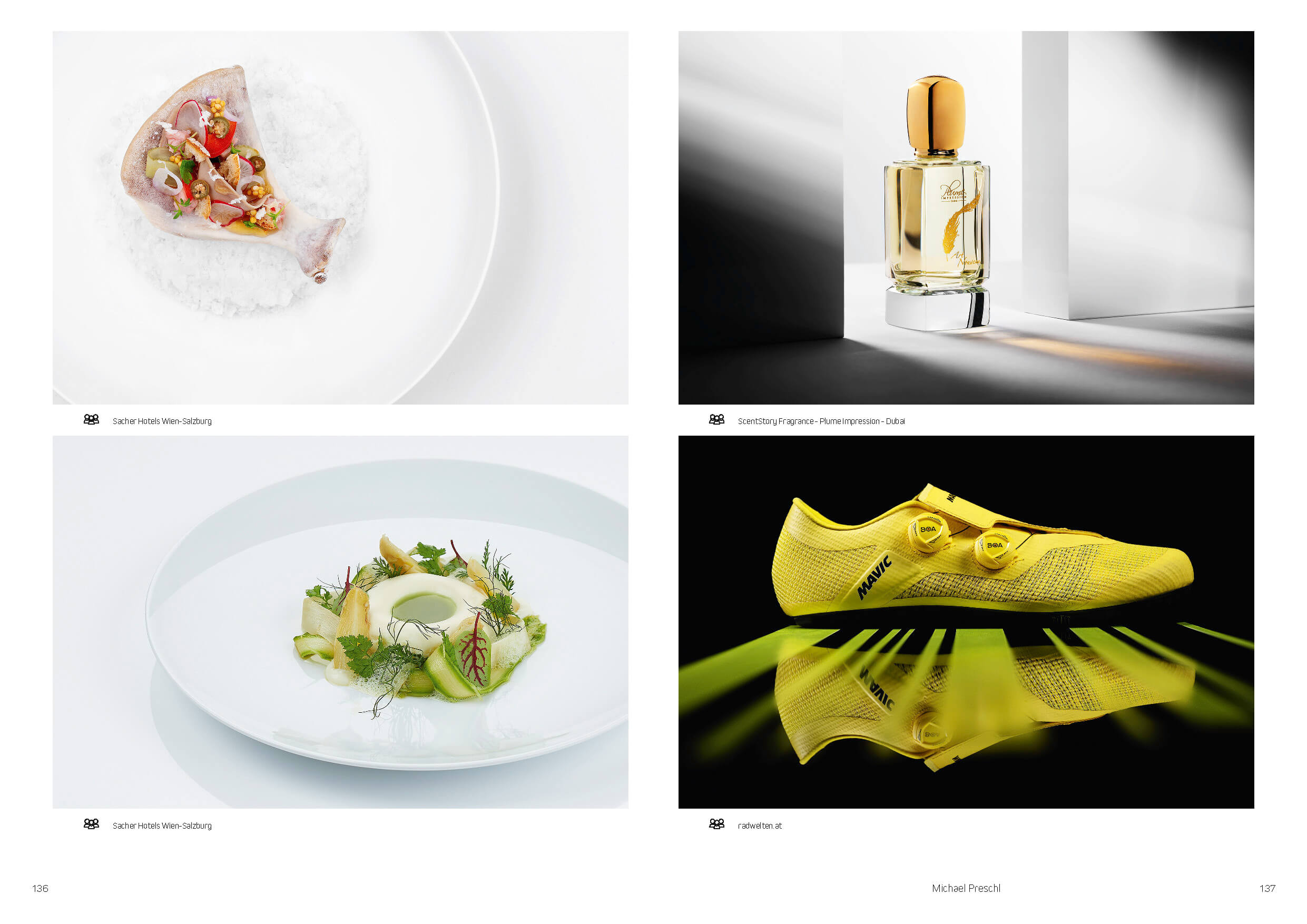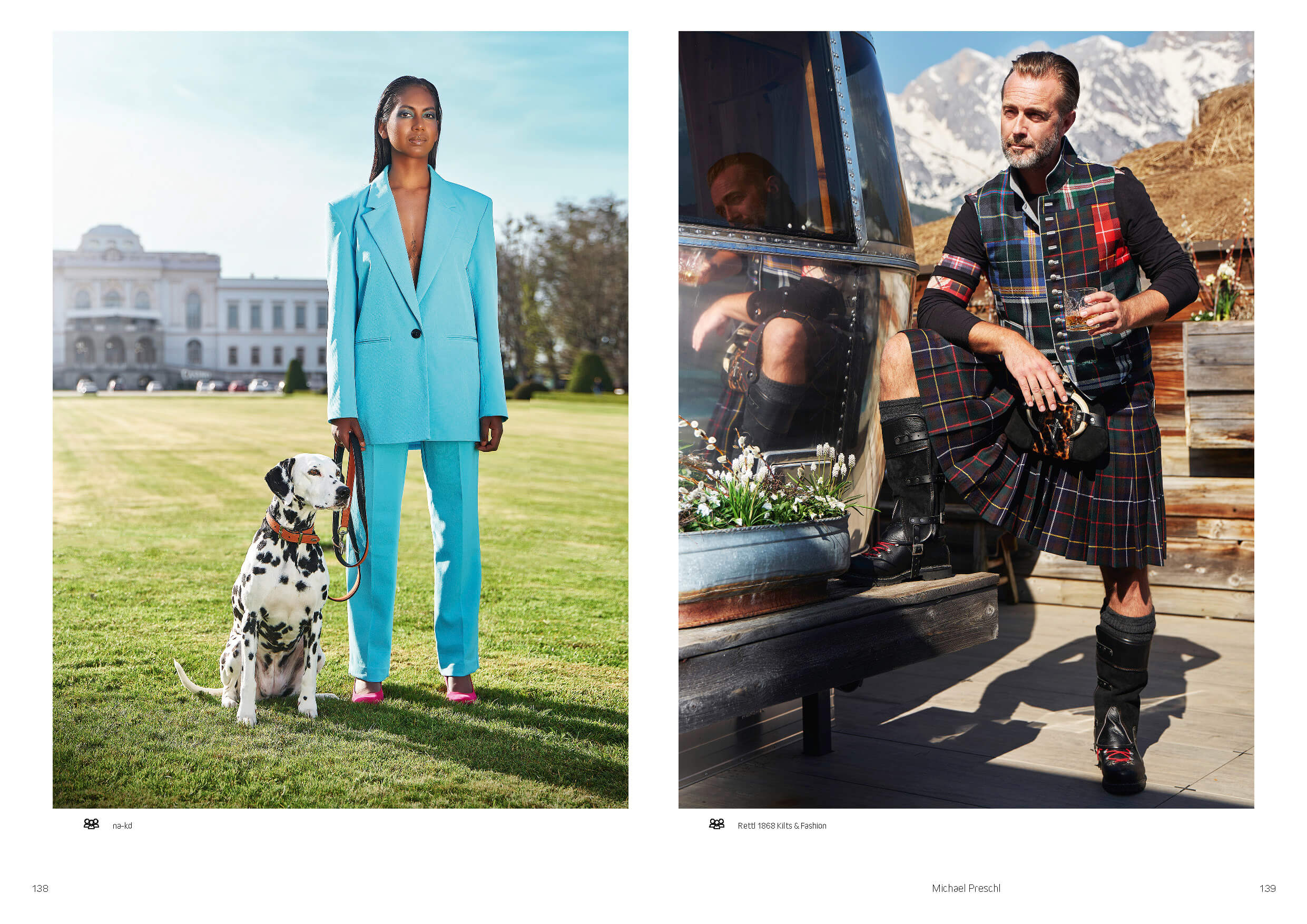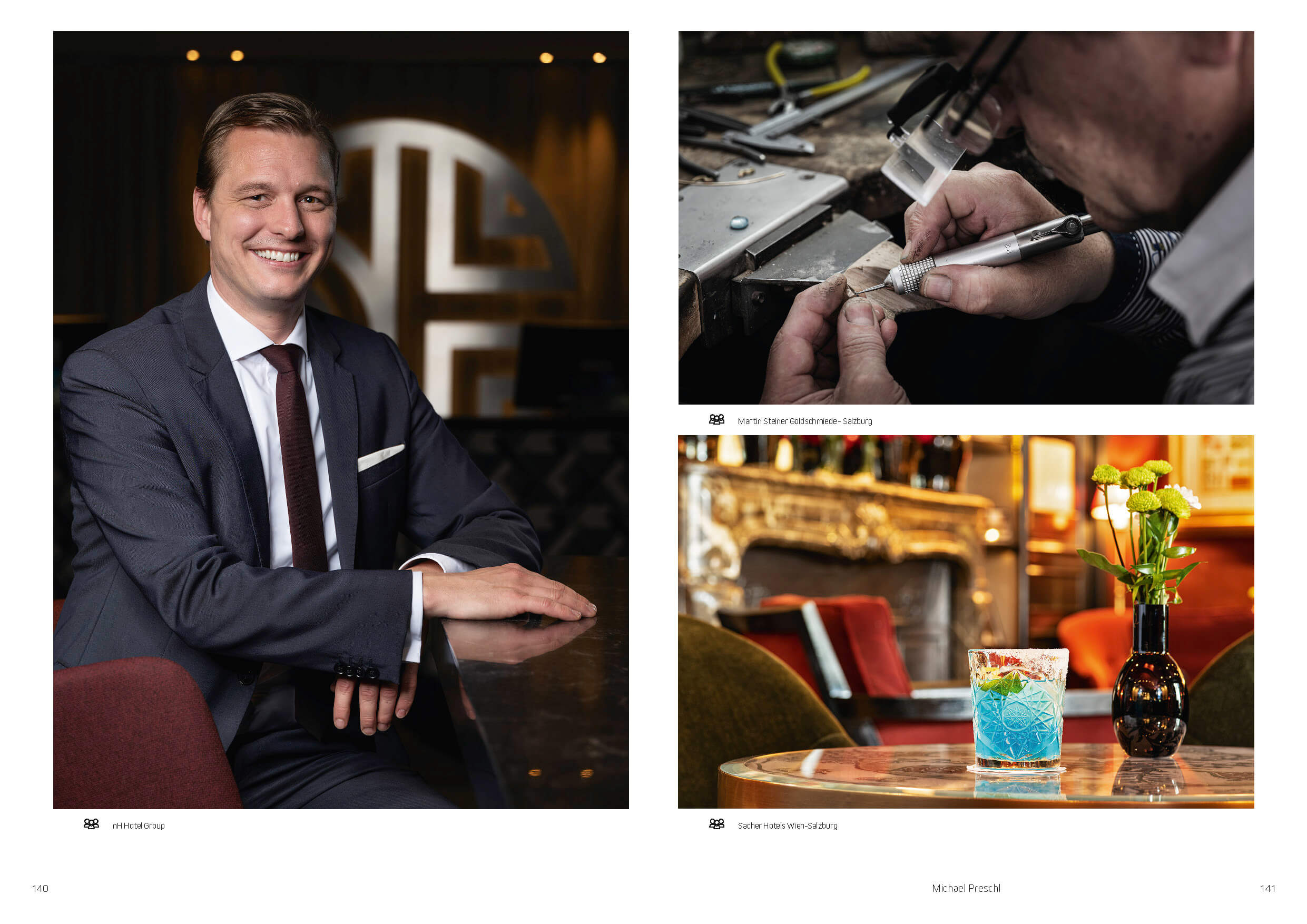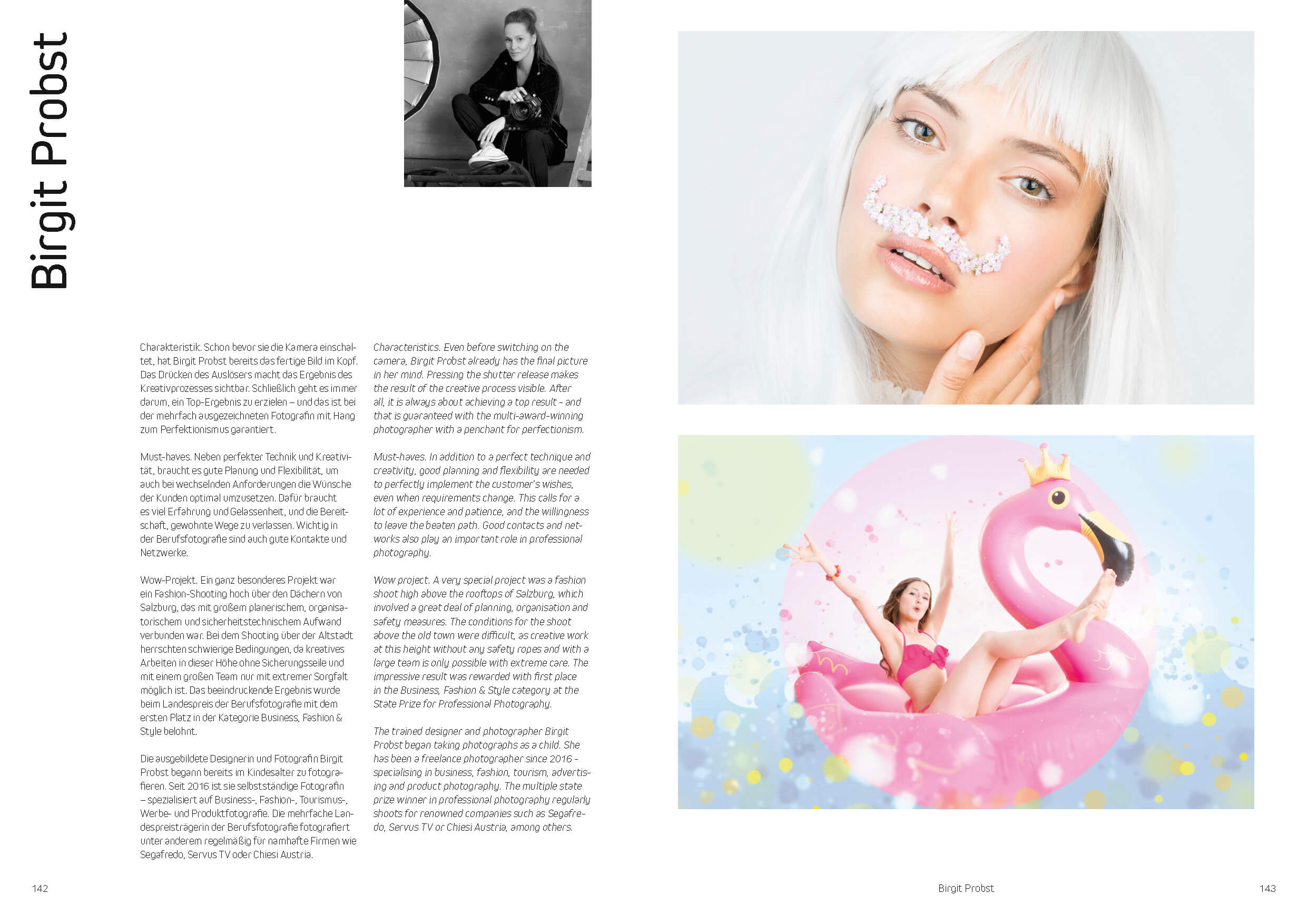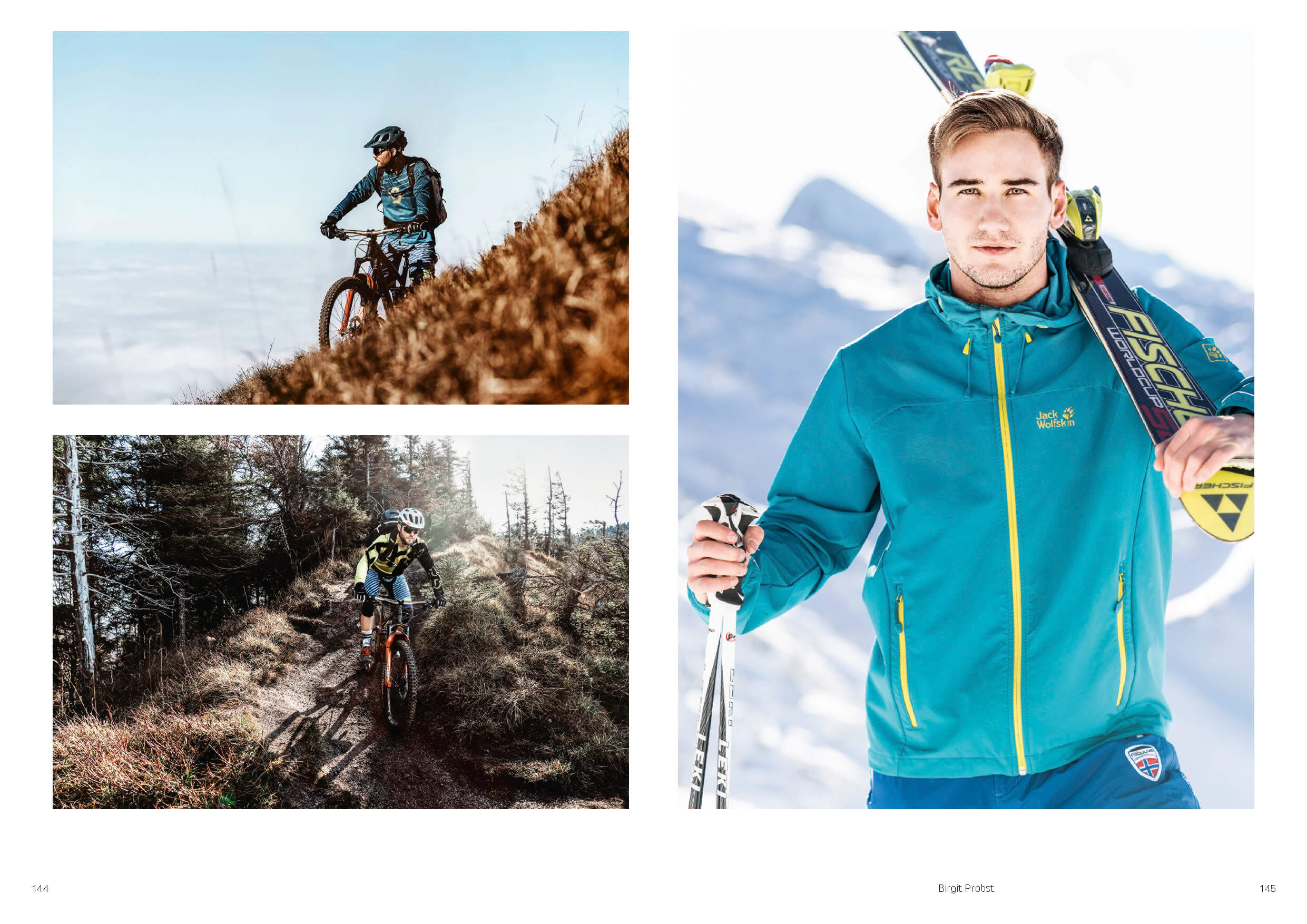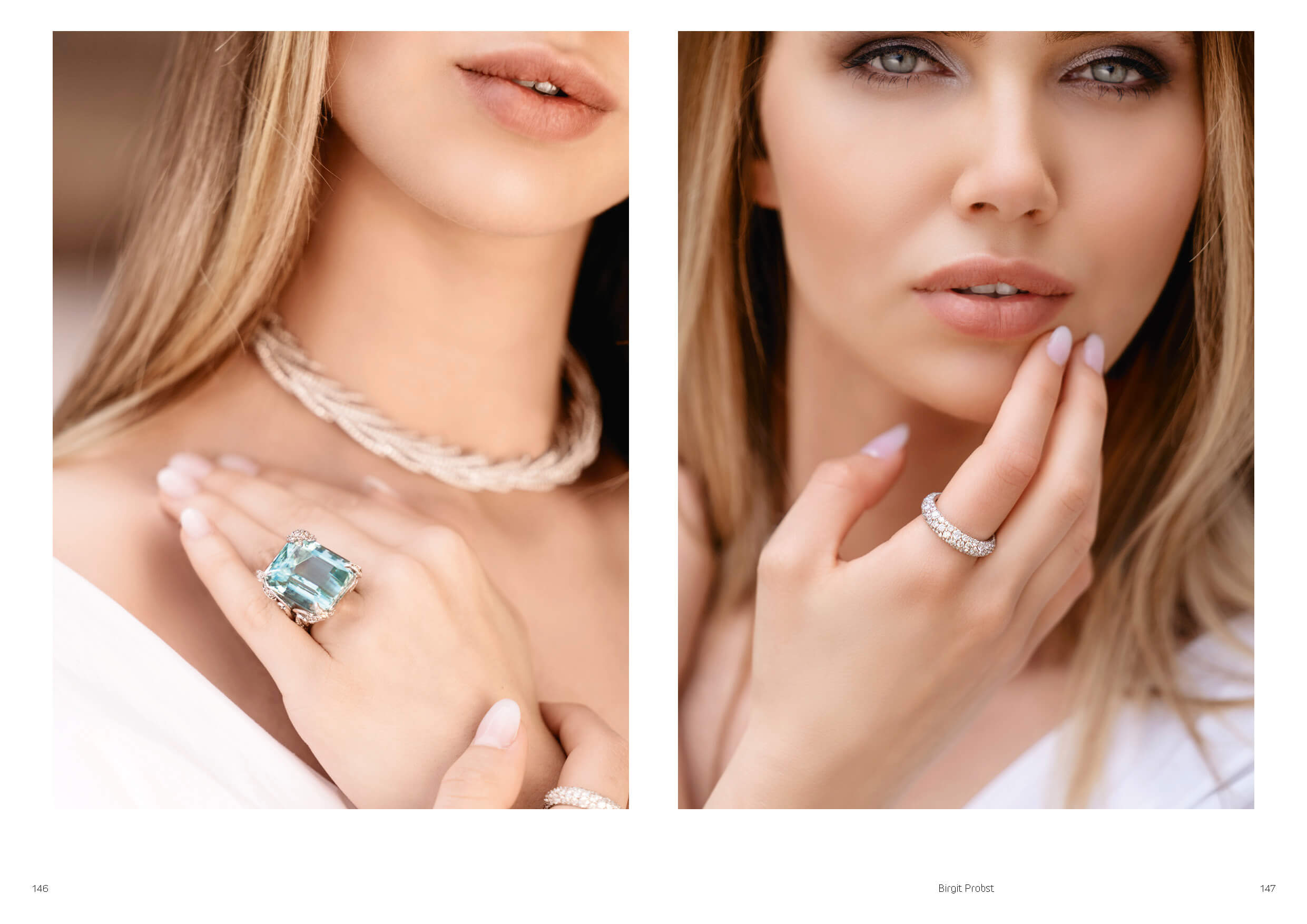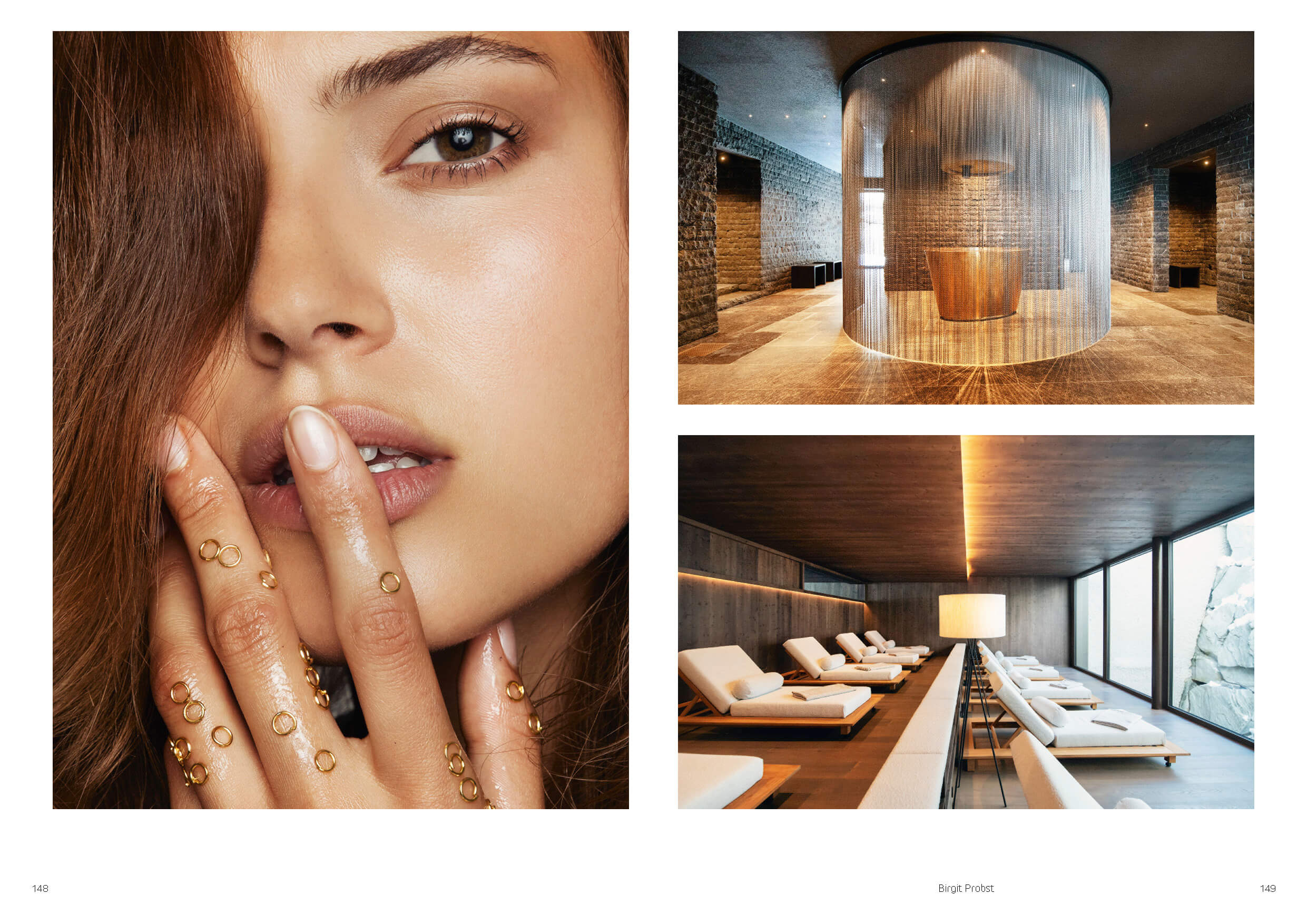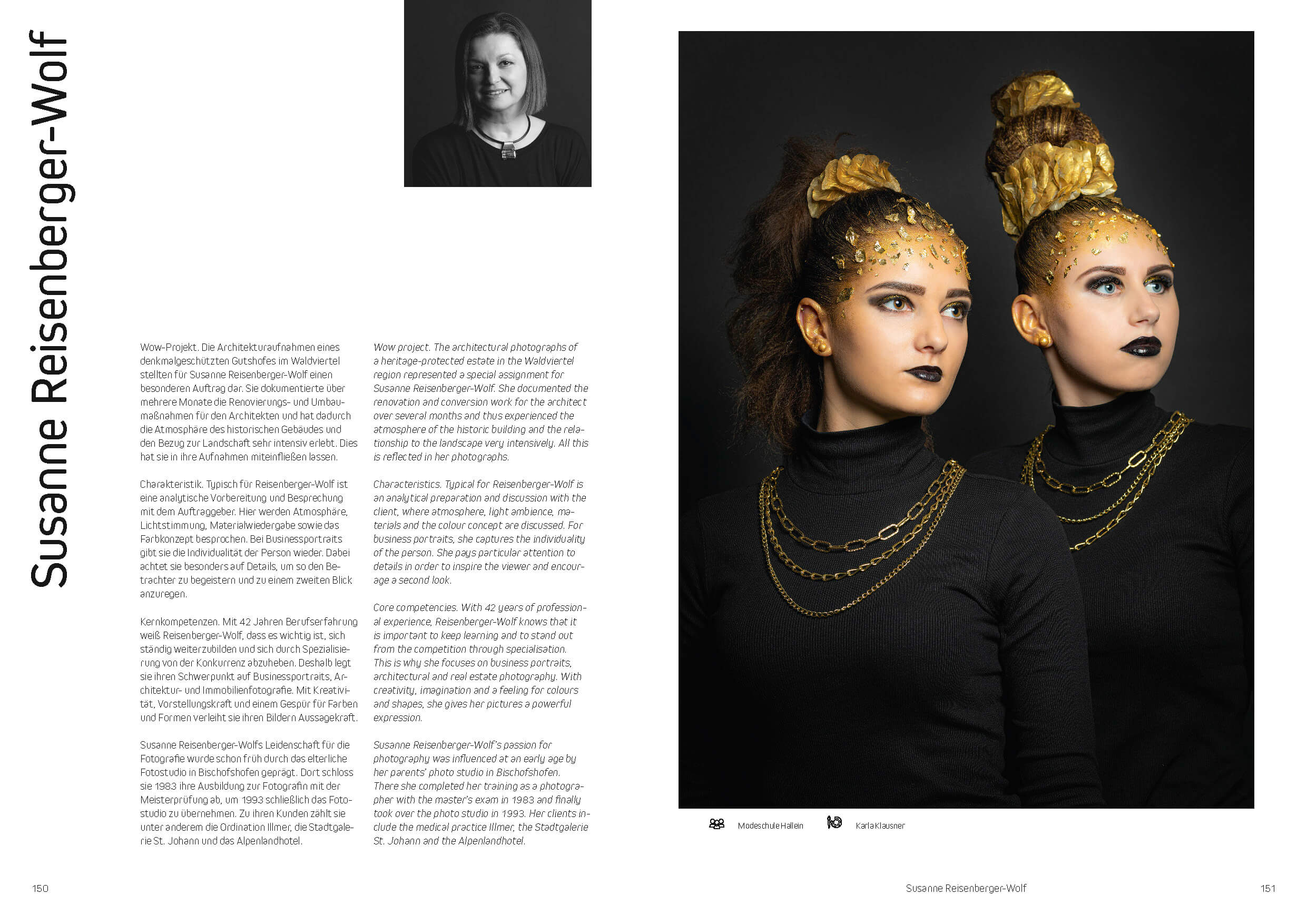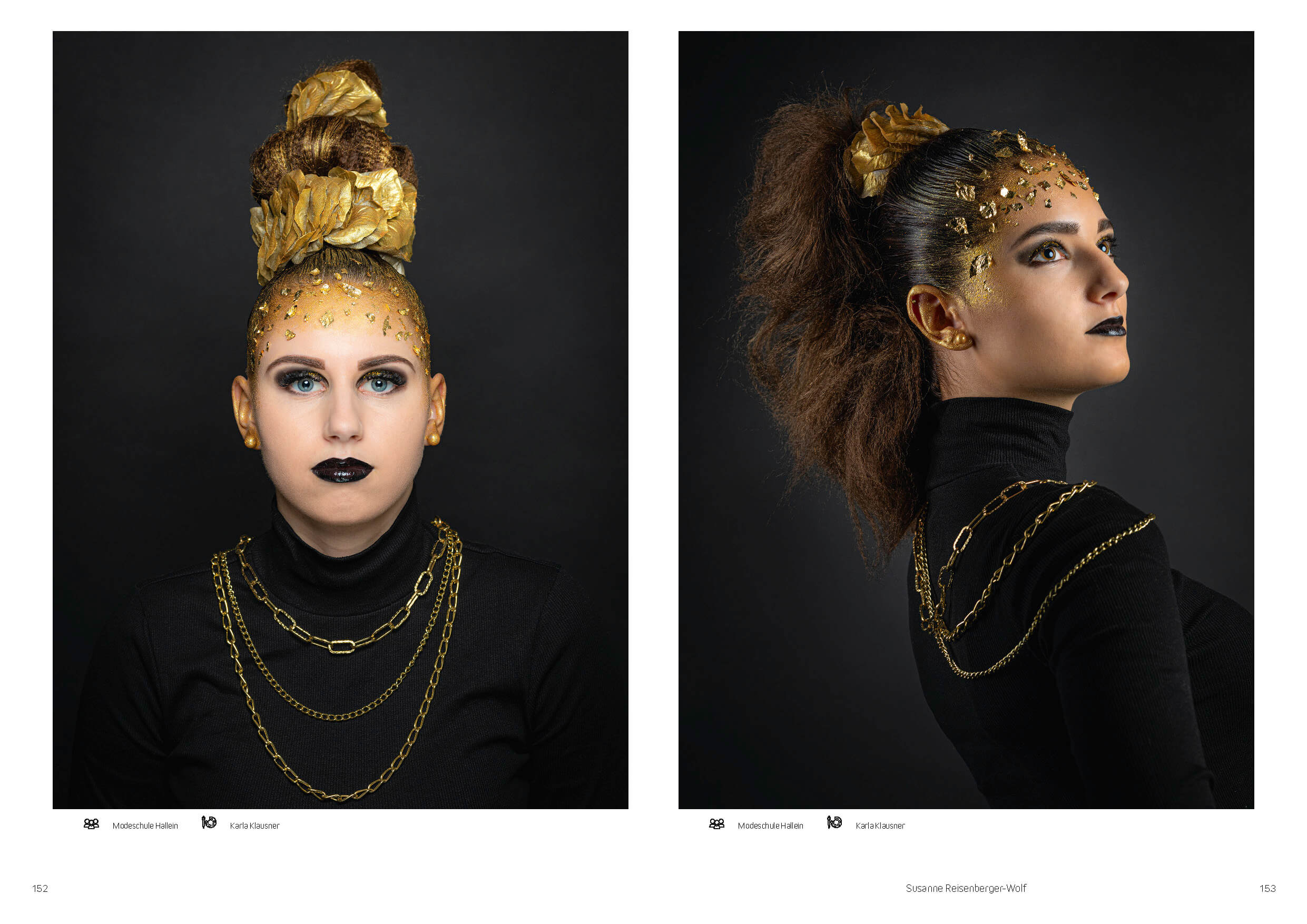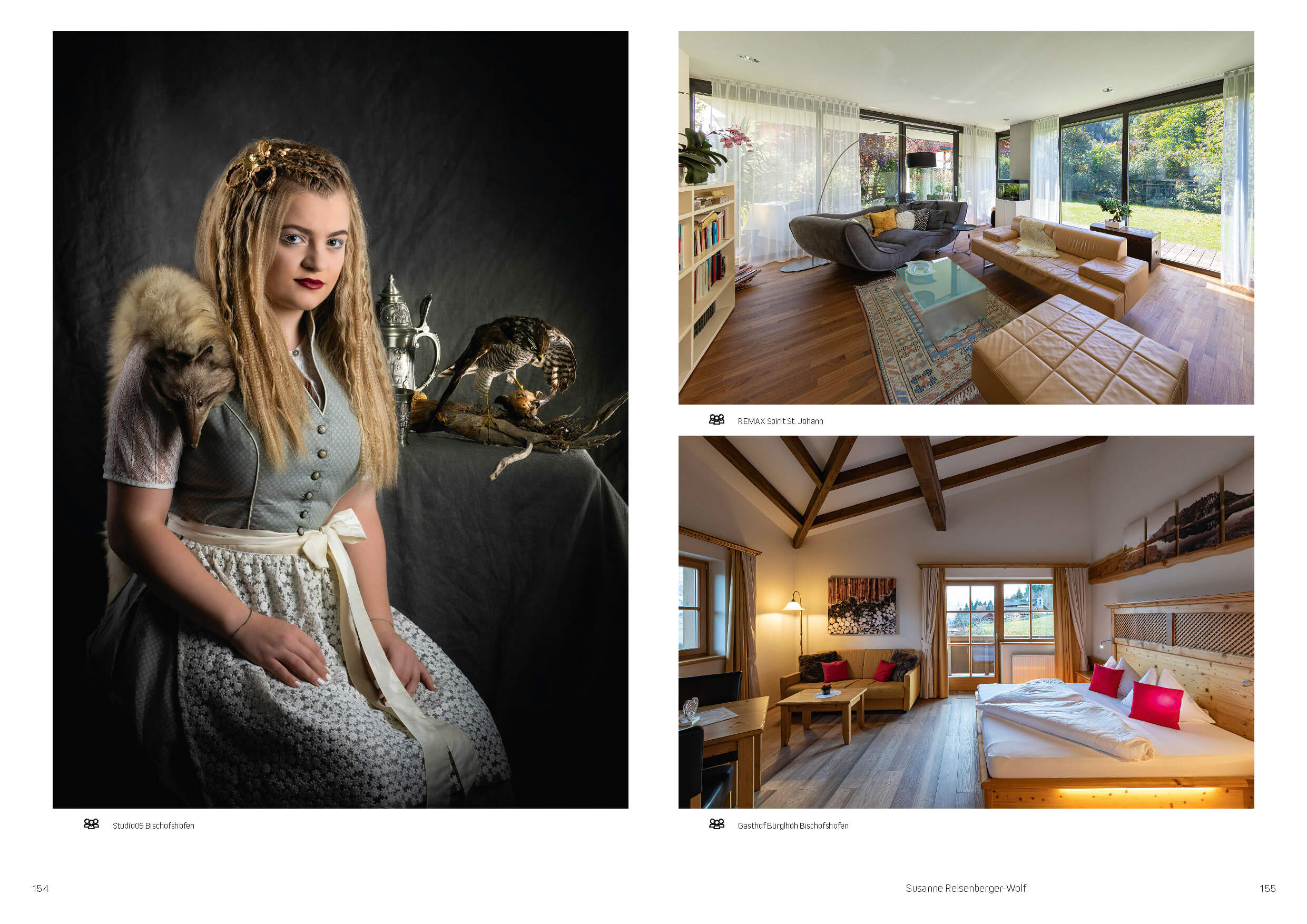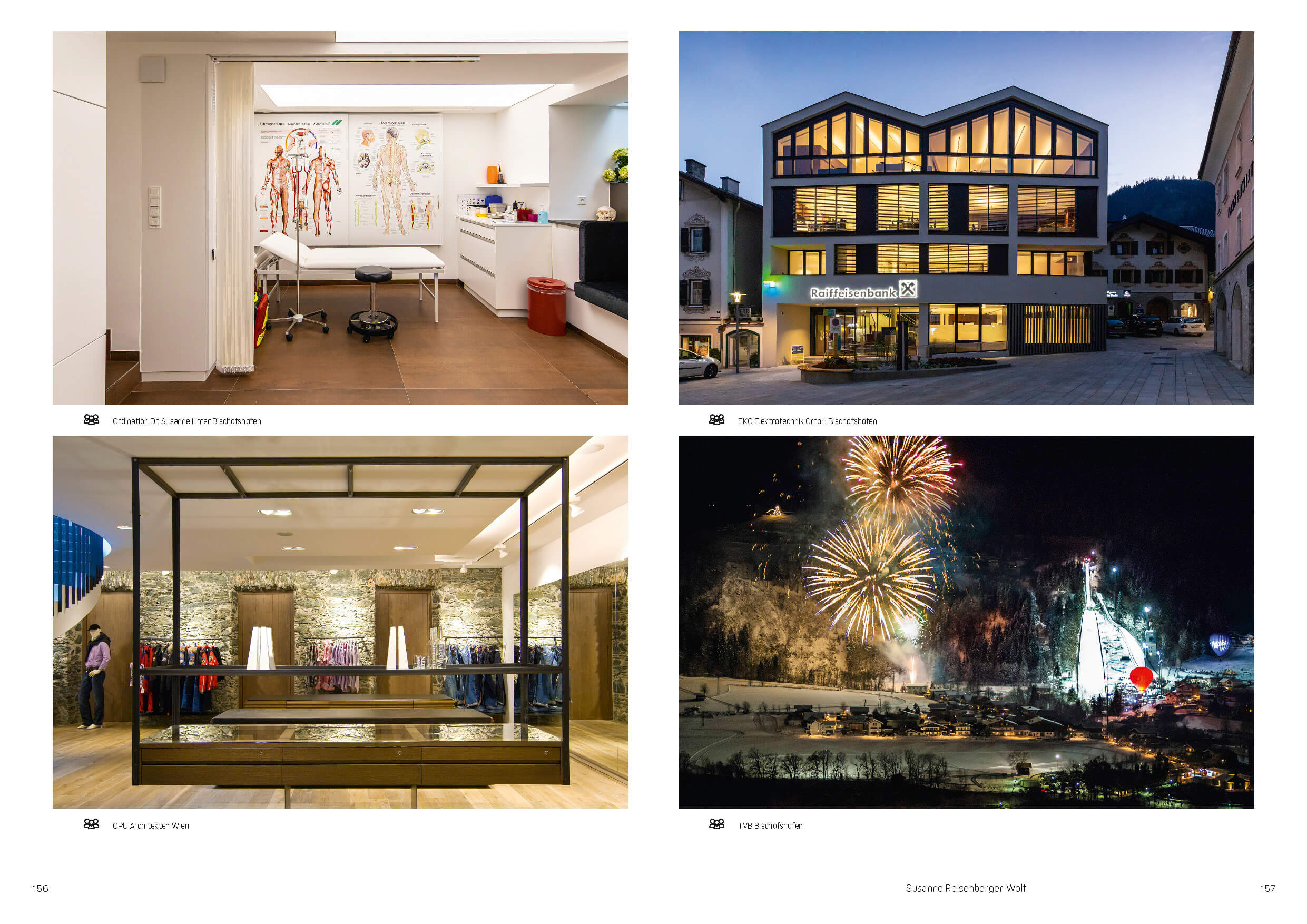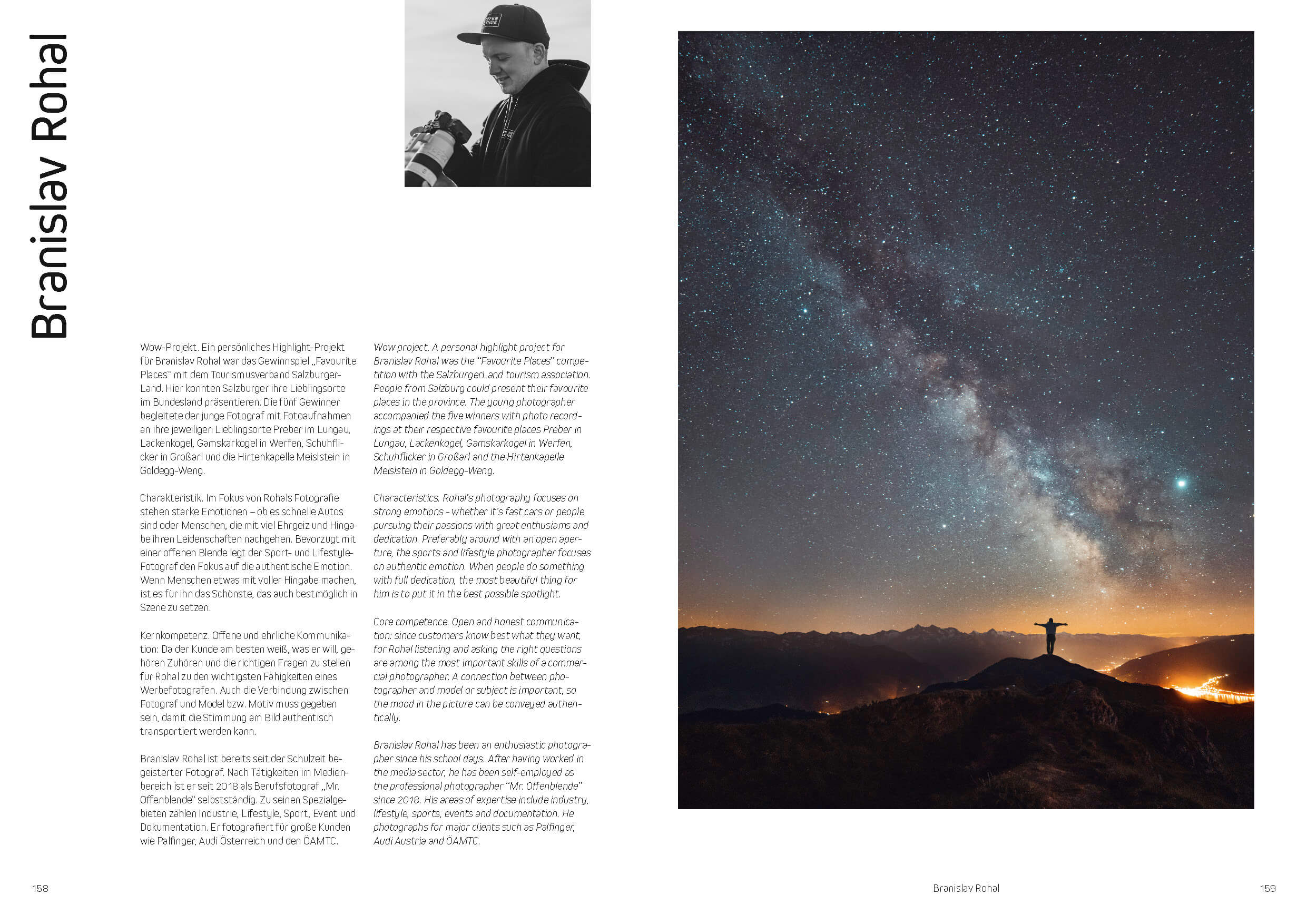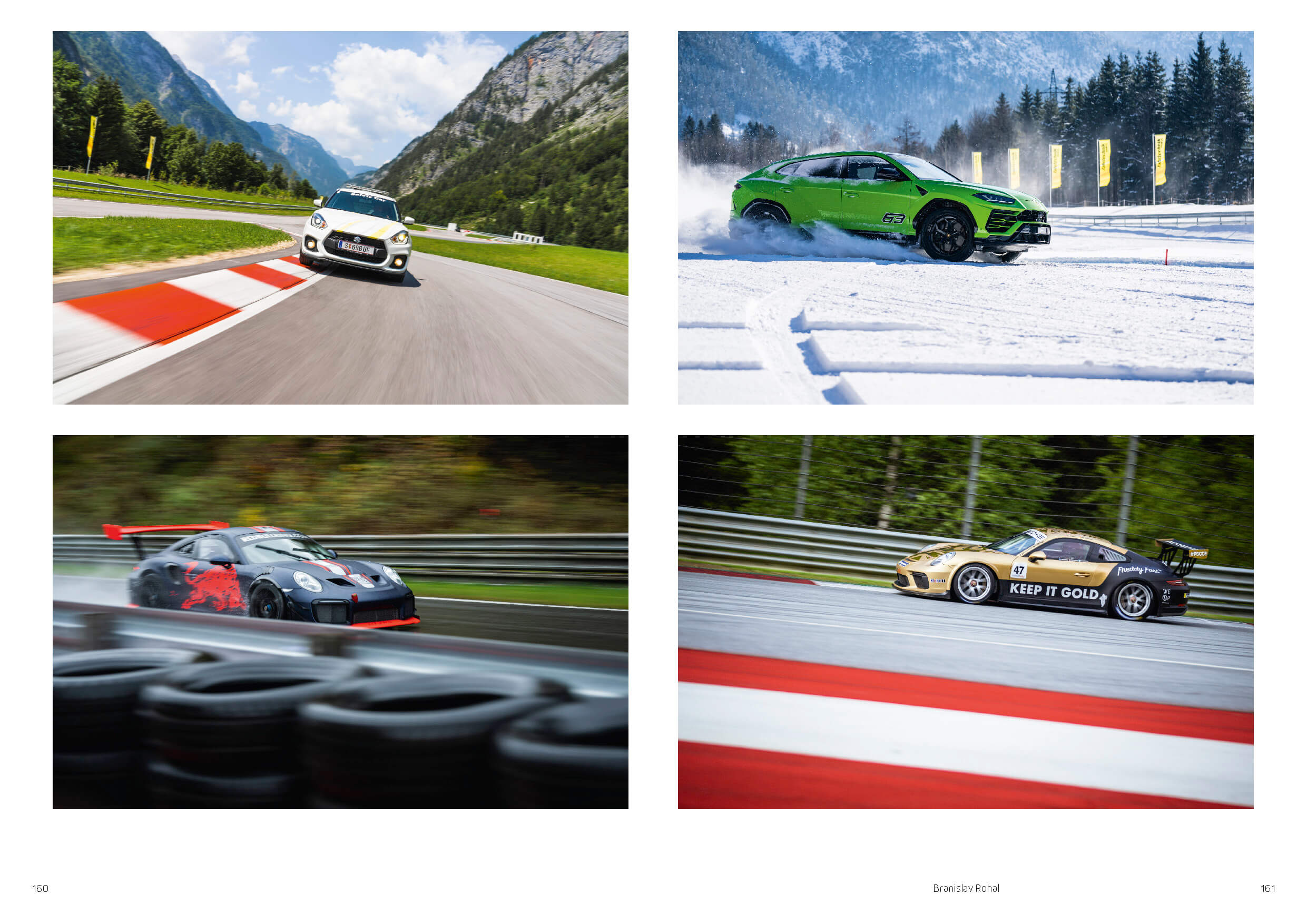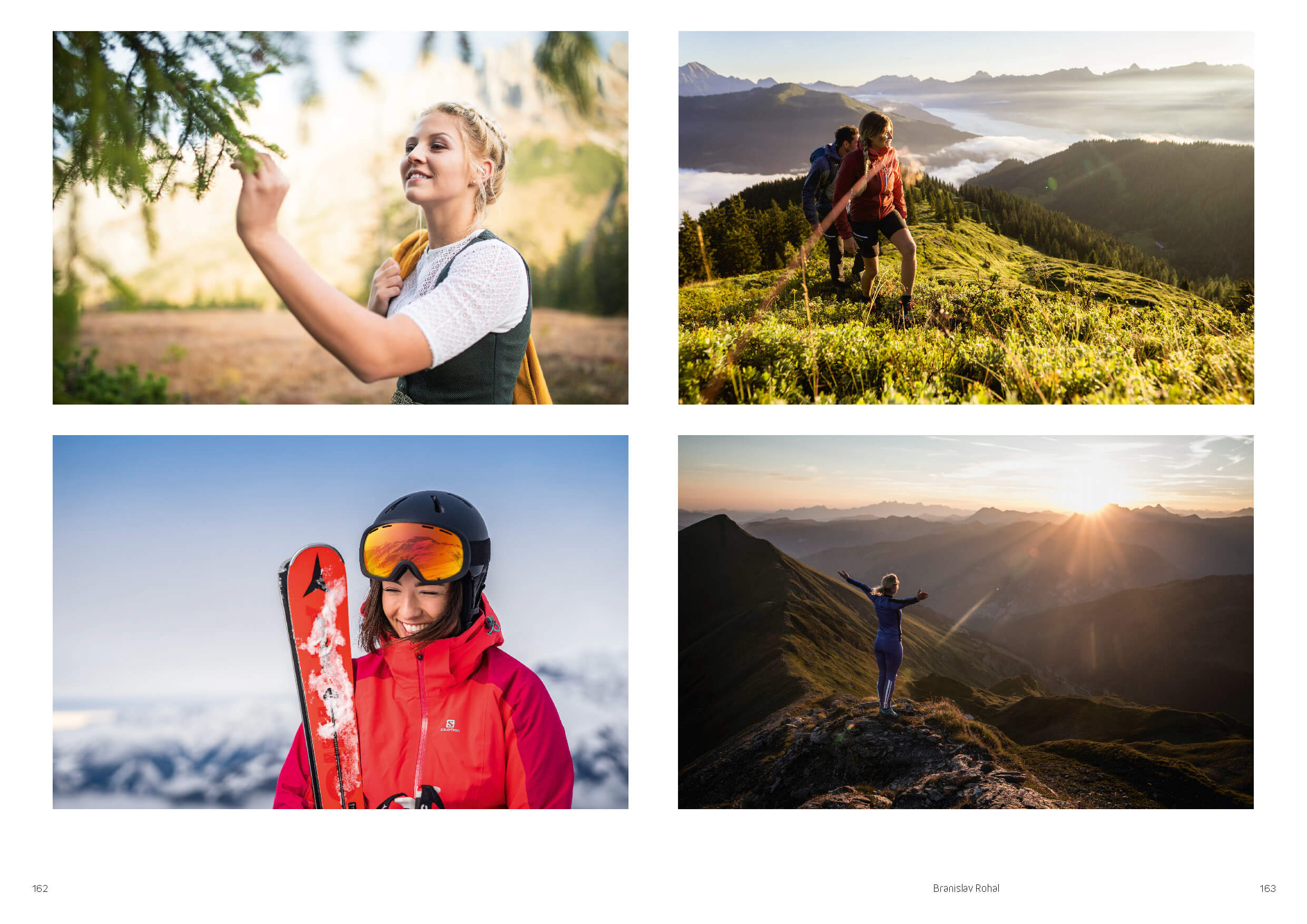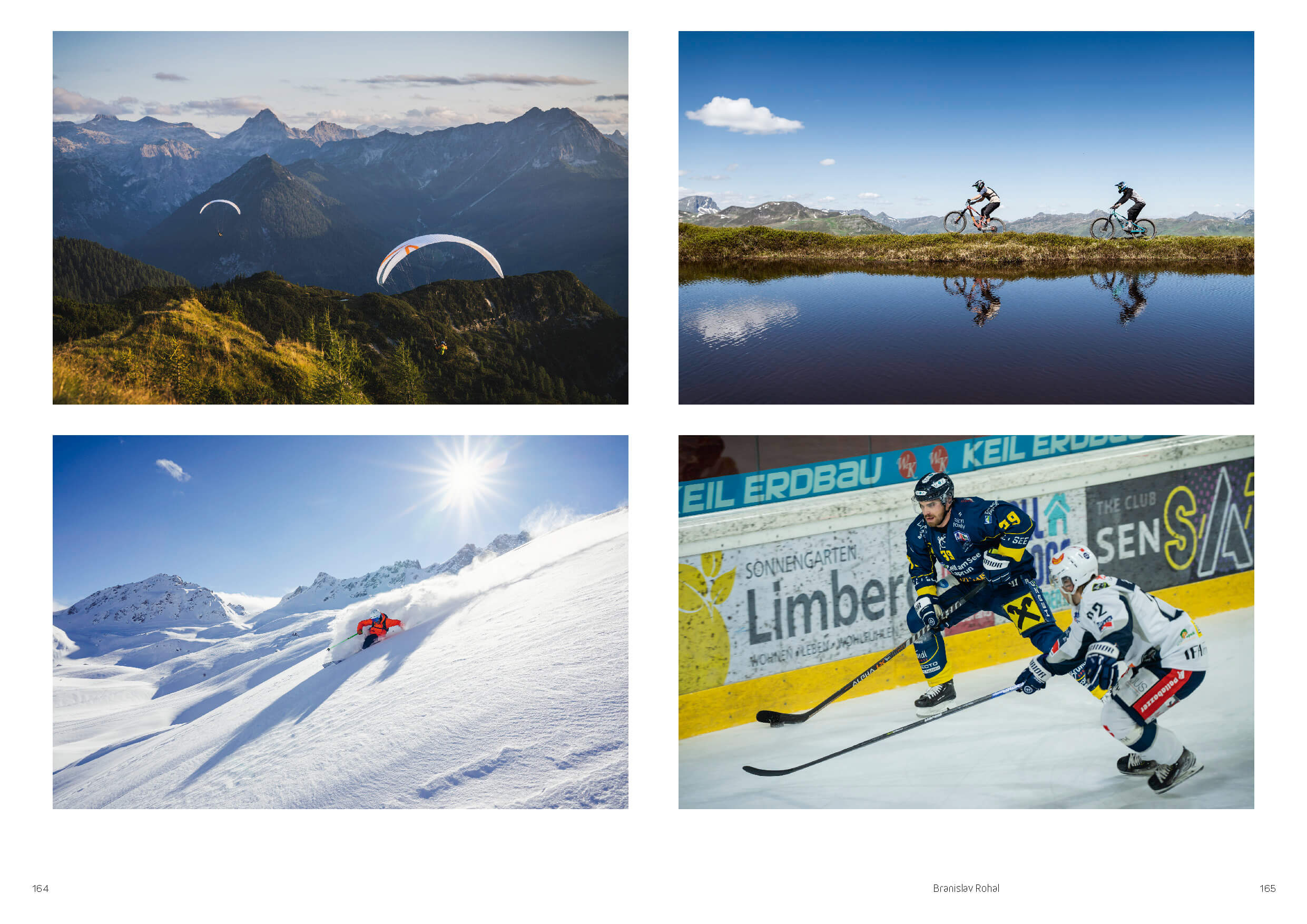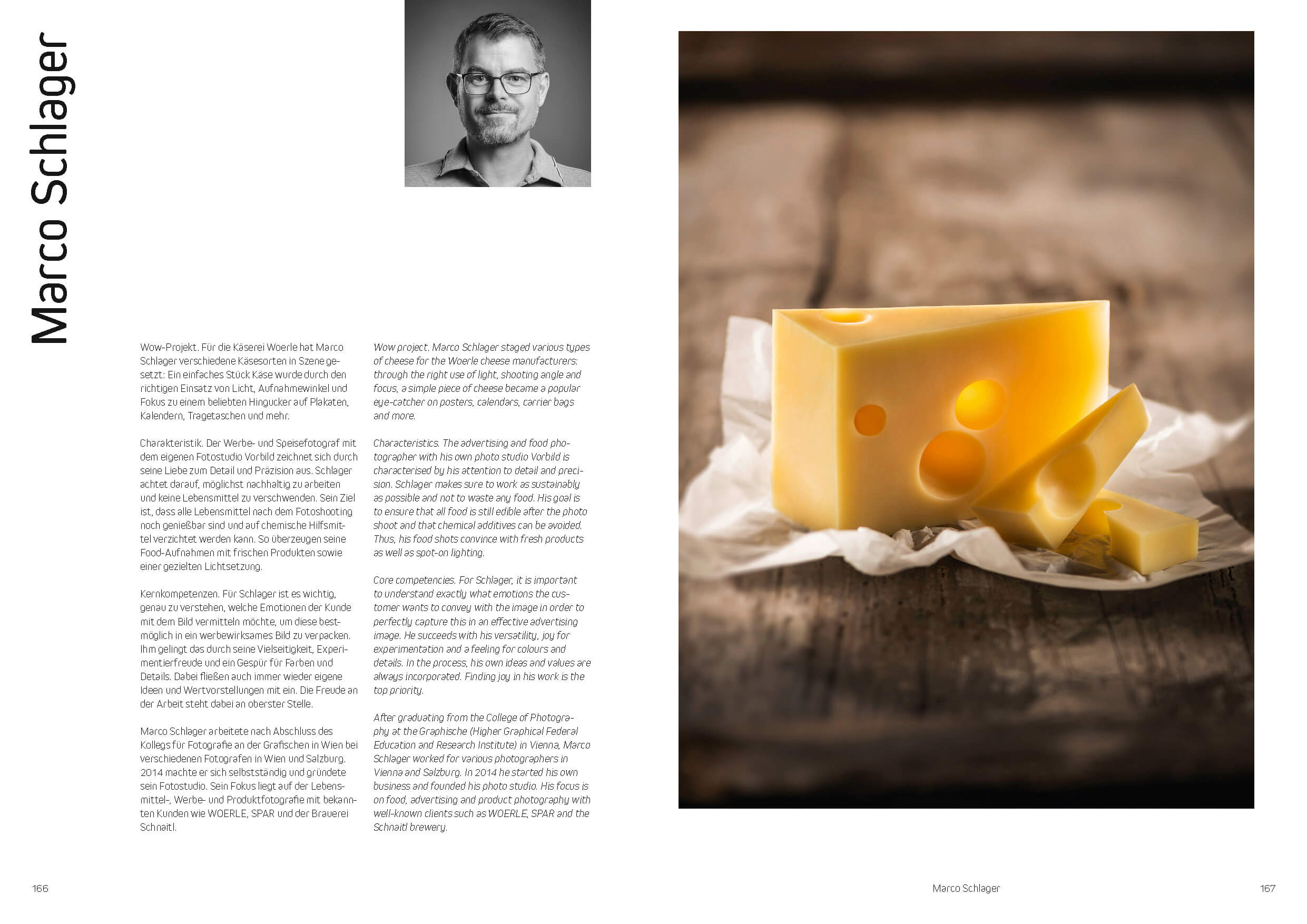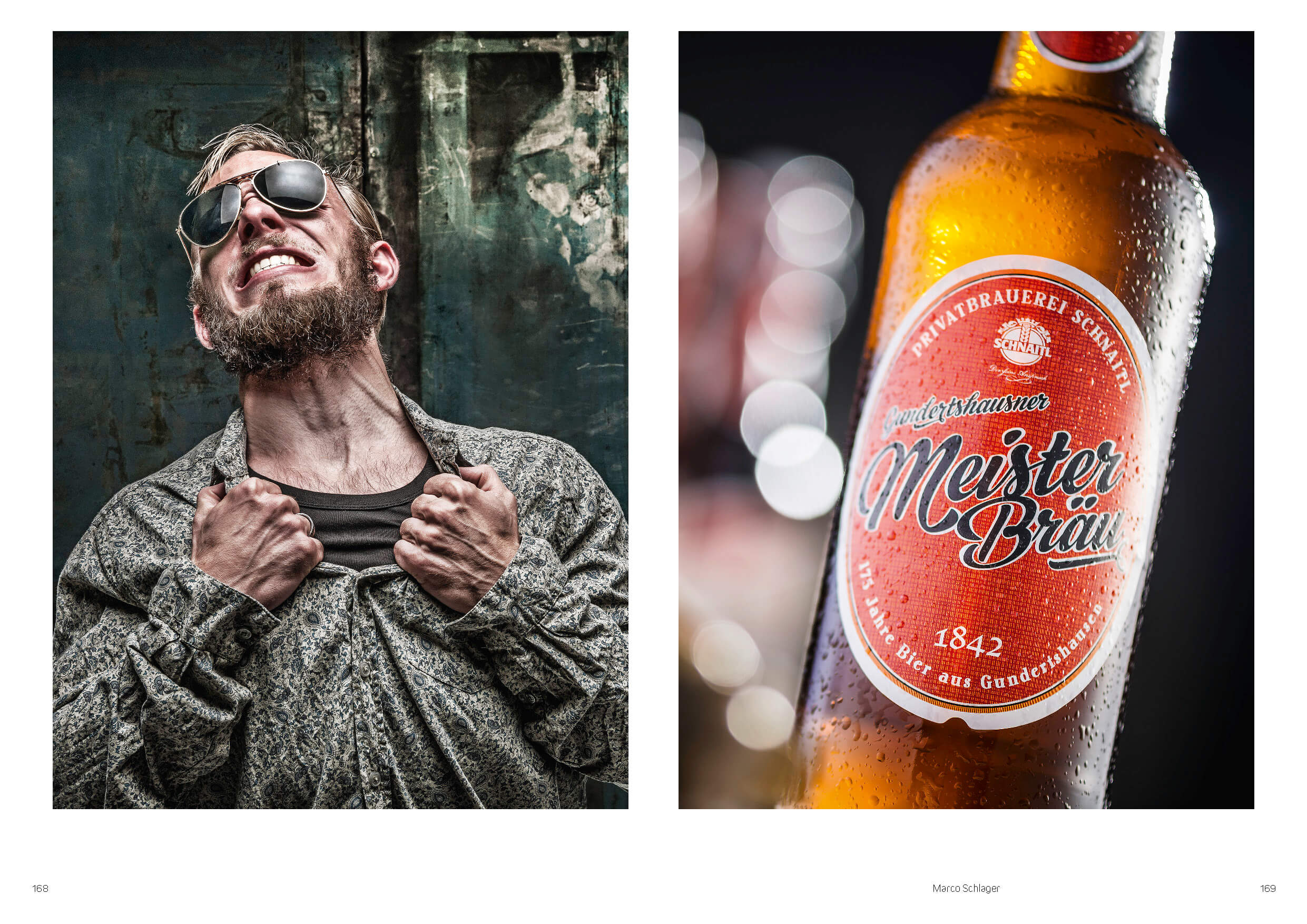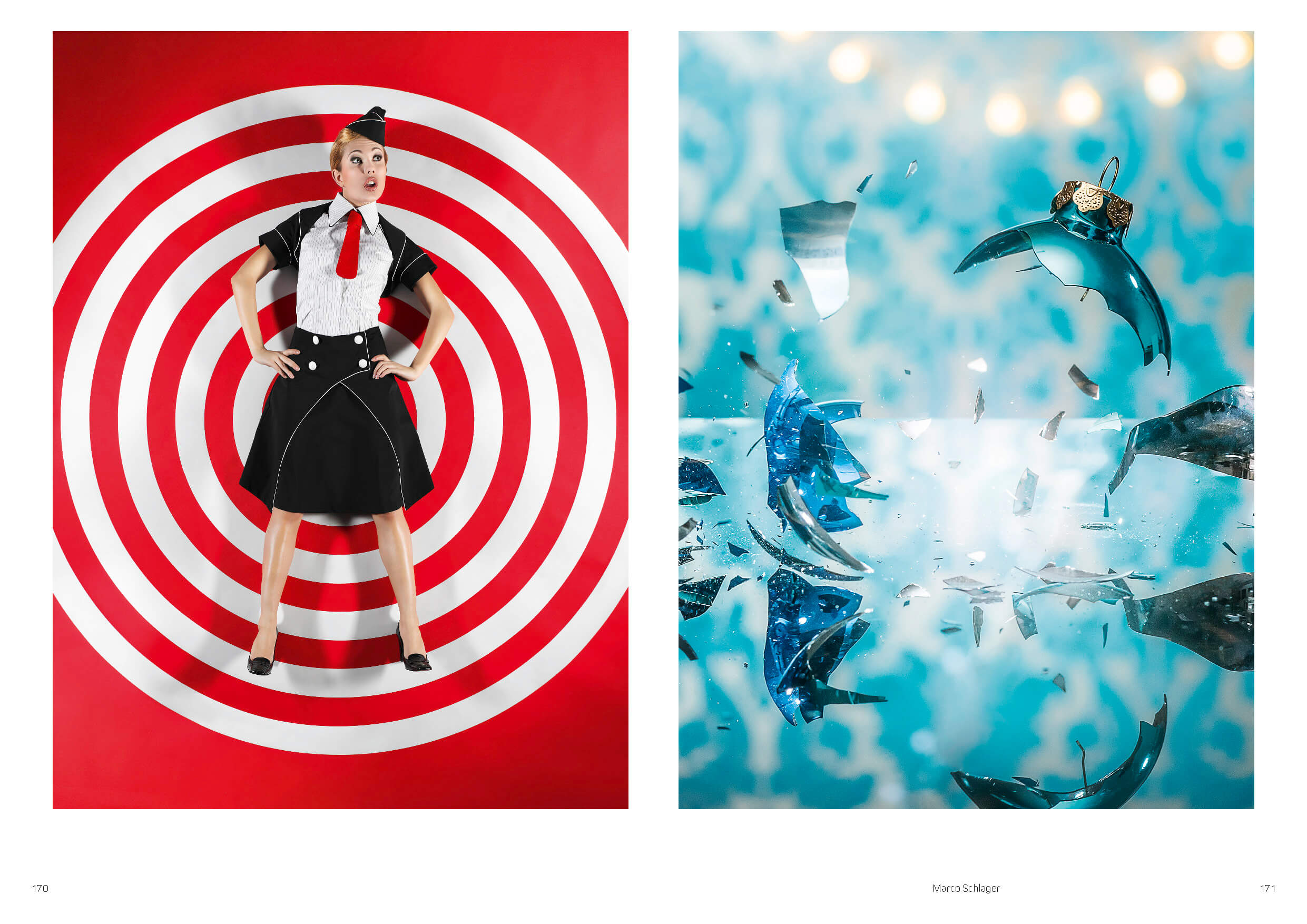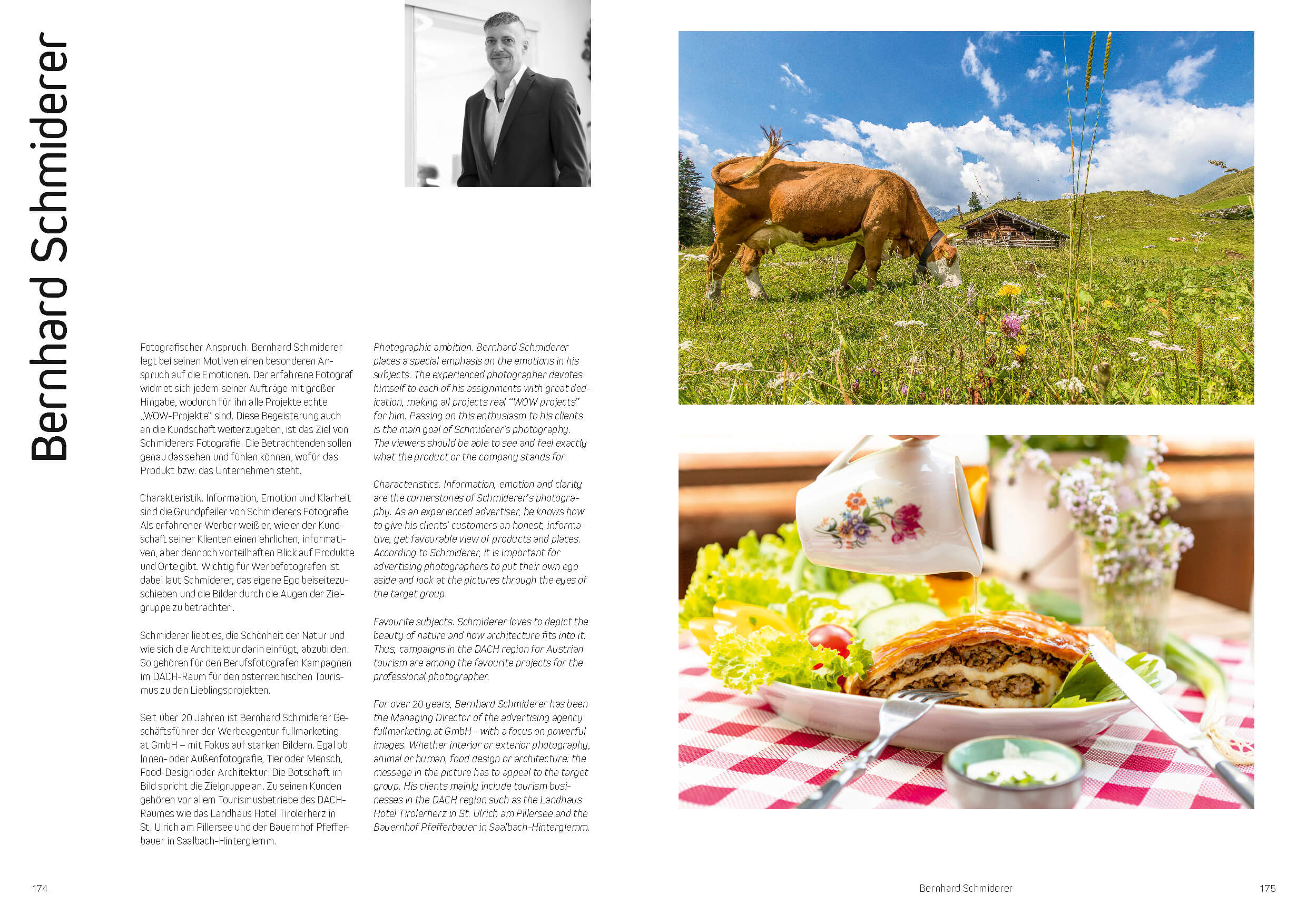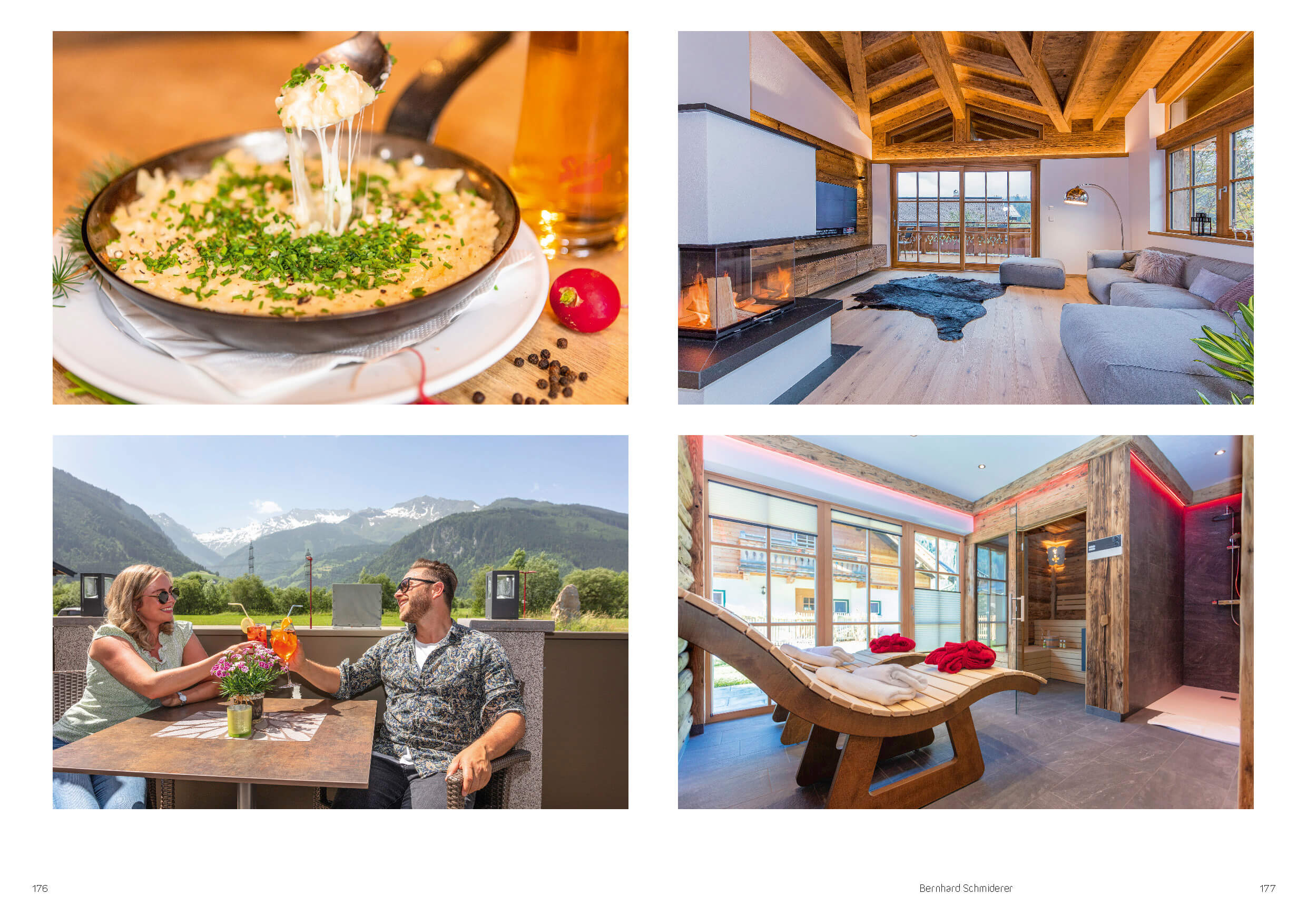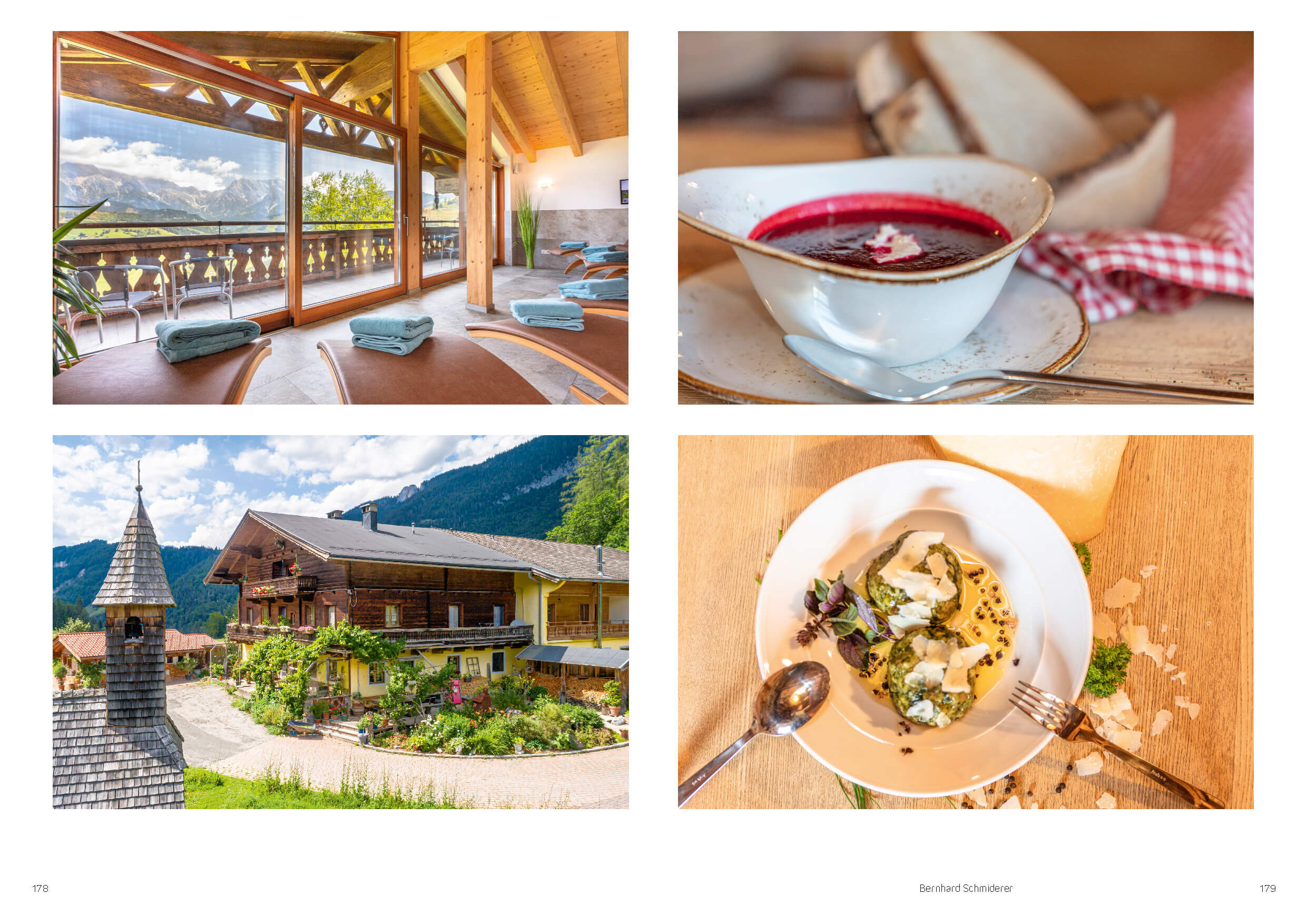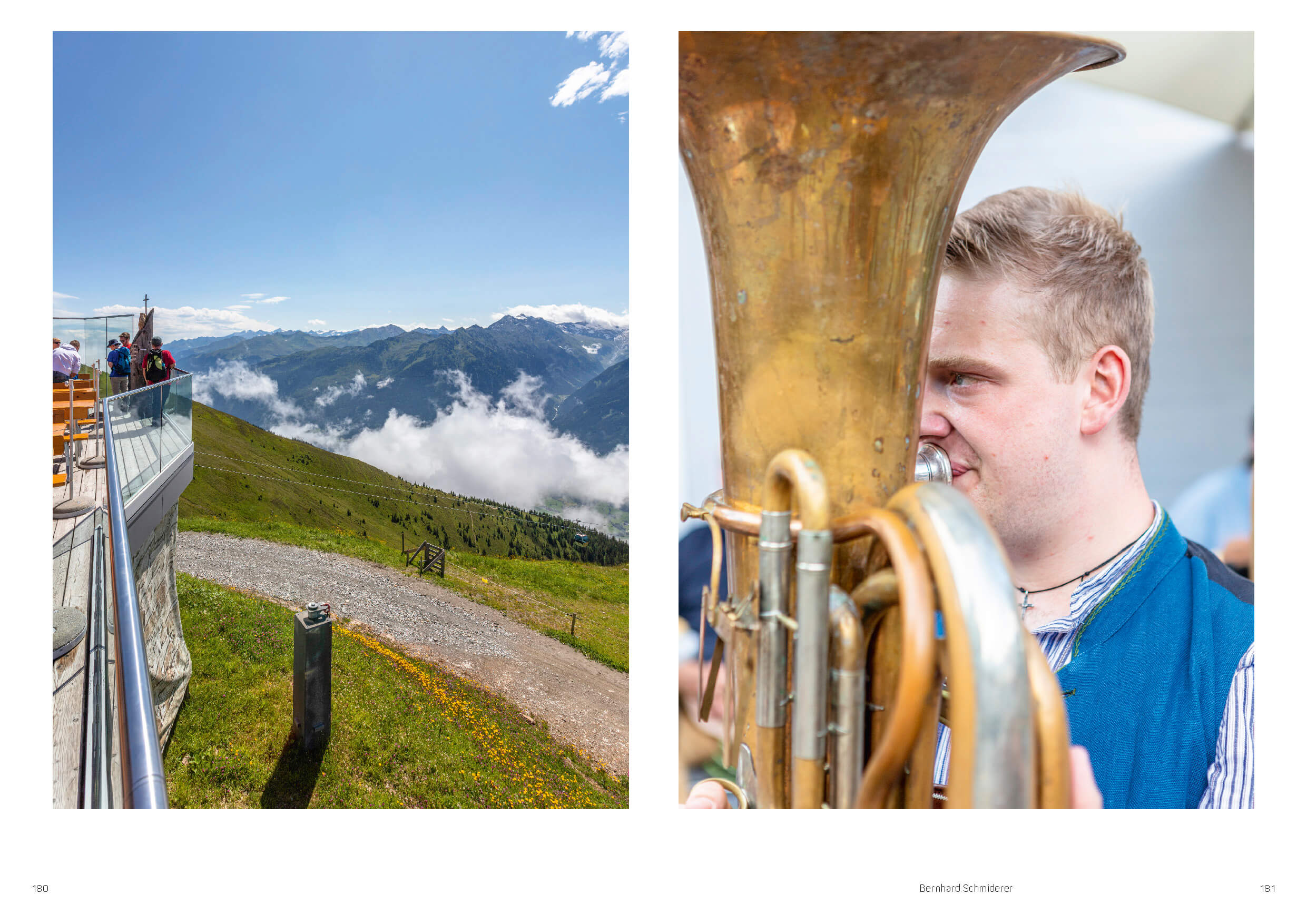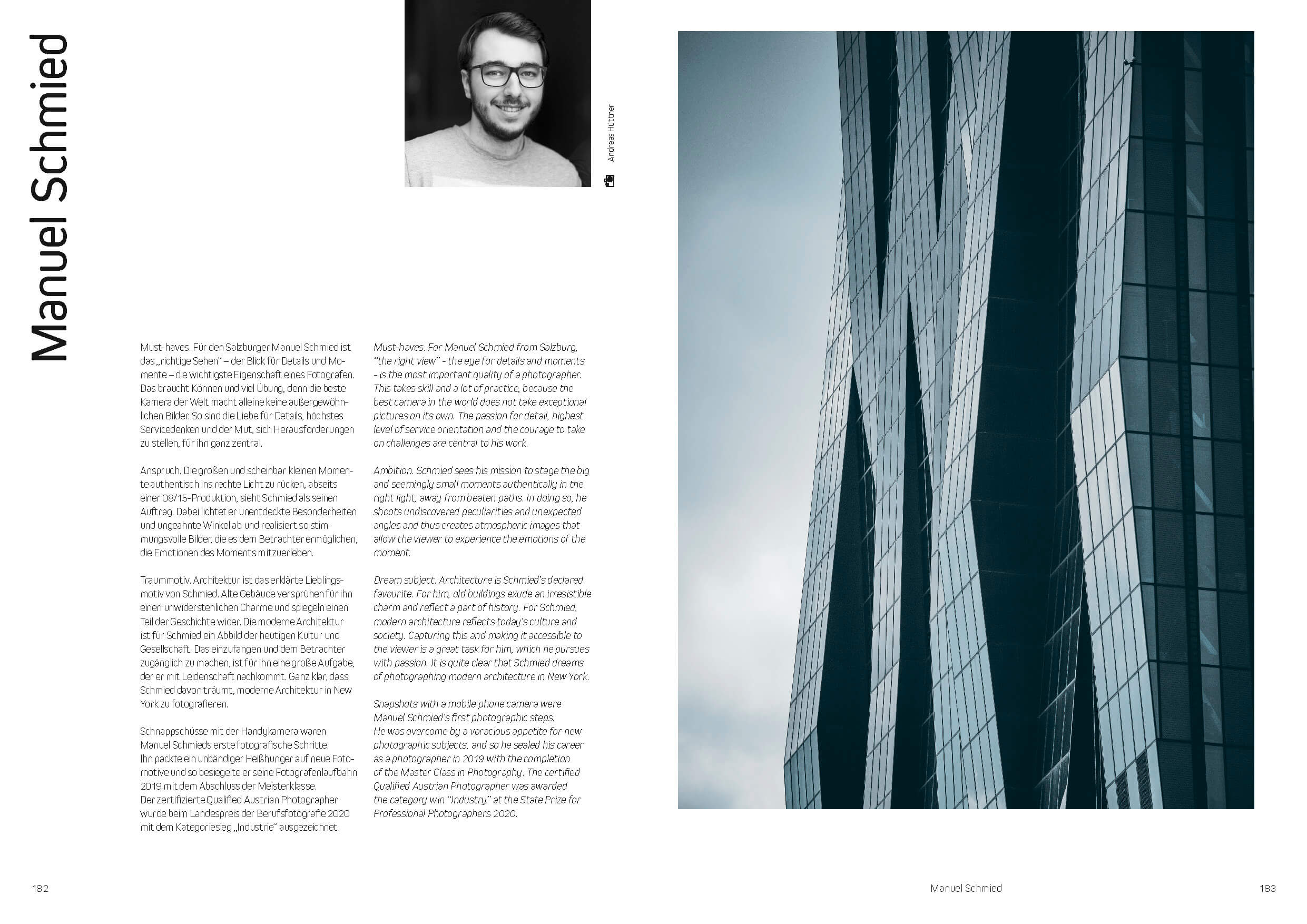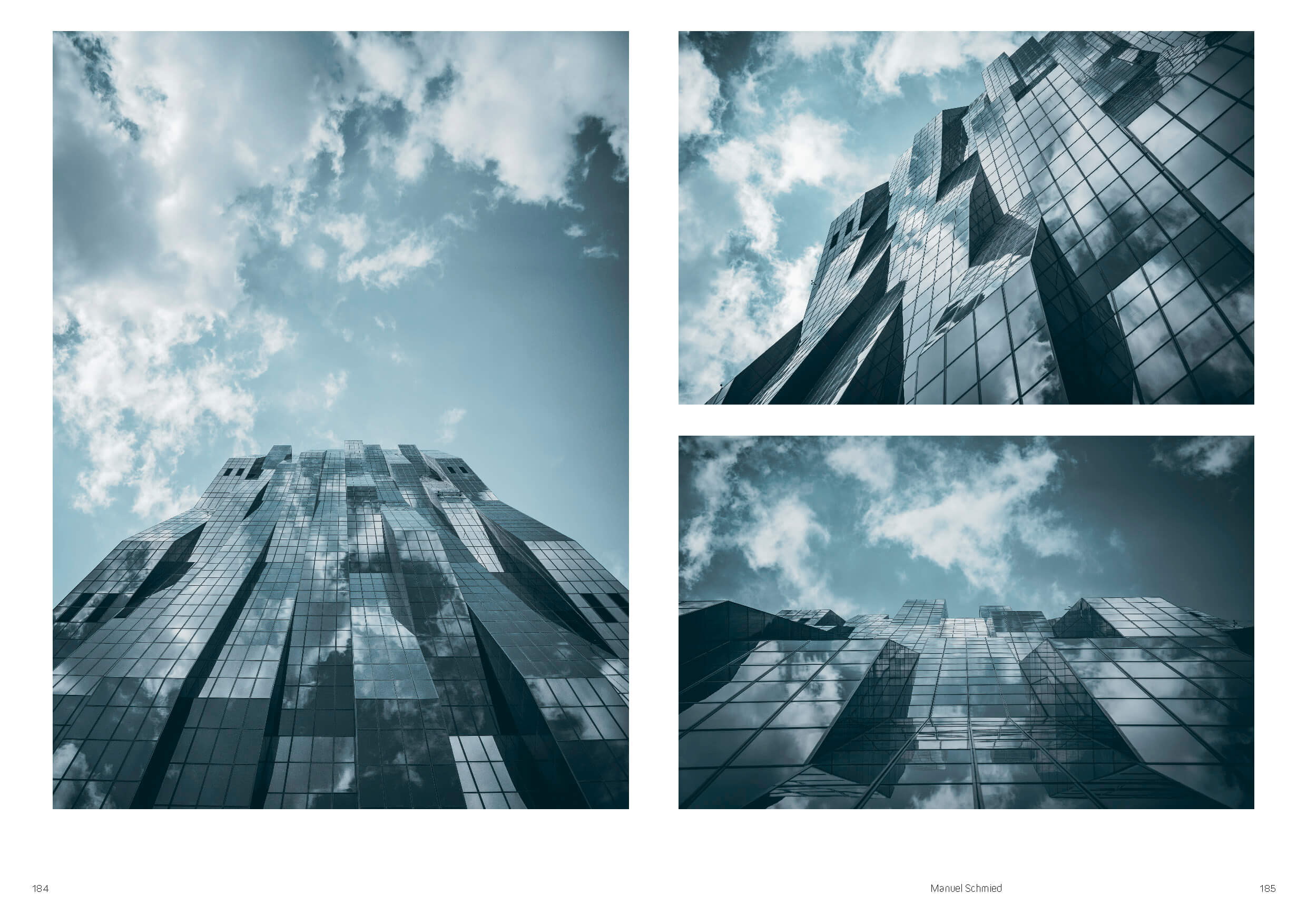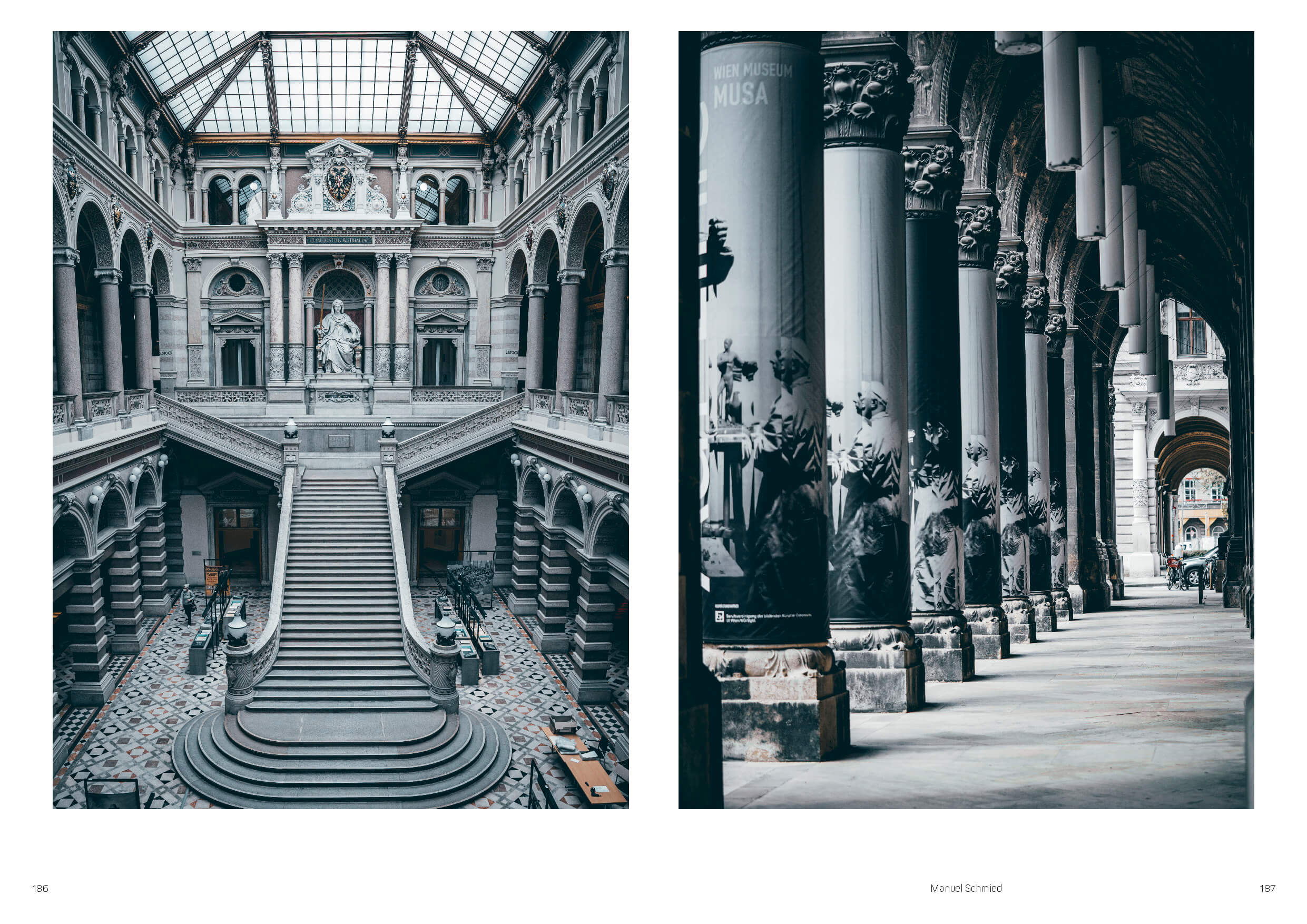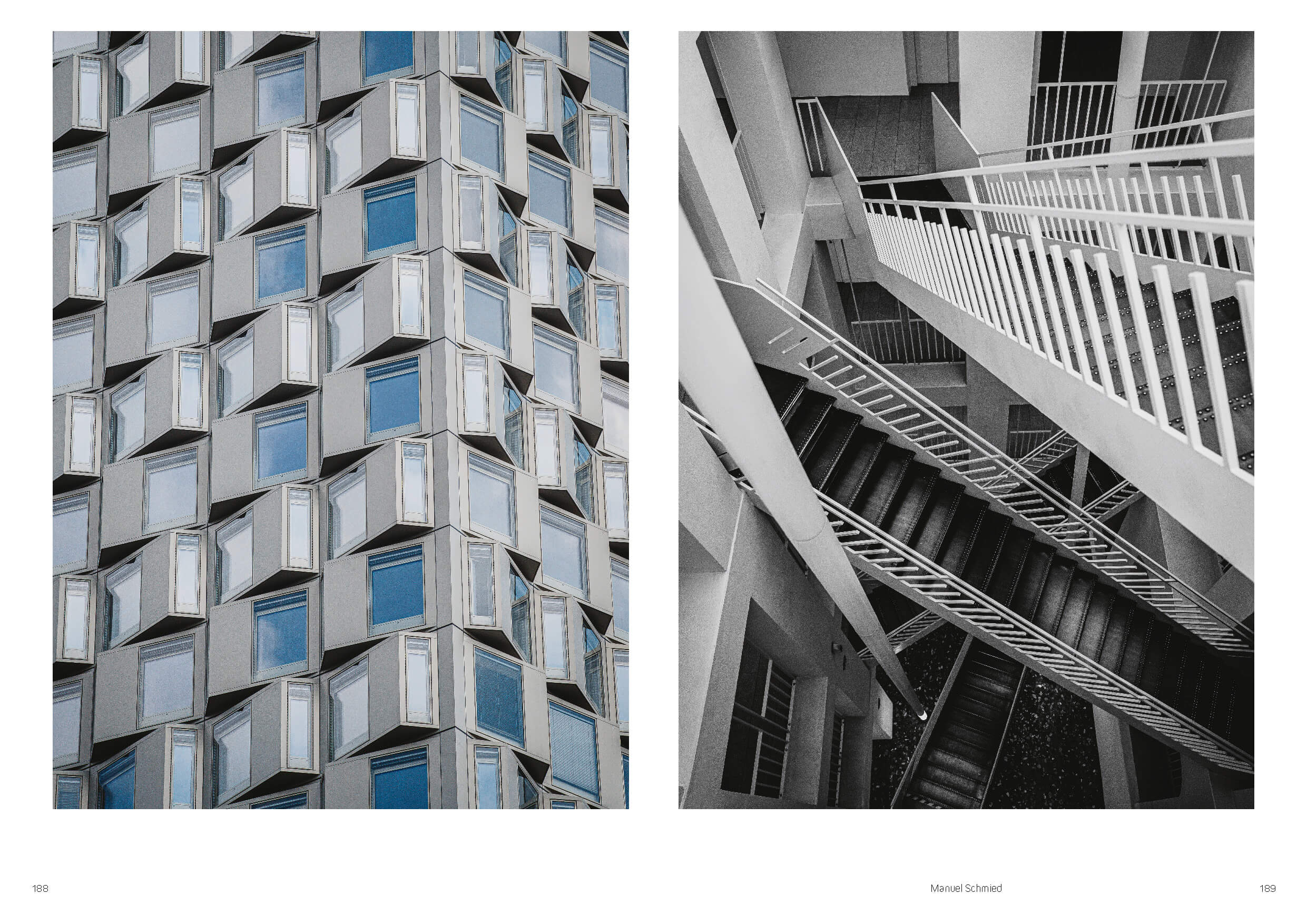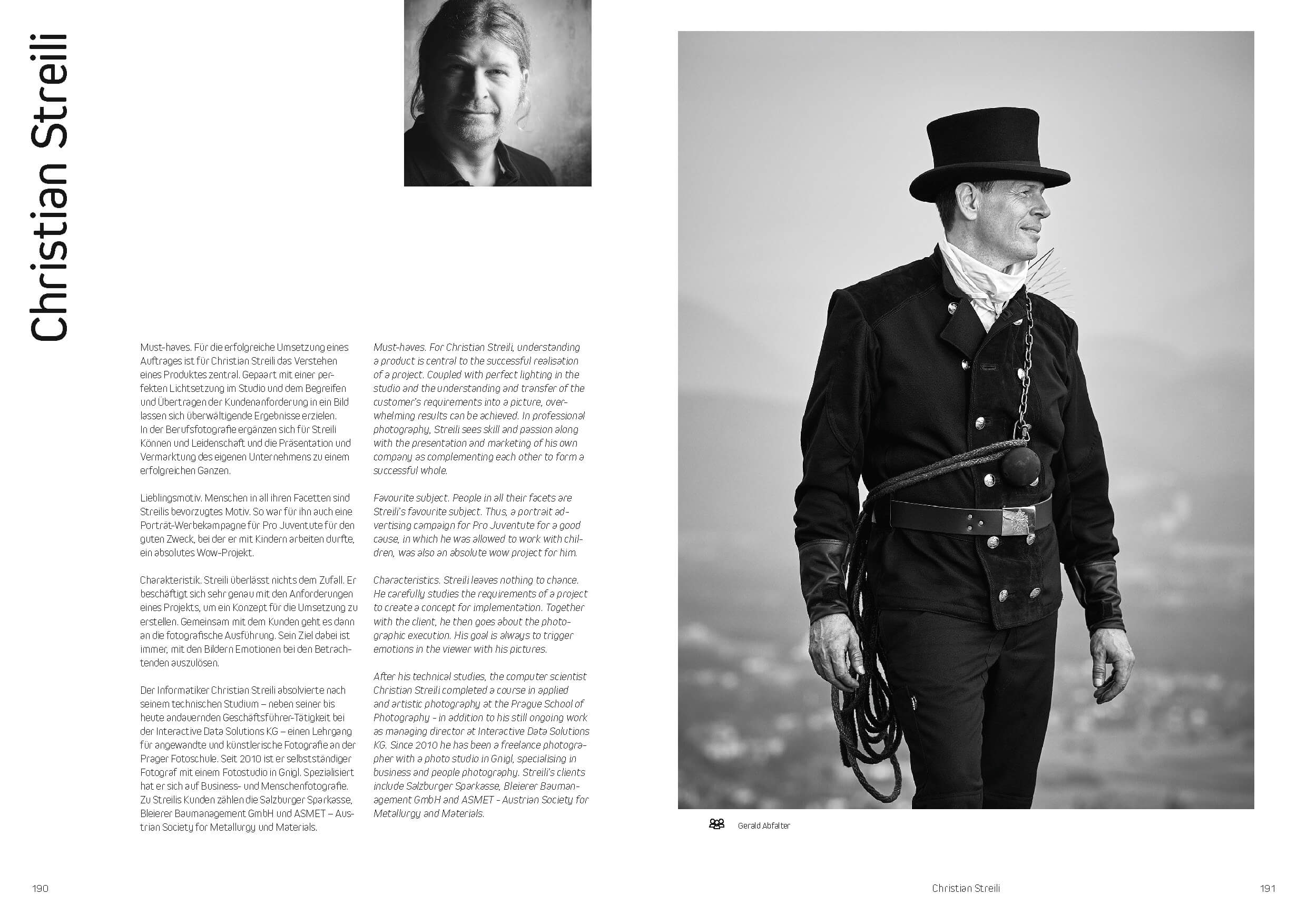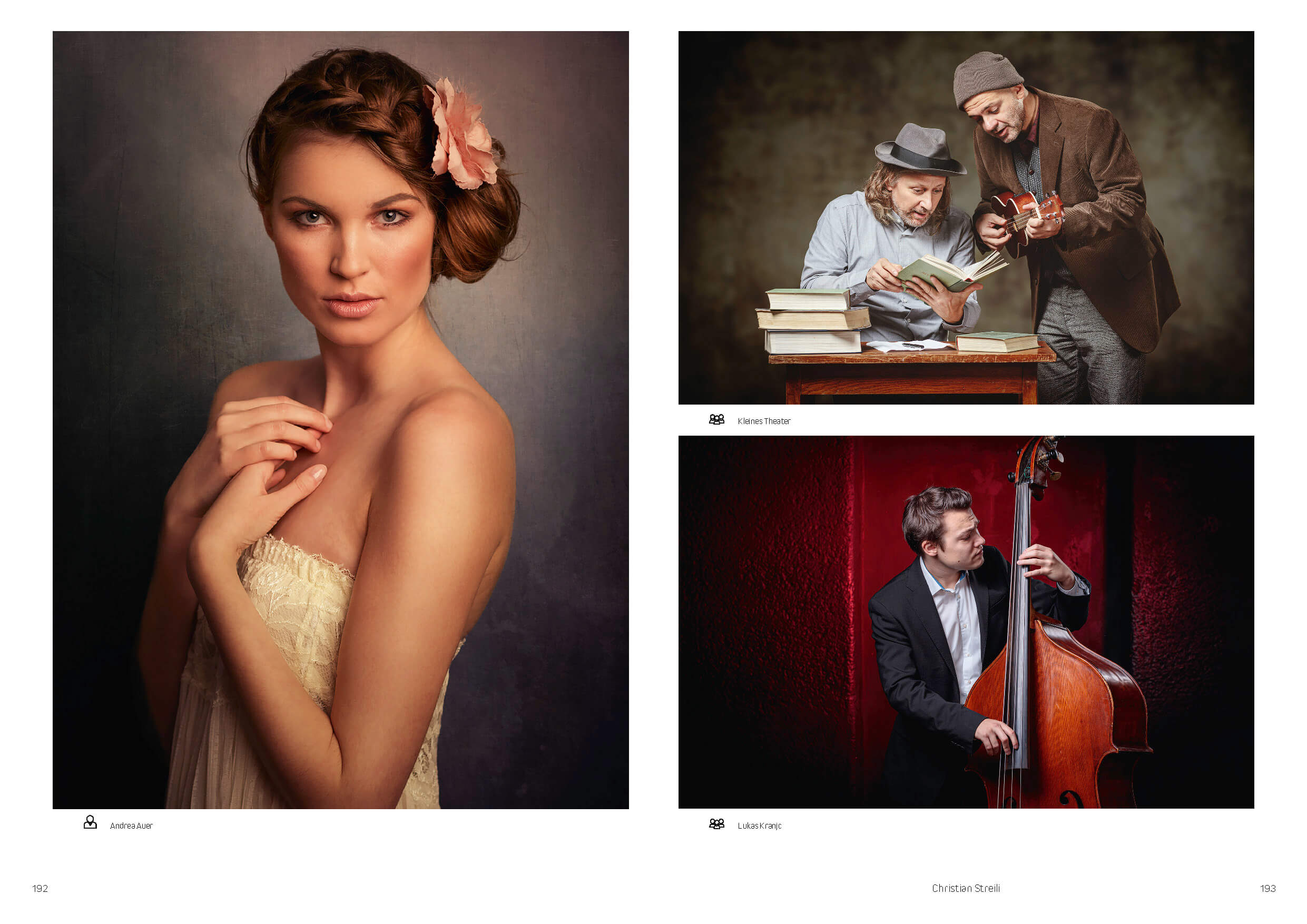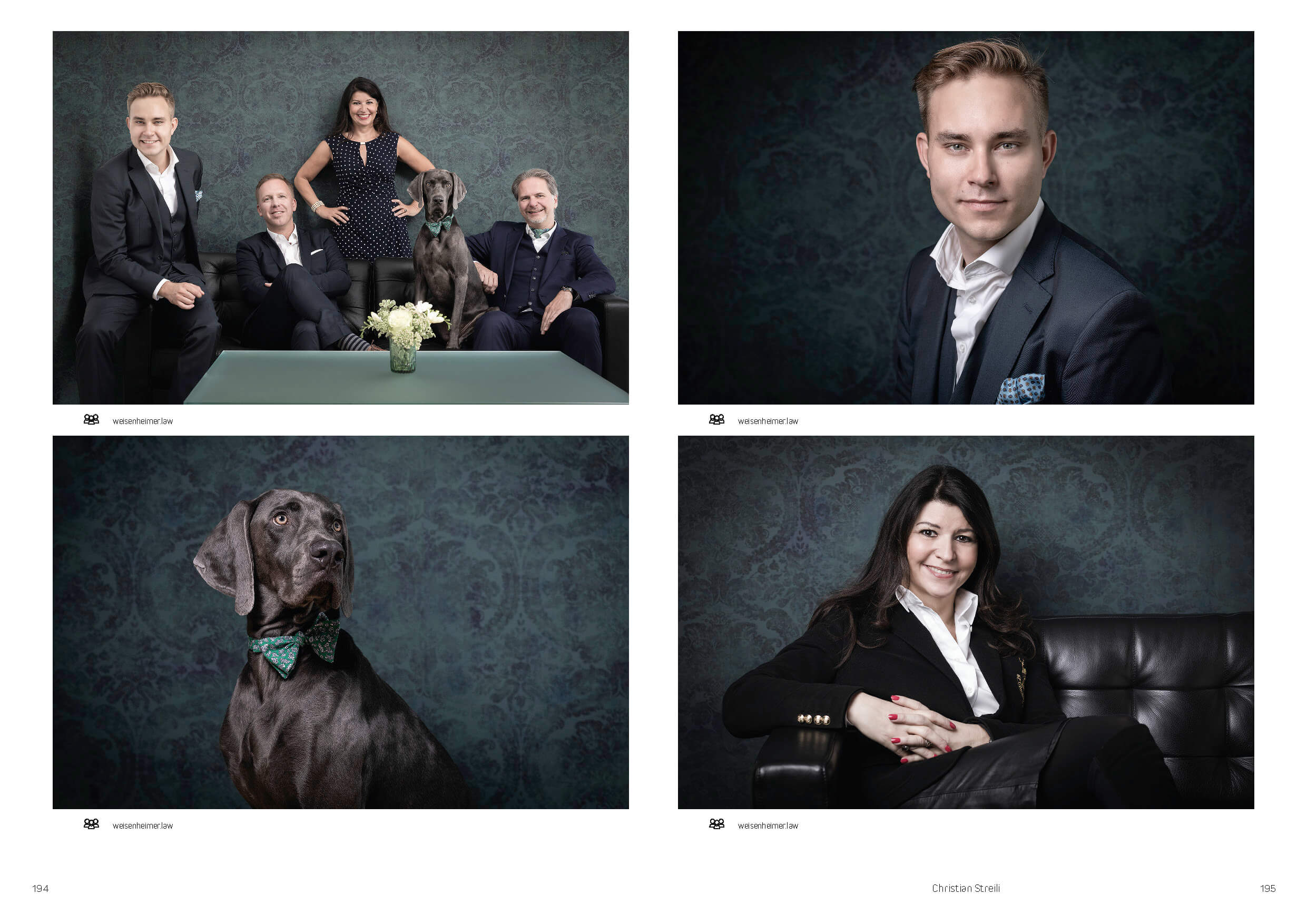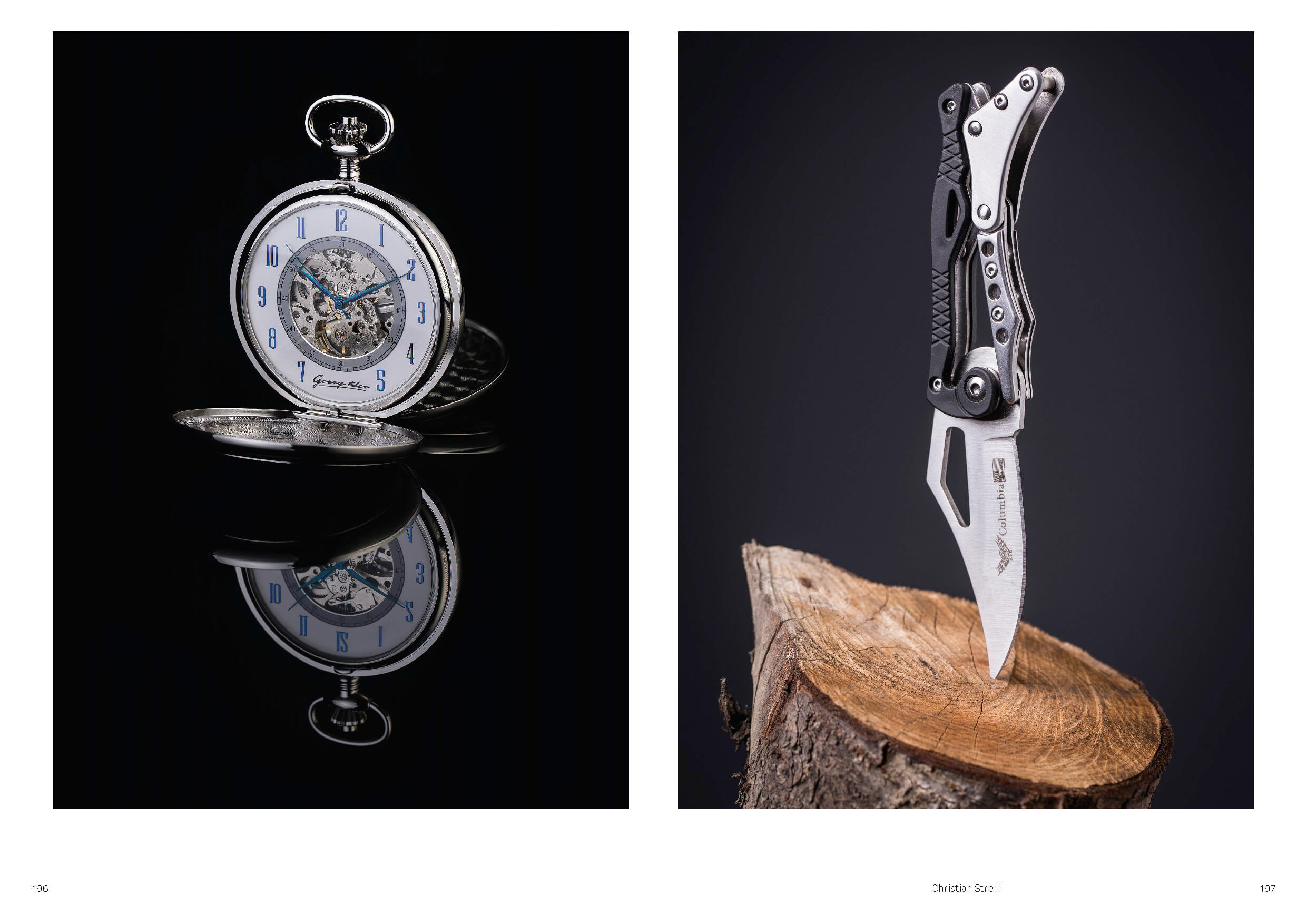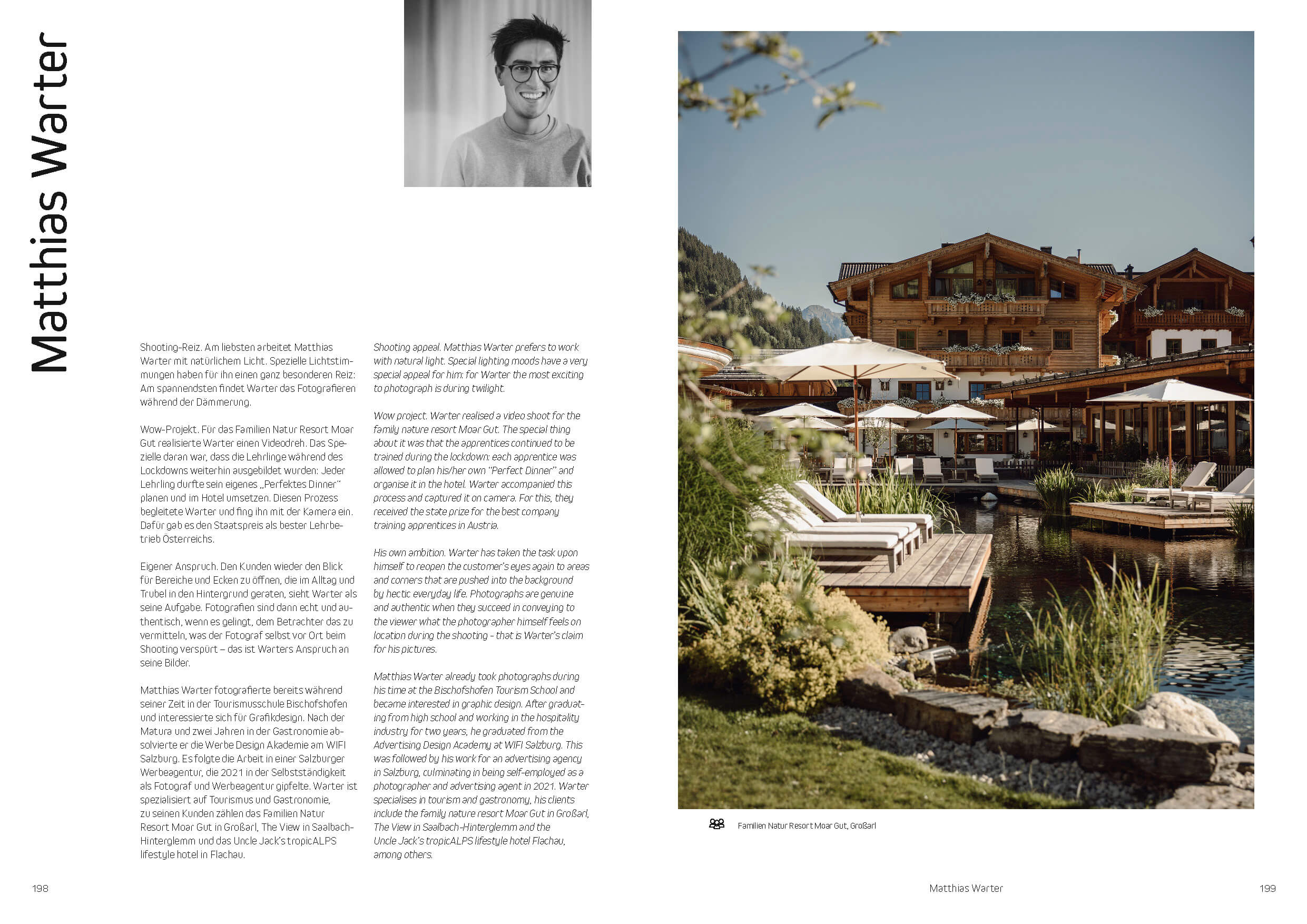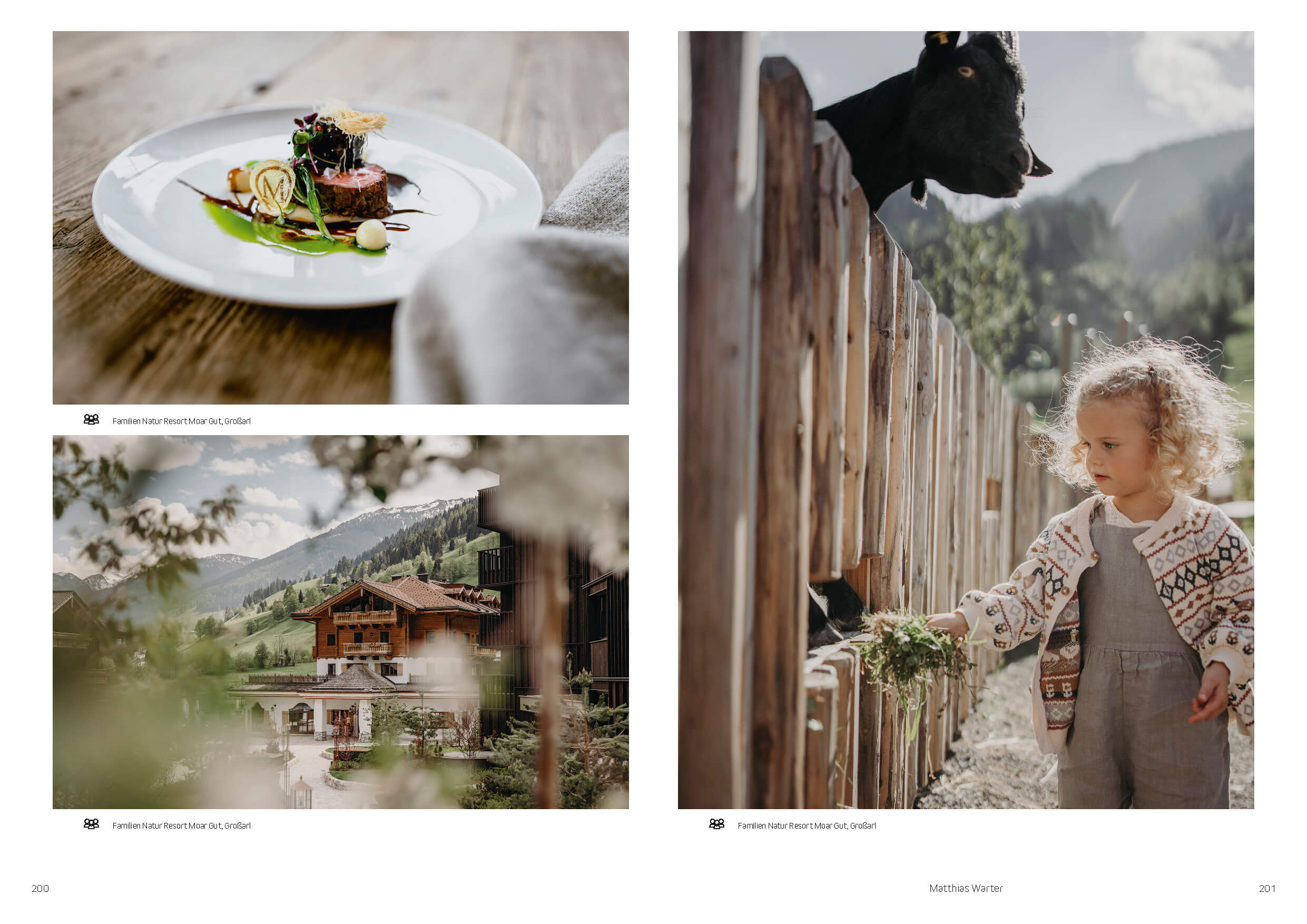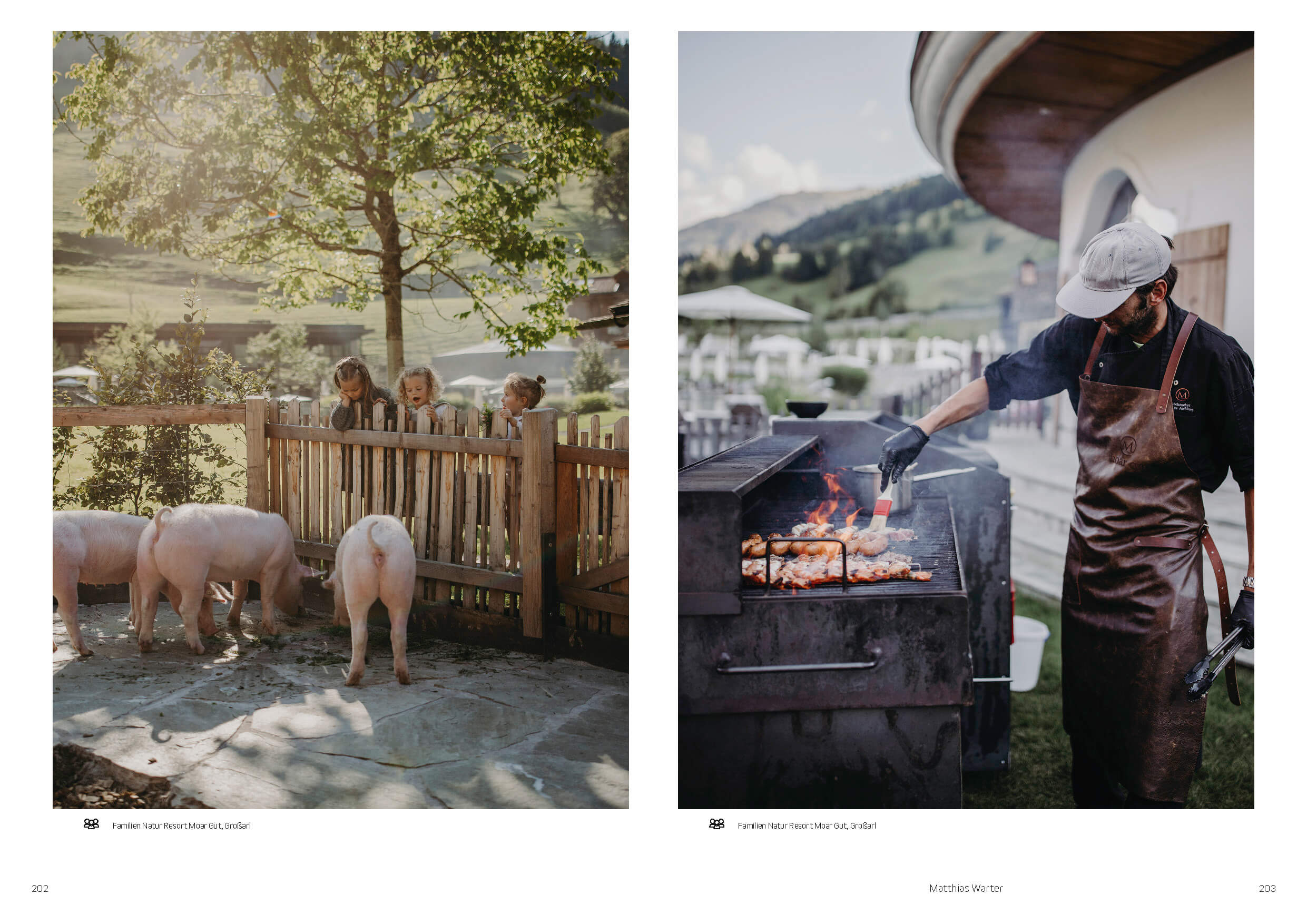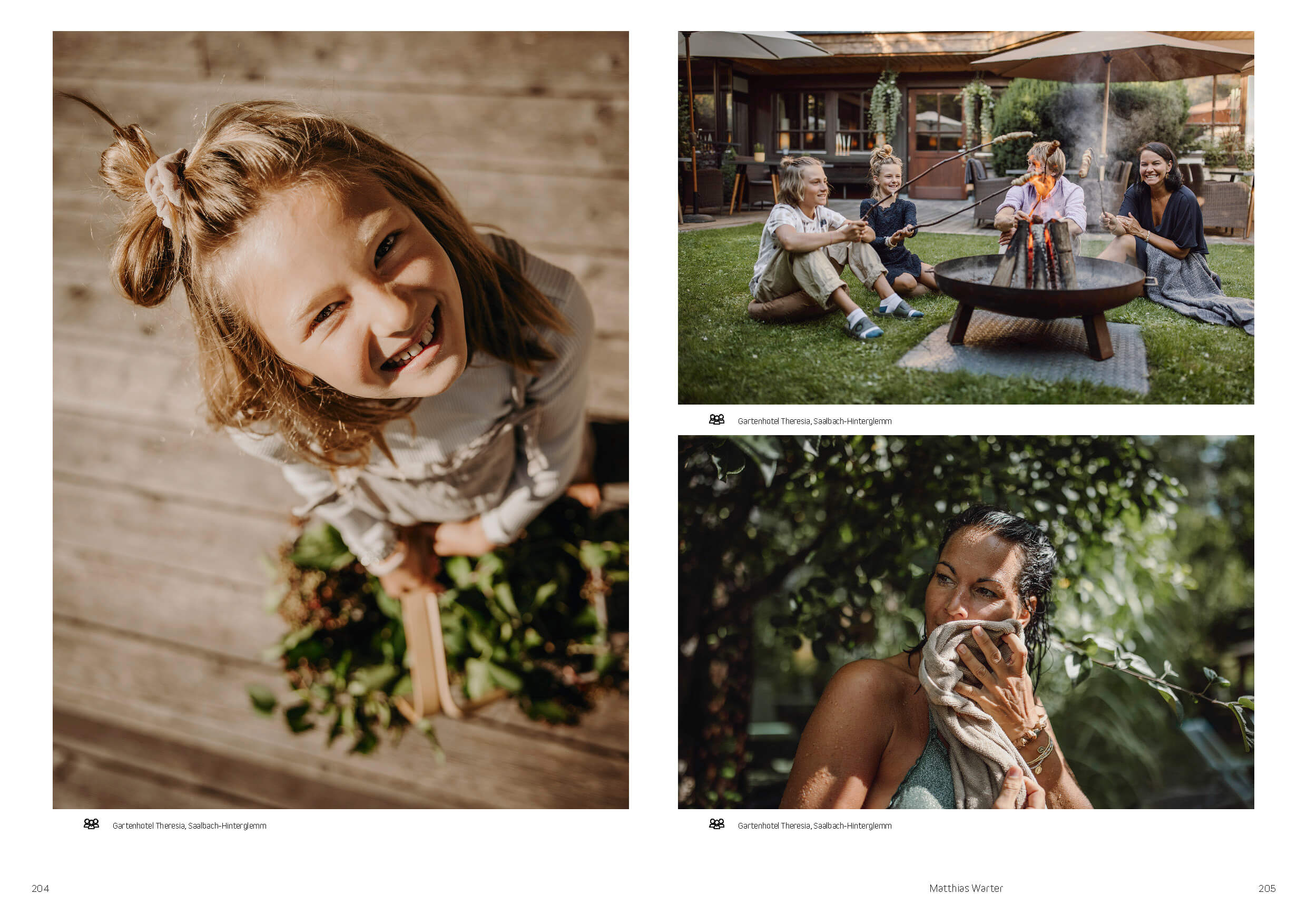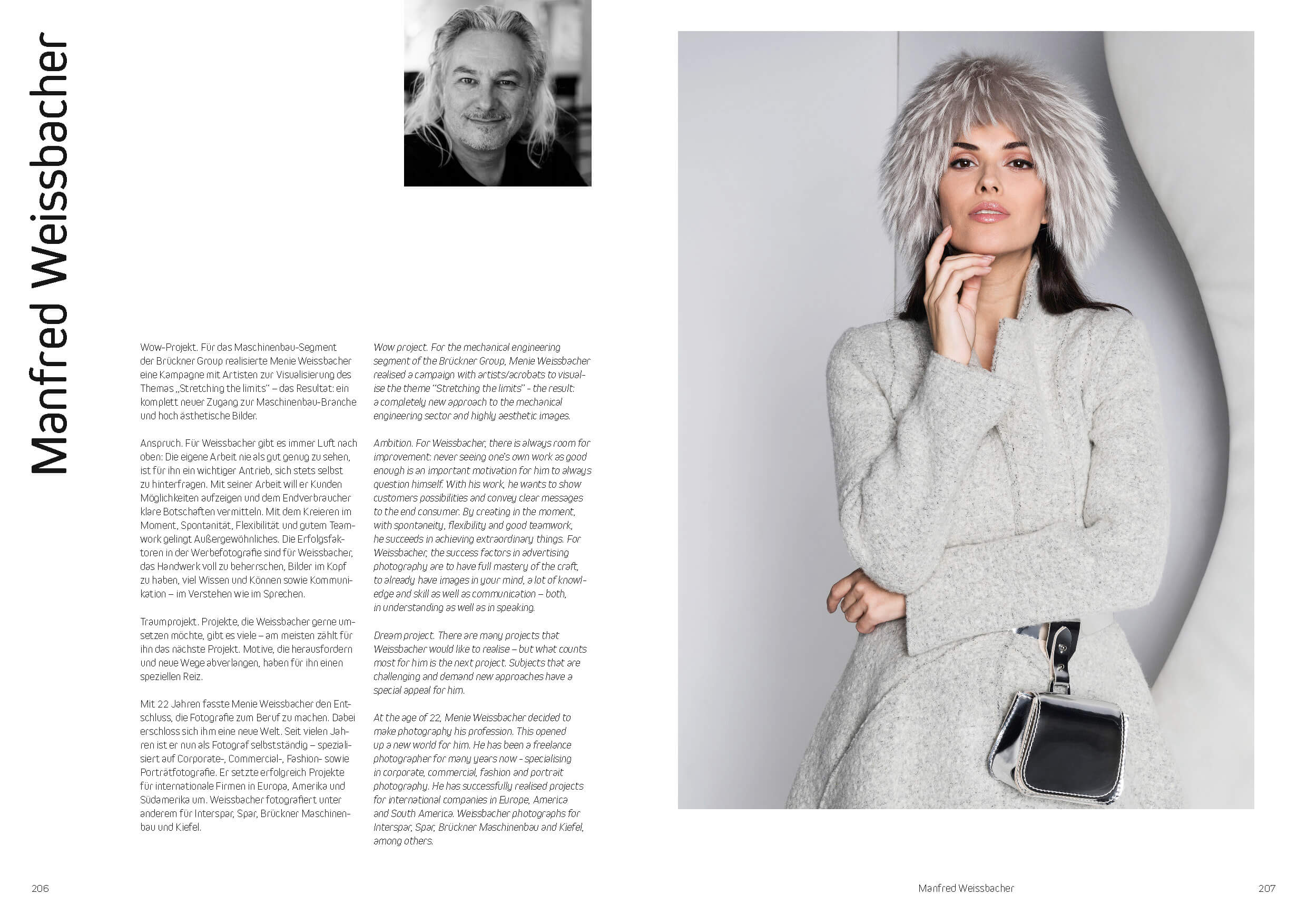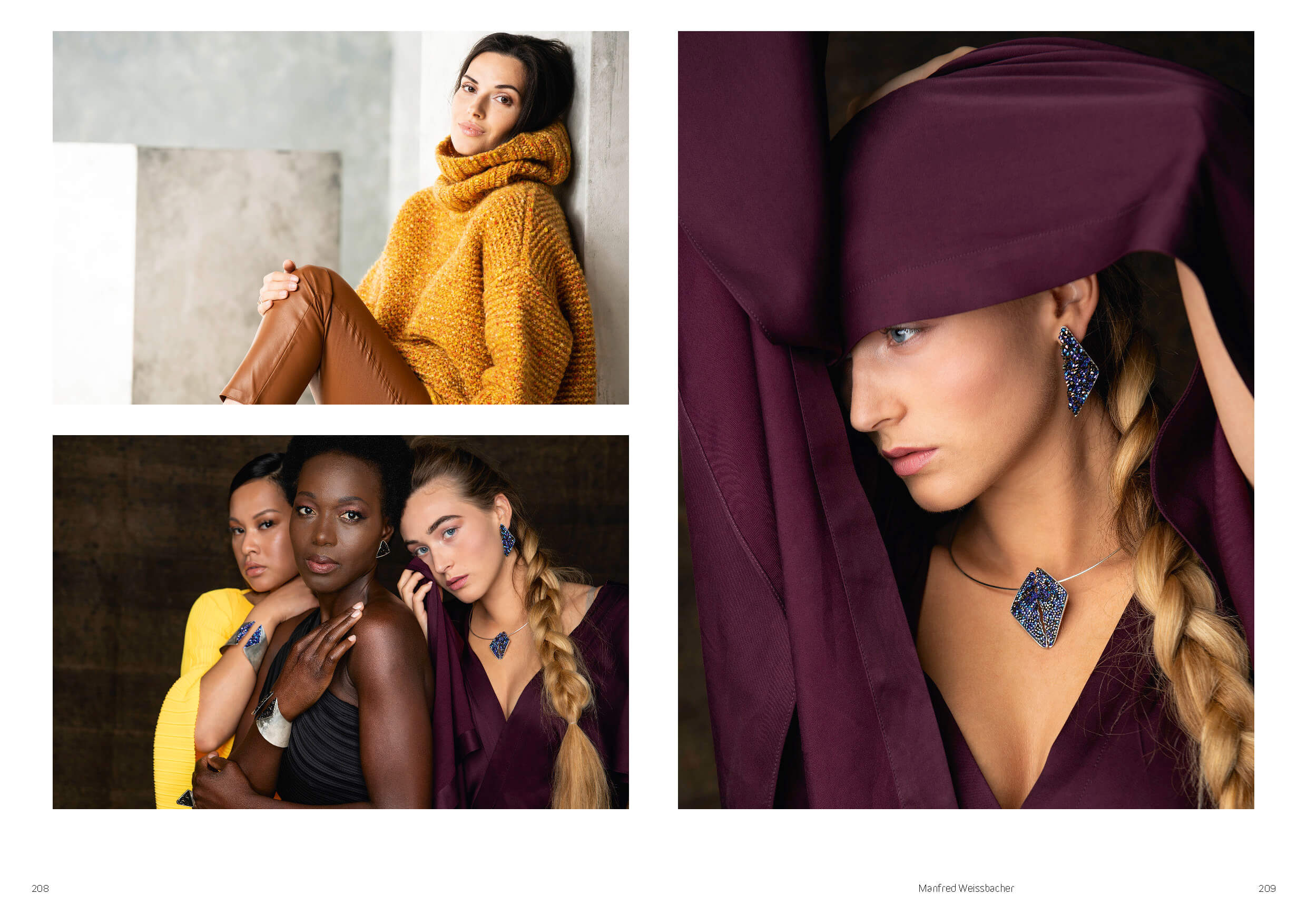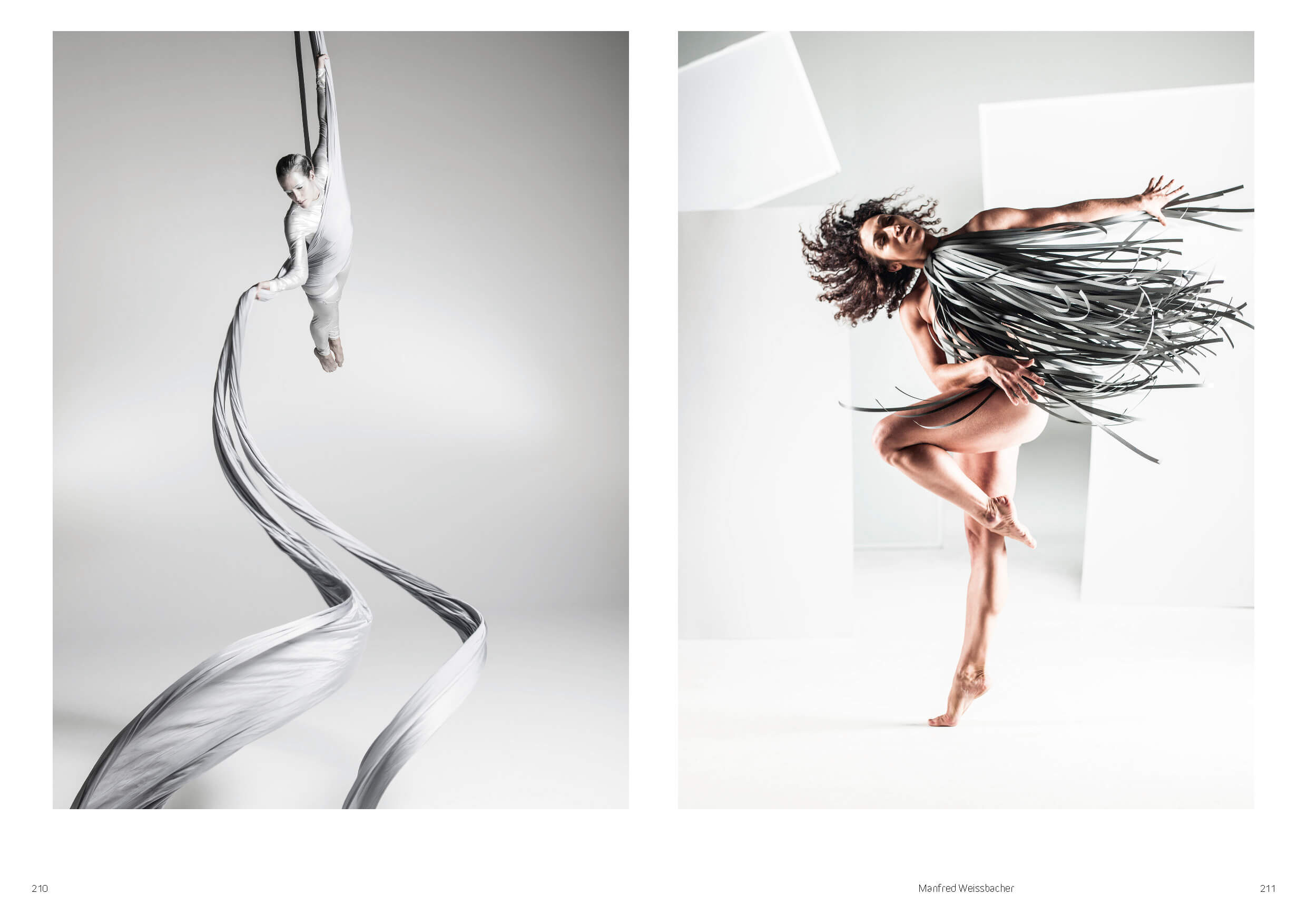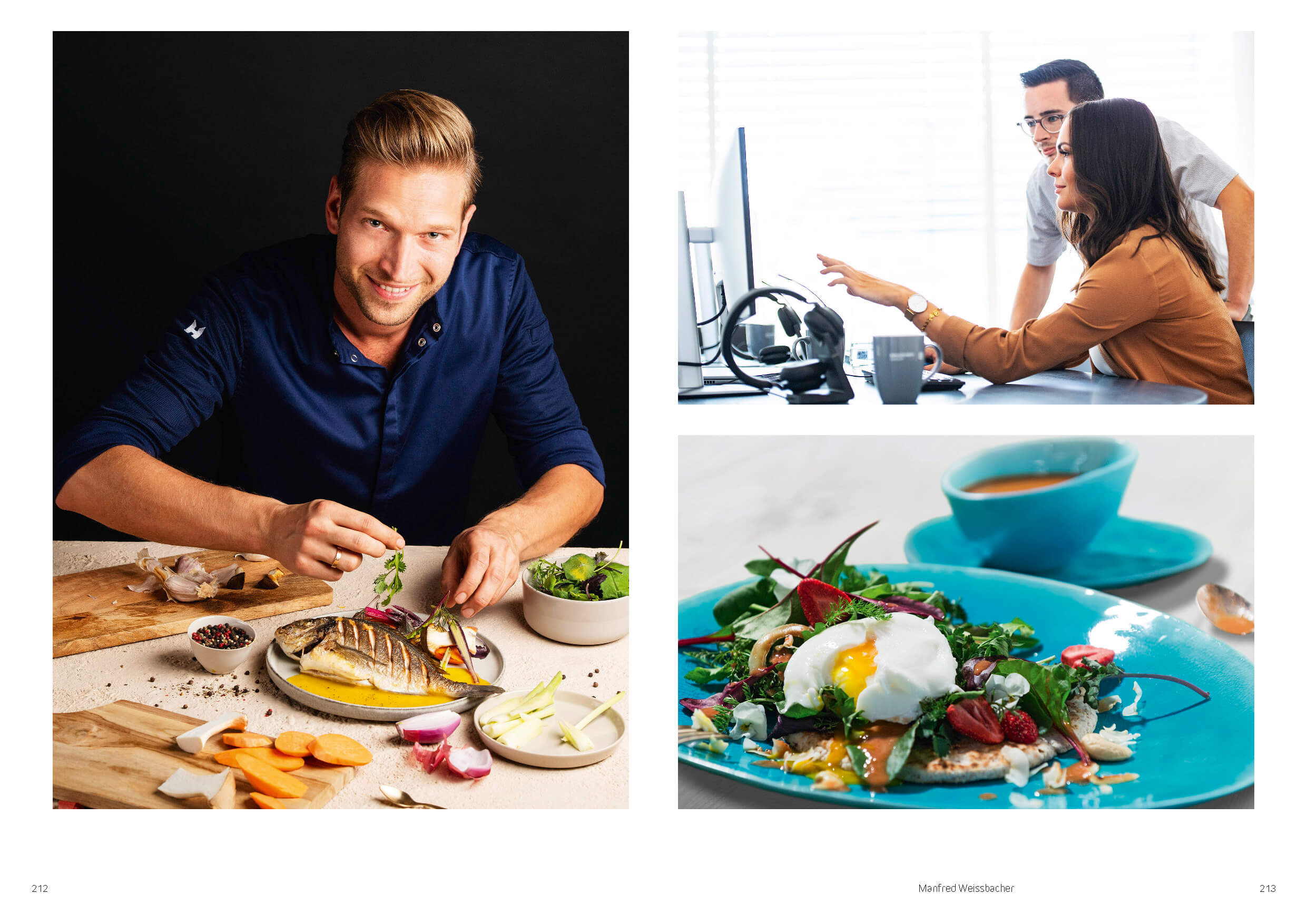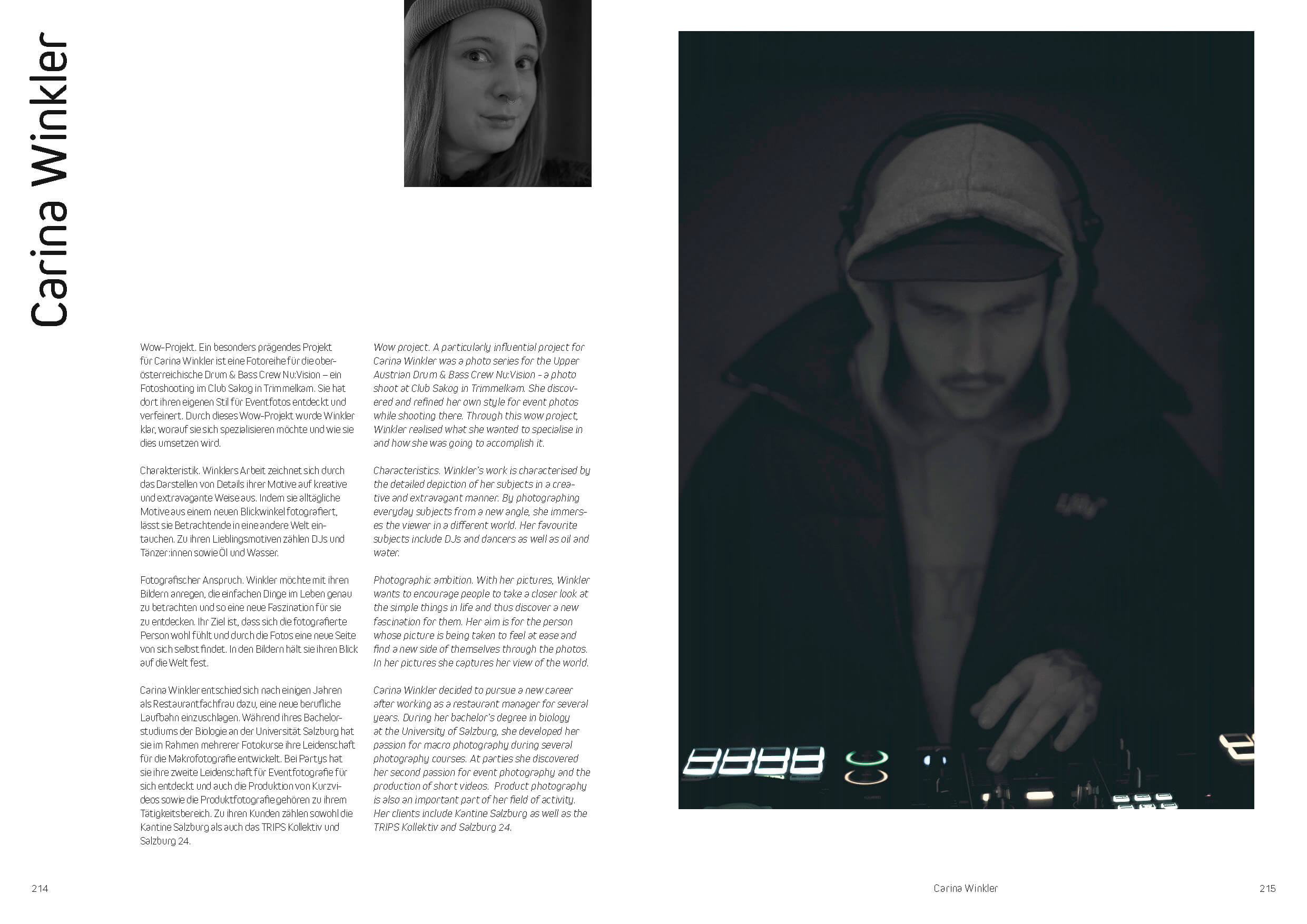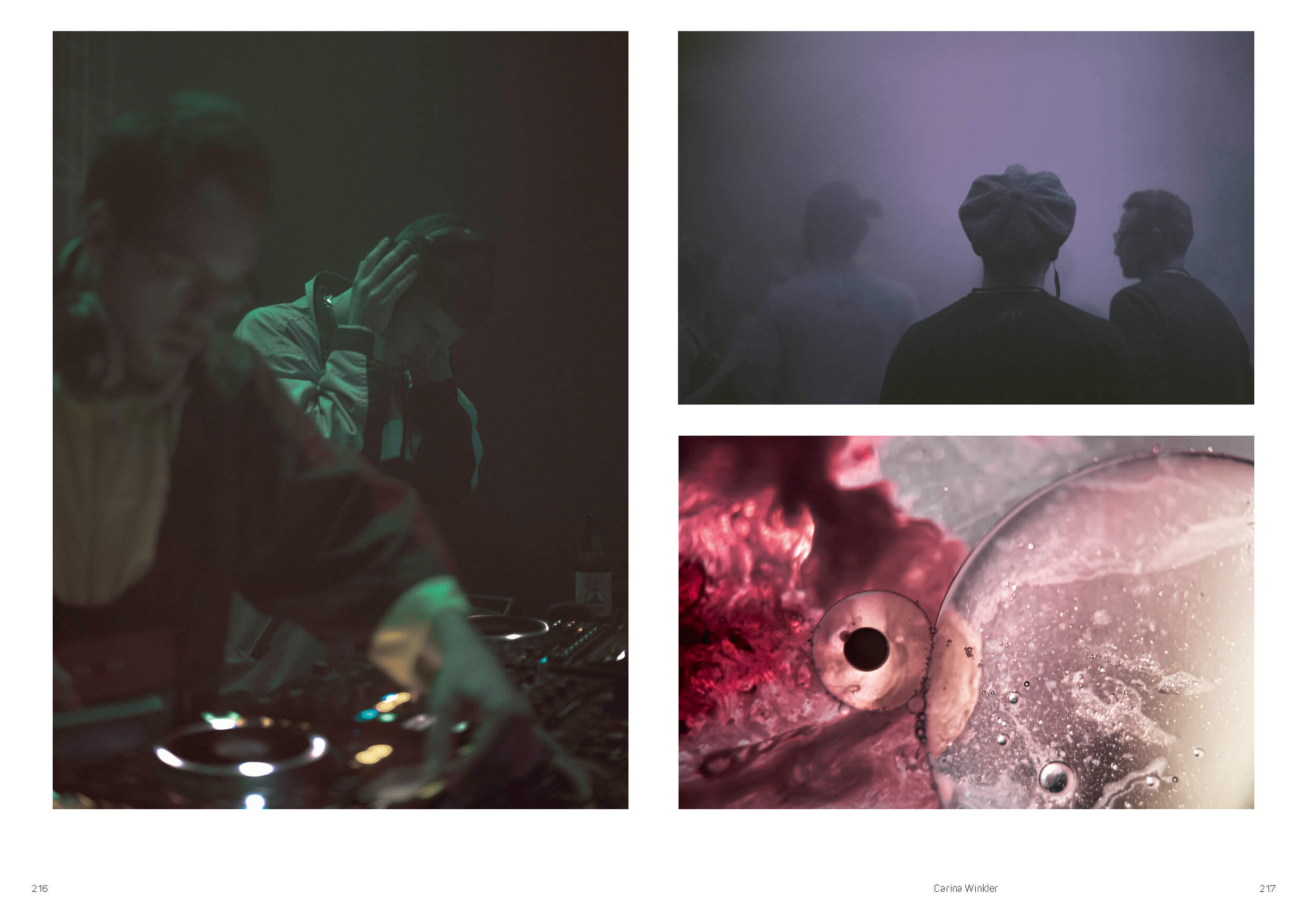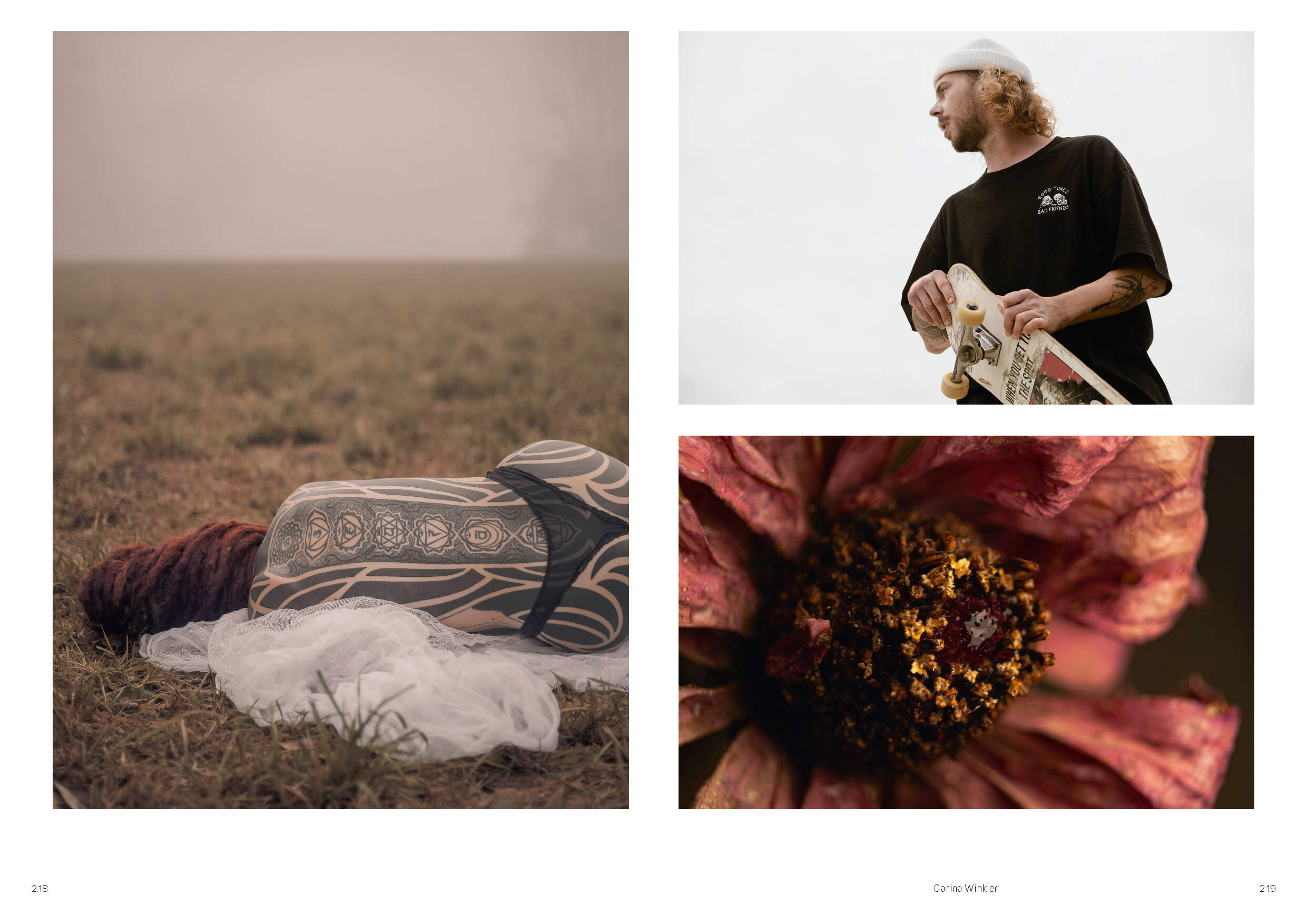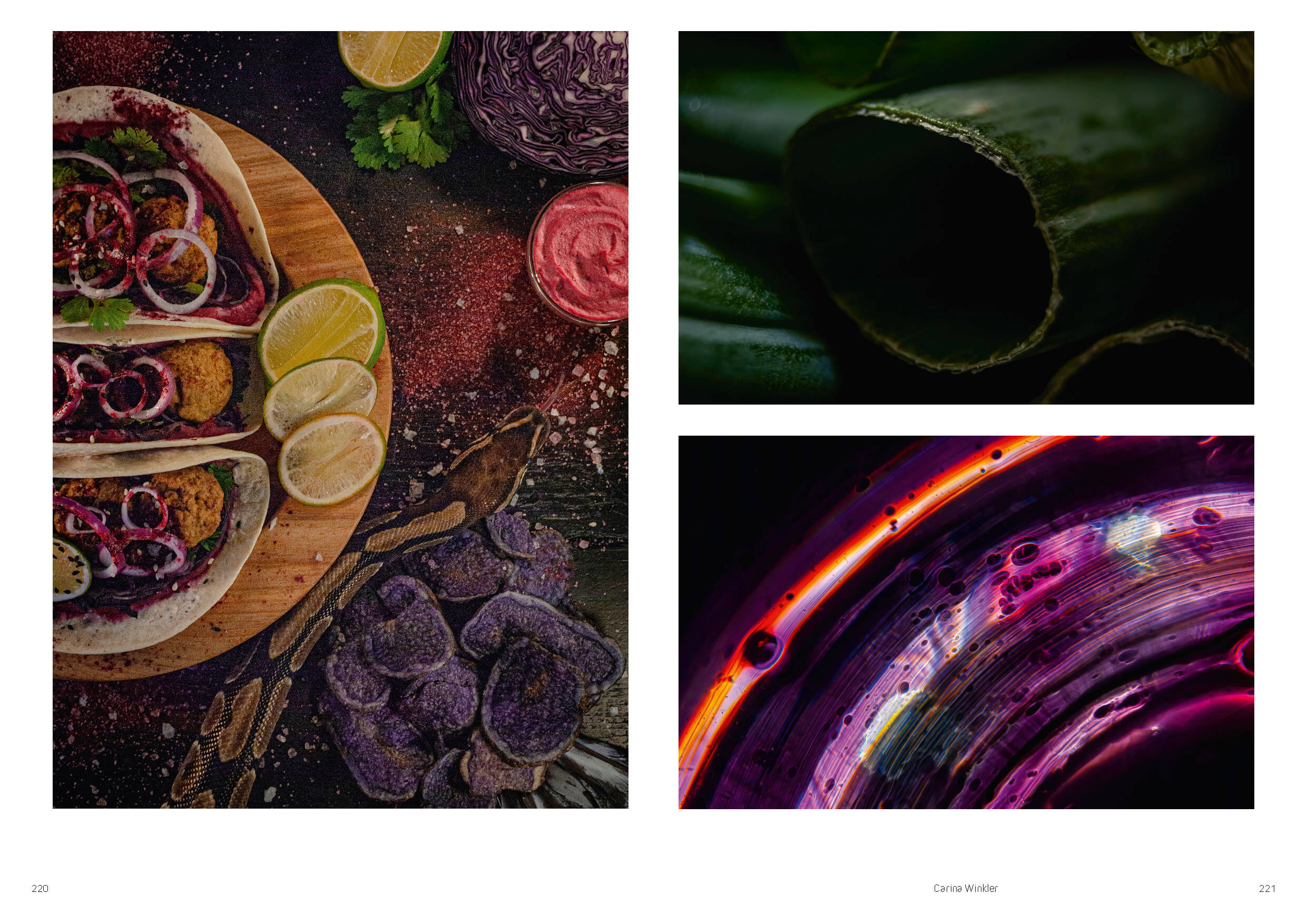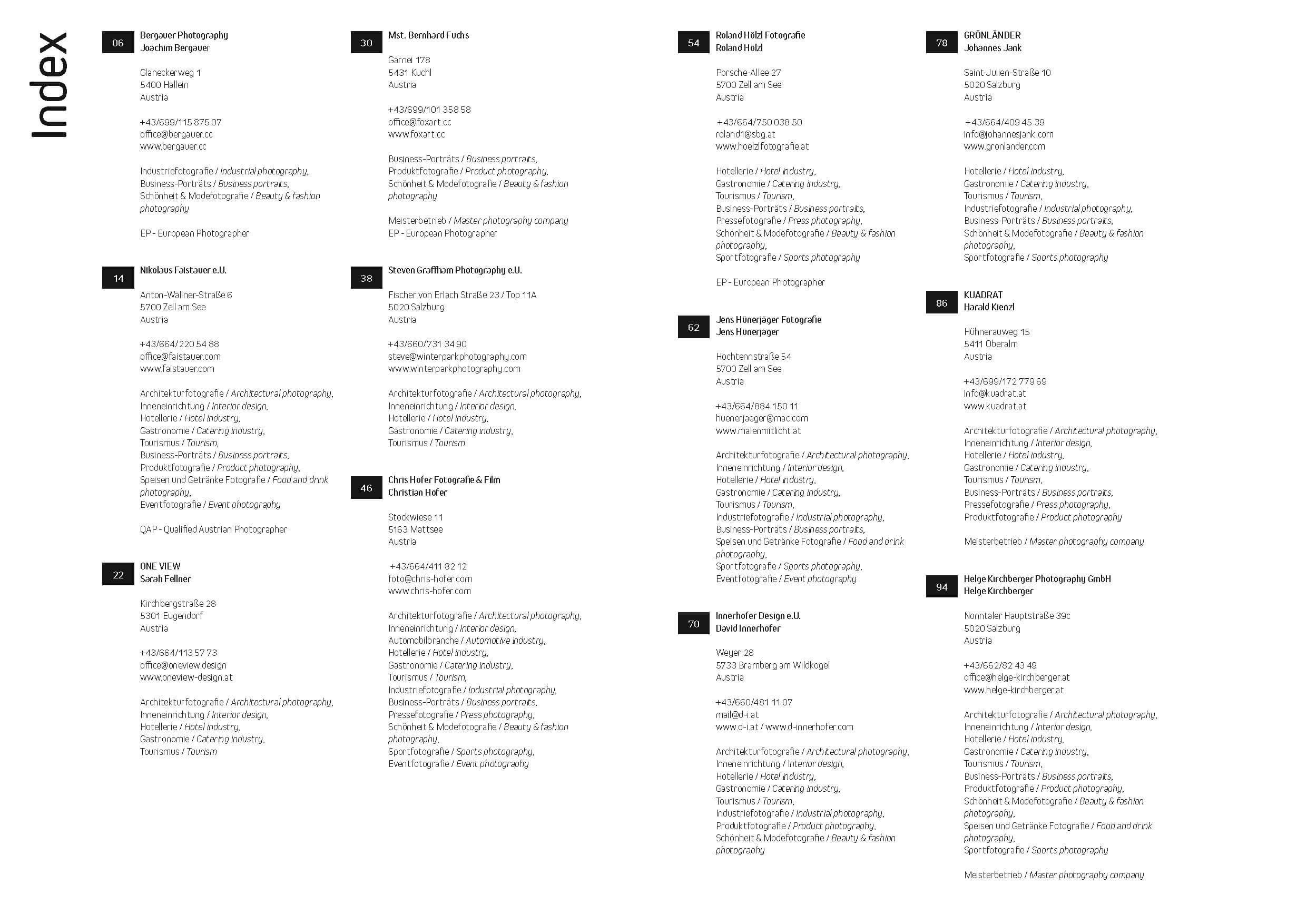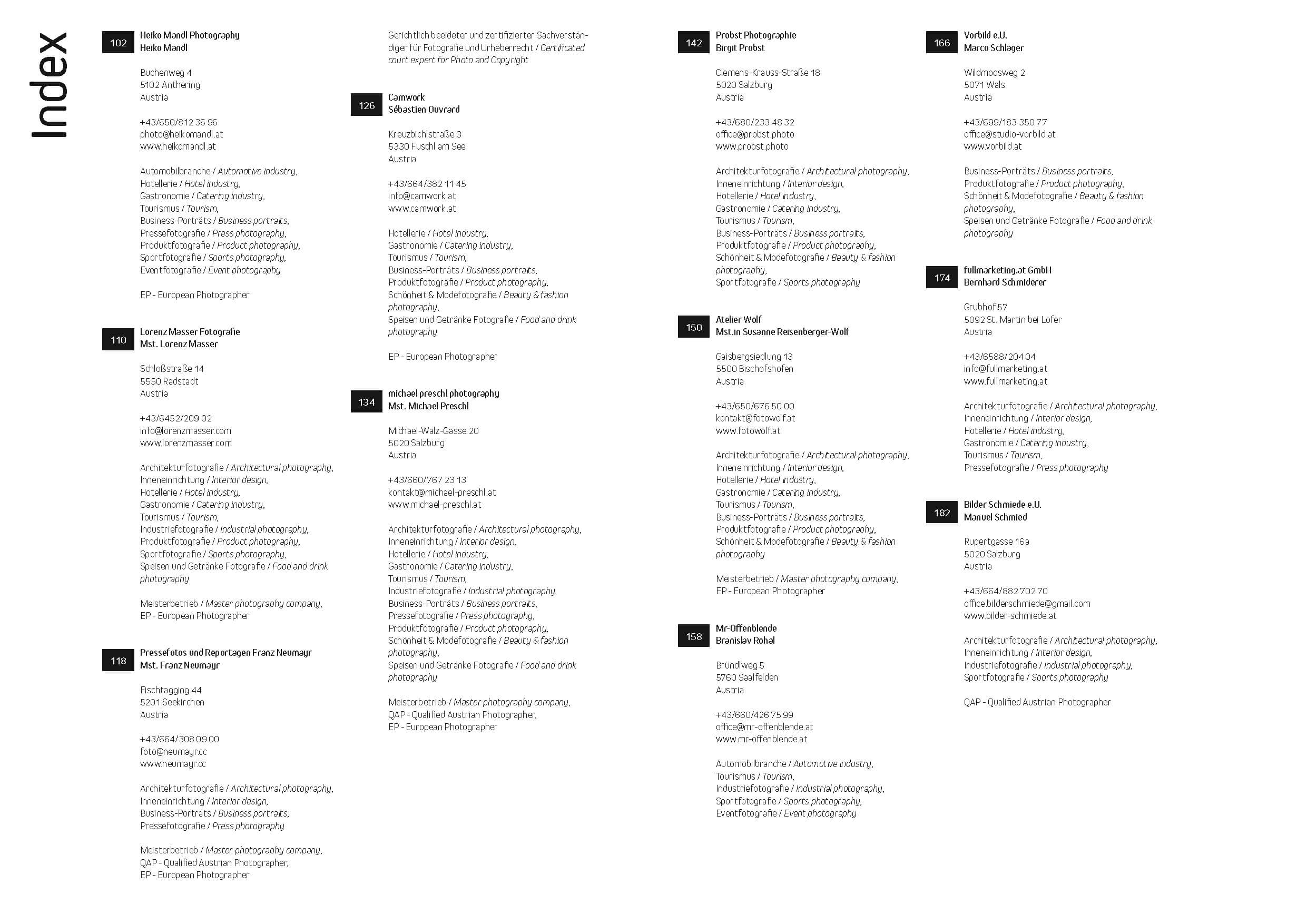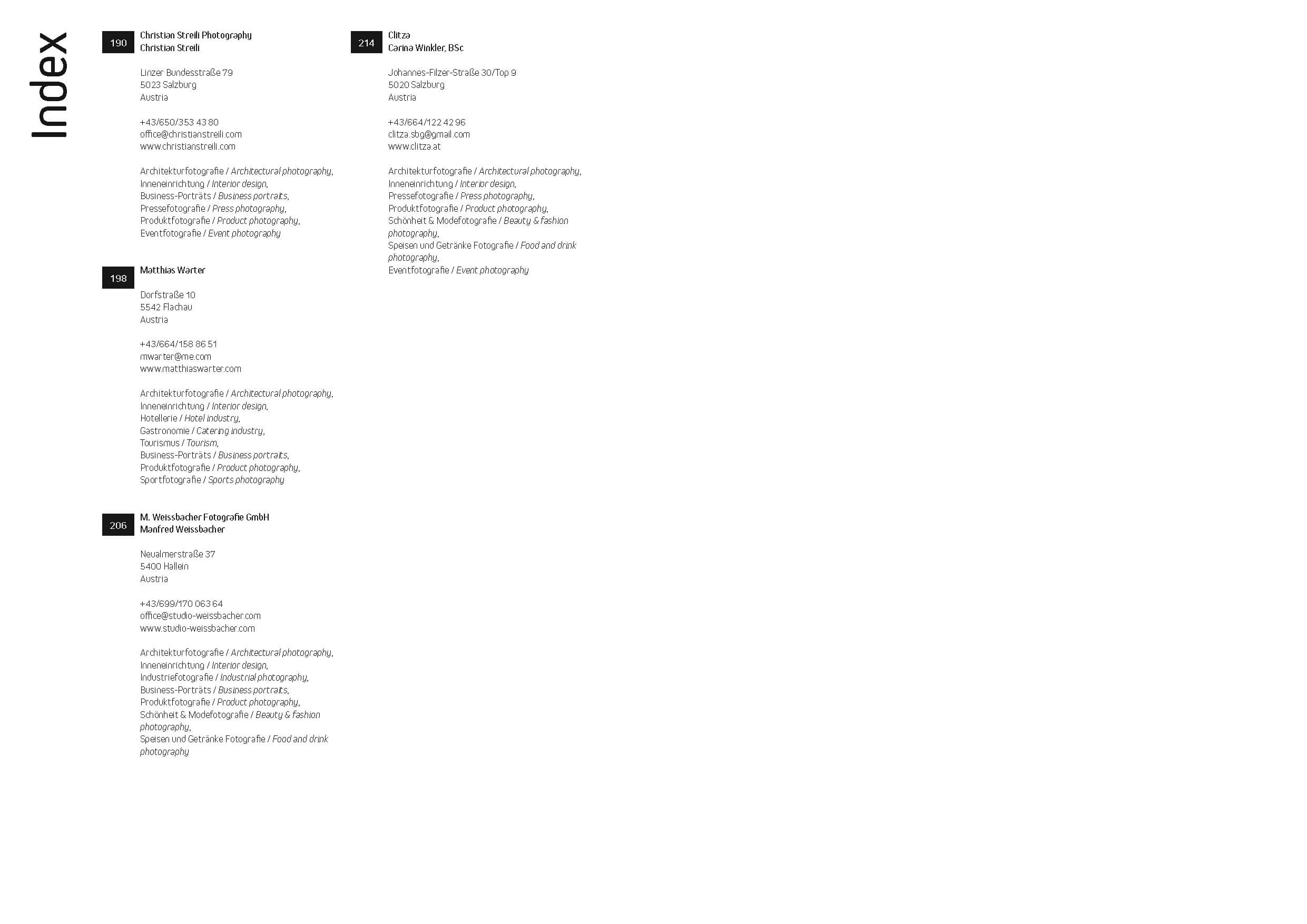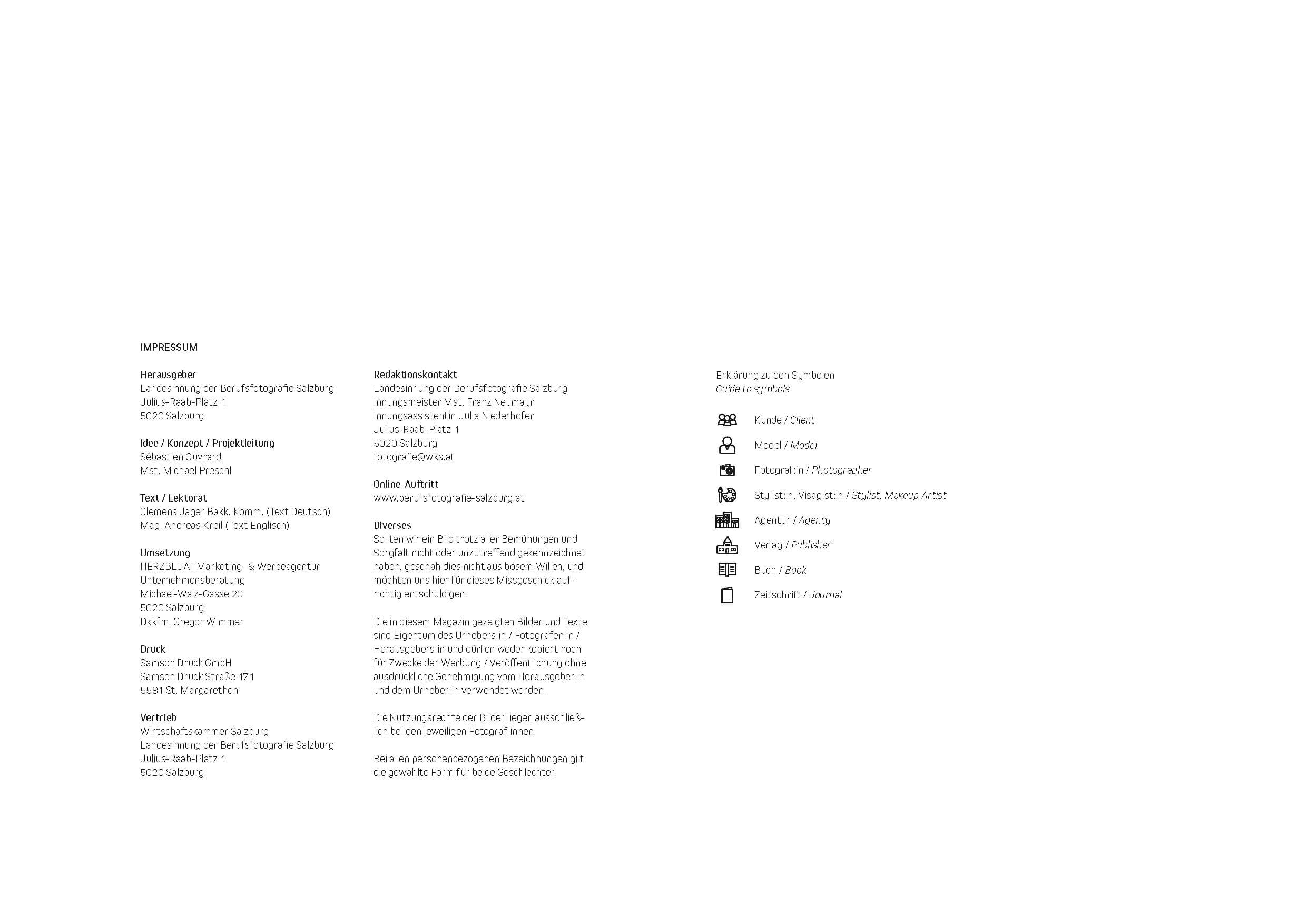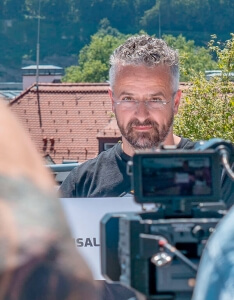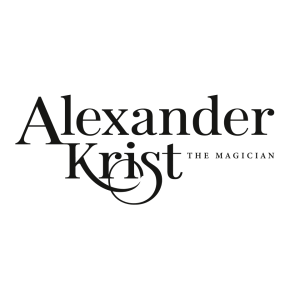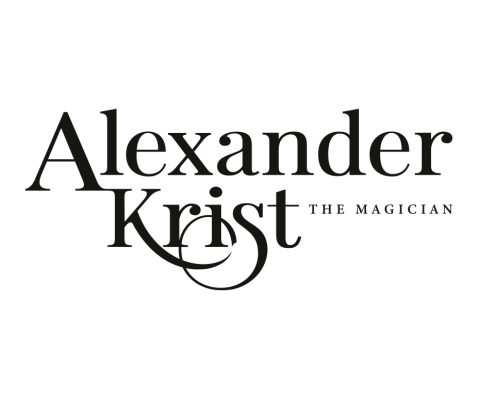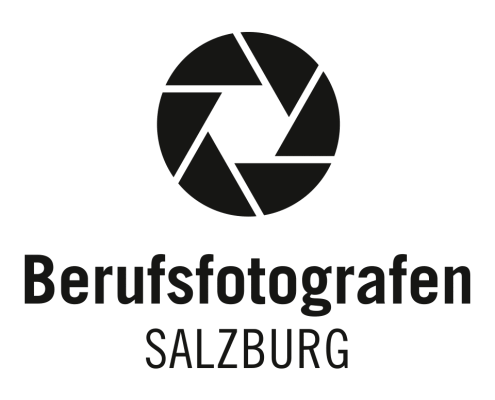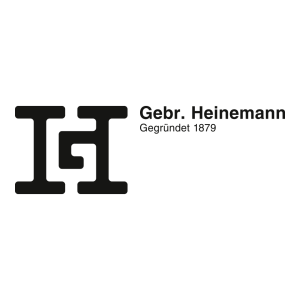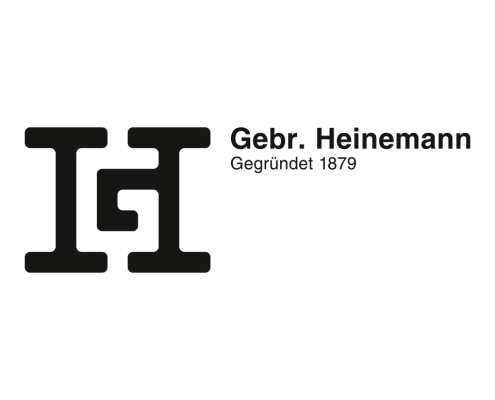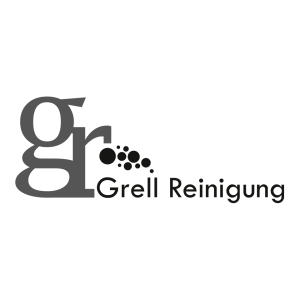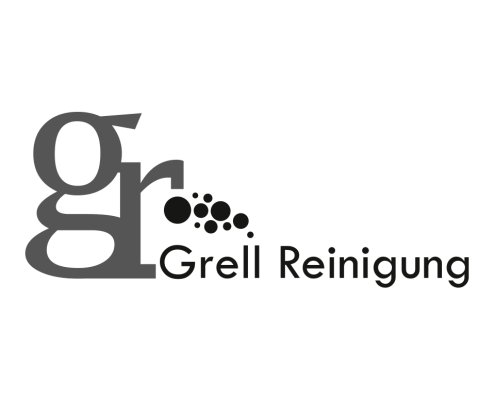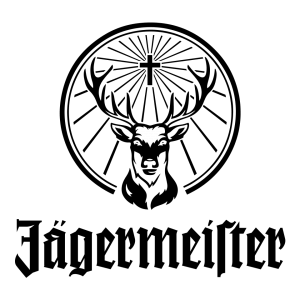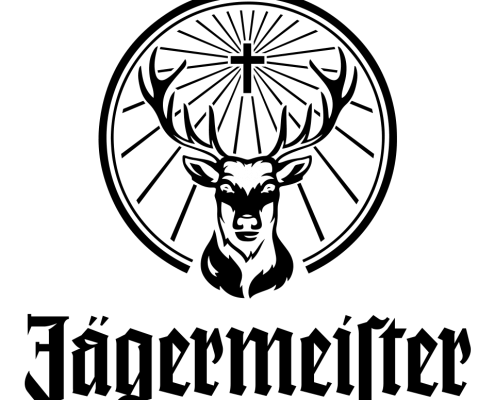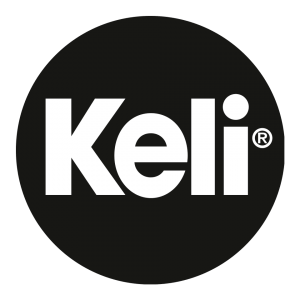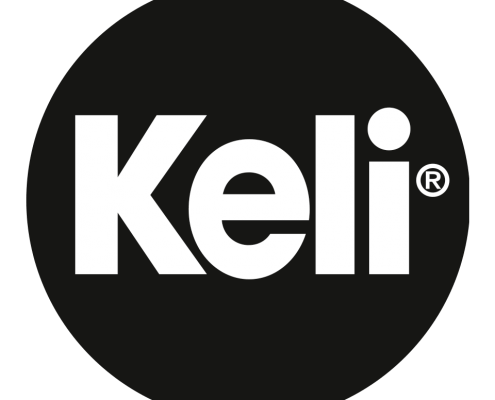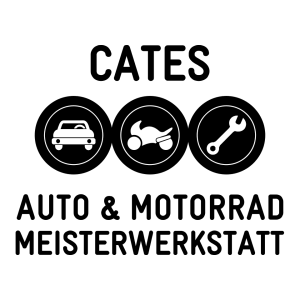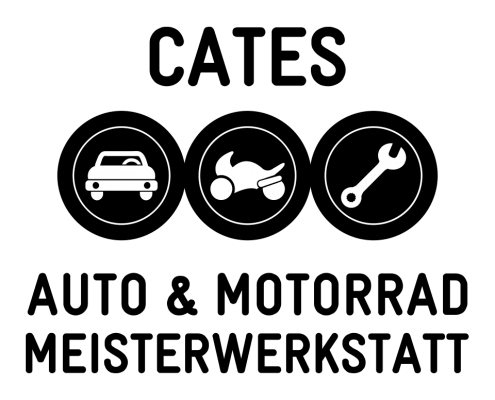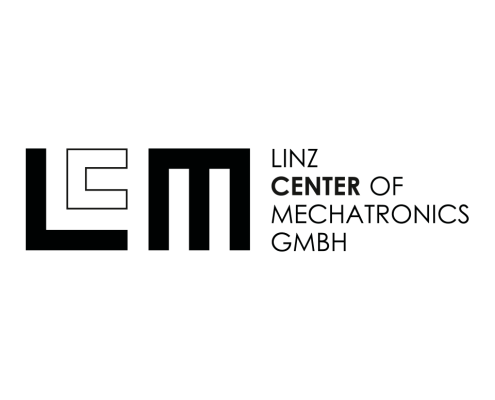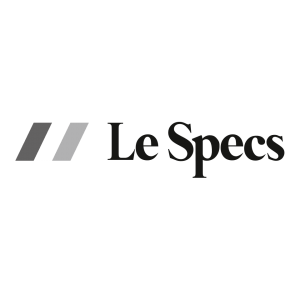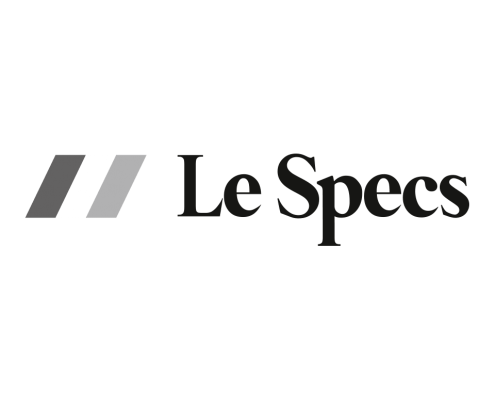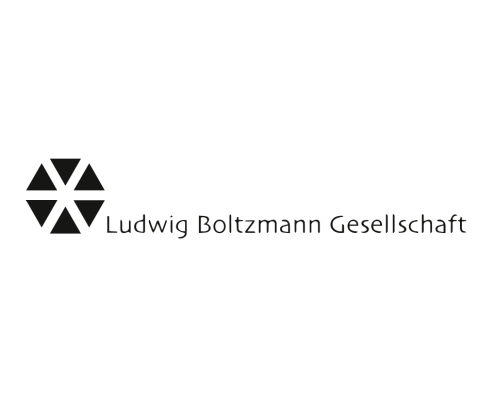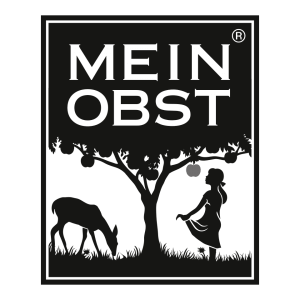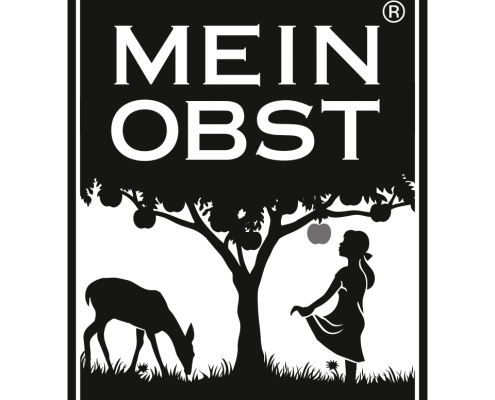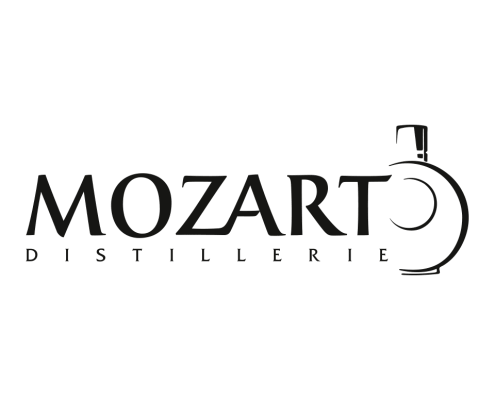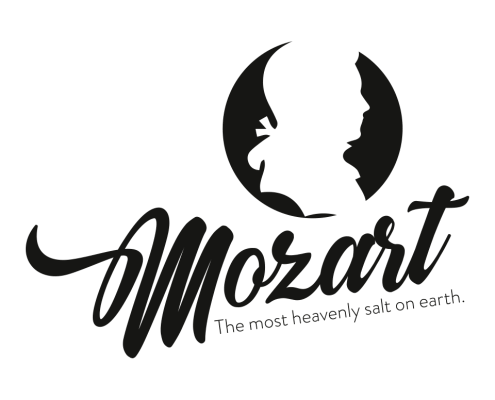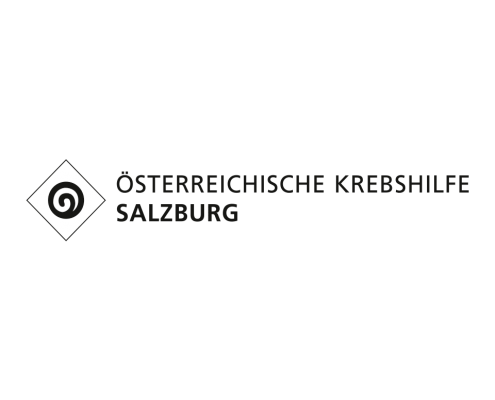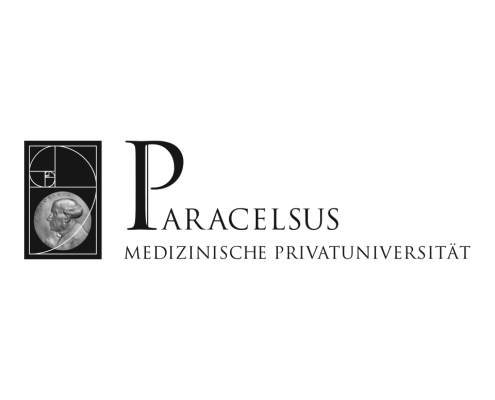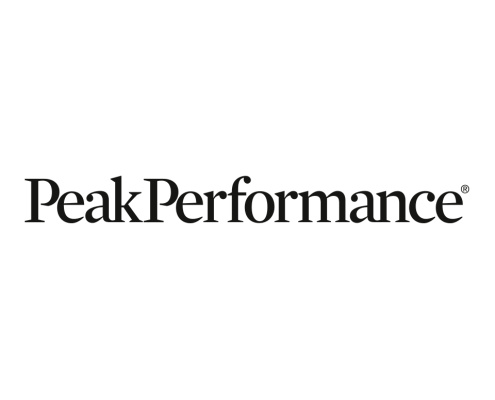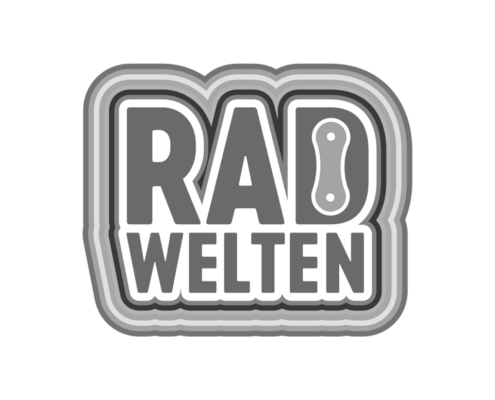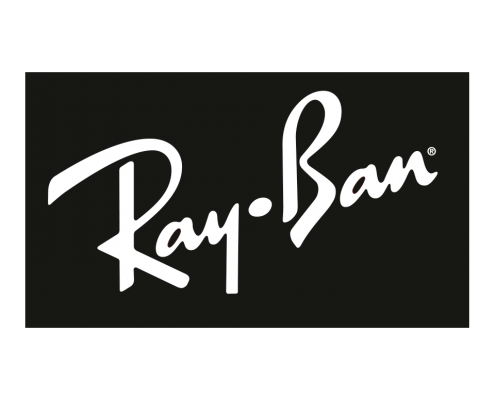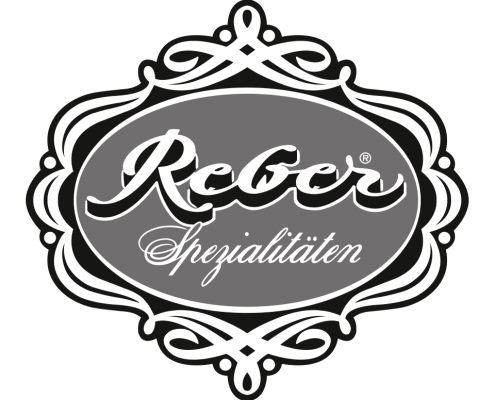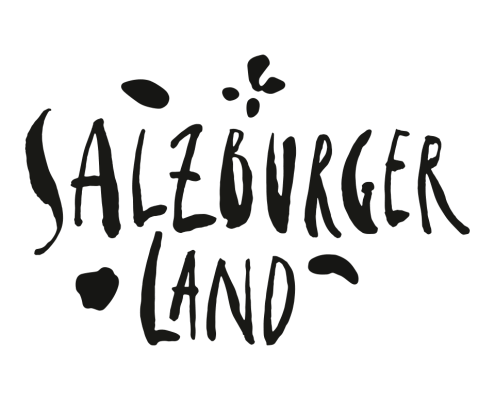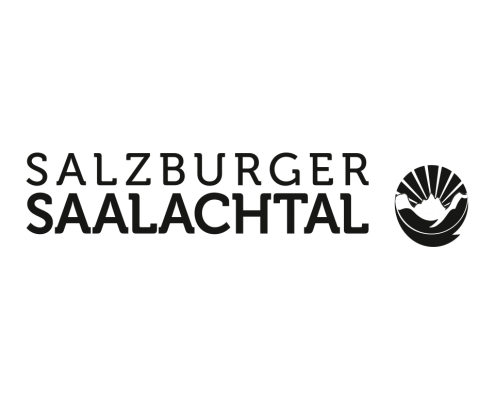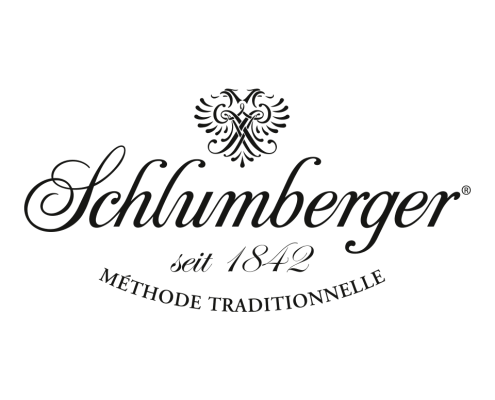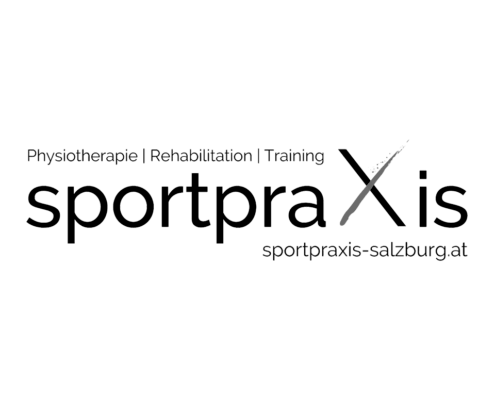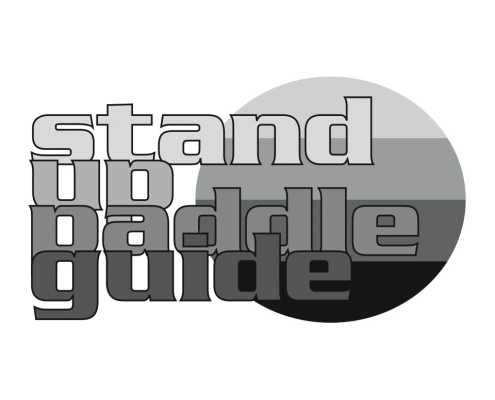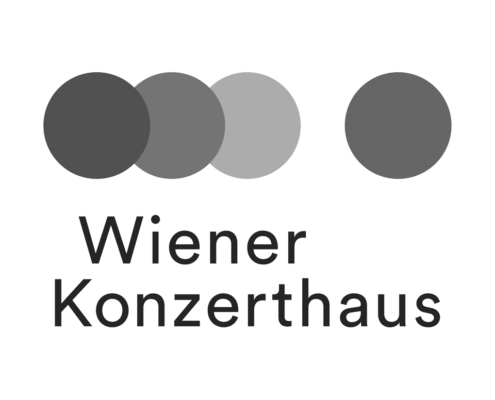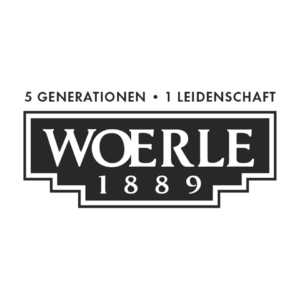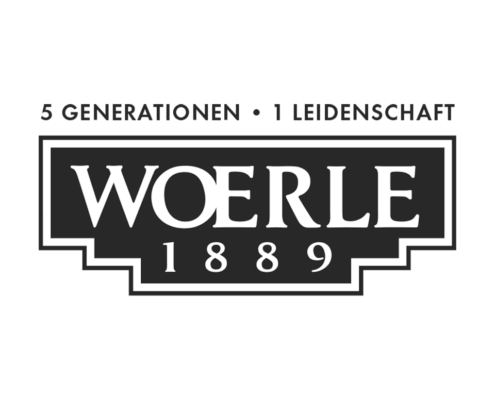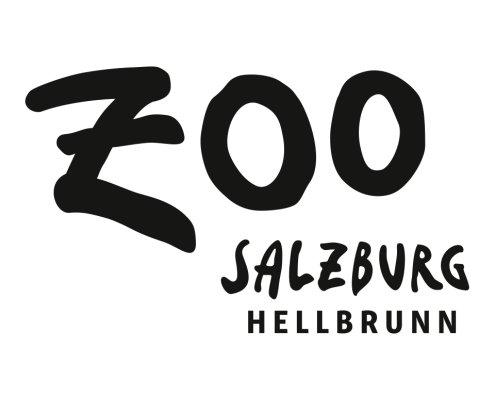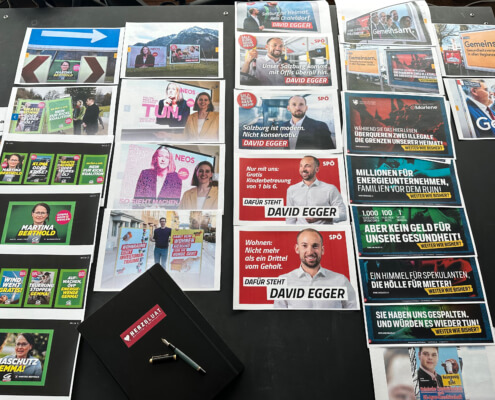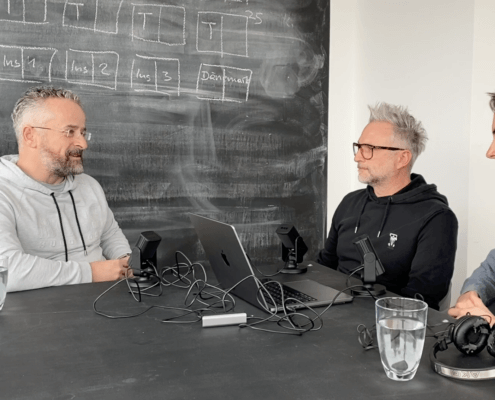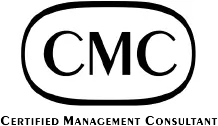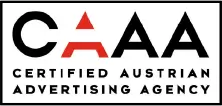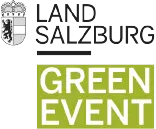Lorenz Masser
Welcome to the Voice of Photography Podcast with Lorenz Masser
Michael Preschl
And Michael Preschl.
Lorenz Masser
Today we are with Gregor Wimmer of the Herzbluat agency in Salzburg Maxglan. And yes, we have some interesting questions for you, Gregor. What is your agency life like? And how do you work? But first, of course, we would be interested to know. Would you like to tell us a bit about yourself. About your career.
Gregor Wimmer, HERZBLUAT
You're welcome. First of all, welcome to my place. Thank you for coming by. My career is the classic one. I did a commercial apprenticeship, then went into agency life relatively quickly, but that was 30 years ago now, and then did further training as an advertising specialist. At some point I did a part-time degree in graphics and then in 1997, together with a colleague, I said, "We're going to start our own business! At that time we were working for a huge agency in Linz, Reichl und Partner, and in our youthful recklessness we thought "what they can do, we can do too" - we registered our business and it was a tough few years in Linz. And at the beginning, as a young, "freshly caught" advertiser, it is not so easy.
Lorenz Masser
Does that mean you have paid a bit of a lesson?
Gregor Wimmer, HERZBLUAT
In the beginning we had to learn by doing and we were also lucky that we had a few very, very good customers who remained loyal to us and without them it would probably have been a classic "flop". But it worked out great in the end.
Michael Preschl
Because you said "1997" - now I've done a bit of maths - you have a company anniversary this year.
Gregor Wimmer, HERZBLUAT
This year is actually the 25th anniversary of my company. Herzbluat has been around for 25 years.
Lorenz Masser
Congratulations!
Michael Preschl
"Old hand" I would say. Wouldn't you? Or no, not really.
Gregor Wimmer, HERZBLUAT
A young face. You just can't see it on the podcast.
Michael Preschl
But our viewers can then watch the video cast and they can see you there.
Lorenz Masser
You can watch it on YouTube.
Gregor Wimmer, HERZBLUAT
Perfect.
Lorenz Masser
Yes, to turn the whole thing a bit in the direction of photography, what criteria do you use to select photographers as an advertiser?
Gregor Wimmer, HERZBLUAT
I have to say that I started relatively soon, or it was already relatively soon in my area of responsibility, to take care of photo purchasing in the agencies. At that time, there were still picture agencies like Bavaria, for example. They no longer exist today, I think they are all hung up on Getty photos and, among other things, there were some huge photo studios in the Linz area back then. So these were really killer machines. That was - just thinking about it now - the photo studio of the Quelle. A mail-order business back then. They had several sets set up next to each other so that you could photograph the bedrooms. Then you take the next one and then the next one. And then I was also responsible for post-production at the agencies. Post-production at that time was lithography. But lithography was partly done on the slide, on the slide positive or in the repro house - when it had already been printed. That's how I actually - I don't want to say "learned photography from scratch", because that's not true, but I had this, this approach to photography relatively soon and then also found out over time "what a photographer has to have, what makes him tick", so that he fits the respective job.
Lorenz Masser
Would you like to explain to us what a photographer must have?
Gregor Wimmer, HERZBLUAT
First of all, it has to be right - it has to be human. That's always the very first thing, when you go to a photographer, you go and think to yourself "oh, what kind of a guy is that", then it's not going to work, it's not going to work together. Then, when you get to know him, he, he has to be able to present to me somehow what he does, how he works, that he only shows me his photos, that's almost a bit too little. Because with a photo, you never know exactly how it got there? Is it really that good out of the camera or has it been extremely well edited afterwards? So you have to tickle that out a bit, so that you get to see how he works. And then, of course, there's also "how does he work, does he really work?" and - if, for example - I don't know - you're on a job and you see that he's marching along with a permanent light and no flash, then that's not a good professional story if you need professional photos. So he comes with the flash set he bought on Amazon - around 140 €.
Lorenz Masser
Yes, I wouldn't say now that continuous light is bad in principle, but yes, by now you will certainly need 10 times as long with continuous light as with flash.
Gregor Wimmer, HERZBLUAT
Exactly. So you also have a bit of a feeling. When you look at the studios - does he have a studio, is the studio suitable for my jobs? - There are so many things. How does he calculate? That's also a big issue. Does he come with an hourly rate of 35 €? Then I probably wouldn't want to have that. Does he come up with an hourly rate of €350? Then unfortunately I don't have the client structure to resell it and pass it on to my clients. Exactly. So that's the entrance - in reality you sit down together, you just talk about the jobs that are out there and then you get a feel for whether it works or whether it doesn't work.
Michael Preschl
Yes interesting, yes. Good approach. - Portfolio or Instagram?
Gregor Wimmer, HERZBLUAT
Whoa, tough one.
Michael Preschl
You can also choose photographers that you get first contacts for.
Gregor Wimmer, HERZBLUAT
Absolutely. It's already 2023, so to speak, in a few days. Without some kind of presentation in electronic media, that's what I call it now, it won't work. Whether it's Instagram, whether it's Snapchat or whether it's something you don't even know yet because it's going to pop up next week and is extremely cool - it's going to need that. But it will also always need a portfolio, because I simply have a different approach to it. In a personal conversation, we're sitting at the meeting table at my agency now, I think it would be a bit strange if you held out your iPhone to each other and said "Hey, scroll through my portfolio on Instagram". No, it doesn't quite work, but if you come here with a portfolio with sensible, I'll say A3, printouts inside, then it has a completely different feeling and a completely different feel. However, I won't be able to look at a making-of as moving images in the folder. For that I need some kind of electronic medium.
Michael Preschl
So my experience is similar to that. People often get information in advance, on Instagram or on the homepage or wherever. But then I always sit with my book at the customer's - I don't have a portfolio, I have a book - and I present it and people celebrate that when they have something tactile in their hands. And I also believe that there is a bit more quality to be seen in the colouring and everything, because it is not backlit by the screen. Is that how you see it or can you also pull something out of it?
Gregor Wimmer, HERZBLUAT
That's how I see it too, and especially when you have a big photo, for example - what do we see - there's a truck outside right now, a product shot of a truck. And it's huge in front of me, I can tap on it and say, "Yes, and that's the hydraulics, and we had to pay special attention to that, and the way the truck was standing there, the fender was broken at the front, or whatever. And look, you can't see that at all now". That doesn't work on a small screen, it might work on a laptop because I can zoom in, but it's just nicer when I have something in my hand - and I can tap it with my fingers - even if everyone kills me if I reach into their photo.
Lorenz Masser
Yes, I have to agree with you. I haven't really needed my portfolio for a long time, but I always make sure that I have at least something tactile with me, even if it's just a small booklet or something, or I just like to take finished catalogues or something - I'm still happy about a print. So I think that probably over 90 % of my work is no longer printed in some way, but still, it's something special. Now, when we're here there?
Gregor Wimmer, HERZBLUAT
I always think to myself that if I want to leave an impression, I have to make sure that I touch as many senses as possible. And the sense of touch is one of our most important senses, and if I disregard it and I only have something there visually and - okay, audio sense too, because I'm listening to you talk, or I'm listening to you talk - I have one sense more. That is, it imprints itself "one more time" on the brain.
Lorenz Masser
Can I come back to my question or Mike's question? Portfolio or Instagram? Instagram or website? Where do you look first?
Gregor Wimmer, HERZBLUAT
Wow - good question! I'm a 70s kid. So I'm actually already at an age where I don't even think I am. Website I think is a bit cooler, I have to say quite honestly. But that's very, very subjective because I'm just not an Instagrammer. I'm not. But that's a different approach with me. So for example, when I look - I'm using my iPhone now - when I look at my iPhone and find out about something, I use Twitter. But that is extremely subjective.
Michael Preschl
Yes, I think to show work I find the website extremely important, which I find totally cool, that's how I do it on Instagram for example, it's just relatively making of on there.
Gregor Wimmer, HERZBLUAT
You are simply quicker with the information transfer. Because Instagram is a push way. So, I push my message to you. But if I have a website now, then I, as the viewer, have to push it - that is, pull it to me. Pull and push is in there. And you're just faster with Instagram. Definitely. You can go further in depth with a website. So you're safe there, it goes into more detail.
Lorenz Masser
Years ago, I had a really interesting experience. Instagram was brand new and I was sitting there - a classic situation, actually - with my portfolio at the meeting table, and he casually leafed through it and asked me: "Yes, are you on Insta, too? And I was just lucky enough to have been there from the beginning and to have had something to show him - but he never looked at my website. He more or less booked me directly after the meeting, but the portfolio alone would not have been enough.
Gregor Wimmer, HERZBLUAT
The portfolio alone is definitely not enough. In marketing, we always talk about the so-called "keyboard of marketing", i.e. the most diverse channels that I have to use to achieve a goal. And that is highly individual. It's different for everybody. There are people who look at advertisements in wedding magazines because they want to book a wedding photographer. There are those who google and want to know who the wedding photographer is. Then there are those who get inspired by ideas on Pinterest and then look at who posted it at some point. Snapchat, not to forget. Snapchat has an insane reach at the moment. And then of course the two products of Meta, Facebook and Instagram. Today the news just came out, personalised advertising: no more. It's going to be difficult. And if we're completely honest with ourselves that all the electronic media - they're a jukebox. That means if I want to have reach and get out to someone, be reached - I have to put a buck in there. In other words, I have to place advertisements. From the moment the shilling - or the euro - is no longer inside, the jukebox no longer plays. That means I'm no longer really visible. So it's a hot topic. And a rapid change.
Lorenz Masser
Well, I like the comparison. It's a good template for my next question. How do you work together? When you work with photographers, is there an agency commission or do you charge everyone directly? How do you do that?
Gregor Wimmer, HERZBLUAT
So it varies. There are clients who would like to have an invoice directly from every supplier, and a photographer is also a supplier. There are clients who want to have an invoice from the agency - and in principle, how you arrange it with the suppliers is, yes, a discretionary thing. You just negotiate it out beforehand. I go to you, Lorenz, and say I have to take photos for "client XY" - what does that cost me? Then you tell me "That costs 100". Then I either say "Offer directly to the client, but not at 100, at 115." I get the 15 as a commission or I say "Bwoah - 100 is too much for me - because I can sell it on for 100. I'll buy it from you for 85.". For example. That also leaves 15. It's just a commission. It's like this: "Advertising agency", the trade, is made up of "advertising consultant" and "advertising intermediary". And an "advertising intermediary" is someone who buys things. He buys photography services, film services, text, programming. He buys TV commercials, radio spots, whatever, billboards and so on. And thereby provides the companies, the poster advertisers, the television station and so on, with additional turnover. And for that he is entitled to a commission. How much is that? It can be 10 %. It can be 20 %, it can be 30 %. Completely different. And, either you do it gross or you do it net, or you know "I'm going to get another job from the photographer and I'm going to give him one now." What's the point of going back and forth because of a few percent commission? At the end of the day, it all evens out at some point. So I approach it pragmatically, talk about it openly. That's my approach.
Lorenz Masser
That is certainly a good way. I'm also usually a fan of the direct approach. But I think it's perfectly fine if I don't have any preliminary correspondence and then possibly have someone by my side during the process. Yes, exactly, if I give away a little bit.
Gregor Wimmer, HERZBLUAT
Absolutely. It's a normal brokerage commission. Every insurance broker also gets his commission from the insurance company. Exactly.
Michael Preschl
Now I have a strange question: colour management, working with Photoshop. Is that important for the photographers or does the agency do it anyway?
Gregor Wimmer, HERZBLUAT
So, here we are at the next topic, where there are 100,000 ways. Each one is right, each one can be wrong.
Michael Preschl
Absolutely, but in most cases it's "how"? Because you often hear from photographers "Ah, that's all done by the agency anyway" or "Ah - Photoshop - ah, I don't do that, someone else does that" and, I think we've talked about it before, and I would just like to hear from your point of view and from your way of seeing it.
Gregor Wimmer, HERZBLUAT
So that has changed brutally in the last 30 years. 30 years ago there was the photographer who shot on film. Slides or colour positives. Then there was the litho, which somehow converted this image into some kind of data, and in between there were the retouchers. The retouchers actually sat there with an etching liquid and made a mask. They actually sat there with an airbrush and drew in a soft shadow. The colours were actually dimmed or post-exposed. So everything was done by hand. At some point, with the advent of digital photography at the end of the 90s, things changed a bit - that's when Photoshop came out, at that time - I think - from the company Aldus [:sic] if I'm not mistaken, Adobe didn't even exist back then [:sic], without layers, without anything. So that's when digital image editing started a bit. In the beginning, photographers were extremely scared by it, clearly, a completely new medium all of a sudden. And yes - not at all - no one has needed that for the last 100 years. All of a sudden it was digitalised, it moved away from the analogue. Yes, then of course the retouchers and the lithographers - whose livelihood has thus died. They suddenly no longer existed. Except for really extreme specialists, like Vienna Paint, I think they're called, or whatever, these huge, huge, huge studios, which are still top today, so for extremely cool elaborate retouching in the car sector, in the fashion sector, it's best to still give it there, because they know what it's really about. Otherwise, it has changed back again, the agencies have said, "Hey, dear photographer, you're taking digital photos now anyway. Actually, you can take the picture, first of all, in the right size. You can airbrush away the speck of dust. And the shirt isn't blue at all, it's red, so you can change the colour. In other words, the responsibility was given back to the photographers. And nowadays, in my opinion, it is an absolute must that I, as a photographer, also know "What are colour spaces?", "What are colour modes?", "What is a resolution?" Yes, we don't need to talk about sharpness and "blah blah blah" anyway - that's quite clear anyway - but retouching and preparing images in a sensible way that an agency can handle is essential. Even more so now that many companies tend to have an in-house advertising department. In other words, they implement advertising materials themselves. That means we marketing agencies - we are becoming more and more specialised. We are now at the stage where we are building business models, looking at "How do you get customers?", "How do you retain customers?", "How do you implement innovation processes?". The big topic at the moment is "sustainability". "How do I get my company to be sustainable, etc.? That means the old advertising work, a graphic designer, someone who edits pictures, is suddenly shifting towards the customer, towards the client. Especially with larger companies. With small ones you still have it.
Michael Preschl
Which almost brings me, not yet, to the next question, because Lorenz is allowed to ask it - but, for the client it is important, so for the photographer it is important what you need for a colour profile in the background. Or? Do you need it in CMYK, do you need it in sRGB? And how much opacity and dot gain it has. So that's also essential that the photographer knows that, isn't it?
Gregor Wimmer, HERZBLUAT
What do I do with it afterwards? Do I print it in a newspaper? In a web offset on a paper that is extremely absorbent and uncoated, i.e. extremely open-pored? Where it's the ink - you can watch the ink run apart in there - or is it in a glossy magazine? Or is it - is it printed on plastic because it's going to be a huge tarpaulin on a house? Or whatever. So I have to know that before I put the picture in. However, the big companies usually use digital asset management, i.e. a huge image database where I put the image in a raw format, please don't confuse it with RAW, i.e. not R-A-W, but R-O-H, a raw format. Relatively media-neutral. And I, as a user, just click on it. I need the picture for the Internet, please. And poof, downsampled, sRGB, 72 dpi or 144 dpi. Or I need it for a newspaper, 300 dpi, CMYK, with this and that colour profile. So that's already automatic.
Michael Preschl
Yes, but many have not.
Gregor Wimmer, HERZBLUAT
Only the giant ones have that.
Michael Preschl
When you work with a photographer and you say you need this product, for there and there. And you tell him where it will be printed and he should give it to you in the right colour space, I expect or you probably expect that it will be delivered that way.
Gregor Wimmer, HERZBLUAT
Absolutely. He should know what it's about. If he doesn't know, the world won't end, but he should please tell me. Because then we'll find another way to work it out.
Lorenz Masser
Yes, I think it's just generally the basics that have to fit. Don't they? Everyone should have a calibrated monitor. They should know which colour profile to set.
Gregor Wimmer, HERZBLUAT
Normal light would also not be wrong, that you always look at the pictures under the same light temperature and at the same light intensity.
Lorenz Masser
Also a huge topic. I think we'll do our own episode on that. It's really very exciting. But my next question would be: "How do you create a good briefing from the client's point of view?
Gregor Wimmer, HERZBLUAT
This is one of the most difficult issues of all. First of all, we have a communication issue. If I tell you something, do you understand it the way I said it? I tell you what I want - but did you understand it that way? So a good briefing works by simply looking at what is needed? What does the client need? Then there is either an economic process that I put behind it. "I need a blablabla piece", "I need it in such and such a size", "I need it from then until then". Or there is an artistic approach and so on. There are always different approaches. Mostly it's like this, commercial photography, let's talk about commercial photography. In commercial photography we have some strategy that we develop. With this strategy, there is then a concept idea. Which then really results in a concept. There are then factors in there, where it is again a question of what do I need? I need a picture during the day where someone is passing by in the background and I can't really perceive him anymore. And I need the same thing in the dark and I can see the person in the back very well because he's glowing.
Gregor Wimmer, HERZBLUAT
I have to write that down. Then I have to verbalise it as precisely as possible, i.e. put it into words. And - almost no one can do that anymore - in the past, you still scribbled it down. In other words, you really recorded the image as precisely as possible with coloured pencils, with special markers, so that it would come out like that afterwards. Of course, there is also the question of what resources I have at my disposal. What can I afford? There is the dialogue with the photographer again. Maybe you need a make-up artist, maybe you need a stylist. A decorator wouldn't go amiss either - and now we're getting to it, it's going to be such a big story - we need five assistants. So, it won't work out with a daily rate of a thousand. It's a big issue then.
Lorenz Masser
Probably. Our question is about that. We get briefings every day. And I notice that the briefings are getting worse and worse, often pages long. And it doesn't really say anything. Nothing at all. After ten pages I still don't know "What should I actually offer?
Gregor Wimmer, HERZBLUAT
Very important, for example, to put timelines in a briefing. When do I need this by? When will my products be ready? My products are ready on the 22nd, but I need the photo on the 21st. - Oops, that doesn't work out. Or that I say beforehand, at the briefing, "We have the products - we're photographing hiking boots - but the blue one needs the green shoe laces. And the soles of the red one actually belong on the yellow one." If I say that beforehand, at the briefing, then it's totally easy afterwards, in the photography. Because then I know how to shoot it in the first place, so that I can put it together again later, in the image processing. So everything has a rat's tail behind it, dependencies on each other.
Lorenz Masser
Yes, the offer - that also fits, well then you don't think afterwards: "We only need so many hours of post and so on".
Gregor Wimmer, HERZBLUAT
Right, because actually that results in disappointment. The agency is pissed at the photographer, the client is pissed at the agency and the consumer thinks "Why should I buy this from the manufacturer, it doesn't look good at all?
Michael Preschl
In principle, this would result in extremely high additional costs for everyone, and that is not really the point.
Gregor Wimmer, HERZBLUAT
That's right, exactly. That means talking through what we need beforehand - but I also have to put the rod in the window for the photographers - if you get a briefing like this, where nothing comes out, just speak plainly! Either the client understands and knows what it's all about. Or maybe you have to think: "Oopsie, that's the wrong client." We have that as an agency too. We don't fit in with every client either. And then I have to say: "We can't work together, it doesn't work".
Lorenz Masser
Maybe a little tip for all listeners: just give him a call. It's part of it anyway. But just call and ask: "Yes, how do you imagine it?" And so on.
Michael Preschl
Which I do every now and then, because you put the word "scribble" in your mouth, when it's not quite clear, and it's not quite clear through conversation: I always like to scribble, I draw it and show the client "Did you imagine it that way?". And that helps us a lot, because we had a case like that once - with another agency, where the agency had scribbled, but the client had imagined something else. And then we did the job twice. And of course those are enormous costs, it took three days per thing. That was simply extreme, because the client then has to pay for six days at once.
Gregor Wimmer, HERZBLUAT
We often go one step further and create mood boards, for example. What does it look like in worlds of colour? When you have to recreate an interior, you recreate a living room. Then I have a piece of fabric and say "This is the fabric, this will be the curtain later on". So I really show the real thing. Because the more precisely I show it, if I only draw a green curtain, then it's stupid. But if I show the piece of fabric with the pattern on it, in white, and then pick the red rhinestones on it, then I can imagine much more. So the more precise I am - there are also keywords: "briefing" and "re-briefing", saying back again, how did I understand it, the briefing. Then I can rule out a lot of ambiguities in advance. And no nonsense happens that ultimately costs a lot of money and time.
Lorenz Masser
But, if it fits, it's also a bit of a sore point for me now that the topic of the mootboard. Can you perhaps explain in two sentences: "What is a mood board?
Gregor Wimmer, HERZBLUAT
A mood board is a mood picture. That means I somehow try to convey the mood that the picture is supposed to convey. Either it's an A3 piece of paper on which I stick all kinds of things. The two of you are now sitting opposite me - if I say I would like to have a photo that looks like this, then maybe go to Google and say "two men sitting in armchairs" and then a few picture suggestions come up and then I cut them out or I take screenshots and somehow put them together. So that I can already imagine a little bit, "What could this look like? Because, for example, you are now sitting at the same height on the same chairs in front of me. But it can also be that one of you sits relatively low on a stool and the other one maybe turns away in the sun chair. There are still two men in front of me in one picture. So the more precisely I bring that back in a mood board, the sooner I can imagine something. Because then my client can say "No, what? Beach chair? I don't want that at all. And a small stool, I don't want that at all. I'd like two heavy Chesterfield chairs".
Michael Preschl
In principle, the visualisation of a subject.
Gregor Wimmer, HERZBLUAT
Correct, precise. Visualise beforehand with as simple means as possible, but more often you need precise means. So there are also things where, for example, you set up a picture beforehand and simply take a test shot. And I don't mind investing a whole day or even longer. But you show the client: "Look, this is what it looks like. - "Phuh, no, we need light from behind, no we need light from above." Or from below or whatever.
Lorenz Masser
But it should somehow correspond to reality a little bit. I ask because I often get it for my hotel shoots, where I just get some images in a PDF beforehand that they got from Pinterest or Instagram. But that often doesn't correspond to the house at all, often - it happened to me the other day - I got a briefing from a big agency, a well-known agency, all super bright clean pictures - and then I stand with the client in the hotel and then I say to him: "Yes, that's nice, but with you it looks completely different. You have everything with old wood and so on. Please show me a white wall somewhere in your house." It doesn't exist - how can you create such a picture?
Michael Preschl
Exactly. That's what I meant at first.
Gregor Wimmer, HERZBLUAT
But you have to rap the agency's knuckles. When an agency does a briefing, and it's about hotel rooms, for example, it has to "photograph through" an entire hotel, as they say, "photograph through" under inverted commas. Then, as an agency, the first thing I do is go through with my iPhone and press the shutter button everywhere where it somehow belongs to be photographed afterwards. Just so that I can at least show the photographer what it's all about - "location scouting" is an important topic - if I don't have him with me during location scouting anyway. Because I can't show you in a sauna, in the farthest corner of the basement, that it can't shine superlatively without additional artificial light. That's clear, but when you march up as a photographer and you have exactly one small funse with you, then that's simply too little light and you can avoid all that beforehand, of course - through location scouting.
Michael Preschl
But it's extremely funny, I also had a similar case. It was also from Pinterest, or somewhere down there. And the colour scheme was very cool and neutral. And then I'm standing in a hotel - it was a boutique hotel - these are two opposites that don't work at all. One is colourful and yet a bit tidy and very stylish, and the other is extremely clean and refined. Everything fitted anyway. But two completely different things. And then, of course, you have to react immediately when you're on site, because I hadn't seen it before, and you have to talk to the client. And say that it can't look like what you got as a briefing back then. Because it simply doesn't work. If the walls were - there were corridors into the hotel rooms, so the hotel corridors were black. So how is that supposed to be radiant? I can photograph that cool, but it's a different impression to the mood board.
Gregor Wimmer, HERZBLUAT
However, one must not necessarily pass the buck to the customer - because he does not know.
Michael Preschl
Only you have to talk to him first.
Gregor Wimmer, HERZBLUAT
Exactly. Right on.
Michael Preschl
But now perhaps to the next question. We have finished with Moodboard, haven't we?
Lorenz Masser
So I think that we will also do another episode on the topic of "briefing".
Michael Preschl
There are still a few episodes crystallising today.
Michael Preschl
I understand that you also teach in the photography master class? Why is that a concern for you as an advertiser? It's primarily about photography.
Gregor Wimmer, HERZBLUAT
Yes, because I've been doing the job for 30 years.
Michael Preschl
Why is it important to you that you invest there - I think it's 3 days?
Gregor Wimmer, HERZBLUAT
Yes, that's right, exactly. The time is about right, although with preparation it is much more.
Michael Preschl
That's already clear, but 3 days you are with the photographers.
Gregor Wimmer, HERZBLUAT
You are together with the photographers for 3 days and make projects with them that are as realistic as possible. However, when I say realism, I also mean with all the problems that can somehow occur. So every mistake that can happen somehow is already planned by me to happen. So that when the new photographers go out, it doesn't happen "in the wild" that some kind of nonsense suddenly happens.
Michael Preschl
They get a project and you deliberately build in a few stumbling blocks here or there.
Gregor Wimmer, HERZBLUAT
These are rocks. Tripping rocks.
Michael Preschl
Stumbling blocks - and I don't think they are supposed to fail - but fall over them.
Gregor Wimmer, HERZBLUAT
Exactly.
Michael Preschl
So now, when you're learning, it doesn't bother you if you do something wrong.
Gregor Wimmer, HERZBLUAT
Exactly. That is the protected space. But the question "What is my motivation for this?": My motivation has also crystallised over time. There was a time when photography was still a licensed trade. You did your apprenticeship, then you did your journeyman's exam, then you needed practice and then you were allowed to take the master's exam. And how that has broken away - the same topic, by the way, in our sector, we have also been liberalised - you suddenly see, first of all, quality crashing down and the second thing you see on the market is simply dumping mentality, i.e. price dumping mentality, which cannot work. It does no one any good. And I want to work against that as best I can. So I do that in my sector - I am still one of the few agencies that is certified. I have now registered "management consultant" as well. Which is still a regulated trade - simply because we operate on the open heart with clients, I have to say quite honestly. And in photography - the training is so incredibly important.
Gregor Wimmer, HERZBLUAT
And: I have the experience. I have the know how. I have the knowledge. First of all, I don't break a sweat when I pass on the knowledge. What's more, it's simply, on the one hand, a social aspect, on the other hand, of course, it's also a business purpose. I simply get to know an extremely large number of new photographers. With some, a friendship comes out. With some, a business comes out. And with some it's just great to have met them. With all the positives and negatives that come with it. That's actually what drives me.
Lorenz Masser
Very cool.
Michael Preschl
Yes, casual.
Lorenz Masser
That brings me to the next question. How important do you think continuing education is for photographers?
Lorenz Masser
I can put it quite figuratively. Suppose you have to have brain surgery on yourself. Do you go to someone who has studied and is a trained doctor? Or do you go to someone who has seen a few videos on YouTube? So training is simply essential in any profession. The more important the basis is, the professional knowledge - it starts with calculating, continues with planning. It continues with legal things. Because I can get into quite a mess if I don't pay attention to legal things. Like location fee, model release, things like that. If a photographer has never learned that and can't do it off the top of his head, then "it's got me" or my client, my customers. That's really difficult. That's why: training please! One after the other. Further training - and then it goes on. Technology continues to develop.
Michael Preschl
That's right. Faster than ever.
Gregor Wimmer, HERZBLUAT
So - digital SLR - do they still exist, or are they all straight through the lens now?
Michael Preschl
You can still buy them. But I think they have an expiry date at some point or what?
Lorenz Masser
I haven't had it for a long time.
Michael Preschl
I don't use them any more either. I only have two devices and the rest have all been converted.
Gregor Wimmer, HERZBLUAT
You also don't know where technology is going. So, just like in communication, in photography, technology is moving on. When I look at the new iPhone, from a purely technical point of view, it takes much better photos than the digital cameras of a few years ago. Of course, it still needs an operator who looks at "What is the motif I'm photographing?", "From what perspective?", "With what light?", "With what special effects?". That is then the photographer. That is the photographer's craft. The better he has learned, the more likely it is that it will turn out well. Of course, it can also happen that something goes wrong with the super-master. That can always happen. Even in advertising.
Michael Preschl
Yes, where people work, mistakes can happen.
Gregor Wimmer, HERZBLUAT
Absolutely right. But I'd rather go to a photographer who has had proper training. Than to a hobby photographer.
Michael Preschl
You also produce the MAG Commercial Photography Magazine for the Salzburg Guild of Professional Photographers. That is intended for B2B customers. How important is it to be in it as a photographer? Is it important to be in a magazine with many colleagues? Yes, I would like to have your approach to that. Because you produce it together with the national guild. I think you also have access to it, and maybe you can explain to us how it is from your point of view.
Gregor Wimmer, HERZBLUAT
For me, this project is part of a photographer's self-promotion. It's nice when I take great pictures, but no one notices. It's like when I wave to a girl in the dark, she just won't see me. And so I'm not visible as a photographer in the market. Self-marketing as - photographers are very often EPUs, one-person businesses, i.e. somewhat smaller units. Which is once everything in one person. From the accountant to the photographer, to the account manager, he also makes coffee and has to water the flowers himself. So he has an extreme amount of work. But he should also do the marketing, or she should also do the marketing, for herself. So - difficult. On the one hand, yes, I can take great pictures. But can I also market myself? Do I even know who my target group is? Have I positioned myself at all, as they say in marketing parlance? Am I a product photographer or a wedding photographer? Or am I crazy about baby bumps or animals? These are difficult things to consider. So, the Chamber of Commerce itself - many people don't find it necessary, others find it extremely necessary. When I look at the Guild of Professional Photographers, you have a legal protection association with you.
Michael Preschl
That's right.
Gregor Wimmer, HERZBLUAT
In extreme cases - that's a bad word - but they can save your ass. If a photo is used somewhere that nobody knows about.
Michael Preschl
The collection, they do copyright suits and so on.
Gregor Wimmer, HERZBLUAT
Receivables management.
Lorenz Masser
Our next episode topic.
Michael Preschl
Right, wow - we've got a lot now, haven't we? - Yes, I think so too, with the RSV.
Gregor Wimmer, HERZBLUAT
So absolutely important. And then, what you also have, your guild gives you the possibility of a marketing tool quite cheaply. This is now a B2B magazine. How many photographers are in the magazine? Let's say between 20 and 30.
Michael Preschl
So a bit more last year - just under 30, I think.
Gregor Wimmer, HERZBLUAT
Exactly. You may present them in there, with four double pages. The layout is standardised. So it's all about the content, it's all about the pictures. There is a short introductory text, which I read or don't read, but it is really only about the pictures. So I really see there "What is quality that suits me?" And what is quality that doesn't suit me? That I'm in competition there, with a second photographer. Yes - welcome to life. If you type "photography Salzburg" into Google - then I'm in real competition. Because I don't have 30, I have hundreds. Exactly. That's totally difficult. And with these - if I take Google again - if I don't do Google advertising, then it's not really controlled. Here, however, sales are also controlled for me. In other words, they make sure that this magazine gets to the right desks, to the right people, and that it is available there. And, in the past, I would have liked to get something like this more often, to have something like this at hand, because I can just browse through it. Of course, there are trade magazines, only trade magazines, where if I want to pay for a page in there, an advertisement with one page - I pay a multiple of what four double pages cost me in this B2B magazine.
Gregor Wimmer, HERZBLUAT
So an extremely cost-effective way to get out there.
Michael Preschl
So, if I now very briefly, you, as an advertising agency, get this, do you also use it as a working tool? That is, you get a client and you leaf through it with the client? Even if you have another photographer who might fit the bill anyway? And maybe look at someone else who could fit in. Did I understand that correctly?
Gregor Wimmer, HERZBLUAT
Understand and recognise correctly? It's like this. The thing is, as an advertiser, as a marketing person, you have your favourite photographers with whom you have always worked. Because it has always worked. Why should I change a functioning team? I'm not going to. But it does give me an outward perspective again, which is perhaps the case for me, for the new clients I have - maybe none of the five photographers I've worked with for 30 years will fit. Maybe I need someone new now, because all of a sudden they're talking about "baby fashion", which I've never had before. And there is someone who specialises in that. And not everyone can handle that as a photographer with that particular subject.
Lorenz Masser
I see it that way too - everyone has their own genres and their own specialisations. We have to look at the time a bit. Two quick questions to finish. How do you see it: specialisation or rather offering everything as a photographer?
Gregor Wimmer, HERZBLUAT
By all means specialise. That's a very clear thing. Because if I specialise, then I can be really good in my field. And - self-marketing again - I know "who do I go out to?". Who can I offer myself to, and who can I send my information to. If I do "everything anyway", yes - wishy-washy - who do I tell that I do "everything anyway"?
Michael Preschl
So, the egg-laying willy-nilly doesn't count?
Gregor Wimmer, HERZBLUAT
You can forget about them. Because the truth is - when you start a new business, for you it will be like for me, someone asks me "Hey, what do you do?", I have to be able to say what I do within two minutes or one minute or half a minute. It's called an "elevator pitch". And if I don't get that together because I just "specialise in everything once", then that's it. Then the client thinks "yeah, okay, nice photographer - but not for me".
Michael Preschl
And now the last question, because we said we have to go through a bit faster, because time is running out. Now, Lorenz and I would like to hear some tips for young photographers from you. Three or four quick ones can also be, in principle, just words.
Gregor Wimmer, HERZBLUAT
Tips for young photographers.
Michael Preschl
New photographers.
Gregor Wimmer, HERZBLUAT
Who have newly registered the trade.
Michael Preschl
Yes, exactly.
Gregor Wimmer, HERZBLUAT
Newly self-employed? Okay, the first thing is: "Learn to calculate!" Extremely important to survive. To turn the hobby "photography" into a profession, a job, "photography". Learn to calculate. There are so many things: social security, tax office with taxes and fees for local taxes, tourism tax, there are so many things, insurances. Be able to calculate. And also be able to sell this price. That is perhaps the second tip anyway: "Learn to present yourself! How do I present myself? How do I approach people, do I always have my business cards with me? And by business cards I don't really mean this paper thing, but rather "What do I say when someone asks me, what do you actually do? Very important. And then again my topic. Marketing. Please don't be under the illusion that marketing yourself on the internet via these tools we've already mentioned, like Instagram and Snapchat etc., is free. It isn't! It's working time that costs money at the same time. Because everything where I market myself I can't earn anything, always in time - meaning it costs something. And keep in mind that you have to "activate" your stuff.
Gregor Wimmer, HERZBLUAT
"Activate" I mean, really back it up with advertising budgets. It's this jukebox principle that I mentioned first. If I put five shillings in, one single plays. If I put in ten shillings, three singles will play. If I don't put a shilling in, then there's no music. That's the most important things.
Michael Preschl
For the listeners who are a bit younger, from the 2000s onwards: That was our old currency.
Gregor Wimmer, HERZBLUAT
Schilling was our old currency, and a jukebox was what Spotify is today.
Michael Preschl
Yes, Gregor - it was totally informative. It was a really nice time with you.
Lorenz Masser
Absolutely, I think we could have gone on forever.
Michael Preschl
I think maybe with you, because we have already brought out so many episodes here today, there will be a second one.
Gregor Wimmer, HERZBLUAT
Gladly.
Michael Preschl
Yes, all I can say now is that we will put everything that is important into the show notes for our listeners. And thank you very much for your time and for giving us such a great insight into life with agency to photographer and vice versa.
Gregor Wimmer, HERZBLUAT
Please, with pleasure! I also enjoyed it. And I would like to make the offer now, if anyone wants to know anything: You can all Google me. Pick up the phone, call me and ask me something!
Lorenz Masser
Great, thank you very much. Thank you for your time.
Michael Preschl
Thank you very much.

